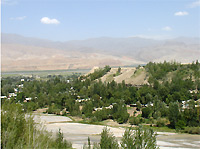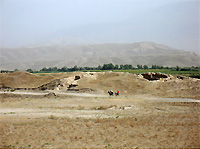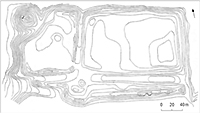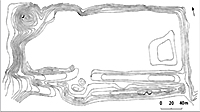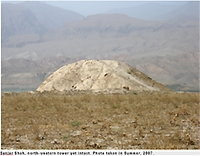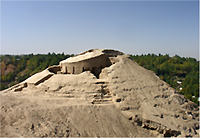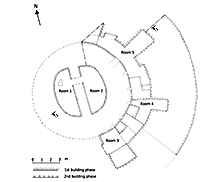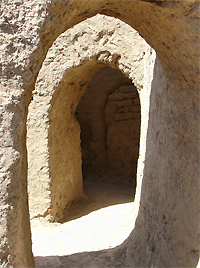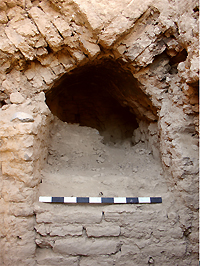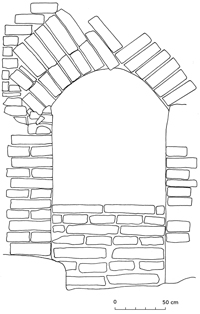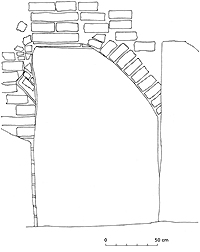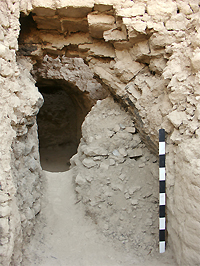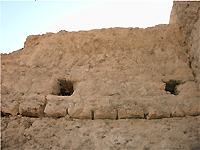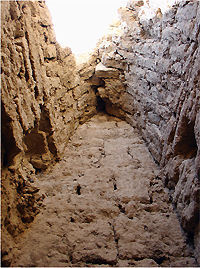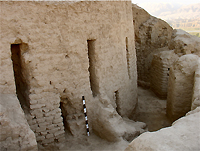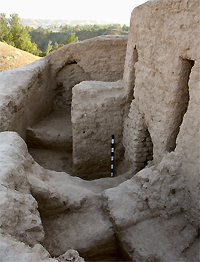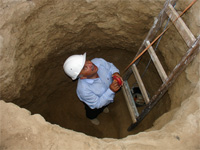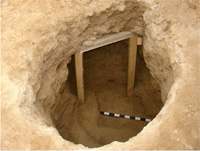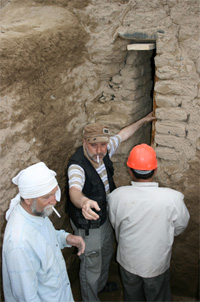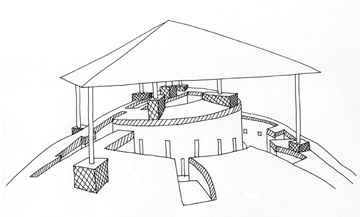Archaeological excavation of an ancient Sogdian site
| 2008 | 2009 | 2010 | 2011 | 2012 | 2013 | 2014 | 2015 | 2016 | 2017 | 2018 | 2019 | 2020 | 2021 | 2022 | 2023 | |||||||||||||||
| 2024 |
The site of Sanjar Shah was declared a World Heritage Site by the UNESCO World Heritage Commission as part of the transnational project "Silk Roads: Zarafshan-Karakum Corridor" on 17 September 2023.
Starting point
The site of Sanjar Shah – a modern name associated with
one of the Seljuk rulers – is located at the edge of the village Sujinah
in the Zarafshan Valley, 12 km from present Panjikant, north-western
Tajikistan. To the south of the village, at the right bank of the river
Magian Darya, stands a 7 to 8 m high, rectangular citadel of approx.
5 hectares in size. It's surrounding walls of sun-dried bricks are well
preserved and stand ca. 6-7 m above the ground. At the corners, fortification
towers are visible, and, in the SE the entrance gates. Inside the citadel,
remaining walls indicate living quarters and possibly a Zoroastrian
temple. Based on surface material found (mainly pottery) and building
techniques, the site may be tentatively dated to the 7 th to 8 th centuries
AD. In 2003, a brief test excavation was conducted by a small German
team, but no publication followed.
| The site of Sanjar Shah (right) and the village of Sujinah (left) | ||
Relevance
The site of Sanjar Shah is contemporaneous with the famous nearby site of Panjikant and might have belonged to one of the local Five Cities (penj kenth) of Sogdian times before the Arab conquest. Probing trenches conducted in 2006 seem to indicate that the site is well preserved and rich scientific findings may be expected.
Goals
To excavate a well preserved Sogdian site in order to contribute to the knowledge of the Sogdian culture and history and the religions practiced in this sector of the Zarafshan Valley.
Partner in Tajikistan
Dr. Sharofuddin Kurbanov, Research Fellow, Institute of History, Archaeology and Ethnography, Academy of Sciences of Tajikistan.
Project Team
Dr. Sharofuddin Kurbanov, Panjikant
Dr. Abdurauf Rahim Razzakov, Director Panjikant Archaeological Fieldbase
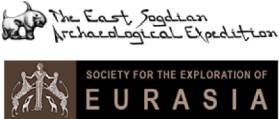
(Zurzeit nur in englischer Version verfügbar)
Excavations at Sanjar Shah
(Sujina, Northern Tajikistan)
September – October 2008
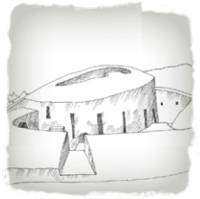
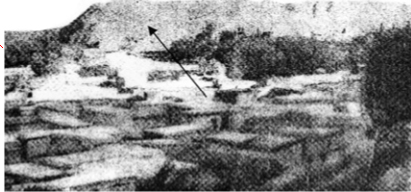 |
In Summer, 1946 a group of Soviet Orientalists arrived to the foothills of the Zarafshan mountain ridge in Northern Tajikistan to survey this remote country for archaeological monuments. Their surveys laid the foundation for the ongoing archaeological investigations of the region, and led to a series of discoveries, like the site of the Ancient Panjikant now known to all students of Central Asia. |
During the next campaign of Autumn, 1947 the expedition reached the estuary of the R. Magian-darya near the settlement of Sujina, in 11 km east of the city of Panjikant. It was during this second survey that the site of Sanjar Shah was noticed, surveyed and briefly described in the resulting publication. 1
The natural plateau on which the site is located rests on the second terrace above the flood-meadows of Magian-darya, on its right bank and before its confluence with R. Zarafshan. The plateau (central point at 39°29'04" N, 67°43'24" E ) 2 is ca. 15 m high and ca. 5 ha large. It is occupied by a rectangular citadel with towers in each corner of the walled perimeter, strengthened by another wall and a moat on the southern side.
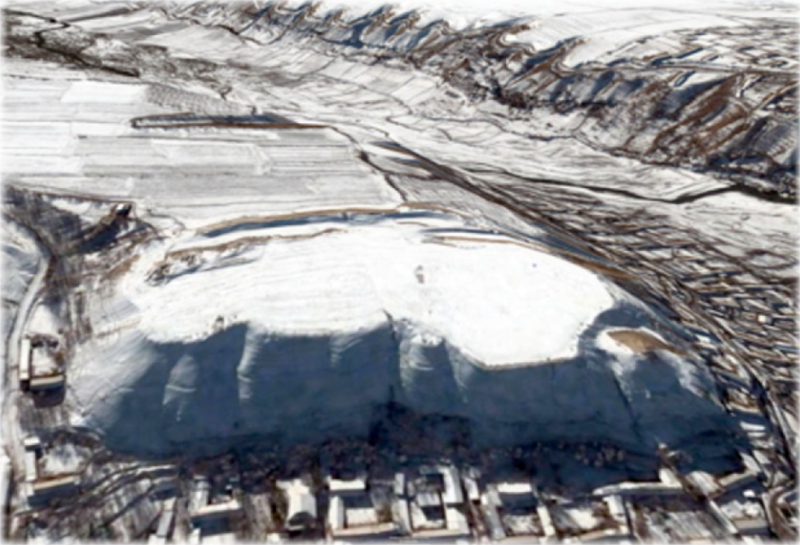
The plateau of Sanjar Shah seen from the north. Photo taken 01.01.2007. Image © Google 2009
In 1947 the surveyors saw a labyrinth before the gates in the south-eastern corner, which has by now disappeared: in 1974 the site was badly damaged by the local developers.
1) O. I. Smirnova, ‘ 1947 .' (Archaeological Surveys of the Zarafshan Basin in 1947), 15 (1947), pp. 71-2.
2) WGS84, Garmin eTrex Summit.
| Sanjar Shah (rechts) und das Dorf Sujinah (links) | Sanjar Shah, current state. |
The total length of the southern wall of the main fortification is 90 m, of the eastern wall – 100 m; the southern wall of the site is 190 m long, the eastern – 140 m, and the second raw of the walls is 280 m in length. The height of the man-made part of the citadel is 7-8 m, the maximum height of the preserved inside walls is 3-4 m.
In the N–W corner of the plateau stands a tower belonging to the köshk type – building of sun-dried brick on a solid platform with corrugated sides, similar to dungeon.
Strategically, the place for the fortress was excellently chosen given the steep slopes of the plateau and the fact that the riverbank stripe below is too narrow to eectively deploy troops or to apply siege tools like ladders or batteringrams.
Administratively the area belongs to the Panjikant District of the Sogdian Province, Republic of Tajikistan. In terms of historical geography it is part of the Shawdar district (rustaq), which once stretched from the upper reaches of the river Zarafshan to the mountains flanking the Samarkand oasis from the south. Two mediaeval Arab travellers and geographers left a description of this region dating to the late X AD:
“There is no other district in the vicinity of Samarkand healthier in climate, more abundant in crops, or better in fruit than this. Its people excel the people of the vicinity in physique and complexion. This district stretches for more than ten farsakhs (one farsakh 6 km), and it is one of the most salubrious mountain areas with the nicest buildings, neither isolated nor inaccessible. 3
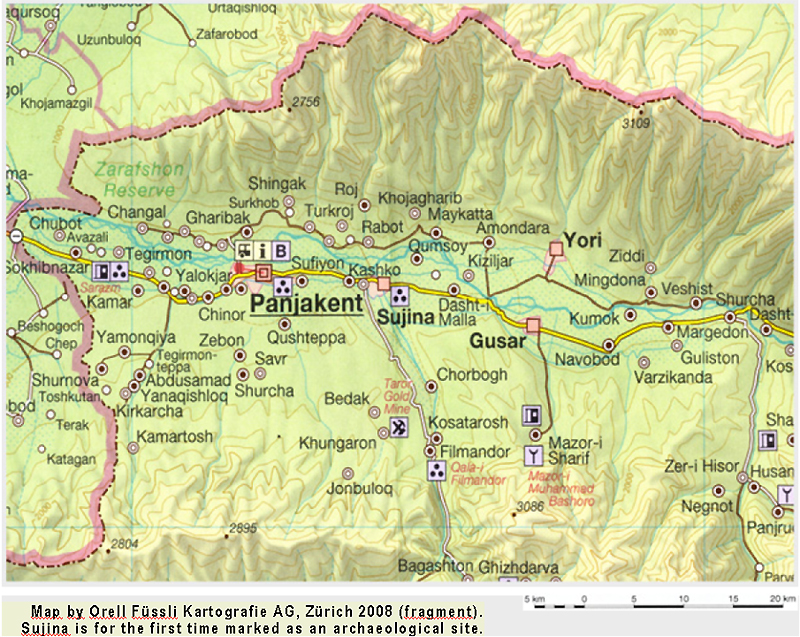
While the site owns its modern name to the Seljuqid ruler of central Khurasan (AD 1185 or 1186 – AD 1187), this is the land of very old culture, as seen from its archaic to ponymy, e.g. Magian-darya – “the River of the Magi”. According to a local tradition, the natives of the nearby settlement under the same name (Magian) are descendants of Zoroastrian priests.
Another tradition, recorded in the late XI X th century, identifies Sujina with the seat of the ancient Panjikant.4
3) M. J. de Goeje (ed.), Viae et regna. Descriptio ditionis moslemicae auctore Abu'l-asim Ibn Haual, Lugduni Batavorum 1873, p. 372; M. J. de Goeje (ed.), Viae regnorum. Descriptio ditionis moslemicae auctore Abu Ishak al-Farisi al-Istakhri, Lugduni batavorum 1870, p. 321.
4) V. A. Viatkin, “ (Materials for the historical geography of the Samarkand vilayet), vol. VII, Samarkand 1902, p. 24.
In 2008 a long-term archaeological project was started on Sanjar Shah, bringing to gether the eorts of the East Sogdian Archaeological Expedition and the Society for the Exploration of Eurasia. The goal of this project is archaeological investigation and partial conservation of this promising monument of Sogdian history and culture.
The starting point of the excavations was the mound situated in the north-western corner of the citadel and containing a building structure with well-discernible rows of brickwork exposed by the natural weathering of the covering loess.
|
||
| Sanjar Shah, north-western tower yet intact. Photo taken in Summer, 2007. |
|
The excavations conducted in September–October 2008 revealed in this place a twostorey tower 6.60 m high, with two rooms at the top floor, and a number of rooms at the bottom floor connected by a circular gallery (fig. 1).
Rooms 1 & 2
These two rooms situated at the top floor are conveniently described together since they represent an almost regular circle 5.4 m in diameter, cut across by a wall 1.21 m wide and oriented N–S. The rooms are connected by an arched doorway 0.70 m x 1.70 m.
The outside walls are built of sun-dried brick 50-53 30-32 12-13 cm and covered with two coats of clay finish 0.5-3.0 cm thick. All walls except the central one go beneath the floor which is made of sun-dried bricks 50-53 25-27 9-10 cm laid with a fanshaped pattern. The floor was covered with 10-15 cm of humus and small pieces of coal.
Between the centre and the N end of Room 1, there is an opening in the floor being the top end of a ramp or spiral staircase leading from the ground floor. The size of the opening is 1.2 x 0.8 m.
The roofing could have been made of timber, as indicated by the dust of a rotted wooden beam and traces of reed on clay that were found inside the room.
The filling of the Room 1 contained fragments of the following pottery items: four rims of bowls (fig. 2, 1-4), two of them with red engobe and ribbed pattern of the second lower part of the bowl. One fragment has a poorly pronounced edge, while the other's edge is strongly pronounced (fig. 2, 1-2); two dierent rims of bowls without engobe (fig. 3-4); two rims of waterjars without handles, one of which has red engobe along the edge and on both sides of the rim (fig. 2, 5-6); rims of three wide-necked vessels (fig. 2, 7-9), two of which have red engobe along the edge (fig. 2, 8-9); wide-necked vessel with a spout (tagora) (fig. 2, 10); side of a moulded vessel with a handle (fig. 2, 11).
The filling of the Room 2 contained: two mugs with rounded cheeks (fig. 3, 1-2), one of them with a knifecut near the bottom (fig. 3, 1), the other with a ringshaped handle (fig. 2); one “intact” bowl (fig. 3, 3); fragments of the following items: edge of a bowl with red engobe (fig. 3, 4); rim of a water-jar with a handle (fig. 3, 5); rim of a water-jar with red engobe along the edge (fig. 3, 6); two rims of wide-necked vessels with red engobe inside (fig. 3, 7-8); spout of a wide-necked vessel with red engobe (fig. 3, 9); bottom of a strainer (fig. 3, 10); bottom part of a funnel (fig. 3, 11); rim of a moulded water-jar with red paint on it (fig. 3, 9); rim of a wide-necked moulded vessel with two handles (fig. 3, 13); frying pan (fig. 3, 14).
Room 3
This trapeziform room is extended along the outside wall of the cylindrical tower, at the ground floor. Its smaller side adjoining the tower wall is 1.95 m long, while the opposite (southern) side is 2.25 m long. The length of the room is 4.15 m.
The N wall of this room is at the same time the S wall of the room 2. This wall is built of sun-dried bricks 50-53 3 1-32 13-12 cm. It is 2.70 m wide, standing 3.85 m high above the floor level.
The N–E and N–W parts of the walls are preserved at the height of 2.0 m, while the S–E and S–W parts stand ca. 0.60 m. high. The S wall is preserved at 0.35 m from the top of the pillar (sufa) found inside the room. All walls are covered with two layers of clay mortar 1.5-3.0 cm thick.
At an early stage of construction two rows of narrow loopholes were made along the perimeter of the tower. They will be described proceeding from the south to the north.
The first (lower) loophole is situated 0.65 m E of the W wall and 1.05 m W of the E wall of Room 3, at 0.60 m from the top of the pillar. The well-preserved loophole, which could have been a light hole, is 0.90 m high, 0.20 m wide, and 1.30 m deep. The surface is coated with clay mortar 1.0-2.0 cm thick. The lower horizontal edge of the loophole is inclined 20-30° towards the inside of the tower.
The second (upper) loophole is located 1.56 m E of the W wall and 0.12 m W of the E wall of Room 3, at 1.72 m from the top of the sufa. It is 1.30 m high, 0.20 m wide, and 0.58 m deep. This loophole appears to be a false one.
In the E wall, in its N–E corner at 2.30 from the sufa there is a niche 40 cm high, 45 cm wide, and 20 cm cm deep, with traces of soot.
There is a corridor going through this room and further along the perimeter of the tower. It it entered through a well-preserved arched doorway 1.35 m wide and 2.50 high. Inside the doorway, at 1.60 m from the floor level there is a ledge projecting 5 cm o the wall and forming an arch at this level. The inner surface of the arch is coated with clay mortar 1.0-2.0 cm thick.
The sufa adjoining the outside wall of the tower is situated in the N part of the room. It is 0.76 m wide, its E part stands 0.21 m above the floor, and its W part is 0.12 m high. The surface is covered with clay mortar 1.5-2.0 cm thick, above which there is a layer of gypsum mortar. Both coats of mortar spread onto the tower wall.
The W entrance to Room 3 was excavated at 95 cm only. The arched doorway is destroyed, but the ledge on the walls of the passage is still seen.
The floor of this room raises smoothly westwards, which explains the dierent height of the sides of the sufa. At 1.35 m S from this sufa there is another one with smooth surface; it is 0.60 m from the floor level, 1.91 m wide, and 2.20 m long.
Fragments of the following items were discovered on the floor of Room 3: six rims of bowls (fig. 4, 1-2, 3-6), three of which are decorated with pink engobe (fig. 4, 1-2, 6), while the other three have red engobe (fig. 4, 3-5); rim of a water-jar with dark brown engobe (fig. 4, 7); rim of a potter's cauldron (fig. 4, 8).
Other finds include fragments of various pottery items, such as: beacon of a water-jar with black engobe along the edges; (fig. 4, 9); three wide-necked vessels, two of which were painted with red engobe (fig 4, 10-12).
Room 4
This trapeziform room is situated to the N–E from Room 3. Its wide side (adjoining the tower) is 2.76 m long, the opposite (narrow) side measures 2.30 m; the E–W (outside) wall is 4.47 long, and the W wall is 3.60 m high.
In this wall, at 37 cm from the wall separating Room 4 from Room 3, there is a narrow loophole 1.42 m high, 21 m wide and 60 m deep. In 70 cm to the right there is another partly destroyed loophole 90 m high, 17 m wide and 1.90 m deep.
Inside the room there is a pillar (sufa) made of sun-dried brick, 1.07 x 1.46 x 1.07 x 1.14 m (the uneven dimensions are determined by its trapezoid shape). At 1.13 m from the floor level the pillar has a ledge projecting 5 cm o the vertical surface. The E wall also has a poorly preserved ledge at 1.27 cm from the floor, projecting 5-8 m. The ledge and the wall are covered with plaster 1.0-3.0 m thick.
In the W part of the room there is another sufa 1.80 x 1.10 x 2.26 m adjoining the passage to Room 3. The vaulted passage 1.55 m deep is filled with loess.
On the top of the sufa there are traces of a destroyed hearth in the form of a small hole, fired wall and some pieces of coal.
Fragments of these items were found on the floor of Room 4: rim of a bowl with dark brown engobe on both sides (fig. 5, 1); rim of a mug with red engobe (fig. 5, 2); widenecked vessel with two handles with red engobe on the handles and on the inside of the rim (fig. 5, 3); rim of a large jar (khum) (fig. 5, 4); rim of a potter's cauldron (fig. 5, 5). These fragments were found in the debris of the same room: handle of a table-jar with a rim (fig. 5, 6); rim of a small jar ( khumcha ) (fig. 5, 7); moulded cauldron (fig. 5, 8); tabs with holes of a moulded vessel (fig. 5, 9).
Room 5
This room 1.20 m wide is situated to the N from Room 4. Its western wall, which is at the same time the outside wall of the tower, has more loopholes, some of them real and some false. The third loophole is situated in 1.53 m from the second loophole of Room 4 and has the same size. In 1 .60 m N there is another (false) one with a light-hole.
In 1.60 m N from this last loophole there is an entrance 0.65 x 1.70 m and 1.90 m deep which was later filled with brick.
Moving in the same direction, we find the next, fifth loophole in 1.65 m from the previous one. Again this is a false one, 20 cm wide and 70 cm deep. The height could not be measured because the top is destroyed. In 1.50 m further there is the sixth loophole of the same size as the previous one; and finally, in 1.70 m there are traces of the seventh loophole which was later filled with brick.
In 1.50 m N of the sixth upper loophole the passage goes through an arch 1.85 high above the floor level. Above the arch stands a wall built of sun-dried brick with two niches 18 x 23 x 28 cm, situated at 3.30 m from the floor level and in 80 cm from one another.
In the S wall, in 1.45 m from the corner of the outside wall and in 1.22 m from the floor, there is a vaulted niche for a lantern measuring 29 x 27 x 22 cm. The same wall has two pockets for wooden beams 10 x 8 x 20 cm situated in 1.38 m from the floor and in 50 cm from one another. The opposite wall has the same pockets situated symmetrically opposite.
In 25 cm below the smooth upper floor there is another floor made of sundried brick 5 0-52 x 25-26 x 9-10 cm. This floor carries the E wall of the room. Below the second floor there is a rammed clay subfloor ca. 0.5 m thick resting on a level of gravel 0.35-0.5 m thick, beneath which there is nothing but subsoil.
On the upper floor of Room 5 were found four fragments of Arabic MS on paper (figs. 8-9) which are currently under investigation.
The filling of this room contained the following fragments: cylindrical bowl, possibly with a loop-shaped handle (fig. 6, 1); rim of a drinking bowl (piala) covered with brown engobe (fig. 6, 2); four rims of other bowls (fig. 6, 3-4, 6-7), two of which have pink engobe (fig. 6, 4,7), while one is covered with red engobe (fig. 6, 3); rim of a plate covered with pink engobe on both sides (fig. 6, 5); handle and rim of a table-jar (fig. 6, 8); handles and rims of three water-jars (fig. 6, 9-11); two rims of a pot (khurma) (fig. 6, 12-13), one of them with red engobe (fig. 6, 9); rim of a pot with two handles with stains of red engobe (fig. 6, 14); rim of a wide-necked vessel with red engobe (fig. 6, 15); rims of three large jars (khums) (fig. 6, 15); two rims of potter's cauldrons (fig. 6, 19-20); rim of a moulded cauldron (fig. 6, 21); rim of a wide-necked moulded vessel (fig. 6, 22); top part of a rattle (fig. 6, 23); side of a polished vessel with black engobe (fig. 6, 15); side of a vessel with a wavy pattern and black engobe (fig. 6, 25).
All rooms were filled with loess, brick pieces, whole bricks, cobble-stones, pebbles, and the remains of the collapsed roofing together with cane, thatch, and twigs. No coins were found.
On the basis of well-stratified pottery from Panjikant it can be safely stated that all artefacts found during the excavations date to V–VIII AD.|
Fig. 1. Ground plan and cross-section of N–W tower, Sanjar Shah ® Sh. Kurbanov & A. Savchenko 2009 |
||
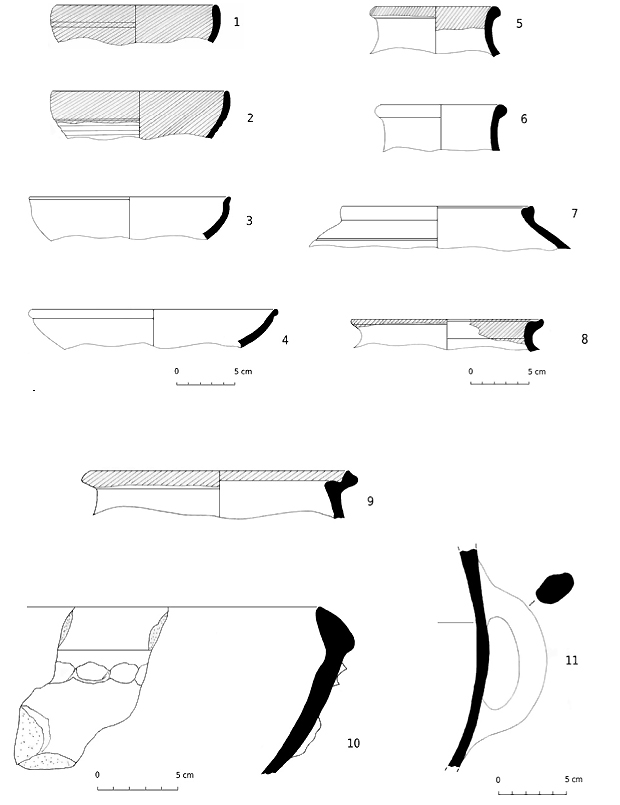
Fig. 2. Pottery finds from Room 1
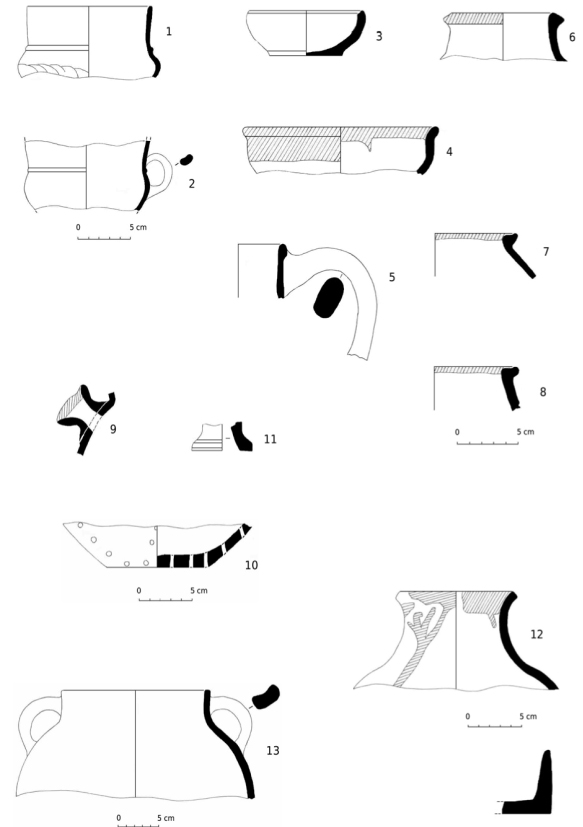
Fig. 3. Pottery finds from Room 2
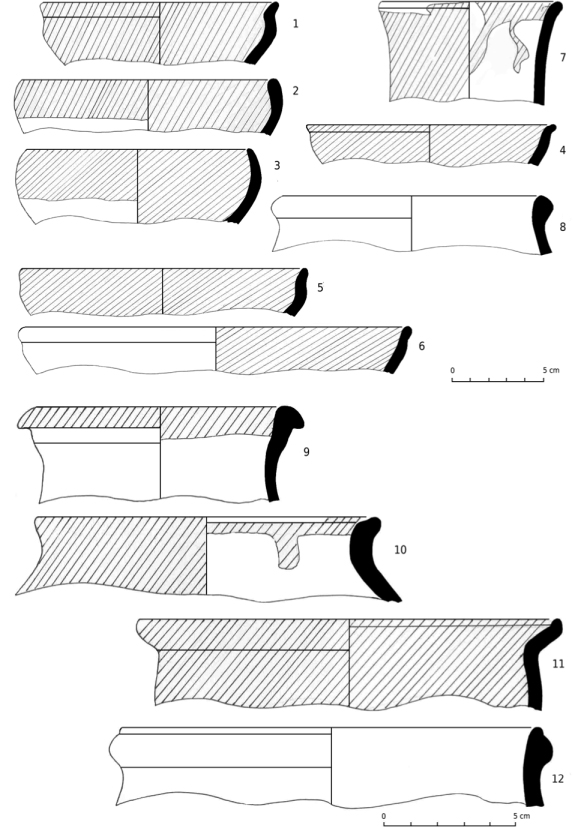
Fig. 4. Pottery finds from Room 3
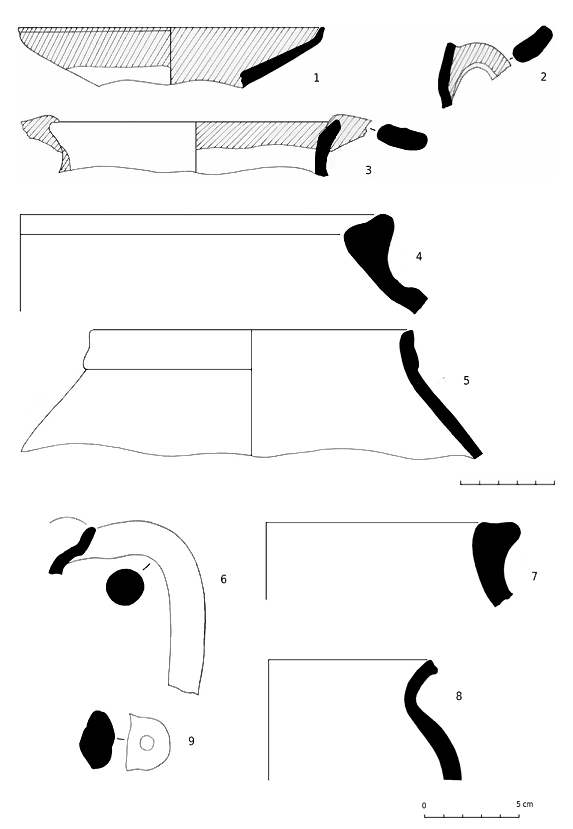
Fig. 5. Pottery finds from Room 4

Fig. 6. Pottery finds from Room 5
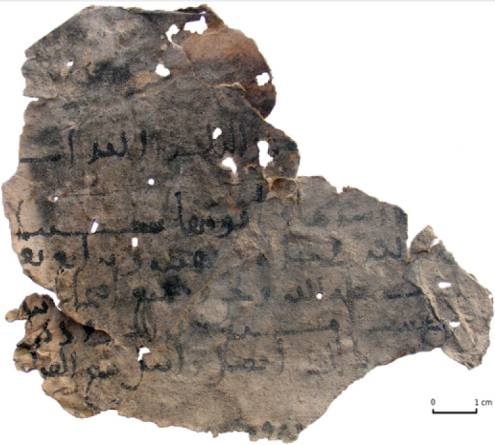
![]()
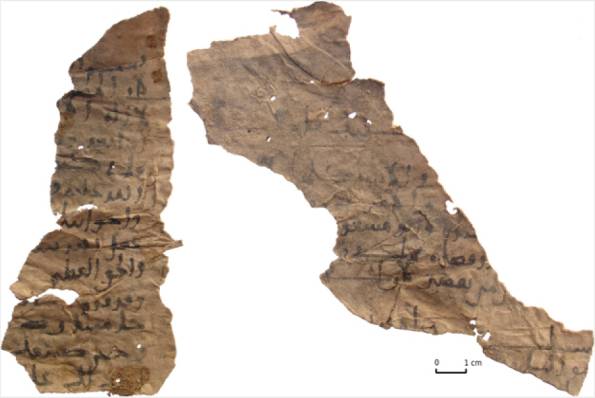
Fig. 9. Fragments of the Arabic MS found in Room 5
(Sujina, Northern Tajikistan)
17 August-31 October 2009
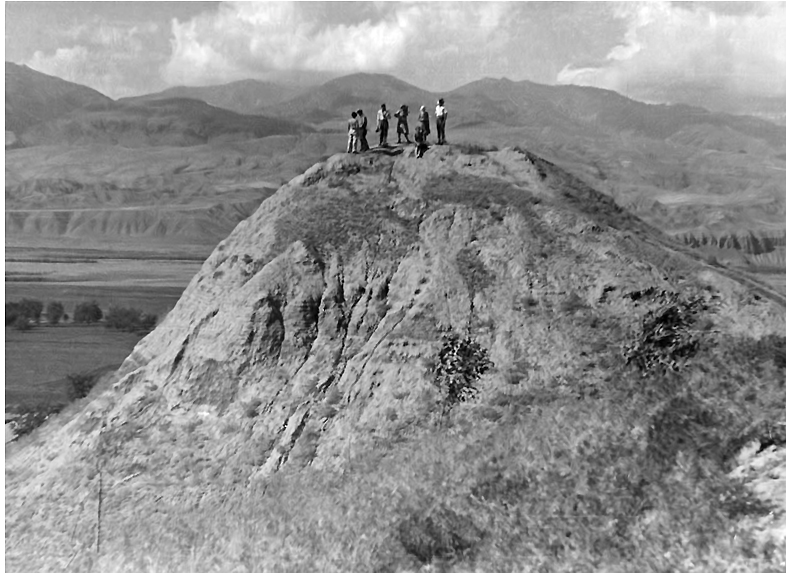
Plate 1: Russian archaeological team visiting Sanjar Shah in 1951. Archival photo courtesy of the Historical Museum in Dushanbe, Tajikistan.
This year, the southern and the northern sides of the tower were excavated simultaneously, adding six more rooms to the five ones unearthed during the previous campaign. Also, the main entrance to the tower and the circumventing corridors were uncovered. This is the best preserved fortification structure in all known Sogdian architecture.
The rooms, consequently numbered from 6 to 11, follow the pattern observed during the previous excavations in their overall layout, construction techniques and appearance.
All rooms are trapezoid to rectangular in shape, their walls are finished with thin clay mortar 1-3 cm thick, and the floors are covered with 2-3 cm of gypsum. The walls of some rooms (6, 8, 9, 11) have ledges made of the same kind of sun-dried brick as the main walls and projecting 5-10 cm off the wall surface. All rooms are connected by arched doorways.
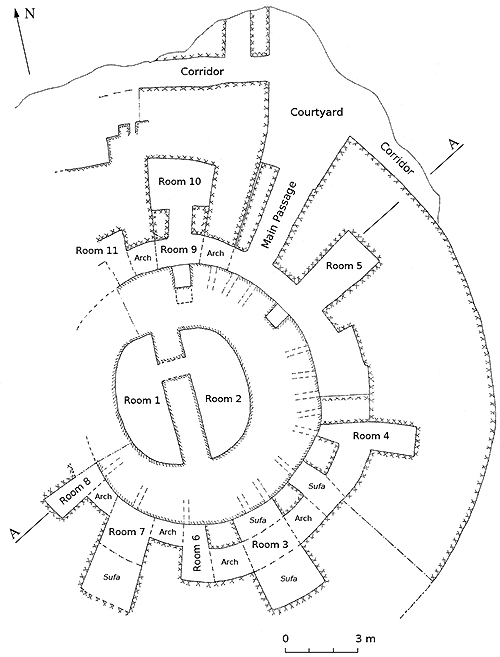
Plate 2: Ground plan of the excavated building, current state.
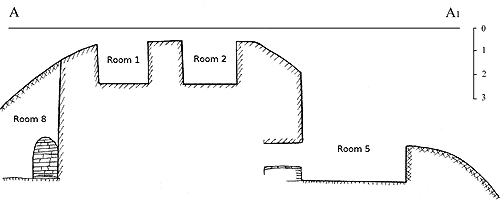
Plate 3: Cross-section A–A1.
Room 6 has a hearth 0,60 ? 0,40 m standing on the upper floor of the main passage. In the S-W corner of the room were found some rotten remains of grain.
Room 7 has a vertical loophole 0,50 x 1,60 x 0,22
m in its northern wall, which is at the same time the S–W wall
f the cylindrical tower. In the southern part of the room there is
a bench (sufa) 0,80 m high, finished with two coats of clay mortar.
Room 8 has a yet uncovered loophole in the western
wall of the tower.
|
||
| Plate 4: arched entrances to rooms 7 and 8 viewed from Room 6. |
||
In Room 9 we find two symmetrically opposed beam pockets 25 x 21 x 72 cm, one in the eastern wall, 3 m up from the floor, the other in the opposite wall at the same height. The entrance arch was enforced with tree branches and cane stems.
|
|
||
Room 10 features traces of a big fire which brought all walls to read heat. The finishing plaster is burned to 2-3 cm in depth. The walls show traces of later reconstruction consisting in an additional coat of plaster, 1.5 to 2.0 cm thick. But no arrow heads or other signs of conquest were found. The northern wall is poorly preserved. In the S–E and S–W corners of the room were found two hearths ca. 45 x 50 cm resting on small stands.
Rooms 9 and 10 were initially one room before the
dividing wall was erected. This wall stands on the second floor from
the top, while there is another 3rd floor deeper down.
| Plates 7, 8(above left): stretching arch of the passage connecting Rooms 9 and 11. The same kind of arch leads to the corridor connecting rooms 9 and 5. |
||
Room 11 has beam pockets in its western and eastern walls, intended to carry an entresol, two in each wall. This room features a well-preserved vaulted roof built of sun-dried brick 45 x 24 x 9-10 cm.
|
|
||
Main entrance
Further excavations of Room 5, which was uncovered during the previous campaign, revealed a passage from outside to the circular corridor circumventing the tower. The corridor is 1,20 m wide in its southern (inner) part and 1,60 wide in the opposite part. In the middle of the corridor, by the eastern wall, was found a hearth 60 x 40 cm together with fragments of earthen moveable hearths and a brazier.
Courtyard
A courtyard ca. 30 m2 was
uncovered to the north from the main entrance just described. It can
be safely argued that there was a roof over this area, and the remains
of the wooden shed cover all floor surface of the courtyard.
Outside corridor
Beyond the courtyard, further away from the central tower
were discovered the remains of another circumventing corridor. Its
dimensions can be reconstructed according to some remaining parts,
one of which, leading E–W, is 1,20 m wide. In the western end
of the corridor there is a passage 1 m wide and 2 m long leading southwards.
We assume this to be a stairway to the top of the tower.
In this part of the corridor were found two Bukhar-khudat coins without
indication of the ruler, time or place of mint (type 13 according
to the well-known Smirnova’s catalogue, q.v.)1. These
coins were issued by the Bukhara rulers between the 5th and th century
AD.
The corridor also extends eastwards, where its southern wall stands
up to 0,70 m from the floor while the northern wall is not preserved.
Apart from the pottery described on plates I-XII and the children's
toy on plate V-4, one find must be mentioned separately. It is a child’s
dress made of cotton, dating approximately to V-VIII AD. It was found
on the upper floor of Room 9. The dress is now stored at the Rudaki
State Museum in Panjikant.
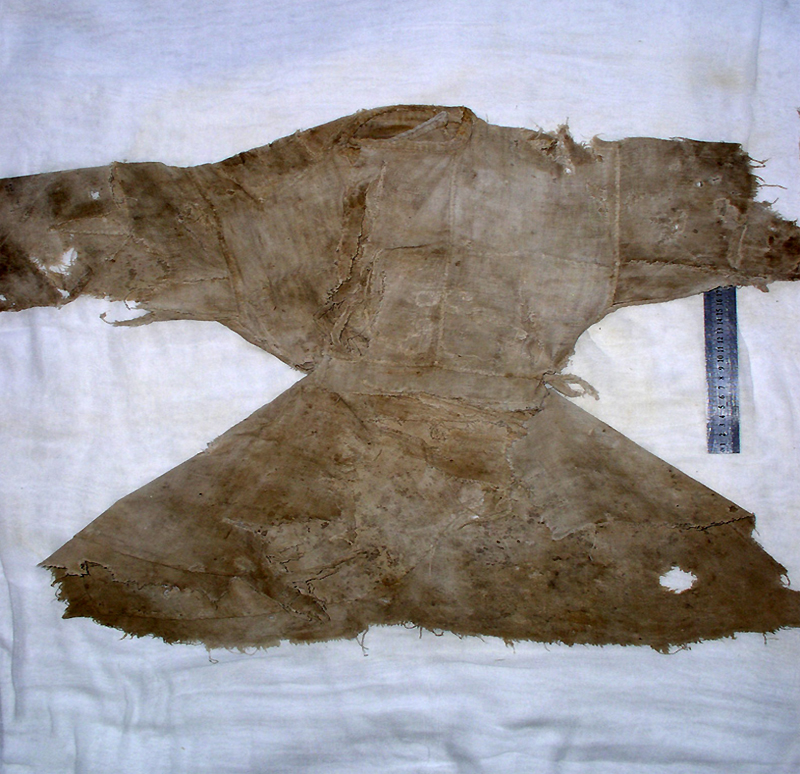
Plate 11: dress after conservation.
![]()
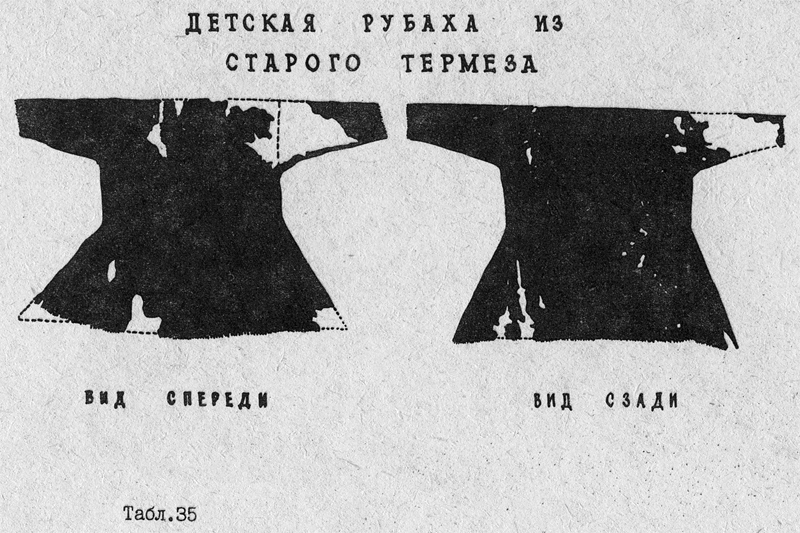

|
|
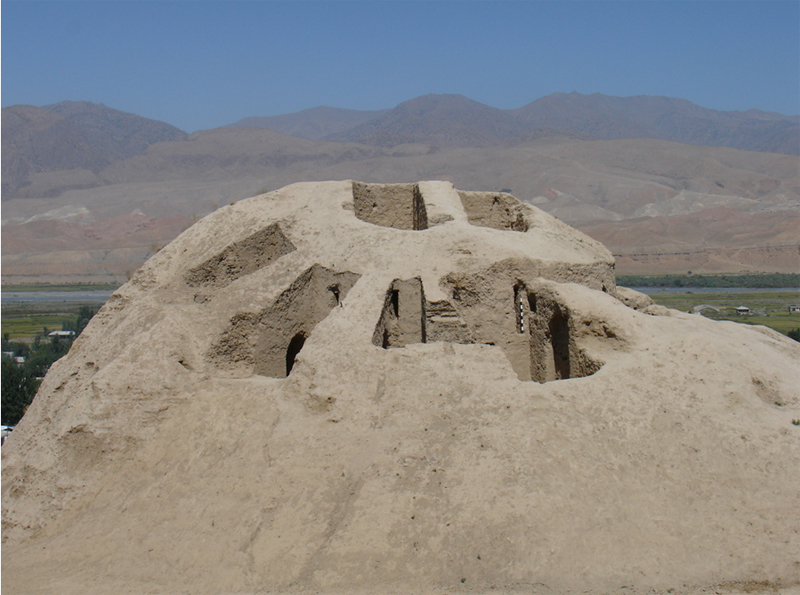
Plate 15: the tower at Sanjar Shah, current state (facing north).
Plan for 2010
Since the tower stands on an exposed position at the very edge of the tepe, the expedition's work will concentrate in 2010 at stabilizing the monument with the involvement of specialists.
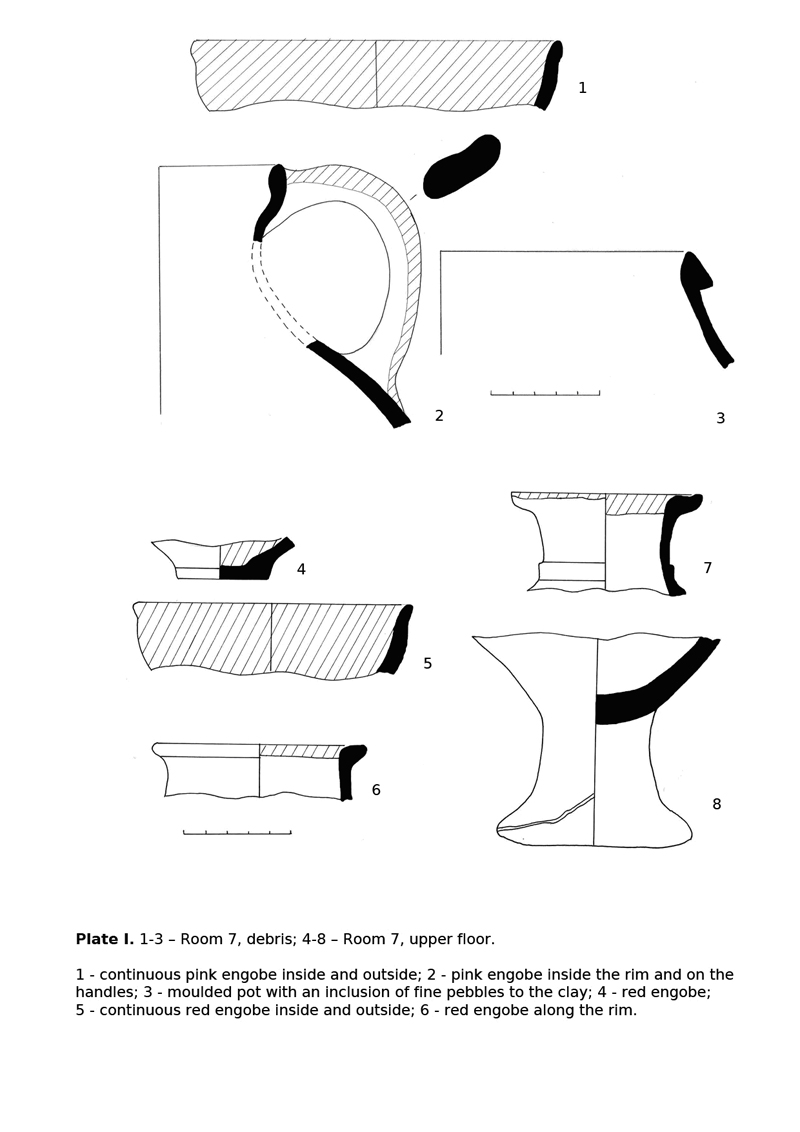
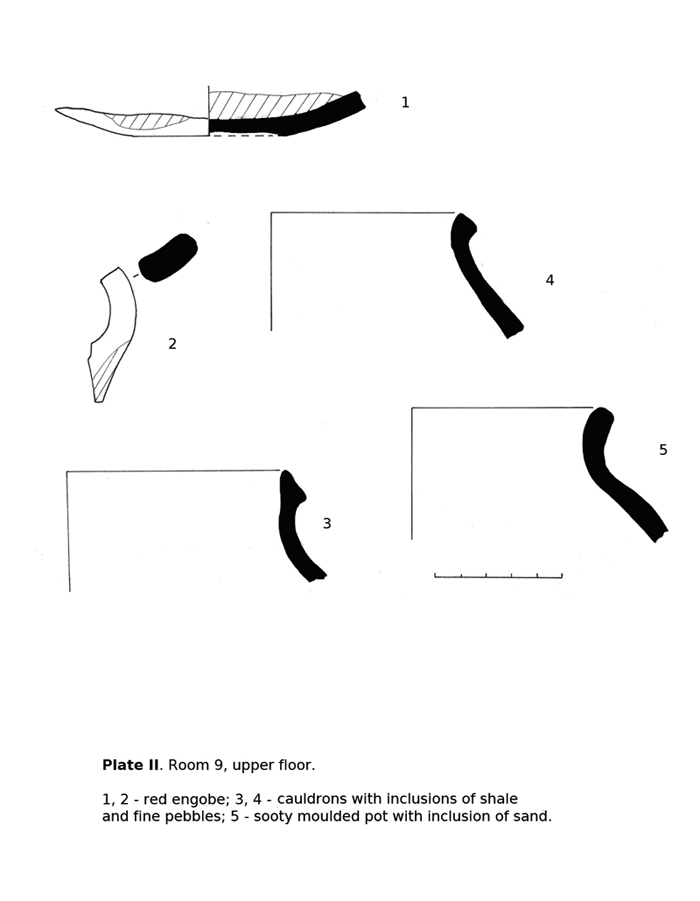
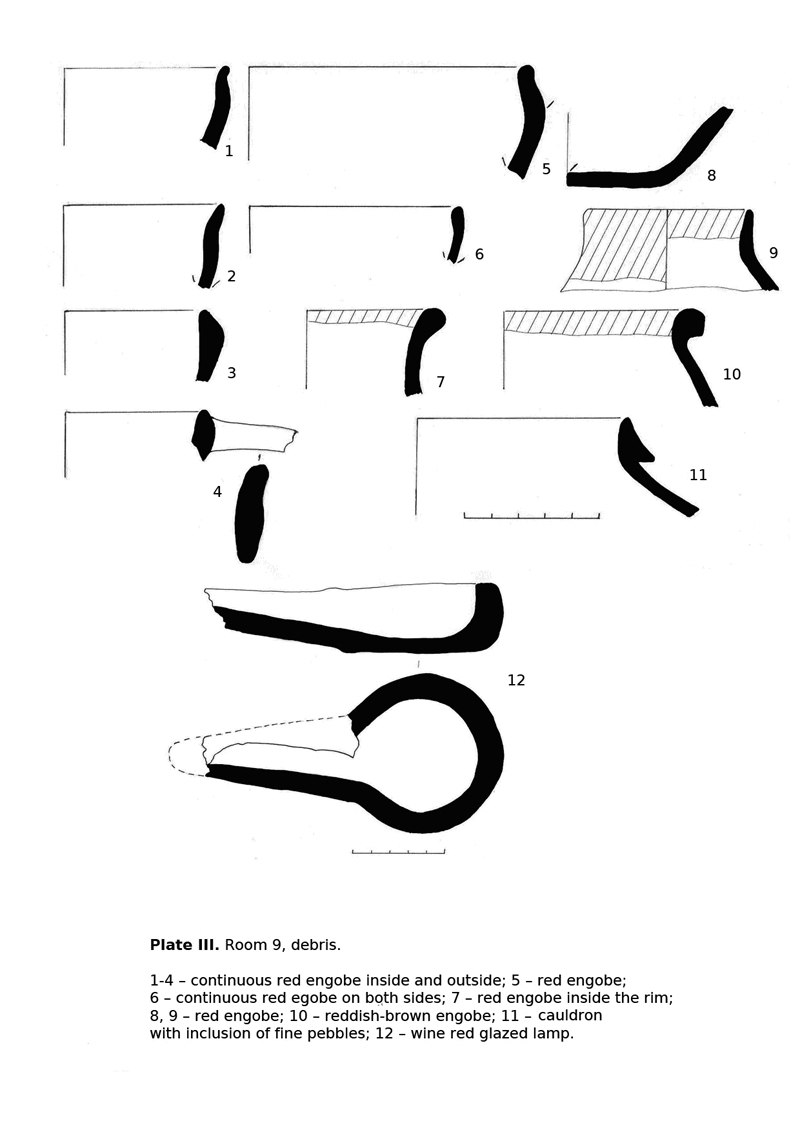
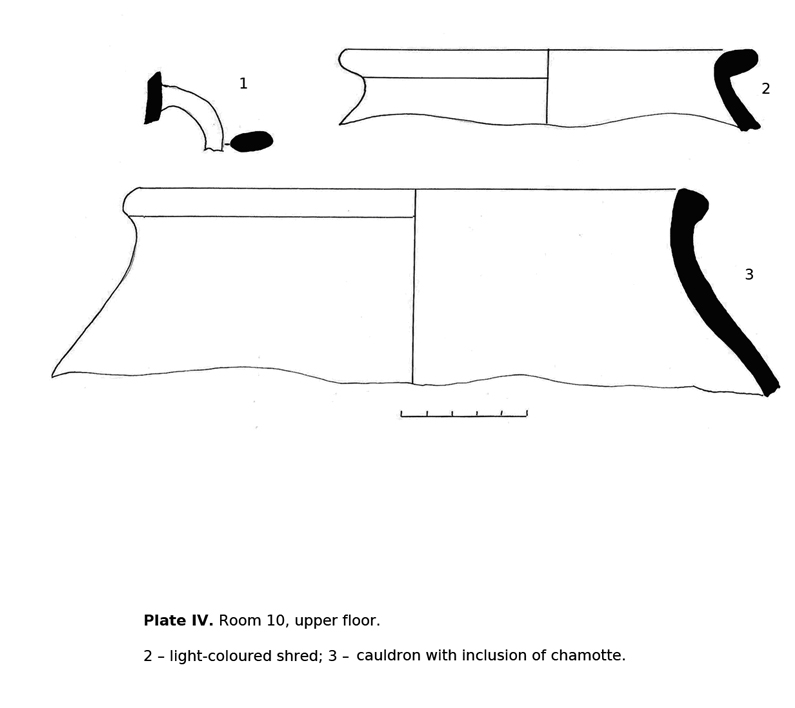
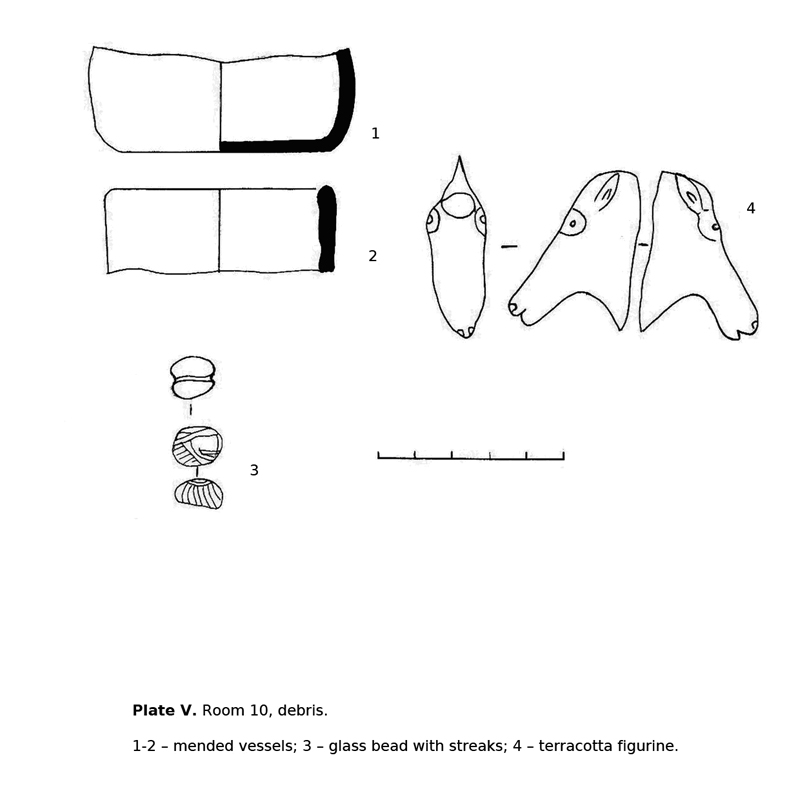
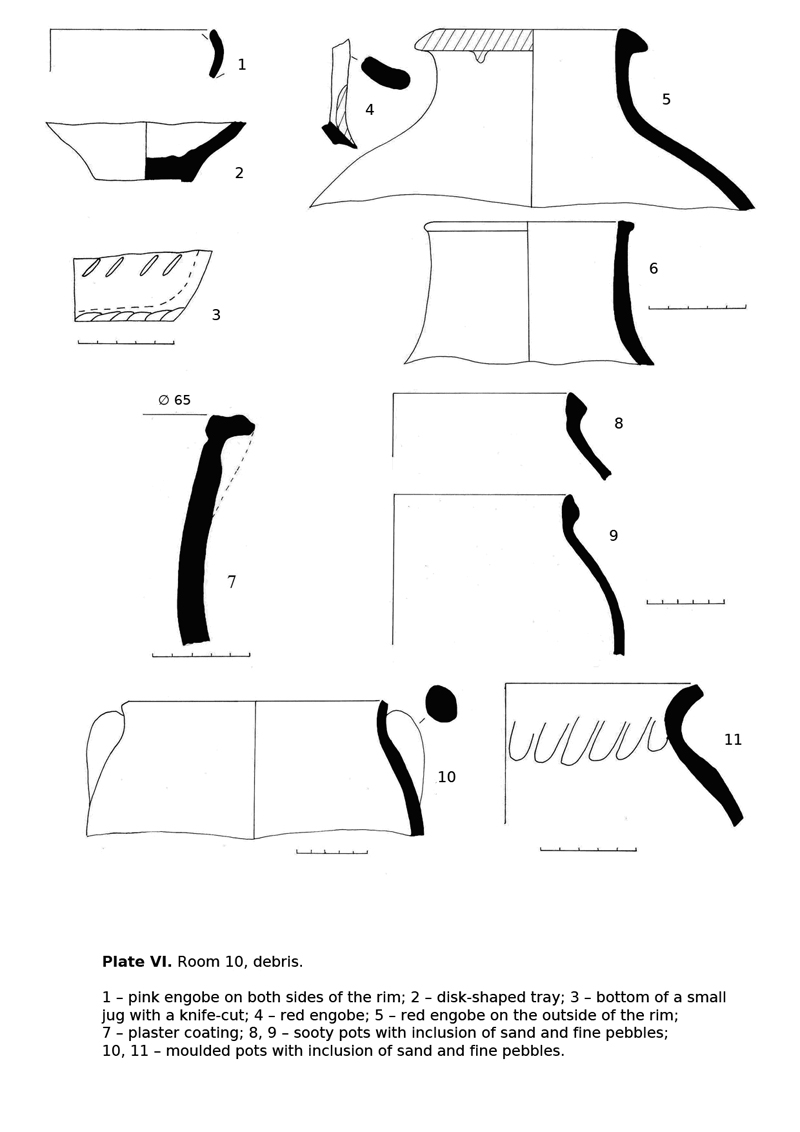
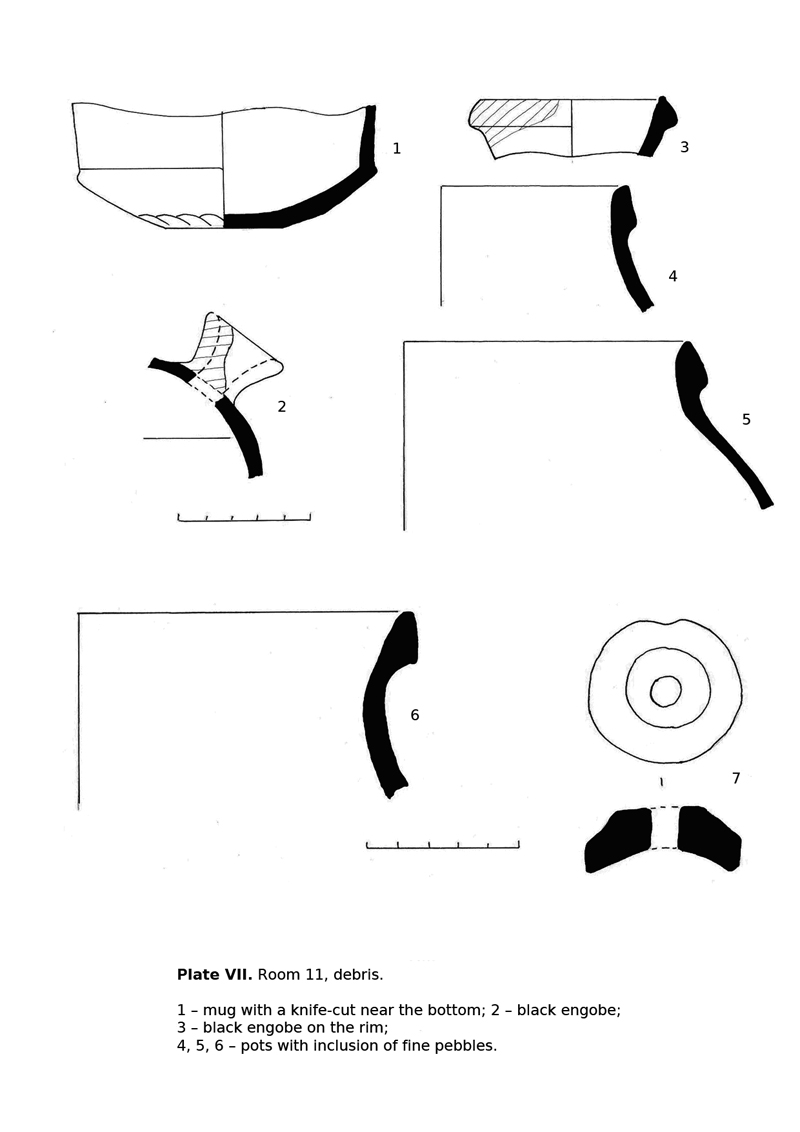
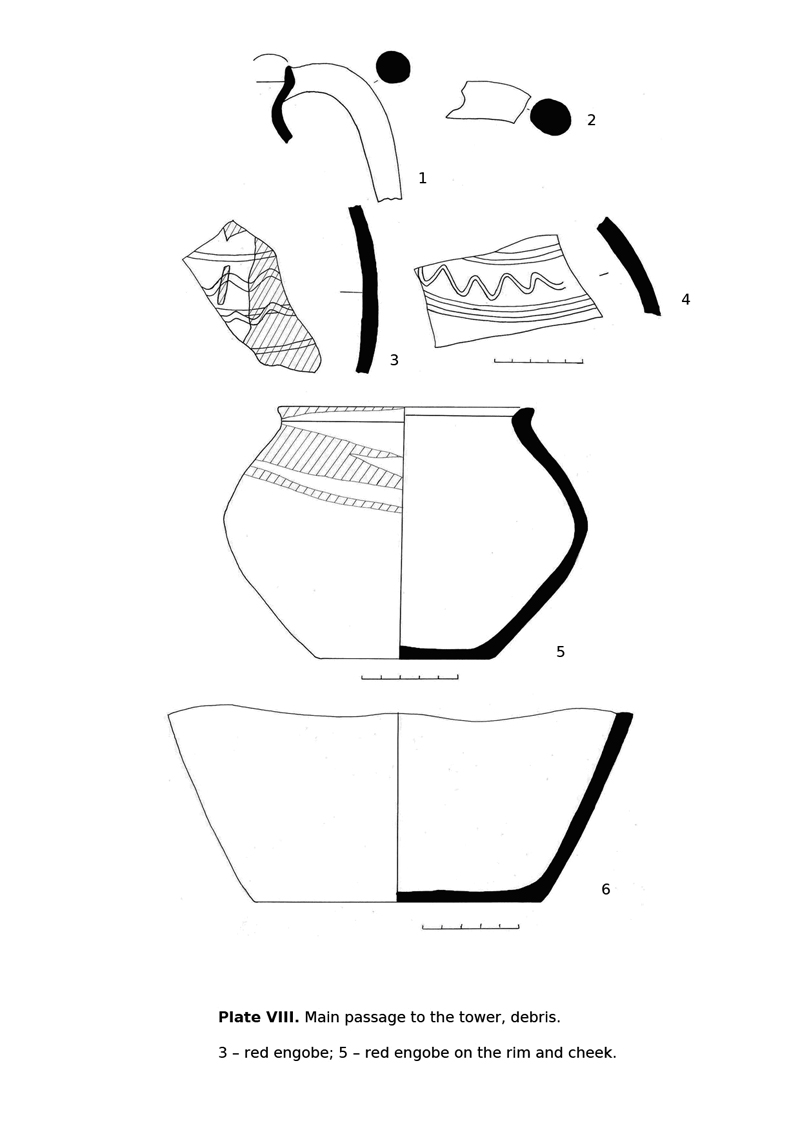
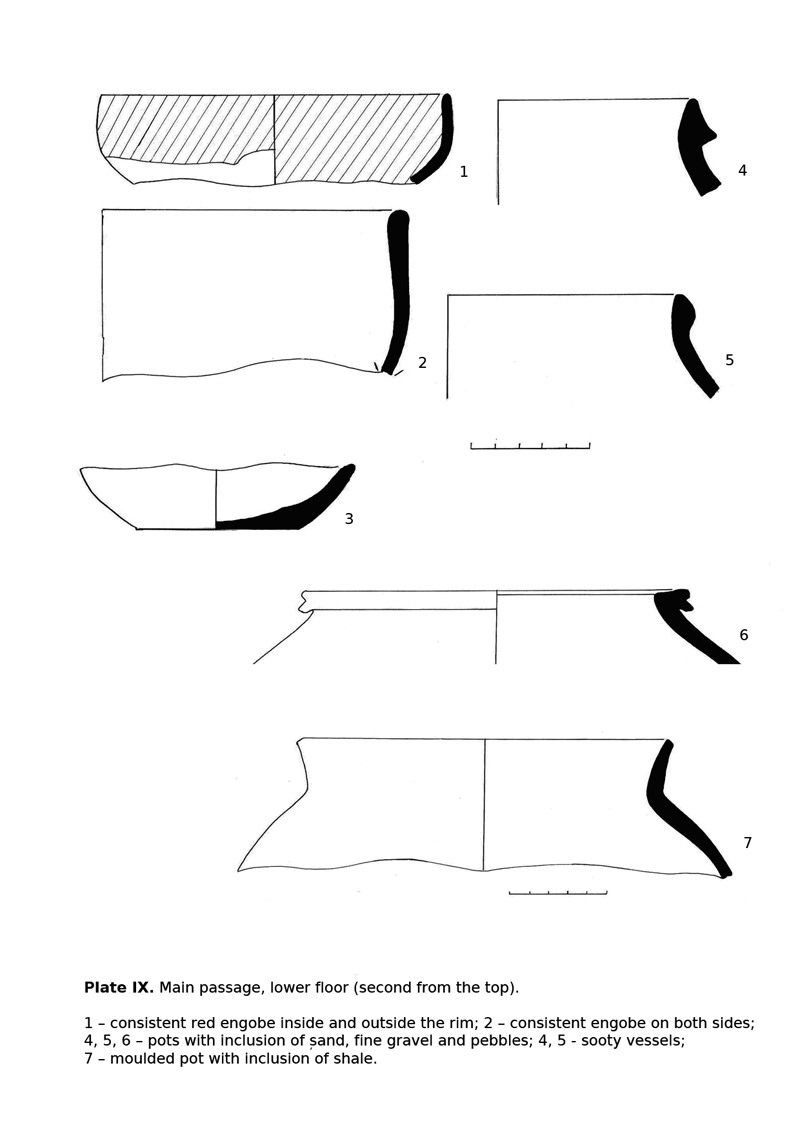
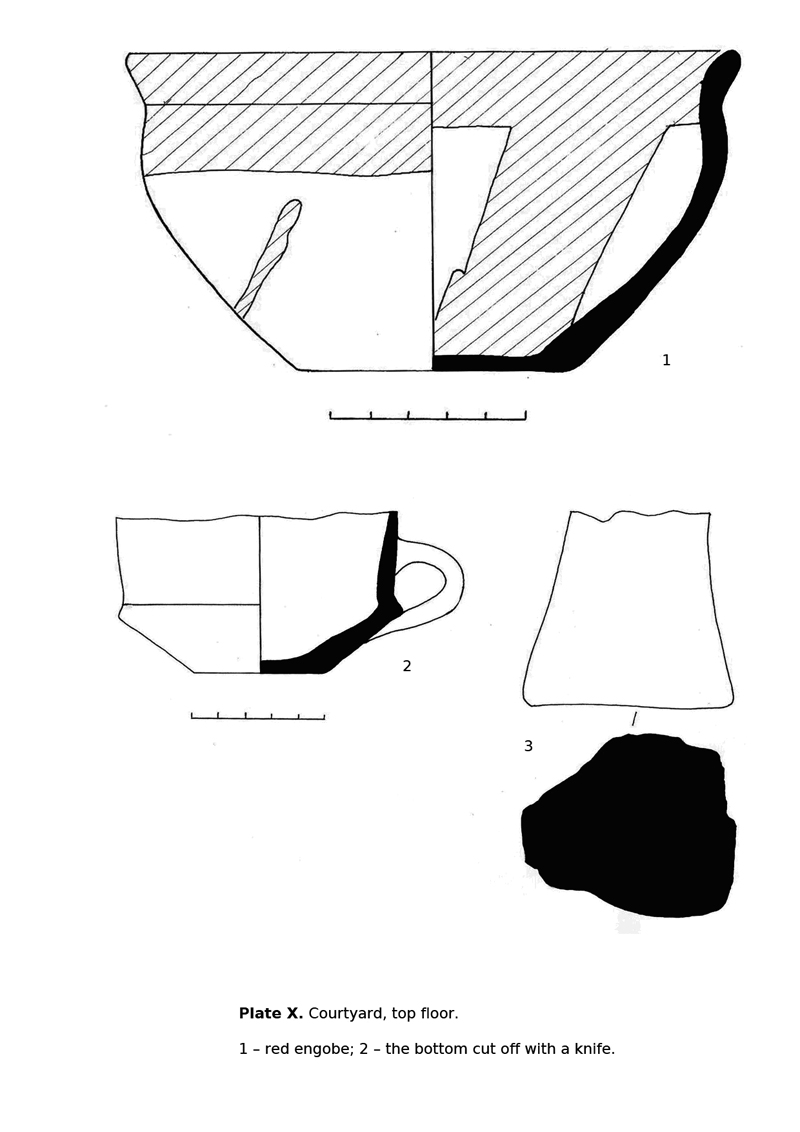
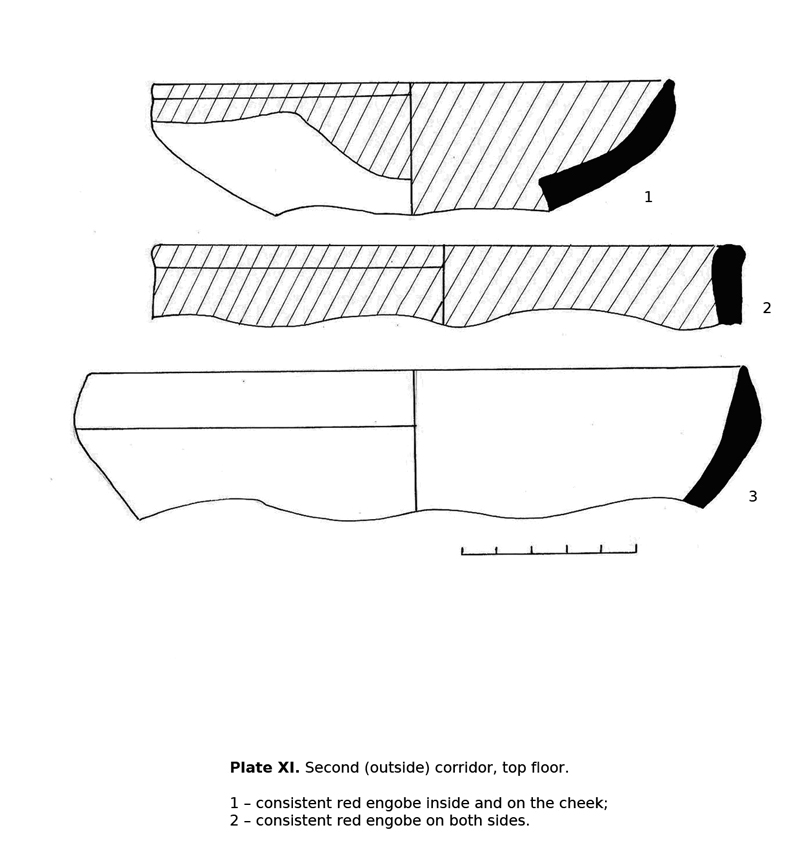
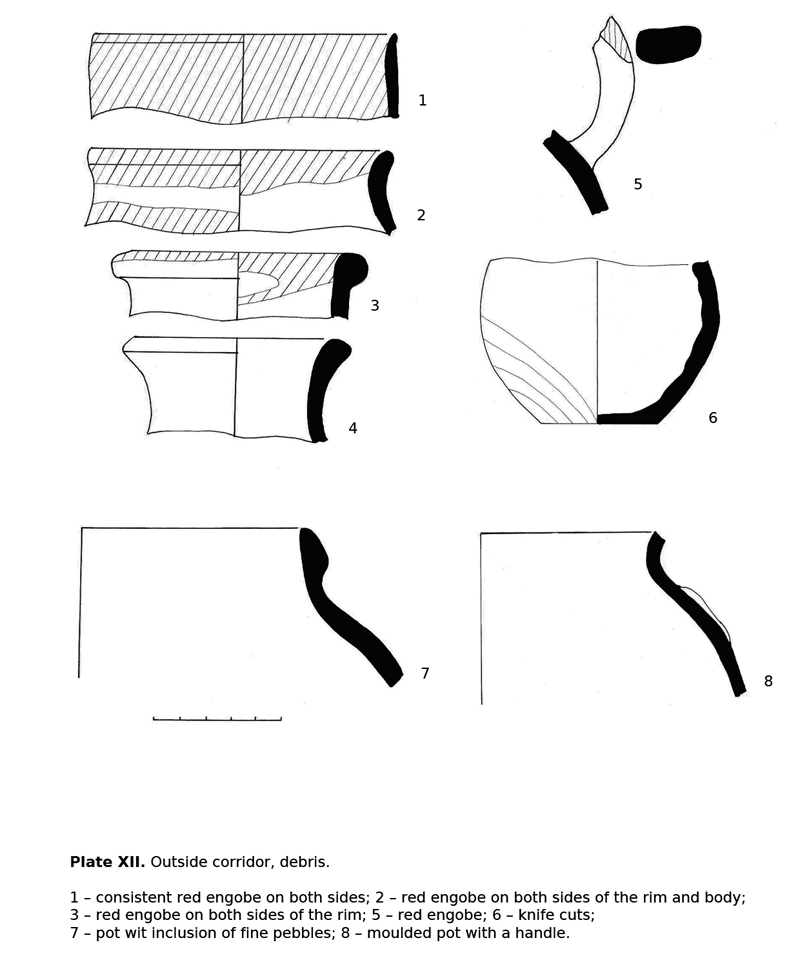
Sanjar Shah. Stabilization measures of the Sogdian tower in 2010
Background
In autumn 2009 it appeared that the stability of the main tower of Sanjar
Shah was deteriorating fast and that protective measures had to be planned
and implemented. For this reason, in 2010 and early 2011 all activities
were focussed at this new priority. The excavations will resume in summer
2011.
Synopsis of preparations and first measures
1. Starting late Autumn (before the earth froze and clay could be obtained),
we conducted a series of experiments on home-made mudbricks with various
sorts of chemicals used in modern building industry to increase water
impermeability of substances like cement, sheetrock, stucco, etc. For
the description of such materials currently at the market, and their
use in building technologies: http://www.proxima.com.ua
The best increase in water resistance and overall strength of mudbrick
was achieved with (in the order of effectiveness):
- Disom-Damp manufactured by Sodite, Spain and based on Methyl Calcium
Silicate;
- ![]() -1710 manufactured
by Polyrem, Ukraine and based on water-soluble Silicate + modifying
additives;
-1710 manufactured
by Polyrem, Ukraine and based on water-soluble Silicate + modifying
additives;
- Polyfluid manufactured by Somefor, France and based on synthetic resins.
2. In Tajikistan we examined the local market for the analogous materials.
Despite limited choice, two suitable brands were found, one vinyl- and
the other acryl-based.
In Panjikant, we used them to conduct the same kind of tests (water
resistance and mechanical strength) on genuine Sanjar Shah mudbricks
taken from the debris of last year's dig (collapsed ceilings and fallen
wall fragments). The results were not immediately available as mudbrick
was drying up very slowly because of the overall humidity (heavy rains
all the time). Finally, the sought factors appeared to be not too far
from those obtained in lab conditions (mechanical strength ca. 6-7 MPa,
water absorption ca. 3-5%).
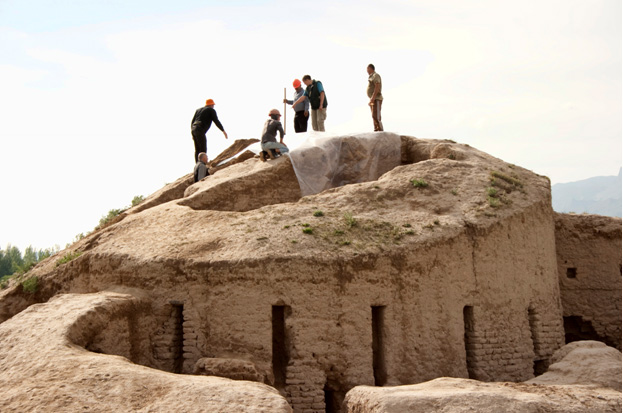
Evaluating the condition of the tower
3. Meanwhile, we started excavations of the interior part of the tower
to establish the state of the carrying building elements. Obviously,
any surface strengthening would be futile if the bearing structures
are feeble. We penetrated inside the tower from two sides: a) from the
top through a hatch in the floor of Room 1, and b) through a loophole
in the wall of Room 4.
The excavations have shown that the interior of the tower was intentionally
filled with irregularly laid bricks and garbage, so there are no rooms
inside to investigate. This can be explained as follows:
a) The tower, as opposed to the circumventing gallery with rooms, is
the earliest building structure at the spot. Initially it was empty
inside and had one store only.
b) At a later stage the interior of the tower was filled with solid
materials such as bricks, to provide support for the 2nd store, and
the current Rooms 1 and 2 were built on the top.
c) Either later or simultaneously the circumventing gallery with rooms
was added.
4. In the light of the above-described it was decided to implement
the following conservation plan, complying with the UNESCO Charter for
the Protection and Management of the Archaeological Heritage of 1990:
a) Exact copies of the original Sanjar Shah bricks are made in situ,
with the particular vinyl-acrilic solution added to the water with which
clay is puddled.
b) The top side of the walls is augmented with these bricks up to the
original (known) height, thus forming a strong protective layer; the
border of the original wall and the reconstructed part is marked with
a row of bricks made with carbon-black added.
c) The vertical wall surfaces are covered with clay plaster also made
with the synthetic additive.
d) A protective roof is built, resting on the newly-made bricks so that
the ancient elements remain intact.
e) A coated ditch is dug at the foot of the tower, to provide drainage
for the waters flowing from the plateau towards the structure and dampening
the basement (stylobate) of the tower.
The Sanjar Shah has officially addressed the Ministry of Culture of Tajikistan for financial help with this project, underlining that our means are limited since Eurasia finances archaeological excavations and related academic activities rather than engineering/construction works. The Ministry has approved the plans submitted and will substantially contribute to the building of the planned protective roof.
Sanjar Shah Conservation Team:
Sharofuddin Kurbanov, Director of Research
Olga Jouravleva, Architect
Sergei Gorlov, Building Engineer
Gennadiy Ivanov, Archaeologist
Alexei Savchenko, Research Adviser
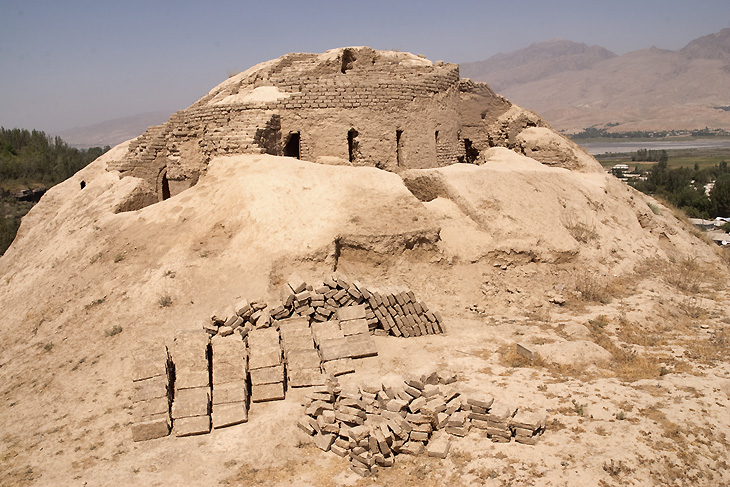
Exact copies of original Sanjar Shah bricks
Archaeological excavations at the site of Sanjar Shah,
Northern Tajikistan
September – October 2011
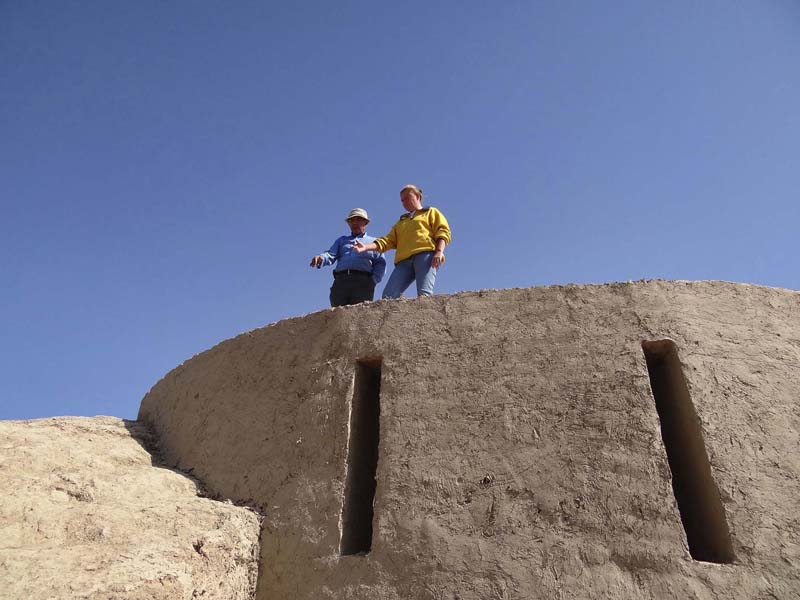
In 2011 two new sectors were chosen for investigation: the foot of the plateau in its NW corner, below the tower investigated in the previous years (Excavation 3), and an area in the eastern corner of the plateau (Excavation 2).
Excavation 3 is as wide as the small terrace on the steep slope of the hill could allow, 10!11 m, between the almost vertical western side of the tower and the precipice on the other side. The excavation brought to light two rooms, an open ground with the remains of some walls, and a number of household pits.
Room 1 is 3.80 m E–W and 2.30 m N–S (Plate 1). The northern and the northeastern parts of the room fell into the precipice long ago. The northern wall of the room is 1.10 m thick and stands 0.55-0.75 m high. Itis made of bricks 52!26!8 cm and covered with rough clay finish ca. 3 cmthick. In the middle of the wall there is a niche 1.25 m long and 0.27 m deep.
The western wall, made of the same bricks, is 1.25 m long from the southern corner to the precipice in the north. The eastern wall, 63 cm thick, is made of bricks 44!24!8 cm and covered with plaster ca. 1 cm thick. Along the southern wall there is a sufa 15-20 cm high and 1 m wide.
The following artefacts were found on the floor of Room 1:
– bowl-like goblet with folded rim (V–VI AD), painted with red engobe outside (Plate 2, 1);
– fragments of the rims of four bowls with red engobe (Plate 2, 2-5);
– fragment of a disc-shaped tray (Plate 2, 6);
– fragment of the rim of a bowl with an arched handle (Plate 2, 7).
The debris in Room 1 provided the following finds:
– fragment of the rim of a ribbed bowl (VI AD), painted with red engobe(Plate 3, 1);
– fragment of the rim of a bowl with red engobe (Plate 3, 2);
– two fragments of the rim of a table jar (Pate 3, 4);
– three fragments of the handles of a water-carrying jar (Plate 3, 5-7);
– fragment of the handle of a wide-necked jar with spots of red engobe (Plate 3, 21);
– five fragments of the rims of water-carrying jars, four of which are paintedwith red engobe (Plate 3, 9-12), and one painted with black engobe (Plate 3, 8);
– eight fragments of the rims of wide-mouth vessels with red engobe (Plate3, 13-20);
– three fragments of the walls of vessels with scratched motifs (Plate 3, 22-24); one has beige engobe inside and black engobe outside (Plate 3, 24);
– fragment of the rim of a small pot (khumcha) (Plate 3, 25);
– fragments of the rims of two cauldrons with an admixture of sand in the clay (Plate 3, 26-27);
– fragment of the bottom of a tiny vessel with wavy rim (Plate 3, 28).
Room 2 is situated to the east from Room (Plate 4). It is poorly preserved, andin its S–W part there is a late pit 1.55 m in diameter and 1.25 m deep which partly destroyed the southern and the western walls of the room. Only thewestern wall can be traced, 3.50 m long. The floor of Room 2 corresponds to thefloor of Room 1.
The following artefacts come from the debris of Room 2:
– two fragments of the rims of bowls with red engobe on both sides (Plate 4, 1-2);
– fragment of the wall of a table dish with a broken handle (Plate 4, 3);
– three fragments of the rims of water-carrying jars (Plate 4, 4-6);
– four fragments of the bottoms of water-carrying jars (Plate 4, 7-10);
– fragment of the rim of a thick-walled vessel with a broken handle (Plate 4,11);
– fragment of a rim with vertical shoulder (Plate 4, 12);
– fragment of a terracotta figurine (Plate 4, 13);
– fragment of a ceramic spindle (Plate 4, 14).
Excavation 2 was laid out at the top of the elongated mound in the SE part of the plateau, which escaped ploughing in the 1970s. A survey conducted in 2003revealed here a rich house and grounds with a vaulted hall, and a potter's workshop in the SW part of the mound. This year the excavations continued in its NW part.
Room 1 is 4.20!6.30 m (Plate 5). In the northern corner there is a stairway going north and preserved up to 1.7 m high. The stairway is 0.90 m wide in thebottom part and 0.80 m in the top part, built of sun-dried bricks 50!25!9-10 cm. There are eight somewhat decayed stairs 20-25 cm high and 10-20 cm wide.
The eastern wall 4.70 m and 1.80 m high is build of 14 layers of mudbrick 50!25!9-10 cm. It is connected to the southern wall 4.10 m long and 1.85 mhigh, built of bricks 45!23!8 cm. In the eastern part there is a sufa 2.60 m long, 0.75 m wide and 0.20 m high.
The northern wall 4.20 m long and 2 m high is built of bricks 45!25!10 cm with preserved traces of plaster 3-4 cm thick. The western wall is 1 m thick,
6.30 m long and 2.25 m high. It is built of adobe pieces and sun-died bricks50!25!10 cm. The wall has a coat of plaster ca. 3 cm thick, blackened with smoke.
Near the southern wall there are two boxes 1.30!1 m and 1!0.90 m, standing 0.60 m high above the floor.
The following finds come from the floor of Room 1:
– rounded mug with ring-shaped handle (Plate 7, 1);
– fragments of two rims and a handle of an oenochoe jar (Plate 7, 2-3);
– fragment of the wall of a vessel (VII AD) with black engobe and geometricmotif (Plate 7, 4);
– fragment of the wall of a jar with scratched ornament (Plate 7, 6);
– fragment of the bottom of a water-carrying jar (Plate 7, 5);
– fragment of the rim of a khum (Plate 7,7);
– three fragments of the rims of cauldrons (Plate 7, 8-10), one of which (thinwalled) dates to IX-X AD (Plate 7, 10).
Inside case 1 were found:
– water-carrying jar with an arched handle and high neck (Plate 8, 1);
– cauldron with admixture of sand in the clay (Plate 8, 2);
– two rims of a similar cauldron (Plate 8, 3-4);
– wide-walled moulded cauldron with a horseshoe-shaped handle (Plate 8, 5).
Debris inside Room 1:
– two rims of bowls with red engobe (Plate 9, 1-2);
– three bottoms of bowls (Plate 9, 3-5);
– rim of a mug with red engobe inside (Plate 9, 6);
– fragment of a ring-shaped handle of another mug (Plate 9, 6);
– fragment of the rim and handle of a table jar (Plate 9, 8);
– fragments of the rims of five water-carrying jars (Plate 9, 9-13);
– fragments of the rim of a wide-necked vessel with red engobe around therim (Plat 9, 14);
– fragment of a wide-necked vessel with five rows of wavy lines and four rows of parallel lines (Plate 9, 15);
– fragment of a tiny jar (Plate 9, 16);
– rims of three khums (Plate 9, 17-19);
– fragment of the rim of a tagora with traces of fingers (Plate 9, 20);
– two rims of a cauldron (Plate 9, 21-22);
– fragment of the wall of a moulded vessel with incisions and red paint outside (Plate 9, 23);
Another excavation was laid in the N–W part of the same mound, at the top of a pronounced height 30 m long and 9 m wide, elongated E–W. Here a street was revealed at the excavated area 17!4 m (Plate 10). Twosurfaces could be traced, separated by ca. 70 cm of loess. The upper surface can be dated to 1st quarter VIII AD by a coin minted by Gurek, the lower – tomid. VII AD, by a coin minted by Turghar.
The surface of the street to the east from Room 2 gave the following finds:
– fragments of the rims of two bowls, one with red engobe outside (Plate 11,1), the other with dark brown engobe inside and outside (Plate 11, 2);
– two fragments of the rims of bowls, one with a wavy side (Plate 11, 3-4);
– two fragments of ring-shaped handles of bowls (Plate 11, 5-6);
– three fragments of rims of water-carrying jars (Plate 11, 7-9);
– fragment of the rim of a wide-necked vessel with notches and vertical lineson the body (Plate 11, 10);
– fragment of the rim of a wide-necked vessel (Plate 11, 11);
– fragment of the rim of a khum (Plate 11, 12);
– two fragments of the rims of moulded cauldrons, decorated with notches(Plate 11, 14);
– fragment of a brazier (Plate 11, 15);
– three fragments of the handles of moulded vessels, painted in red (Plate11, 16-18).
The stratum below the street surface gave the following finds:
– two fragments of the bottoms of vessels (Plate 12, 1-2);
– three fragments of the handles of mugs (Plate 12, 3-5);
– neck of an oenochoe jar (Plate 12, 6);
– fragments of the handles of five table jars (Plate 12, 7-11);
– fragments of the handles of three water-carrying jars (Plate 12, 12-14);
– two fragments of the rim of a wide-necked vessel with a handle (Plate 12,17-18);
– five fragments of cauldrons (Plate 12, 22-26);
– fragment of the rim of a tagora (Plate 12, 27)
– fragment of the rim of a moulded cauldron with two handles (Plate 12, 28).
The pit contained the following finds:
– fragment of the bottom of a bowl with traces of knife cuts (Plate 13, 1);
– fragment of the rim of a water-carrying jar with a narrow gutter (Plate 13, 2);
– fragments of the rims of three wide-necked vessels (Plate 13, 3-5);
– wide-walled wide-necked vessel (Plate 13, 6);
– fragment of the rim of a cauldron (Plate 13, 7);
– fragment of an oval ossuary, carefully manufactured (Plate 13, 8).
Room 2 is situated in the N–W corner of the same excavation, 1.6 m below the street level. It is 2.8 m N–S and 5.6 m E–W (Plate 14). The remaining walls stand at 1.2–1.7 m, they are built of bricks 50!25!10 cm and coated with plaster 2 cm thick. Along the southern and the western walls goes a "-shaped sufa 1.3 m wide and 0.25 m high, covered with plaster.
The entrance is in the N–E corner of the room, 1.1 m wide and 1.2 m high.
The following artefacts were found on the floor of Room 2:
– unidentifiable Sogdian coin with a square hole;
– fragment of the rim of a bowl with red engobe (Plate 15, 1);
– fragment of the rim of a mug (Plate 15, 2);
– fragment of a ring-shaped handle of a mug (Plate 15, 3);
– fragment of the bottom of a mug (Plate 15, 4);
– fragment of the bottom of a water-carrying jar (Plate 15, 5);
– fragment of the wall of a vessel with wavy motif and scratched lines (Plate15, 6);
– fragment of the bottom of a water-carrying jar (Plate 15, 7);
– two fragments of the rim of a khum with a scratched ornament (Plate 15, 8);
– fragment of the rim of a tagora (Plate 15, 10);
– two fragments of the rims of moulded cauldrons (Plate 15, 11-12).
Above the sufa were found:
– two fragments of the rims of bowls (Plate 16, 1-2);
– fragment of the rim of a table jar (Plate 16, 3);
– three fragments of the rims of water-carrying jars (Plate 16, 4-6);
– two fragments of the rims of khums (Plate 16, 7-8);
– fragment of the bottom of a moulded bowl (Plate 16, 9).
The debris of Room 2 contained the following objects:
– fragment of the rim of a bowl with red engobe on both sides (Plate 17, 1);
– fragment of the rim of a mug with wavy side (Plate 17, 2);
– fragment of the rim of an oenochoe jar (Plate 17, 3);
– fragment of the rim of a table jar with red engobe (Plate 17, 4);
– two fragments of the rims of water-carrying jars, one with red engobe(Plate 17, 5), the other with brown engobe (Plate 17, 6);
– five fragments of the rims of jars (Plate 17, 7-11);
– fragment of the rim of a water-carrying jar with a broken handle (Plate 17,12);
– fragment of the wall of a vessel with scratched wavy ornament (Plate 17, 13);
– fragment of the bottom of a water-carrying jar with a ribbed wall (Plate 17,14);
– two fragments of the rims of wide-necked vessels, both with red engobe(Plate 17, 15-16);
– fragment of the rim of a vessel with holes under the rim and triangular ornamental impressions (Plate 17, 17);
– fragment of the rim of a khum (Plate 17, 18);
– fragment of the rim of a khum with finger-pressed ornament (Plate 17, 19);
– three fragments of the rims of cauldrons (Plate 17, 20-22).
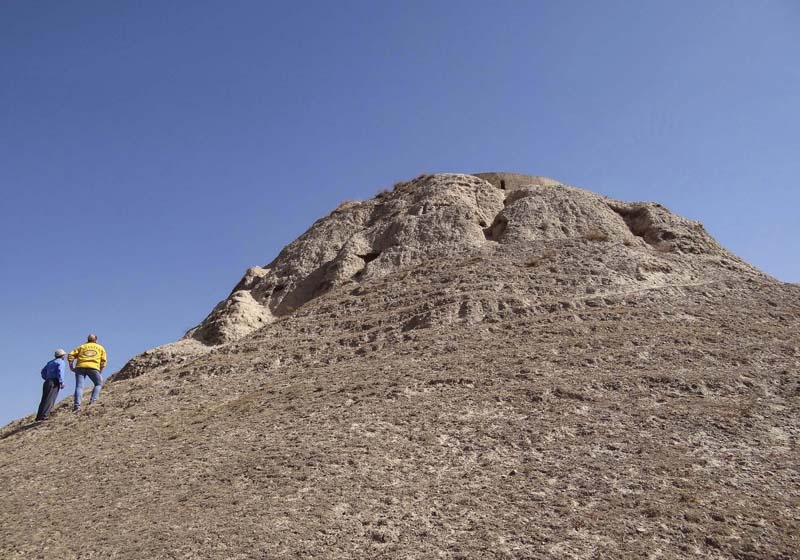
View of the rear (western) side of the Sanjar Shah tower.
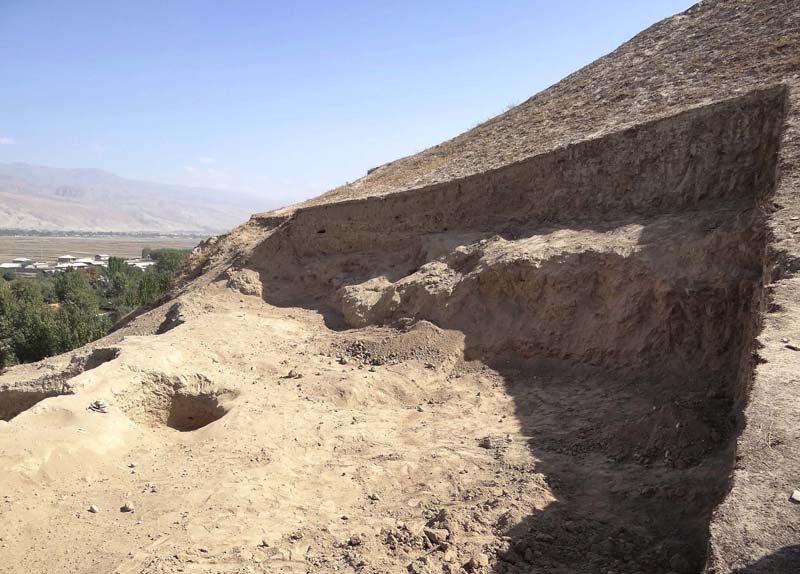 Excavation 3 at a terrace beneath the tower.
Excavation 3 at a terrace beneath the tower.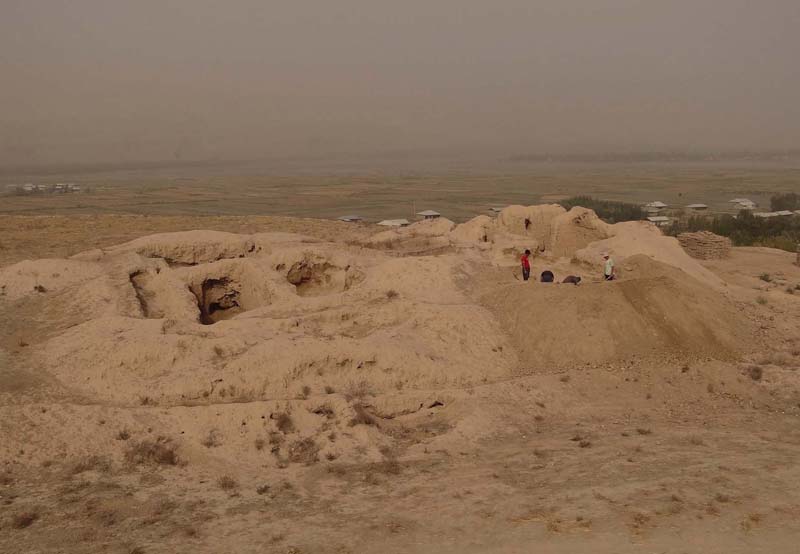
Excavation 2 at the mound in the eastern part of the plateau.
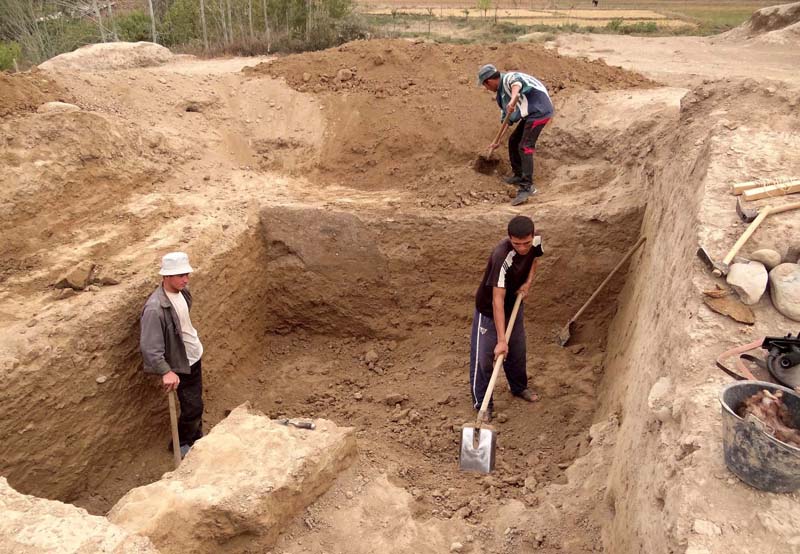
Excavation 2, Room 1.
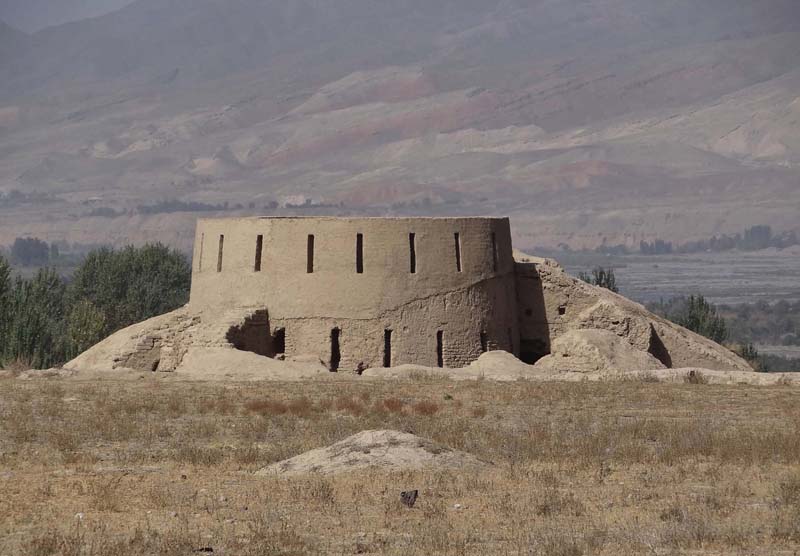
View of the Sanjar Shah corner tower after restoration.
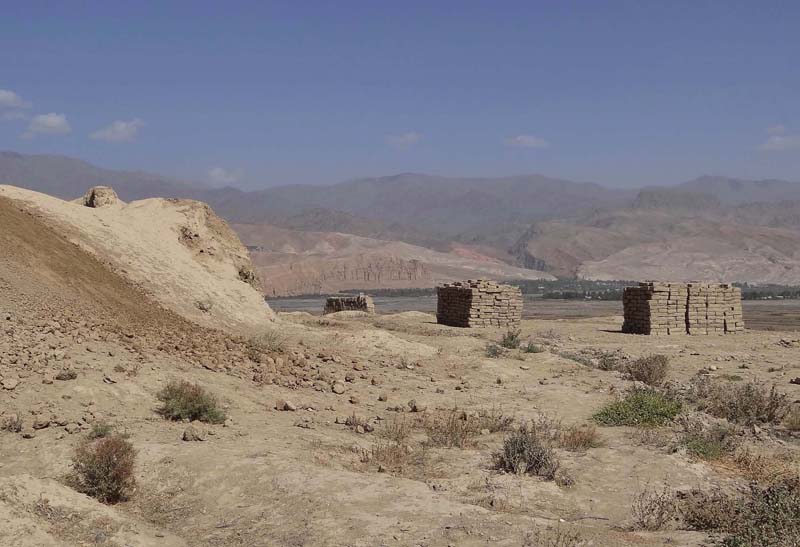
Bricks used for restoration, made according to special technology developed by ESAREX
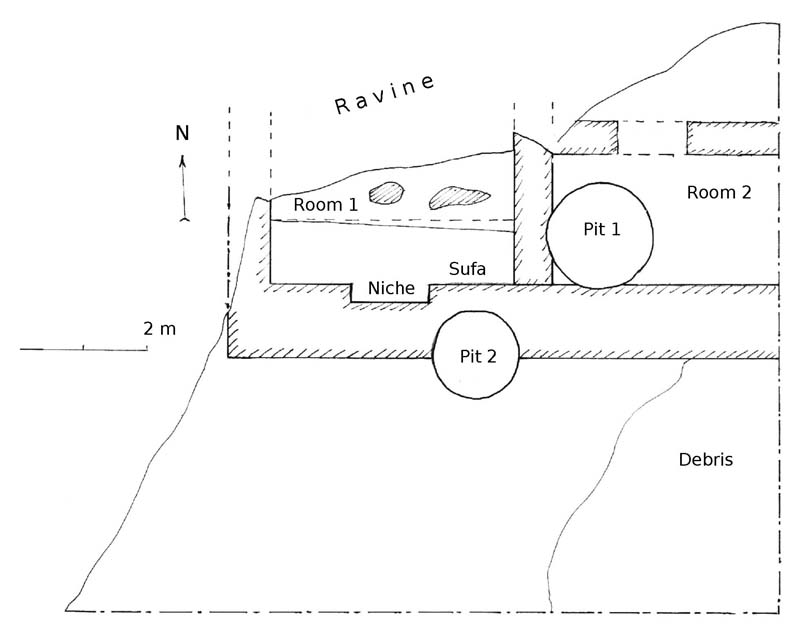
Plate 1: Excavation 3, ground plan.
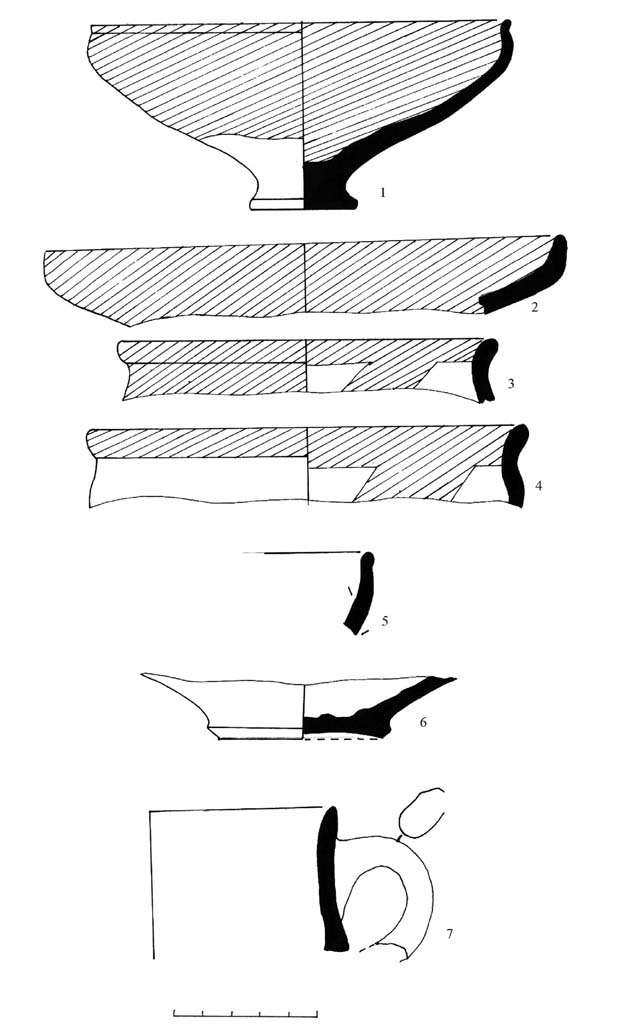
Plate 2: Excavation 3, finds from the floor of Room 1.
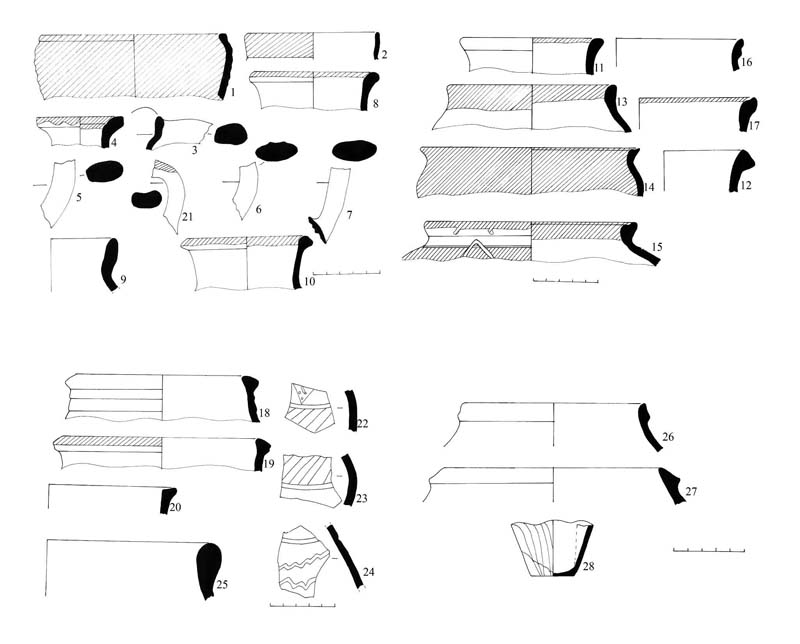
Plate 3: Excavation 3, finds from the debris in Room 1.
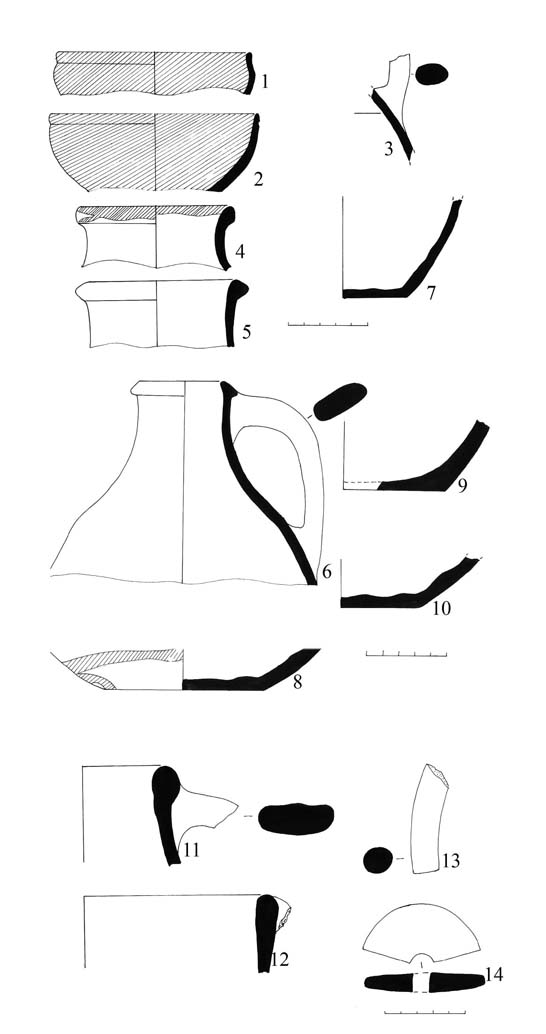
Plate 4: Excavation 3, finds from the debris in Room 2.
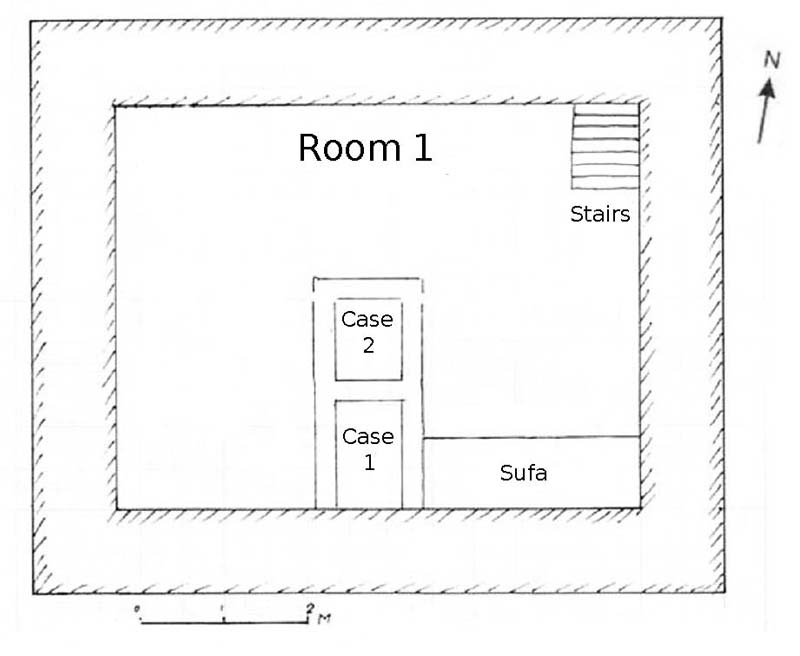
Plate 5: Excavation 2, Room 1, ground plan.
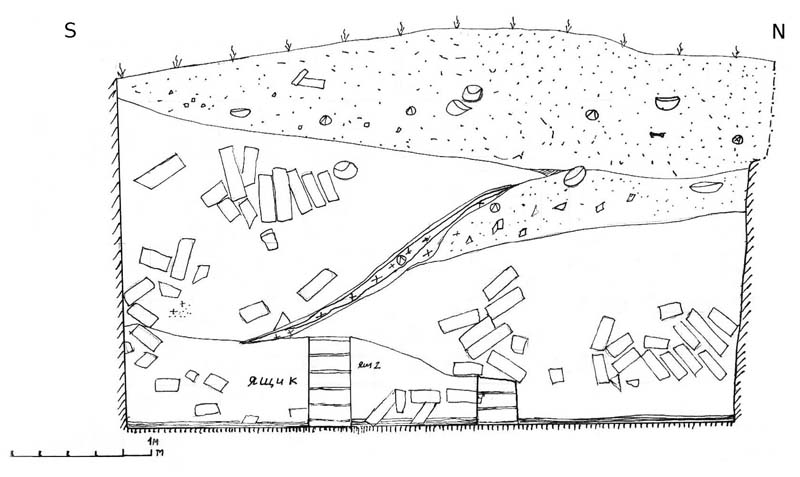
Plate 6: Excavation 2, cross-section through Room 1, 3.80 m from the eastern wall.
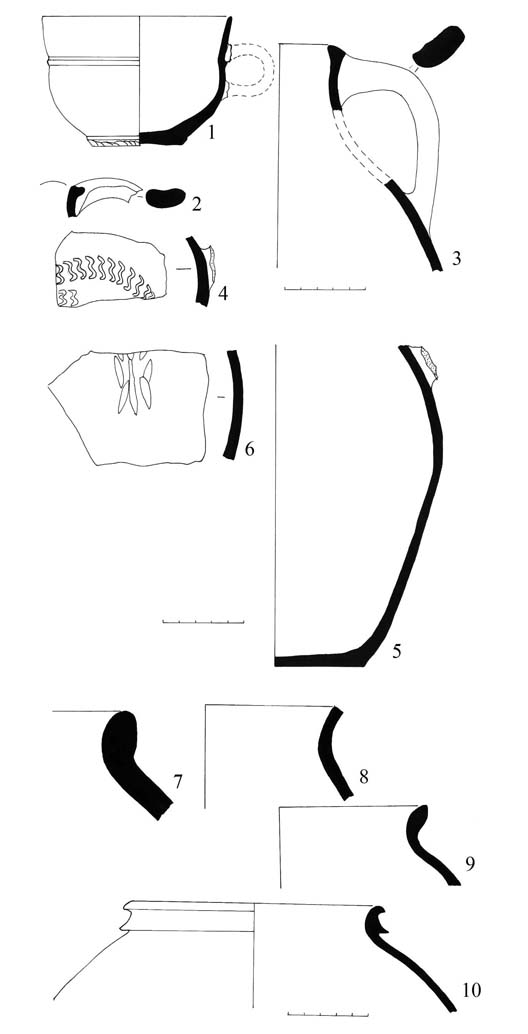
Plate 7: Excavation 2, finds from the floor of Room 1.
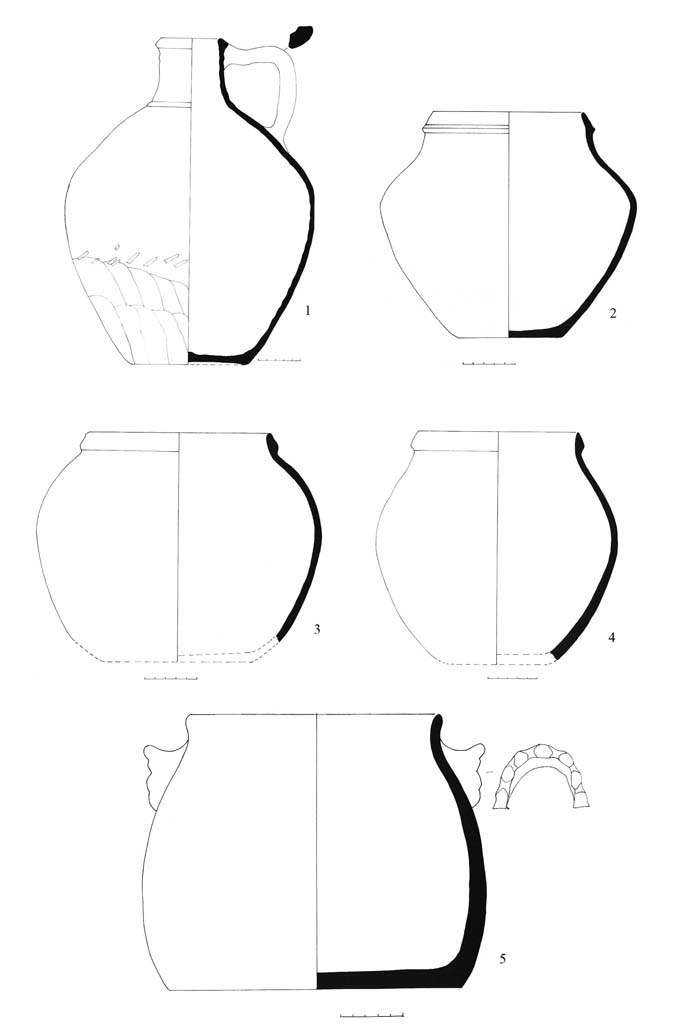
Plate 8: Excavation 2, finds from case 1.
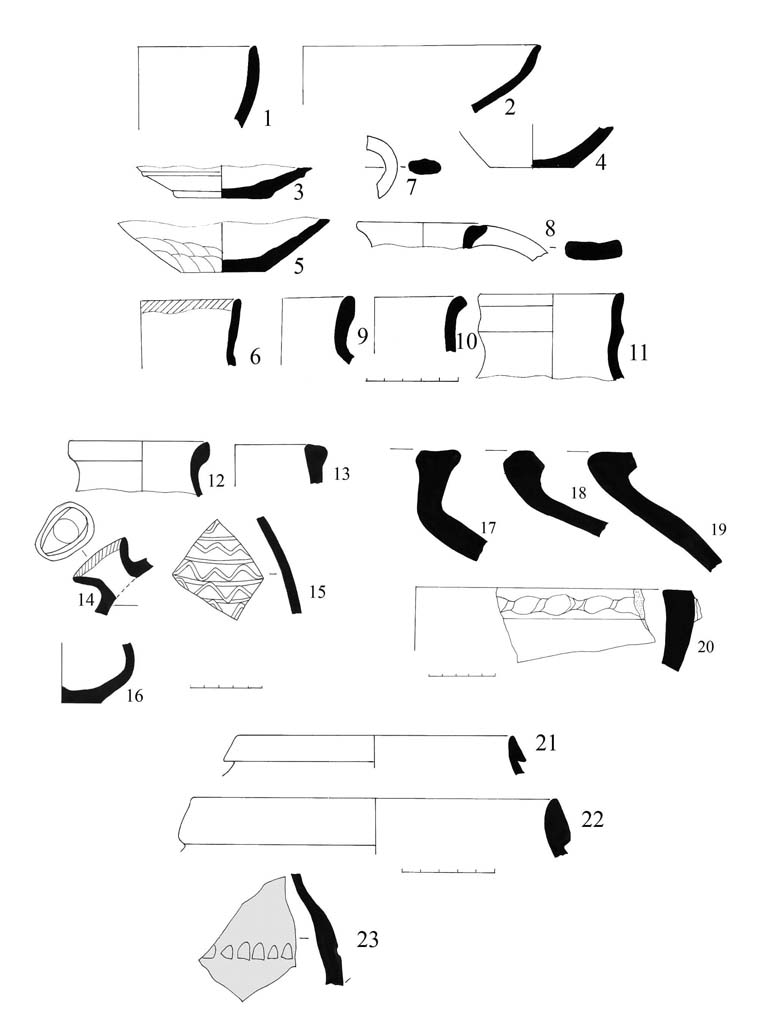
Plate 9: Excavation 2, finds from the debris in Room 1.

Plate 10: Excavation 2, ground plan.
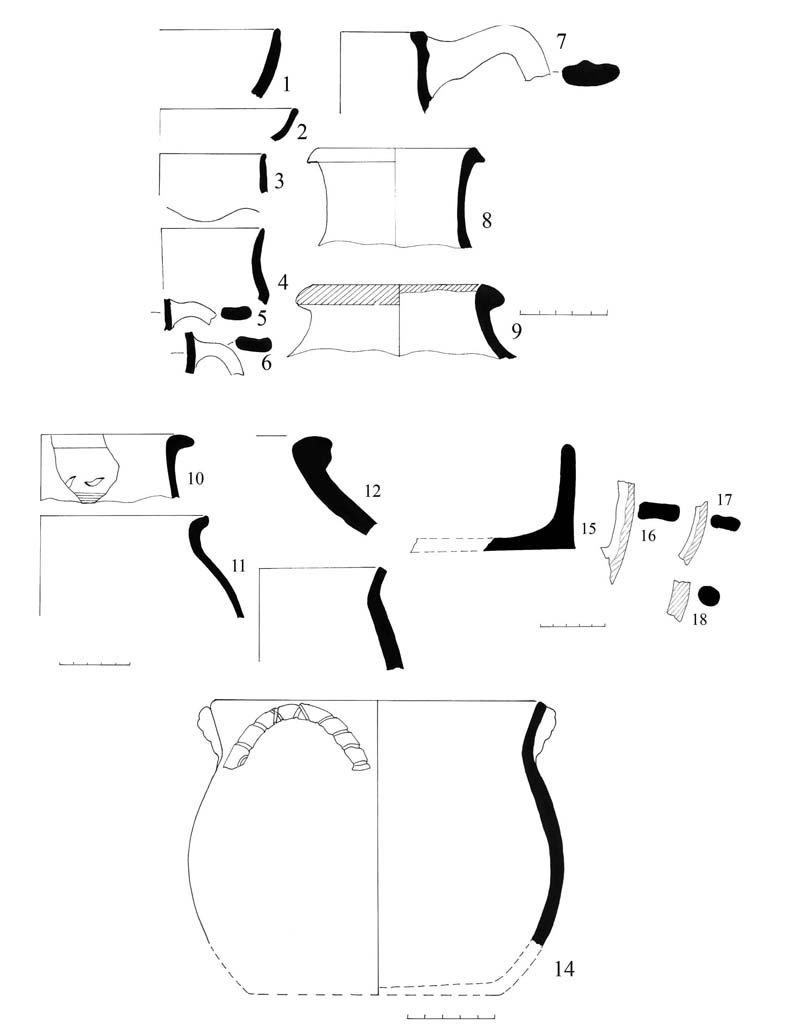
Plate 11: Excavation 2, finds from the street surface.
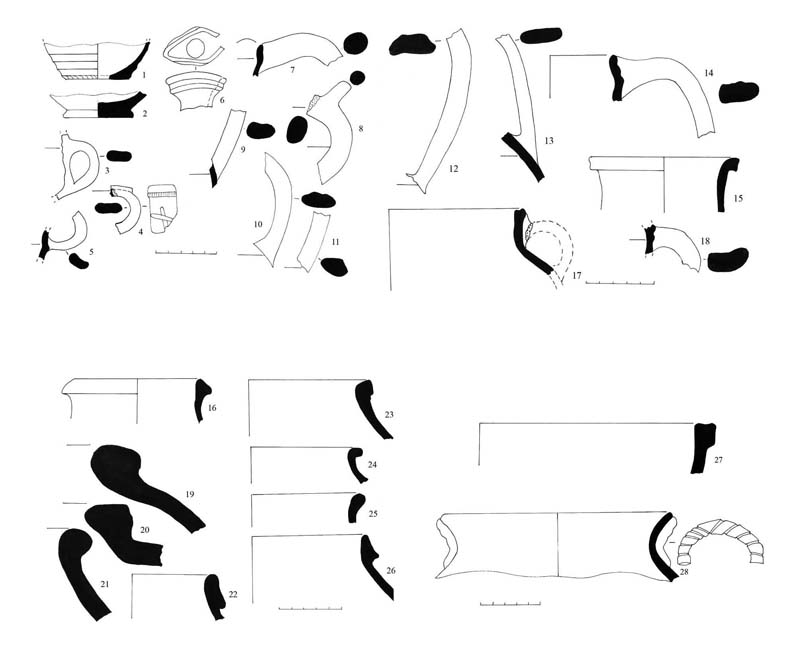
Plate 12: Excavation 2, finds from the 1st stratum under the street surface.
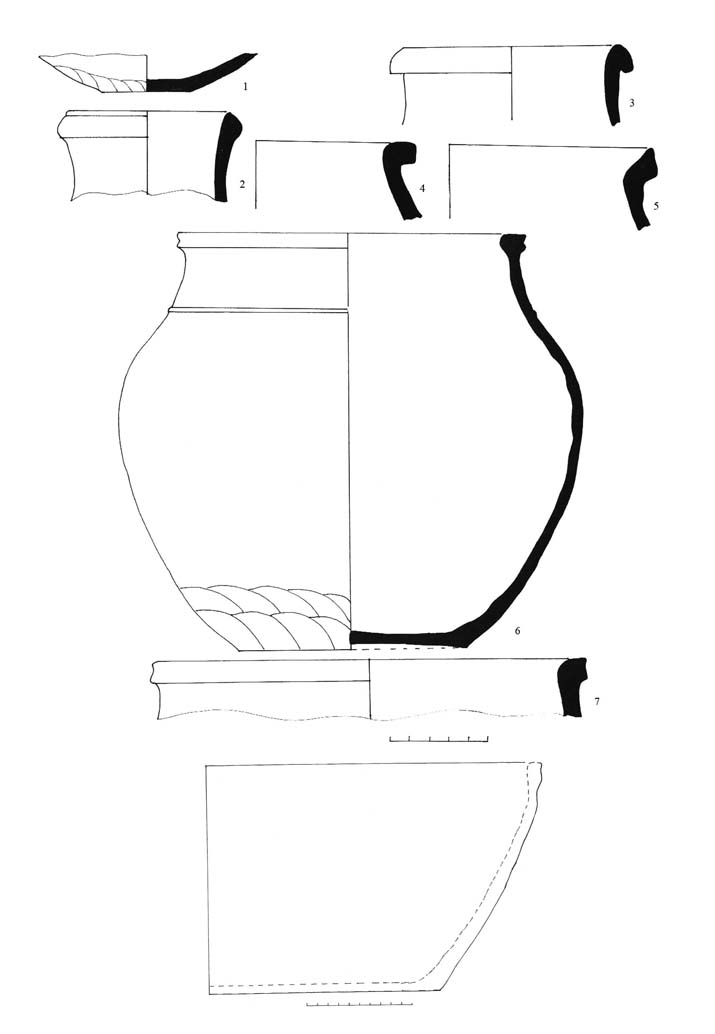
Plate 13: Excavation 2, finds from the pit.
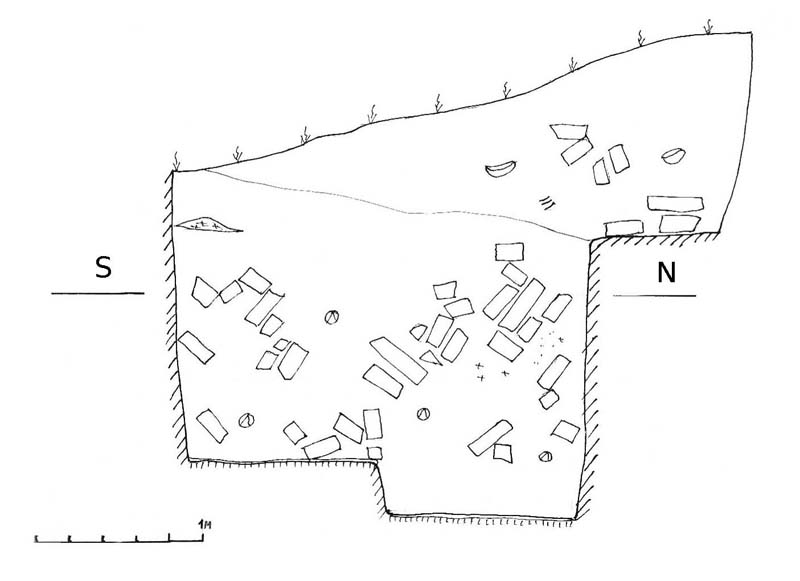
Plate 14: Excavation 2, Room 2, cross-section.
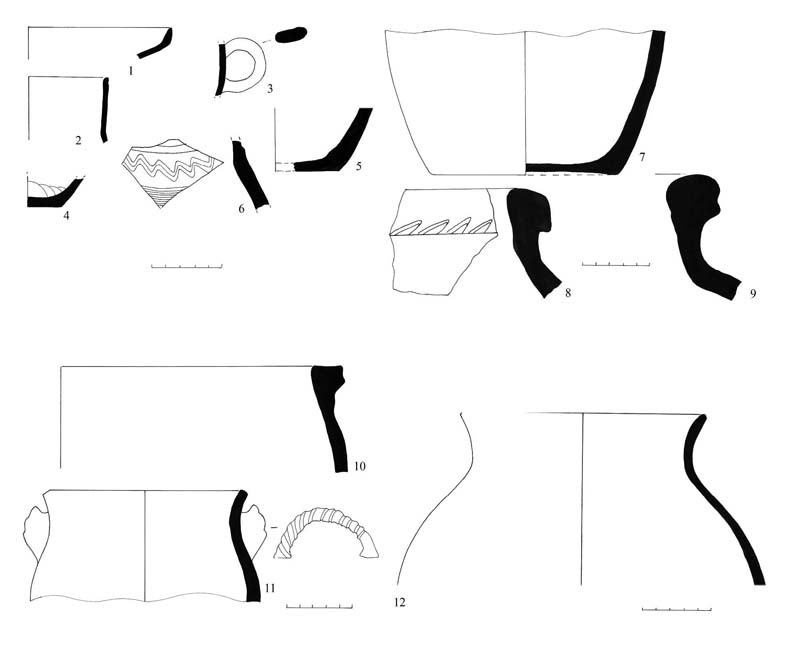
Plate 15: Excavation 2, finds from the floor of Room 2.
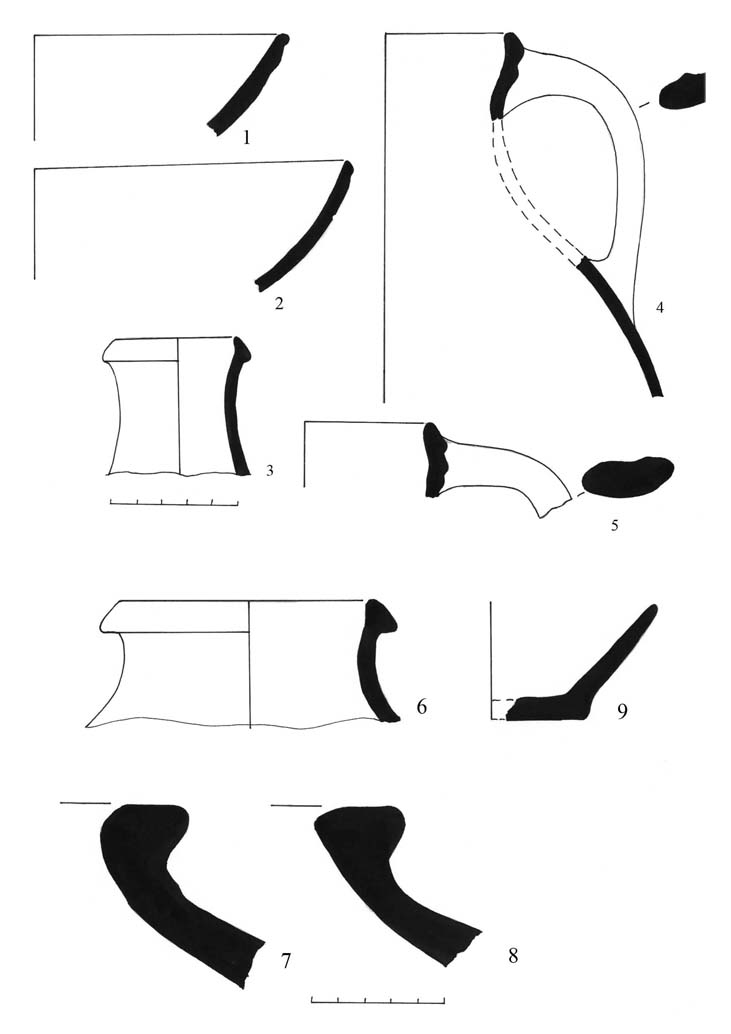
Plate 16: Excavation 2, Room 2, finds above the sufa.
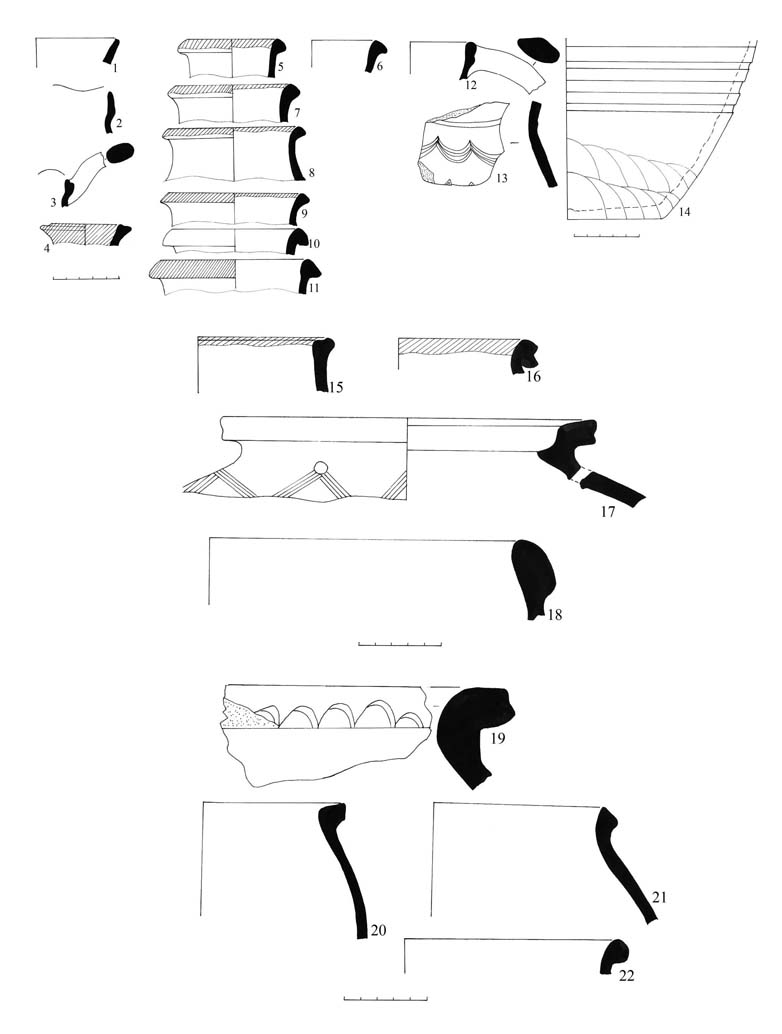
Plate 17: Excavation 2, Room 2, finds from the debris.
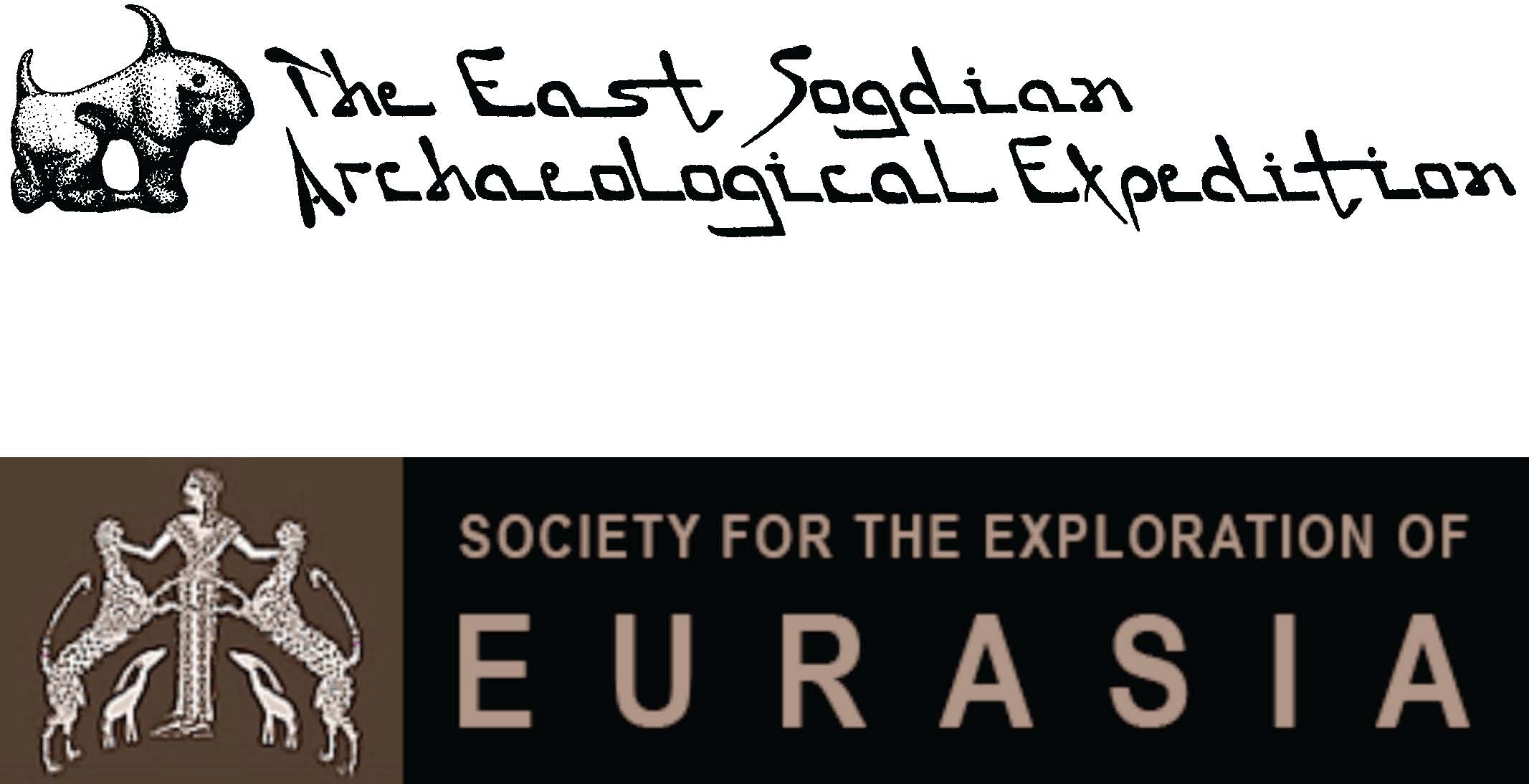
Archaeological investigations at the site of Sanjar Shah
(Panjikent District, Northern Tajikistan August – September 2012
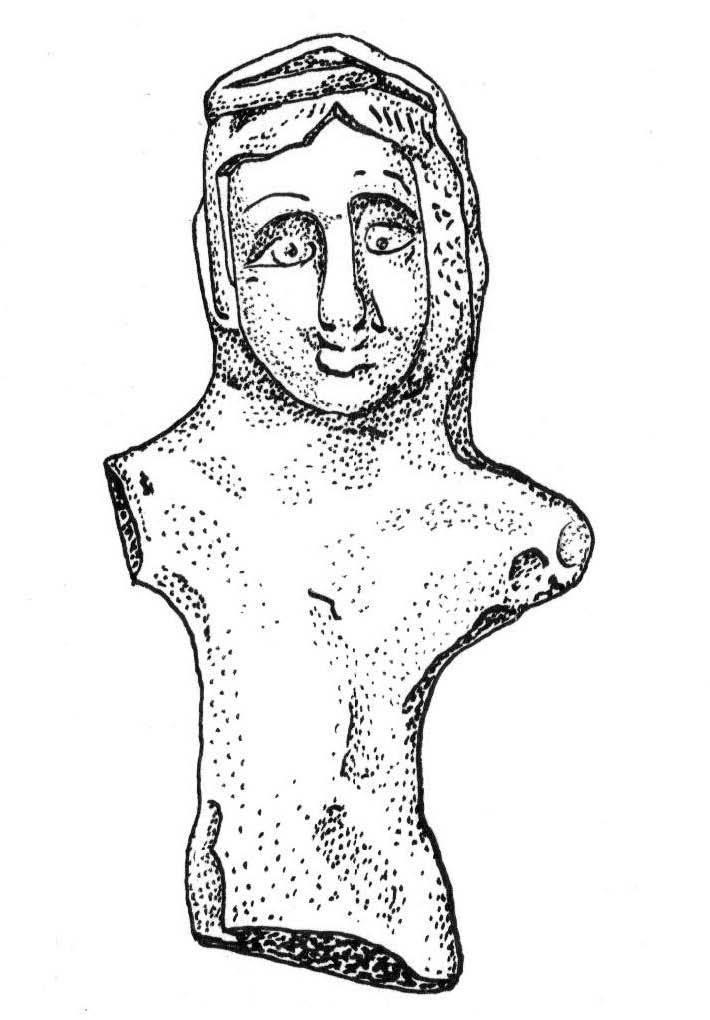
1. Excavations of the distinctive mound in the south-eastern sector of the plateau, covering the total area of 271 square metres.
2. Photo-documentation of the neighbouring site of Qutlugh-tepa.
3. Surveys of the lower reaches of the River Maghian Darya.
4. Full topographic survey of the Sanjar Shah plateau (previously several surveys of the sectors under investigation were made).
5. Creating a three-dimensional model of the tower in the north-west corner of the plateau.
1. EXCAVATIONS
During the last campaign the investigations were conducted in the eastern sector of the Sanjar Shah plateau (Plate 1). The area covered by the investigations is referred to as Excavation 2 as opposed to Excavation 1 which focused on the round tower (köshk) and the adjoining area in the north-western sector of the plateau. The excavations have fully uncovered rooms 4 and 6, partially – rooms 3, 5, and an entrance to room 7 (Plate 2). Also, a large area measuring ca. 150 m2 and void of any building remains was uncovered to the east of all rooms, and identified as a courtyard.
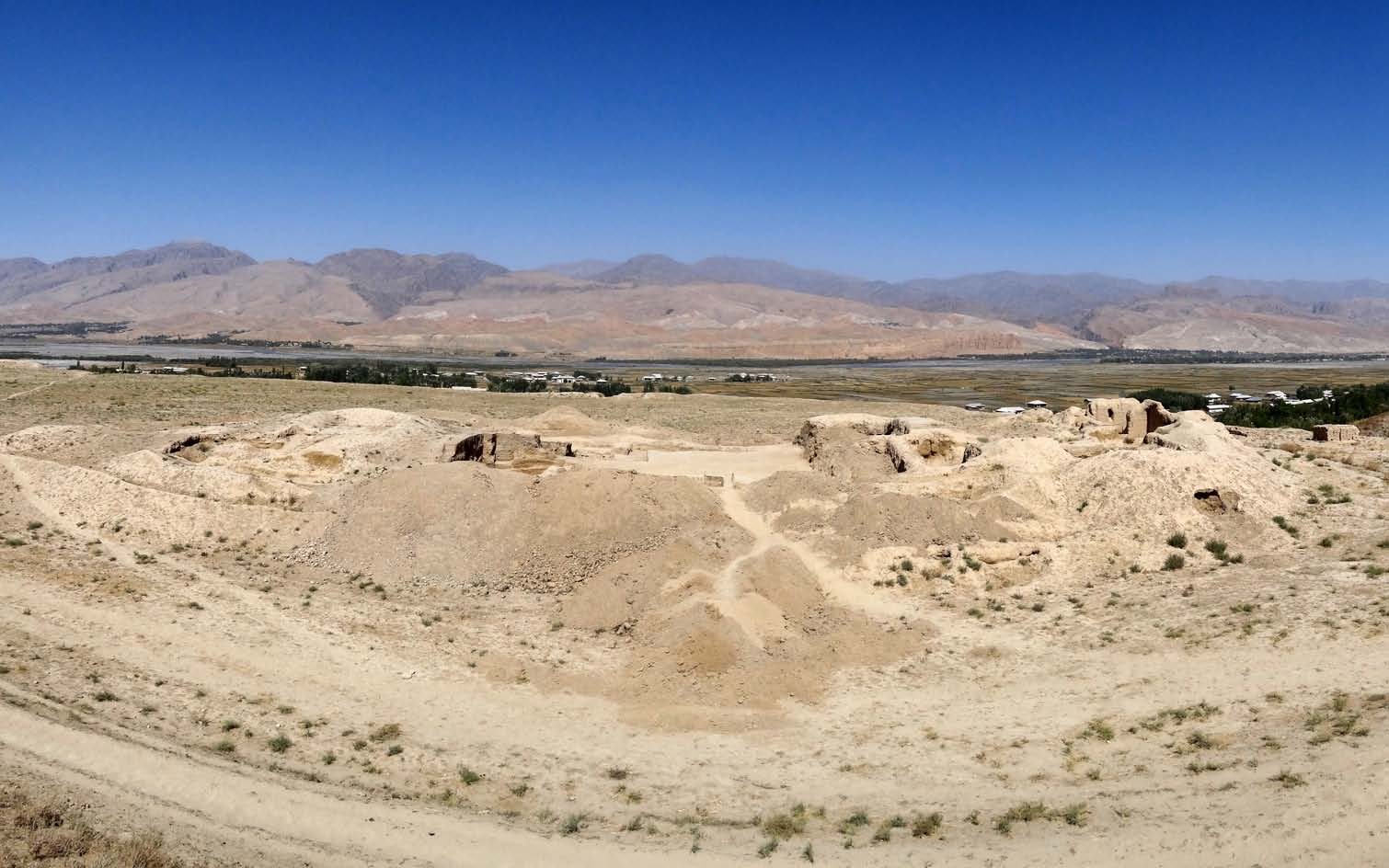
Rectangular in shape and elongated from north to south, this room measures 4.5×6.45 m.
The north wall 1.8 thick stands 1.95 m high from the floor level. It is built with adobe blocks, the top face is poorly preserved and the eastern part is most damaged. The wall
The east wall 1.1 m thick stands 2.1 m high in the south end and 1.3 m in the north end.
It is built with alternating layers of rammed clay and mudbricks 50×25×10 cm, 48×24×11 cm and 52-53×27×11-12 cm.
The south wall, 1.9-2 m high, is built using the same technique and interlocked with the east wall.
The west wall, 2.2 m high, is also built with alternating layers of rammed clay and two or three rows of mudbrick.
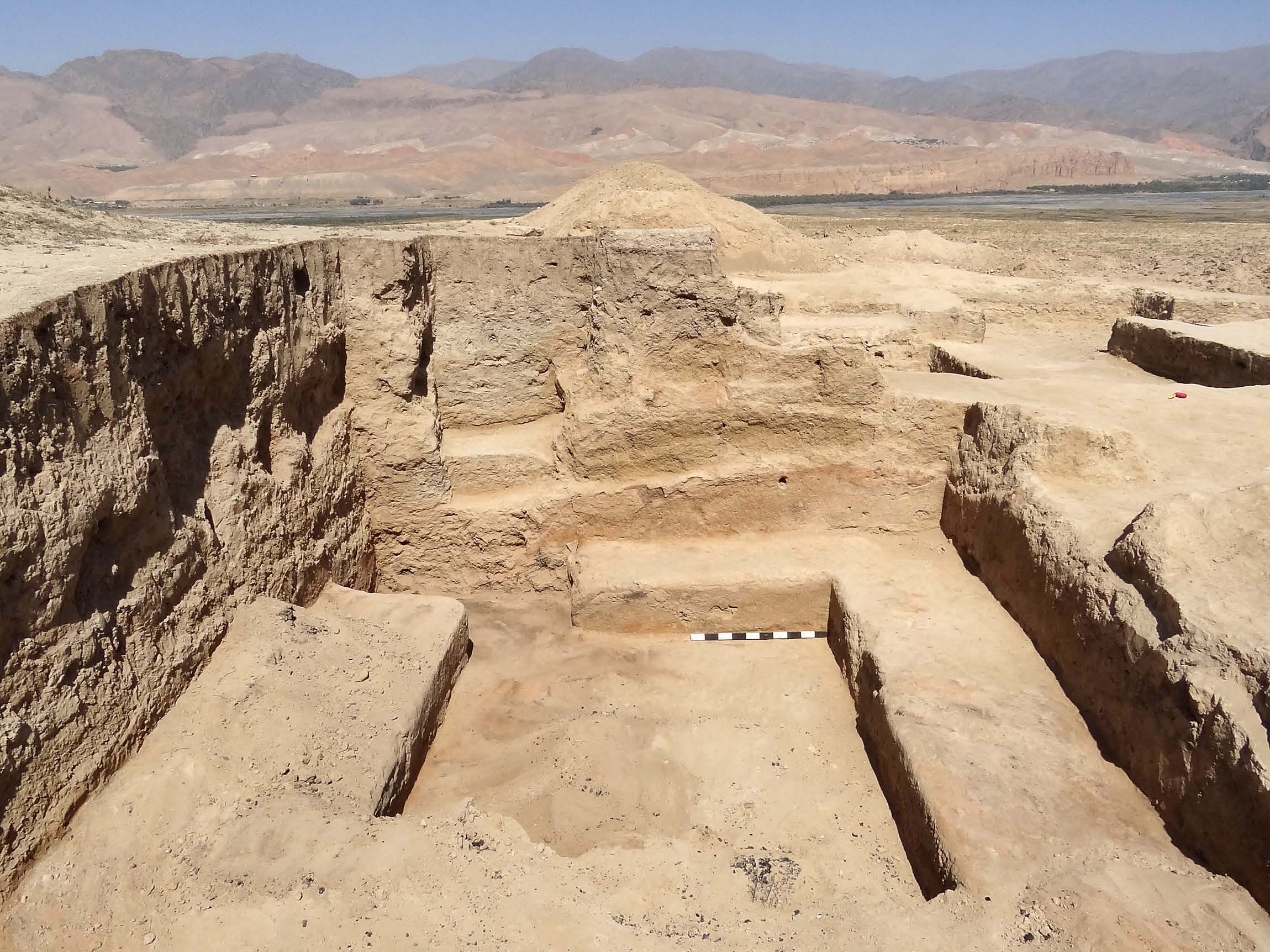
All walls are covered with two coats of plaster, one of them 2.5-3 cm thick, intended to level the wall surface, the other 1-1.5 cm thick and consisting of clay mixed with straw. The plaster shows traces of the builders' fingers in the form of long notches.
The coating has been burnt by the fire and acquired colour red. It is calcined by the heat 4-5 cm deep at some places.
In the north-west corner of the room there is a passage leading to Room 3, 1.2 m wide.
Along all walls there are benches (sufas) 48-50 cm high (except the northern wall where the sufa is 80 cm high) and 1 m wide. The sufas are made of bricks 54×27×10-11 cm and covered with plaster 1.5-2 cm thick.
On the floor were found more than ten fragments of burnt wooden beams ca. 20 cm in diameter, and a burnt panel with traces of carving, initially 40-60 cm wide. This context has been conserved and is awaiting the restorer.
List of finds, lower (earlier) floor:
– fragment of the discoidal base of a cupped beaker (fig. 16:1);
– base of a bowl with traces of a thread by the bottom (fig. 16:2);
– six fragments of different mugs, two of them with loop-like handles,
another two with traces of fingers on the wall (fig. 16:3-8);
– fragment of the rim of a jug with a handle (fig. 17:1);
– five fragments of jugs, one of them painted with red engobe (fig. 17:2-6);
– fragment of a water-carrying pitcher with a handle (fig. 17:7);
– three fragments of the base of a vessel (fig. 17:8-10);
– five fragments of wide-necked vessels (рис 18:1-5);
– rims of two large pots (fig. 18:6,7)
– fragment of a cooking pot (fig. 19:1);
– collars of two moulded pots, one of them with cemicircular handles (fig. 19:2);
– collar of a moulded pot, smoked outside (fig. 19:6);
– tiny pot with a broken handle (fig. 19:5);
– fragment of the stand of a lamp or an incense burner with geometric pattern (fig. 19:7);
– moulded lantern, almost complete, painted in red (fig. 19:8);
– fragment of the handle of a water-carrying jar, painter in red (fig. 20:1);
– lamp made of half-baked clay (fig. 20:2);
– fragment of a hearth stand with a cross-shaped decoration (fig. 20:3);
– stand of a vessel with a through hole, painted with dark blue glaze (fig. 20:4).
The floor and the sufa puddle are strongly burnt all over.
After the fire life in Room 3 continued. The floor was covered with earth, clay and pieces of brick, and another (upper) floor was formed. Between the two floors sits a layer of ashes 12-18 cm thick.
List of finds, enclosure between the floors:
– well-preserved tiny cup (fig. 12:1);
– seven fragments of mugs, three of them with loop-like handles (fig. 12:2-7,9);
– fragment of an oinochoe jar with a handle (fig. 12:8);
– wall of a narrow-necked table jar painted with beige engobe (fig. 13:1);
– four fragments of a water-carrying jar with a handle (fig. 13:2-5);
– fragment of a butter churn with a through hole under the handle (fig. 13:7);
– nine fragments of the base of a vessel (fig. 13:6,8,9; fig. 14:1-6);
– four fragments of jars with rippled decoration (fig. 14:7-8; fig. 15:1-2);
– collar of a thin-walled vessel (fig. 15:3);
– collar of a wide-necked thick-walled vessel with red engobe around the rim (fig. 15:4);
– two fragments of a small pot (khumcha) (fig. 15:5,7);
– collars of two large pots (fig. 15:6,9);
– fragment of a moulded pot, smoked outside (fig. 15:8).
The second period of life in Room 3 is represented by the west and the north walls, standing 50-80 cm high from the later floor level, both poorly preserved.
The entrance to the room is situated above the entrance of the first period, 1 m wide, with traces of a wooden threshold.
A hearth was found in a niche made in the western wall, 23 cm in diameter and full of ashes and coal.
List of finds, upper (later) floor:
– fragments of a bowl with red engobe around the rim (fig. 9:1);
– three fragments of mugs, one with a handle, another with a picture of a human head (fig. 9:2-4);
– fragment of an oinochoe jar with a handle (fig. 9:6);
– three fragments of a water-carrying jar (fig. 9:7,8,9);
– two bottoms of water-carrying jars (fig. 9:10,11);
– two fragments of the wall of a water-carrying jar with rippled decoration (fig. 10:1,2);
– fragment of the collar of a pot (fig. 9:3);
– two fragments of the collar of a wide-necked vessel with red engobe (fig. 10:4,5);
– two fragments of a wide-necked vessel with loop-like handle (fig. 10:6);
– fragment of a wide-necked vessel with a broken handle (fig. 10:7);
– nozzle of a wide-necked vessel (fig. 10:8);
– pot fragment (fig. 10:9);
– fragment of a bowl with notches under the rim (fig. 11:1);
– fragment of a sieving vessel (fig. 11:2);
– fragment of wheel-made pot, burnt outside (fig. 11:3);
– three fragments of a moulded mug with curved edge, one of them painted red (fig. 11:6-4);
– fragment of a moulded jar (fig. 11:7);
– base of a tiny jar that was used as a lantern, with traces of soot (fig. 11:8);
– piece of iron with a rounded edge (fig. 11:9).
The space between the upper floor up to the daylight surface was filled with refuse, construction debris, ashes and broken bricks.
List of finds, enclosure between the upper floor and the daylight surface:
– four fragments of mugs, one of them with offprints of pomegranate on the body (fig. 5:1,2,3,4);
– three collars of water-carrying jars (fig. 5:5,6,7);
– handle of a water-carrying jar (fig. 5:8);
– three fragments of vessels with wavy patterns and red engobe (fig. 5:9; fig. 6:1,2);
– bases of three vessels (fig. 6:3,4,5);
– rim of a wide-necked thin-walled vessel (fig. 6:6);
– three rims of a wide-necked vessel, one of them with a through hole below the handle (fig. 7:1,2,3)
– fragment of a tiny vessel (fig. 7:4);
– bottom of a wide-necked vessel with notches under the broken handle (fig. 7:5);
– five fragments of moulded pots with traces of soot (fig. 7:7-8; fig. 8:1-3);
– bottom of a moulded vessel (fig. 8:4);
– rim and nozzle of a wide-necked moulded vessel (fig. 8:5);
– two fragments of the rim of a moulded vessel (fig. 8:6,7),
– fragment of a small pot (khumcha) (рис 8:8).
Room 4
This room is situated to the west from Room 6 and to the south from Room 2. It is rectangular and extends along the axis east-west. The measurements are 11.8 × 1.8-2.10 m.
The south wall 1 m thick stands up to 2.4 m high. It is built of rammed clay alternating with two rows of mudbrick 50×25×10 and 48×24×9-10 см. The wall is well-preserved, its face is covered with three layers of plaster 3.5-4 cm in depth.
The north wall has the same measurements and specifications.
The east wall is 1.8 -2.4 m high, it is 1.5 m thick and stands on a stone foundation.
The face is poorly preserved, no traces of plastering.
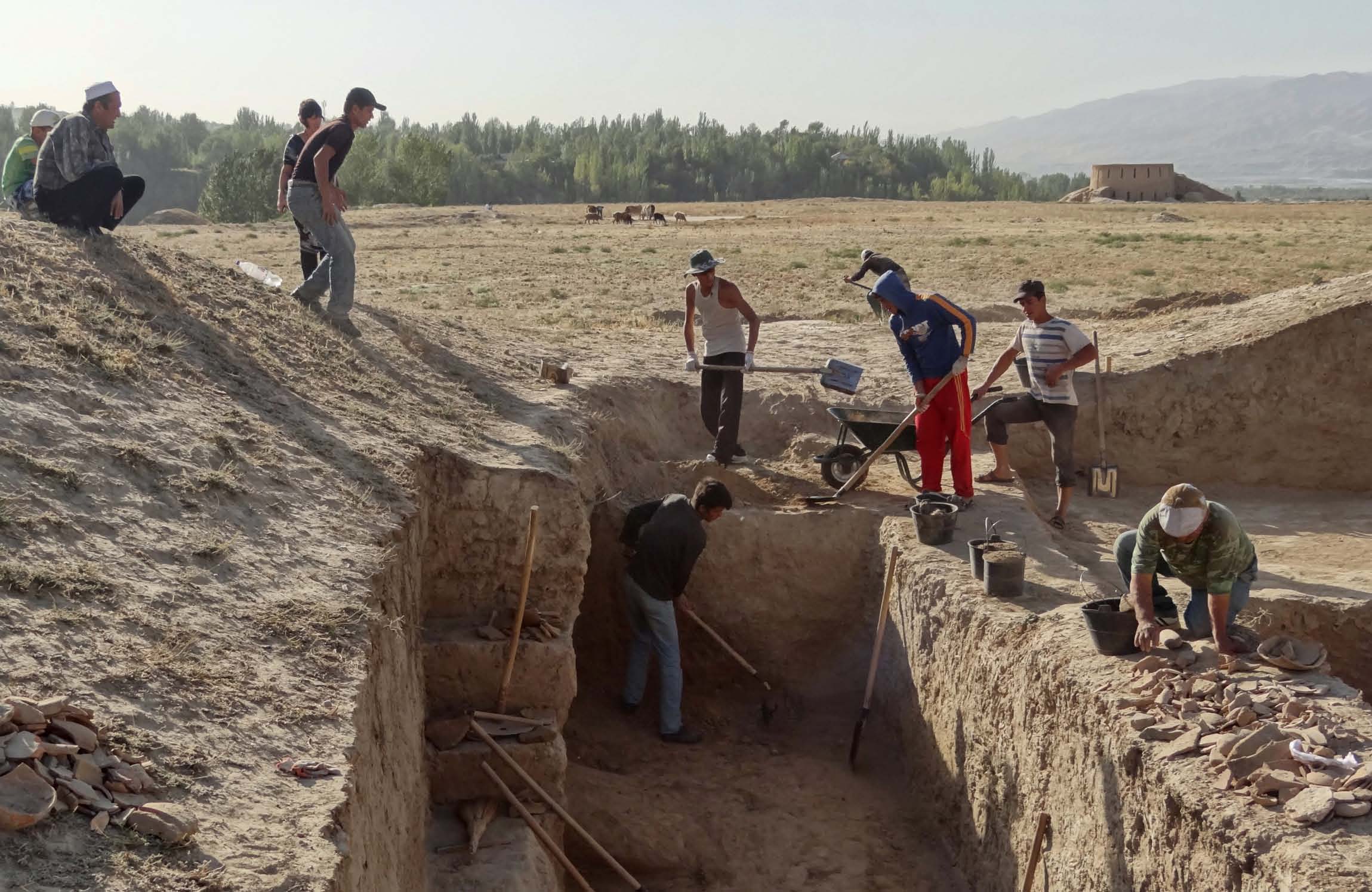
In the north-west corner of the room there is a smoked spot on the floor, with ashes and bones of a small animal.
In the eastern part of the room there is a sufa 2.1 х 0.7 х 0.20 m, built of mudbrick 48 х 26 х 11 cm.
The entrance to the room was in the northern wall, 0.90 m wide and 1.2 m high. The threshold is at 0.2 m from the floor level.
The room was filled with fragments of adobe blocks, broken mudbricks, stones and loess.
Along the south wall stands another wall 0.6-0.7 m thick, built with mudbrick 50 х 25 х 10 cm. The assumption is that it was built to reinforce the original one, or to repair it after an earthquake.
Two mudbrick stands 70 х 70 cm are attached to this additional wall at 6.10 m and
8.40 m to the west from the eastern wall.
List of finds (enclosure of Room 4):
– fragment of a bowl with pink engobe (fig. 21:1);
– bottom of a mug (fig. 21:2);
– collar of a mug (fig. 21:3);
– rim of a table jar with a handle (fig. 21:5);
– oinochoe table jar with a handle, almost complete (fig. 21:4);
– fragment of a jar with wavy ornament (fig. 21:6);
– bottoms of two vessels (fig. 21:8,9);
– rim of a thin-walled pot (fig. 21:7);
– thin-walled pot with wavy ornament and red engobe (fig. 21:10);
– two fragments of a wide-necked vessel with two handles, painted with red engobe (fig. 22:1,2);
– rim of a wide-necked vessel (fig. 22:3);
– rim of a wide-necked thick-walled vessel with two handles, painted with dark red engobe and ornamented with stamped cross inside a circle (fig. 22:4);
– fragments of three large pots (fig. 23:1,2,3);
– rim of a small pot (khumcha) painted with brown drab engobe (fig. 23:4);
– fragment of a basin (tagora) (fig. 23:5);
– two fragments of a cauldron, sooty outside (fig. 23:6,7);
– fragments of three moulded pots (fig. 24:1,2,3);
– bottom of a moulded pot with an admixture of quartz, sooty outside (fig. 24:4);
– three wide-necked vessels with handles (chayjush), almost complete (fig. 25:1,2,3);
– rim of a moulded bowl with an admixture of schist, painted with faded pink engobe (fig. 24:5);
– moulded mug with wavy ornament, painted in red on both sides (fig. 26:1).
Room 5
This room measures 7.5 × 1.4 m and extends from east to west.
The south wall stands up to 1.20 m, built with rammed clay blocks and mudbrick. At some places there are traces of plastering 2-2.5 cm thick.
The western side wall stands 1.20 m high and is built in the same way. The wall is coated with plaster 3-3.5 cm thick.
The north wall has the same height, 1 m wide and 6 m long. The plastering is poorly preserved.
The western wall is 1.6 m high and 1 m wide, similarly built. Its face is worst preserved compared to other walls, having big cracks and washouts among the blocks of
rammed clay.
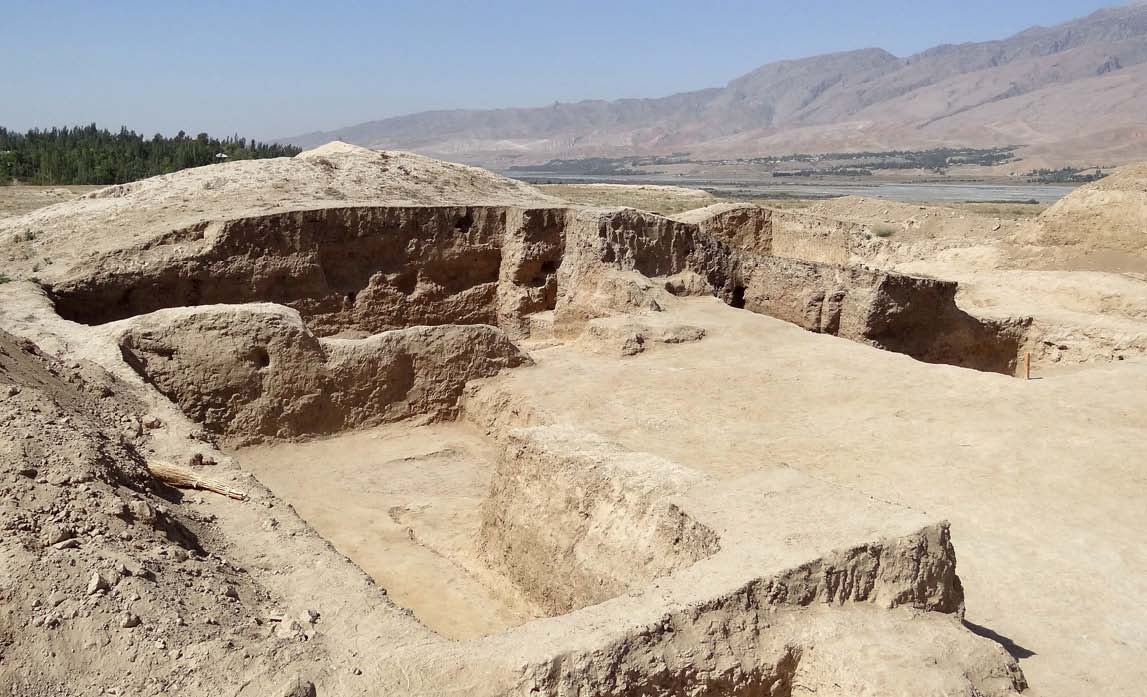
The entrance to Room 5 is in the north-west corner, it is 2.40 m wide and has a staircase.
The floor is smoked, with lots of ashes and pieces of coal at all places.
Room 6
This room adjoins Room 4 from the east. It measures 5.5 х 2.55 m, being extended from north to south.
The west wall stands 2 m high in the south end and 1.25 m in the north end. It is built with alternating blocks of rammed clay and mudbrick and coated with plaster.
The north wall is built in the same way, standing 1.25 m high.
The east wall is all built of mudbrick 48-49 х 24 х 9 cm, standing 1 m high. All plastering is washed away.
The south wall stands 1.65-1.62 m high, it is 5.7 m long and 1.8 m wide. The face is covered with four coats of plaster 4-4.5 cm thick.
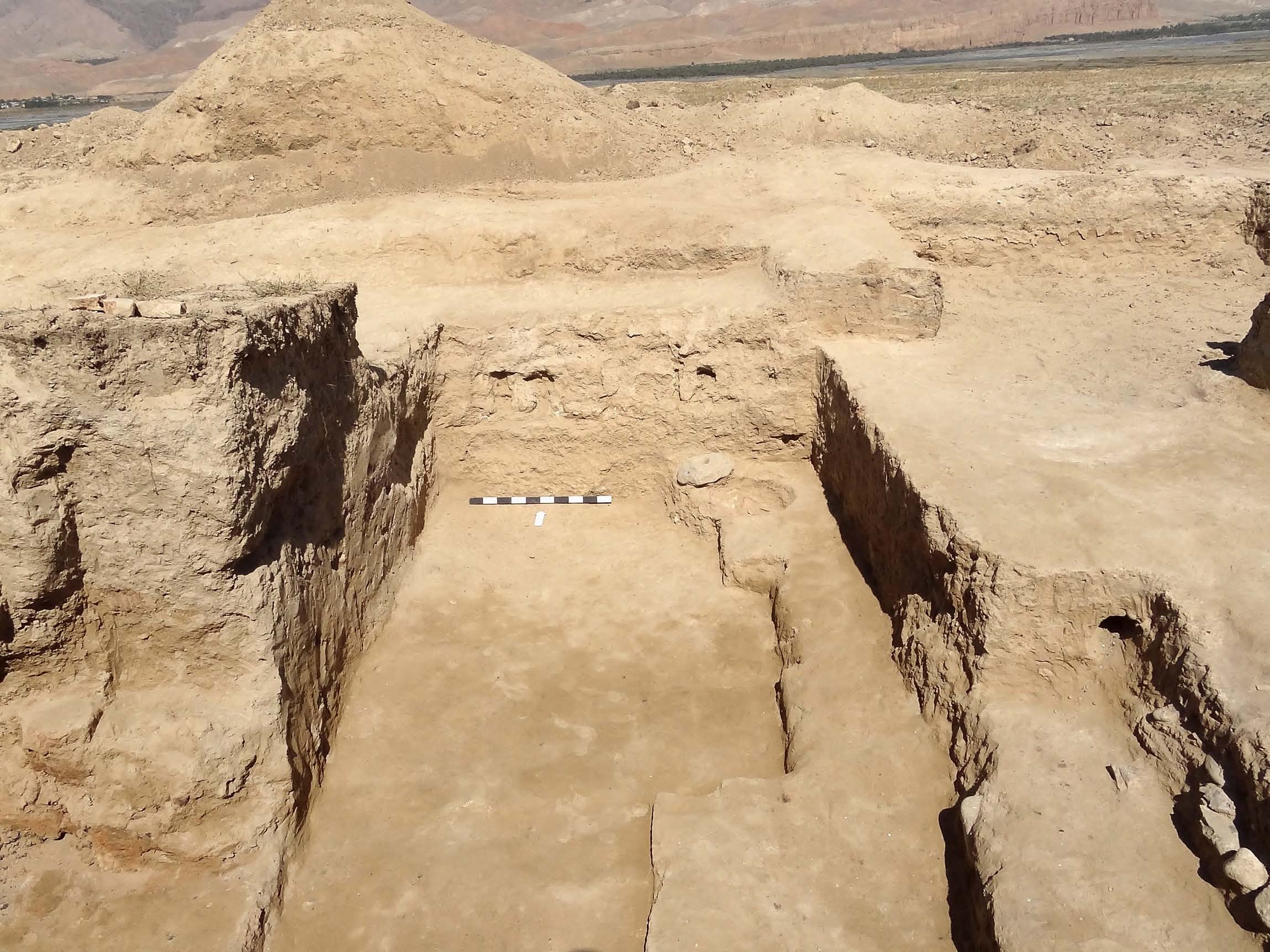
This room has two floors, the upper one 20 cm above the lower one. The layer separating the floors contained small pottery sherds, animal bones and ashes.
On the upper floor, in the north-east part of the room was found a grain bruiser made of granite. Close to it was found a tandoor made of a large pot (khum) turned upside down. Another khum converted to a tandoor was found in the opposite corner. The same context included a spot of burnt clay with pieces of coal and ashes, suggesting that this room served as a kitchen.
On the lower floor, along the eastern wall stands a sufa 5 m long, 1 m wide and 20 cm tall. It is poorly preserved, so the size of the construction elements (mudbrick) cannot be established.
Another sufa 2.2 m long and 60 cm wide stands along the south wall. It is built of mudbrick 52-53 х 27 х 10 cm.
In the south-east corner of Room 6 there is a stairway leading eastwards, 2.4 m wide and 0.65 m high. Only two steps are preserved, made of cobblestobes combined with mudbrick.
Another feature related to the same passage is a burnt wooden threshold 2.40 m wide, made of a beam 17 х 17 cm.
Room 7
This room, situated to the west from Room 6, has not been fully excavated. The excavated parts are the entrance, the north and the south walls at the length of 2 m westwards.
The north wall is 2 m high and 1 m wide, the plastering is badly damaged.
The south wall of the same width and height is much better preserved, with all plastering in its place.
The entrance to Room 7, 1.3 m wide, was in the eastern wall.
This room contains traces of a big fire. The stratum related to the fire is ca. 0.60 m, it consists of burnt wood, gypsum, bricks and plaster.
Room 7 is connected with Room 3 by a passage in the north wall of Room 7.
List of finds (enclosure of Room 6):
– fragment of a bowl (fig. 27:1);
– two fragments of mugs with rounded bodies (fig. 27:2,3);
– two fragments of a water-carrying jar (fig. 27:5,8);
– two handles of a water-carrying jar (fig. 27:4,7);
– nozzle with the figure of a wild goat (рис 28:1);
– fragment of a thin-walled pot (fig. 28:2);
– four fragments of a wide-necked vessel, one of them with notches on the rim (fig. 28:3-6);
– wall of a vessel with a broken handle (fig. 29:1);
– two bottoms of jars, one of them with wavy pattern and painted with red engobe (fig. 29:2,3);
– fragment of a vessel with a hole under the rim. The shoulder is ornamented with parallel wavy lines (fig. 29:4);
– rim of a large pot (khum), ornamented with two rows of embossed triangles (fig. 30:1);
– wall of a large pot (khum) with square notches outside (fig. 30:2);
– fragment of a basin (tagora) (fig. 30:4);
– fragment of a pot (fig. 30:5);
– three vessel fragments with handles (fig. 30:3,6) (fig. 31:1);
– three collars of a moulded water-carrying jar (fig. 31:2-4);
– moulded mug with a handle, almost complete (fig. 31:5);
– moulded mug with engrailed orifice (fig. 32:1);
– bottom of a moulded cup (fig. 32:2);
– lantern with geometric pattern and notches (fig. 32:3).
Courtyard
The courtyard is situated between the excavation described above and the area excavated in 2003, totalling to 180 m2. Only the upper floor was uncovered at the area 13.6 х 11.3 m, showing traces of fire as ashes, pieces of coal, etc. 3-4 cm deep.
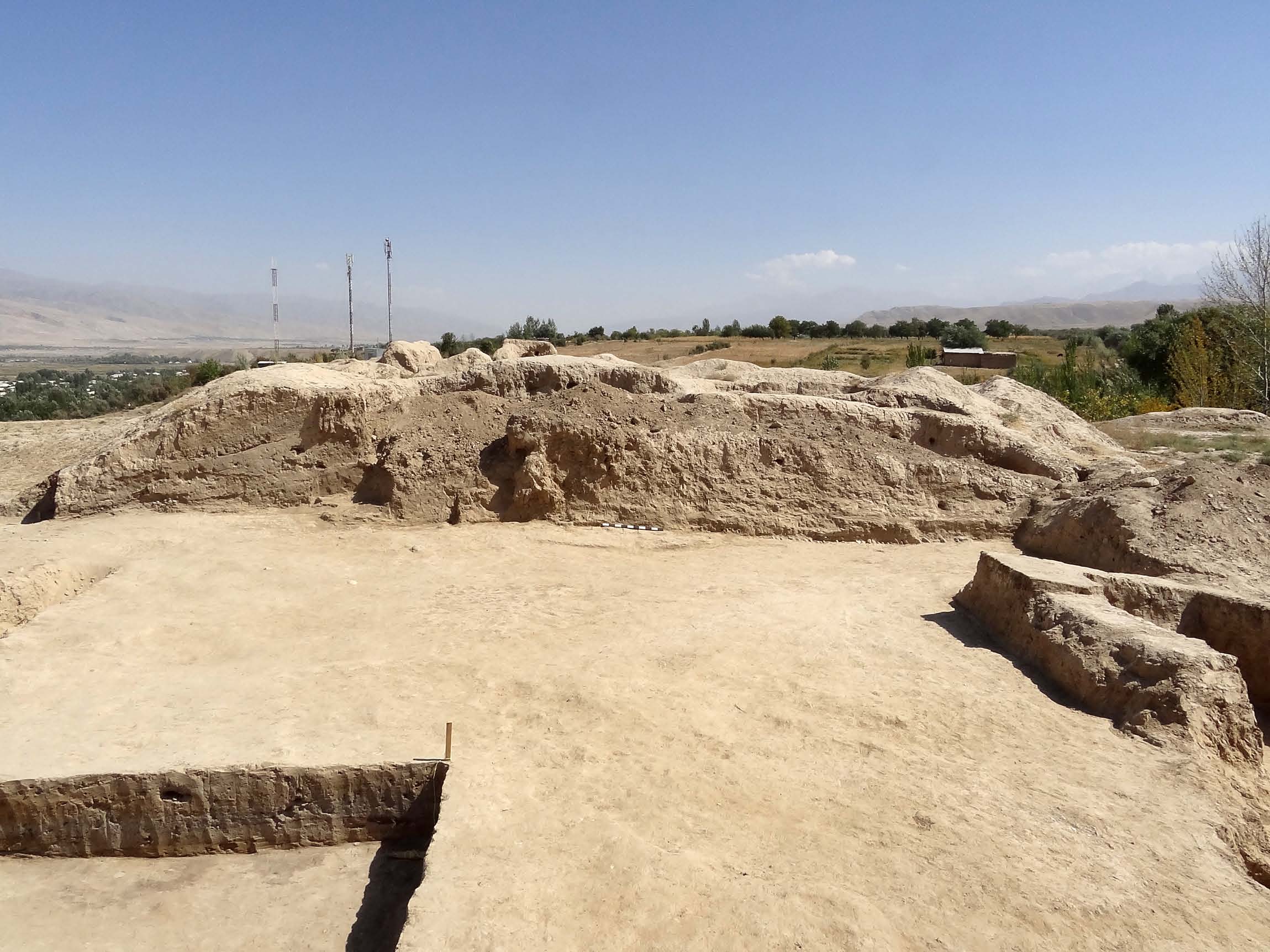
List of finds (upper floor of the yard):
– base of a bowl, cut off with a thread (fig. 33:1);
– handle of a table jar (fig. 33:2);
– fragment of a thin-walled vessel (рис 33:3);
– bottom of a vessel (fig. 33:4);
– collar of a wide-necked vessel (fig. 33:5);
– fragment of a wide-necked thin-walled vessel (fig. 33:6);
– two fragments of the rim of a large pot (khum) (fig. 33:7,8);
– necks of four cauldrons (fig. 33:9-12);
– rim of a moulded pot (fig. 33:13)
– wall of a moulded pot, smoked outside (fig. 33:14);
– fragment of a rattle (fig. 33:15).
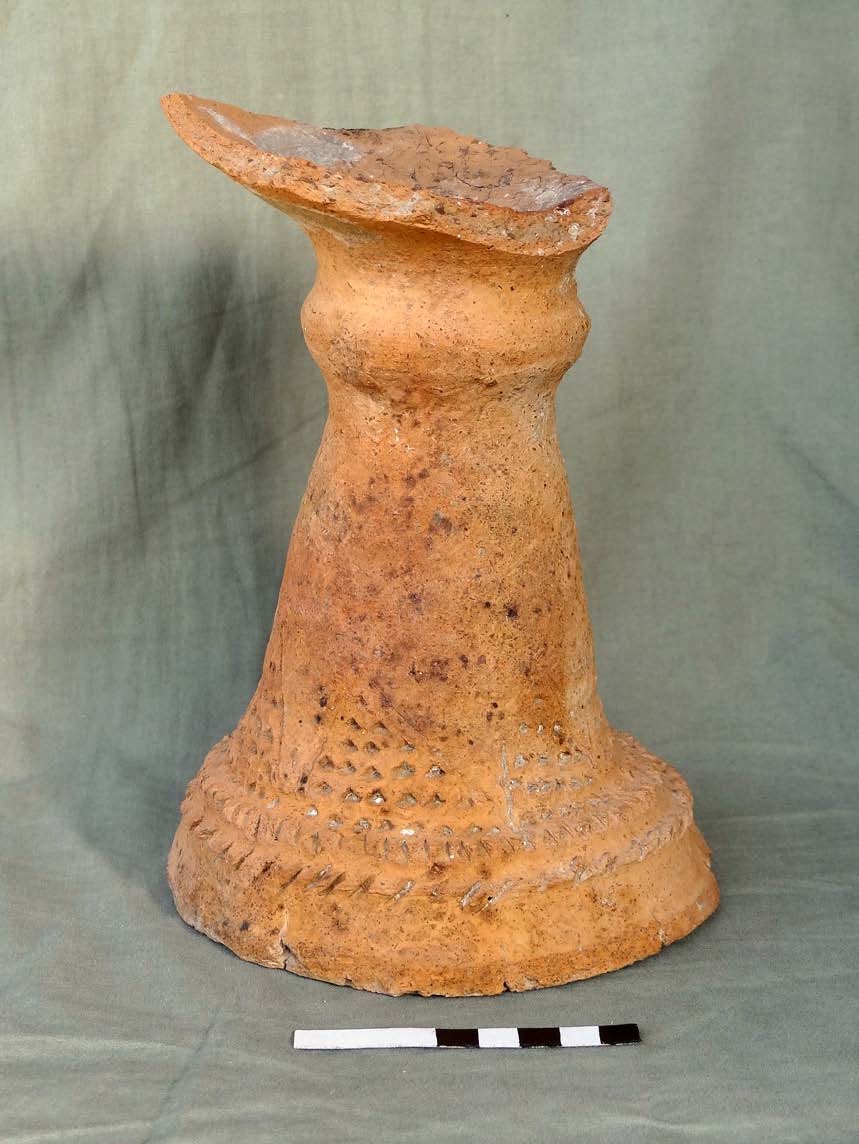
Well-preserved mijmar (fire stand), Room 4
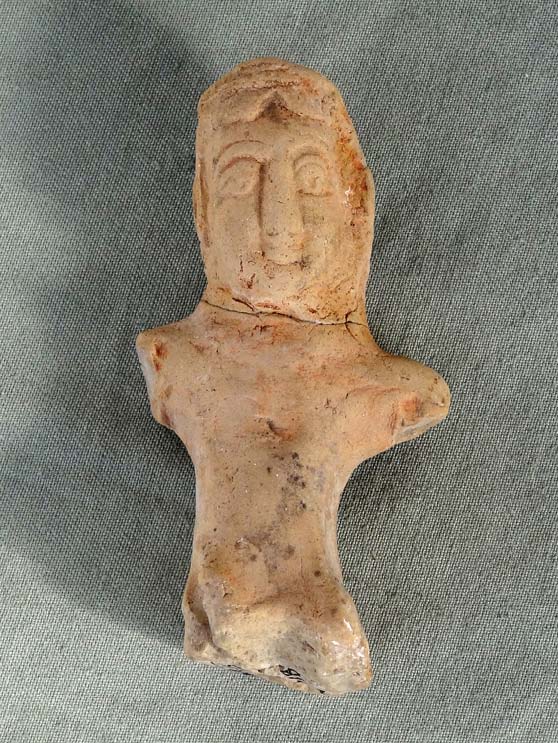
Terracota figurine of Anahita, Room 3
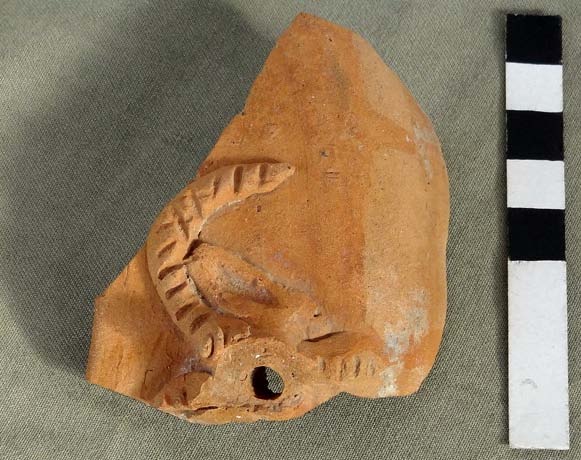
Fragment of an ornamented ceramic vessel, Room 4
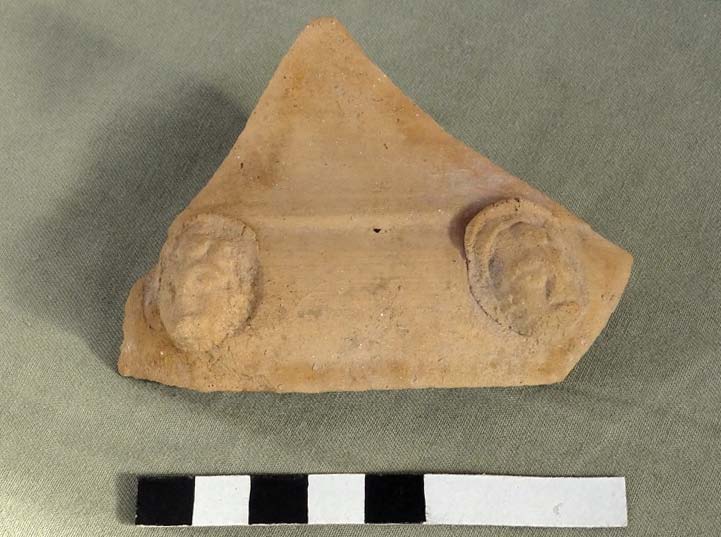
Pottery fragment featuring a deity to be identified (Warhuman?), Room 3
2. QUTLUGH-TEPA
So far, Sanjar Shah revealed no traces of an early mediaeval town proper, i. e. living quarters, streets, residential houses, etc. This makes one assume that it was residence of a feudal lord (dihqan) with the nobility and priests. The need arises to understand where were the lands controlled by this feudal lord, in order to treat Sanjar Shah as the capital of a county with defined borders, distinct from that of Panjikant or other Sogdian counties mentioned in the "Letters from the Mug Mountain".
Therefore we undertook a survey of the neighbouring territories, the result of which was mapping of the "County of Sanjar Shah", well-suited for agriculture and watered with the help of the sophisticated system of underground channels (kariz) and waterwheels (chighir).
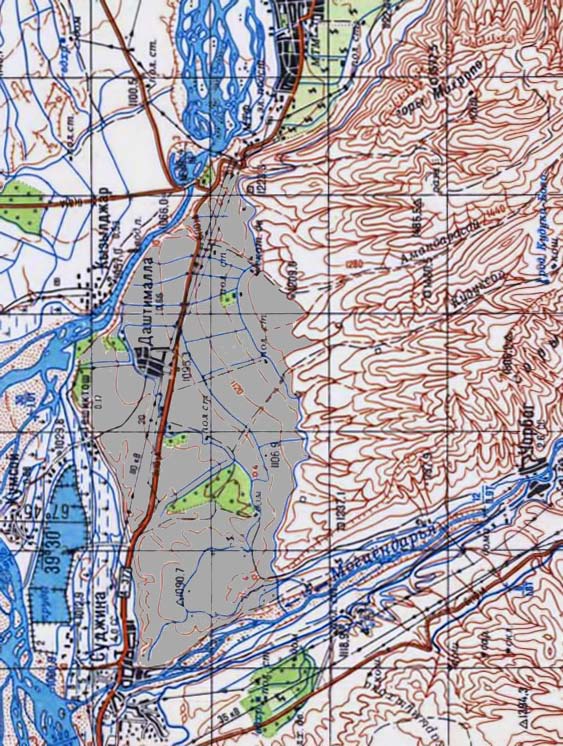
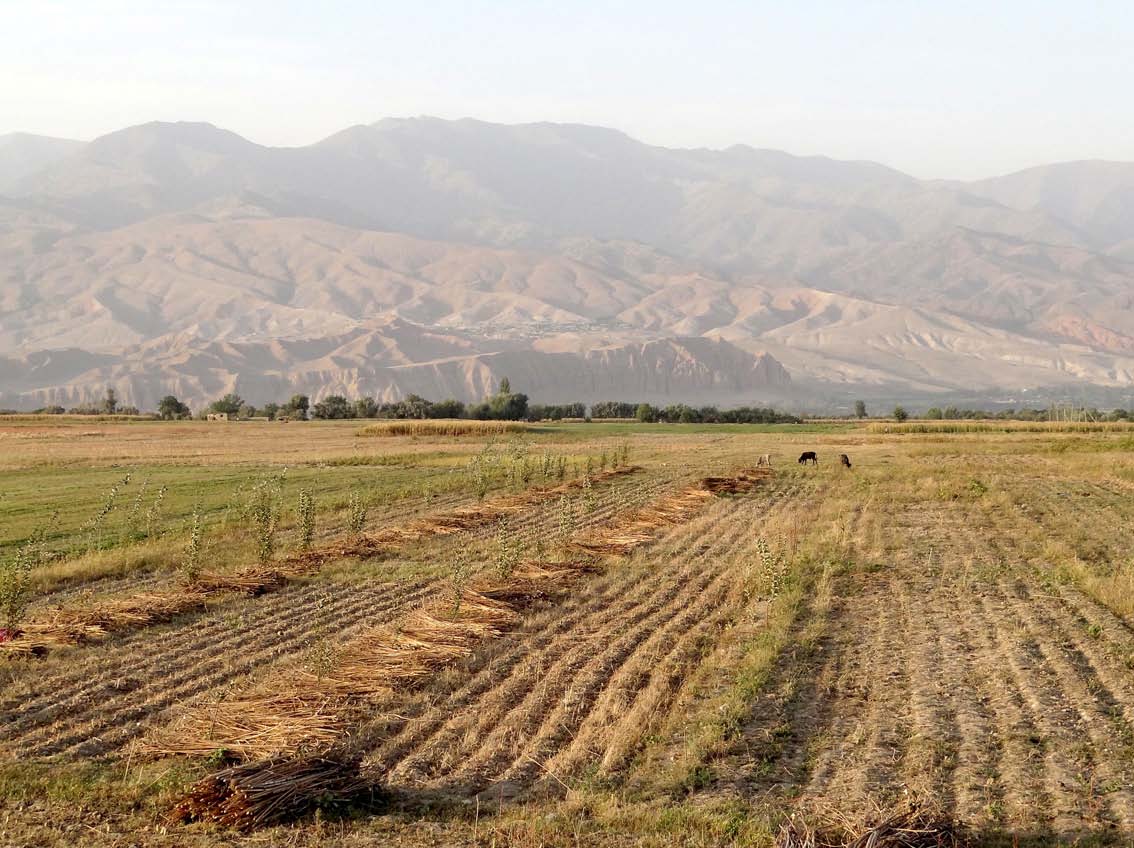
The lands between Sanjar Shah and Qutlugh Tepa
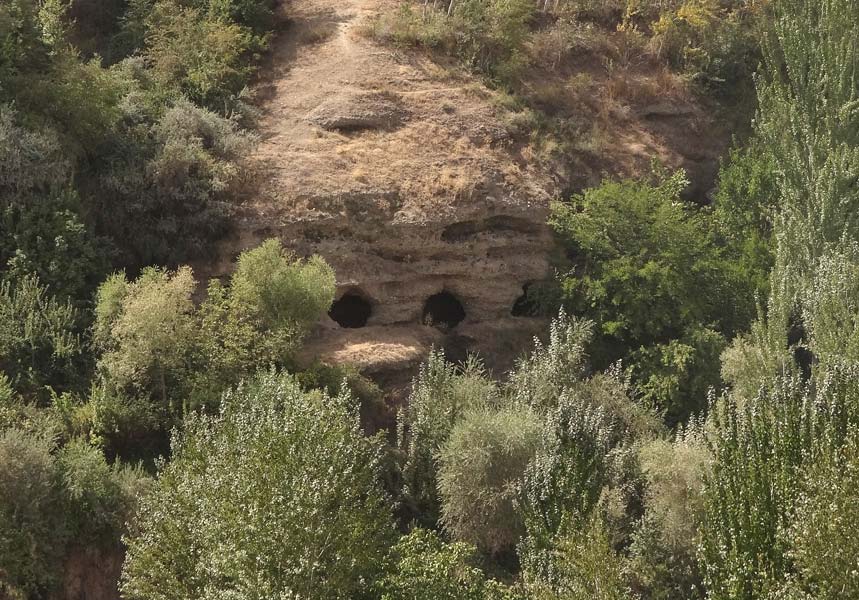
Kariz on the left bank of Maghian Darya near its inflow into the Zarafshan
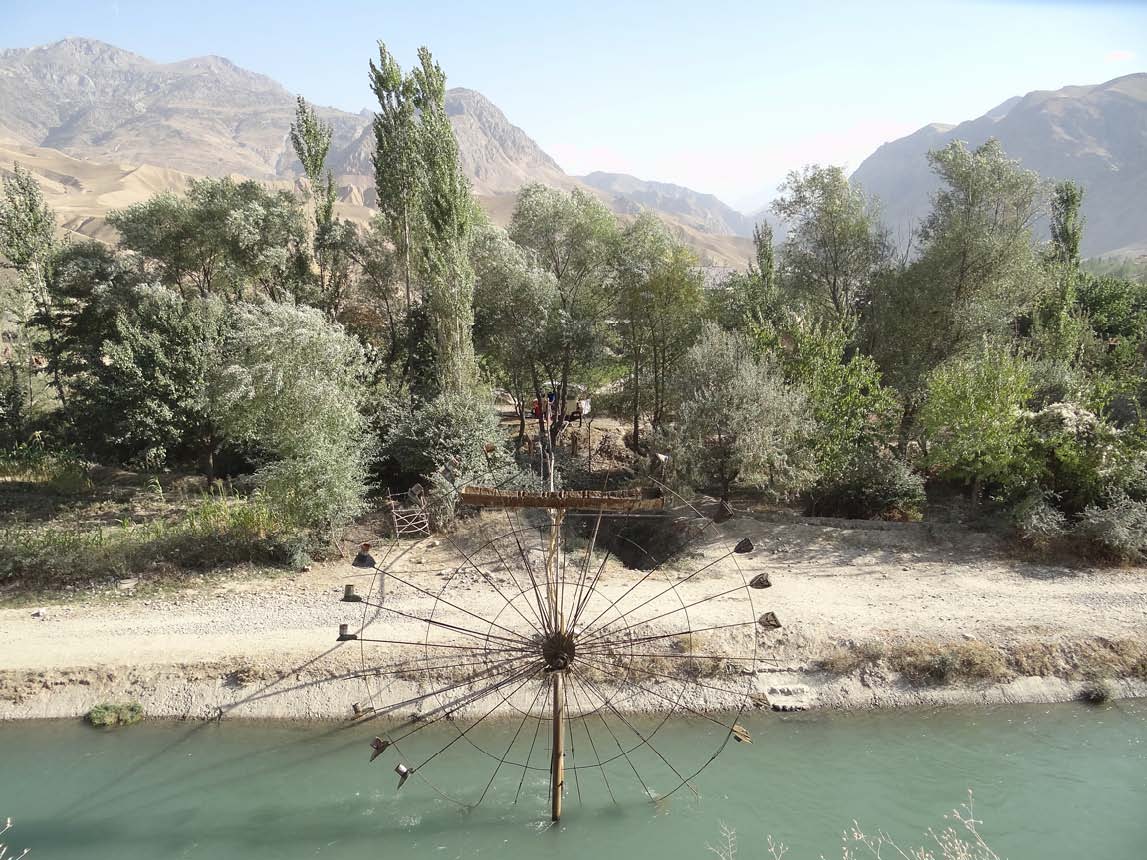
Working chighir at the middle flow of the Maghian Darya
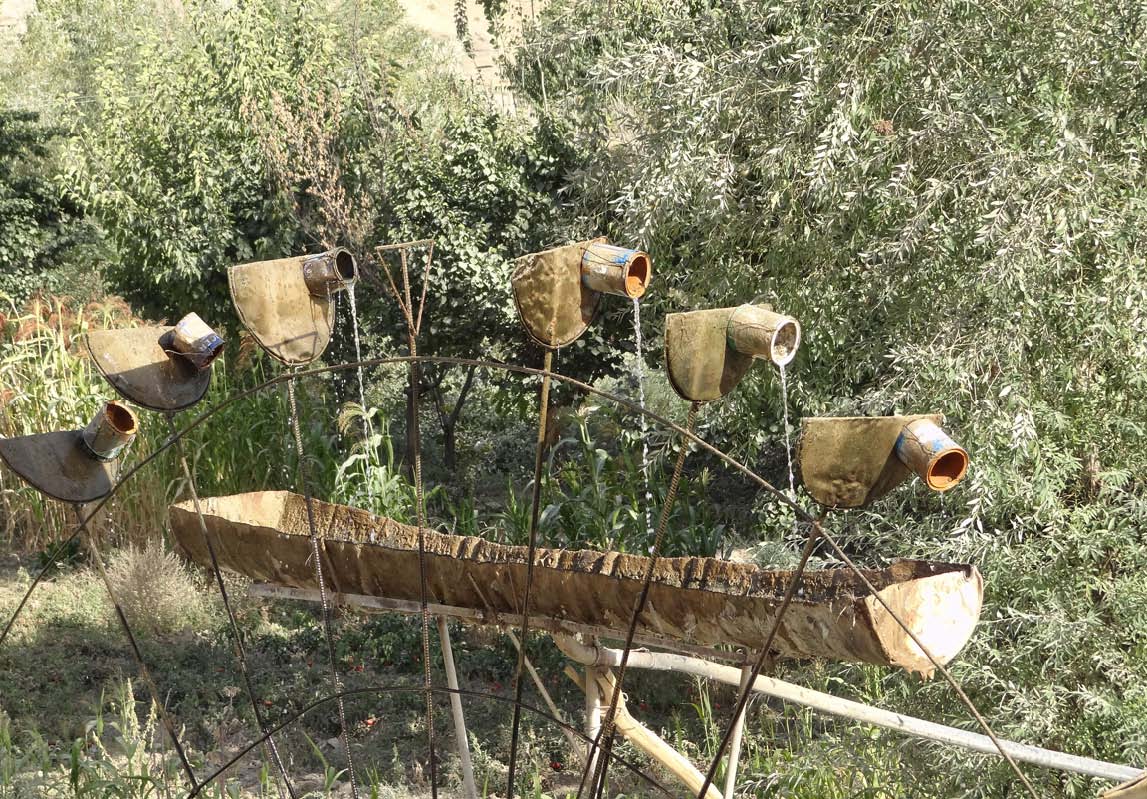
At this territory is situated the early mediaeval site of Qutlugh-tepa, already known to us from the treasure of silver coins found there, and the earliest Islamic minaret of Kalta-manor.
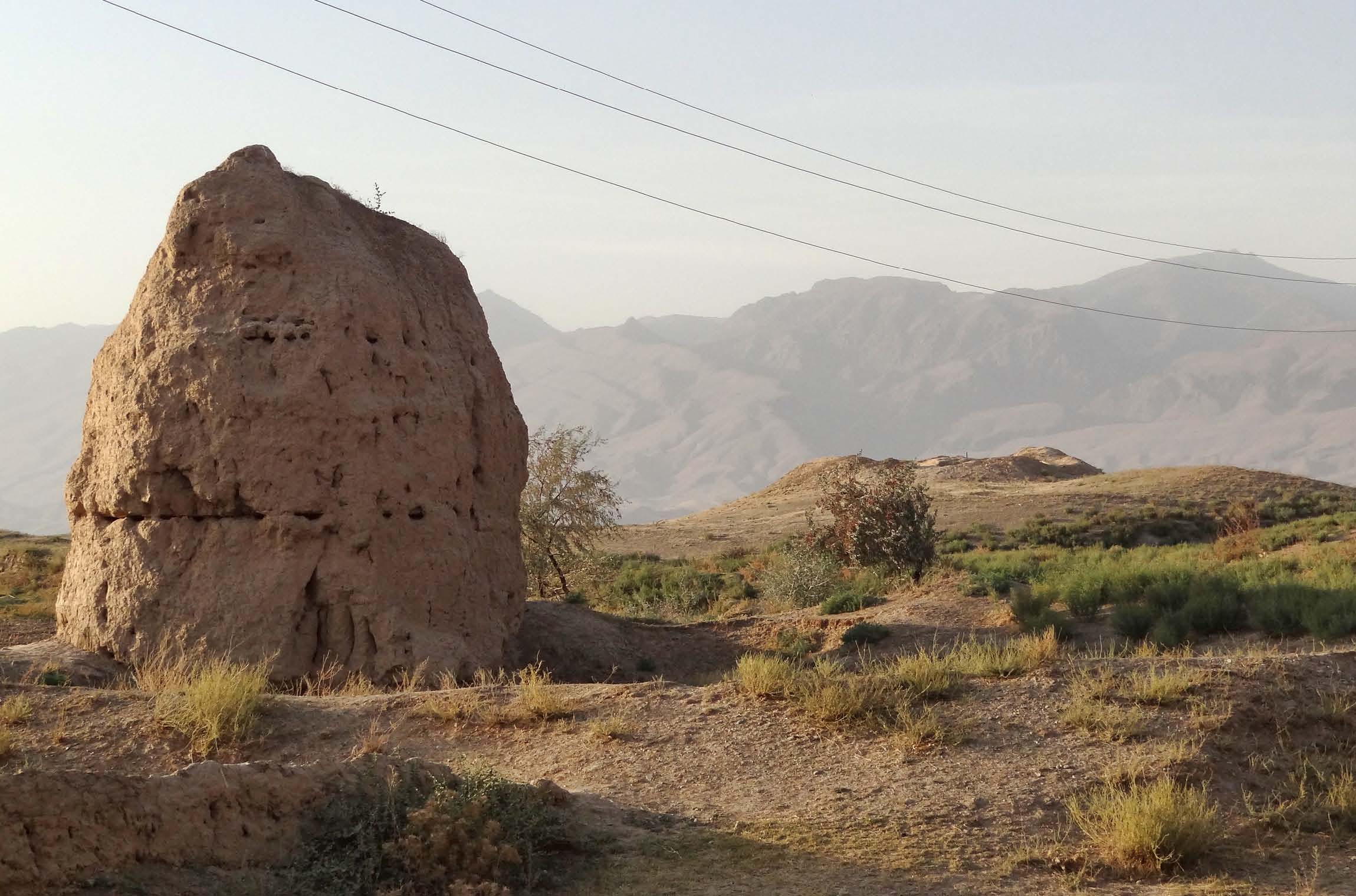
We photo-documented this site already excavated in 2010.
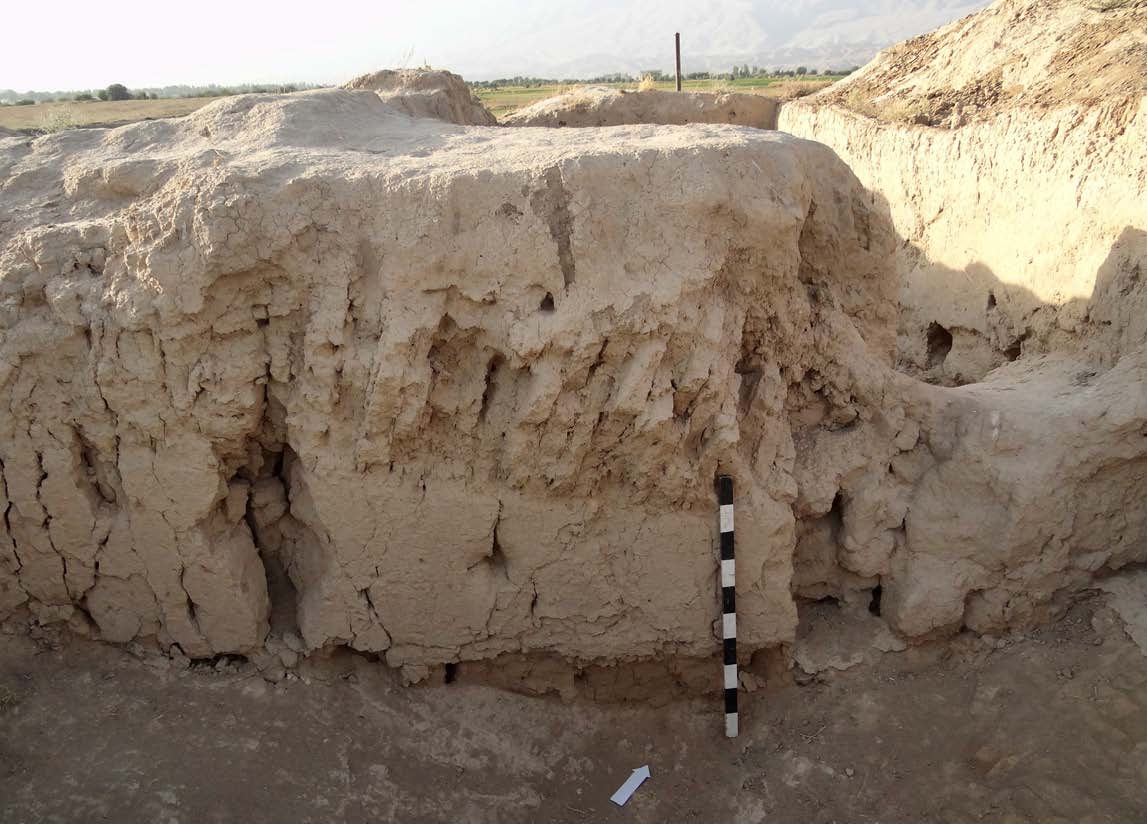
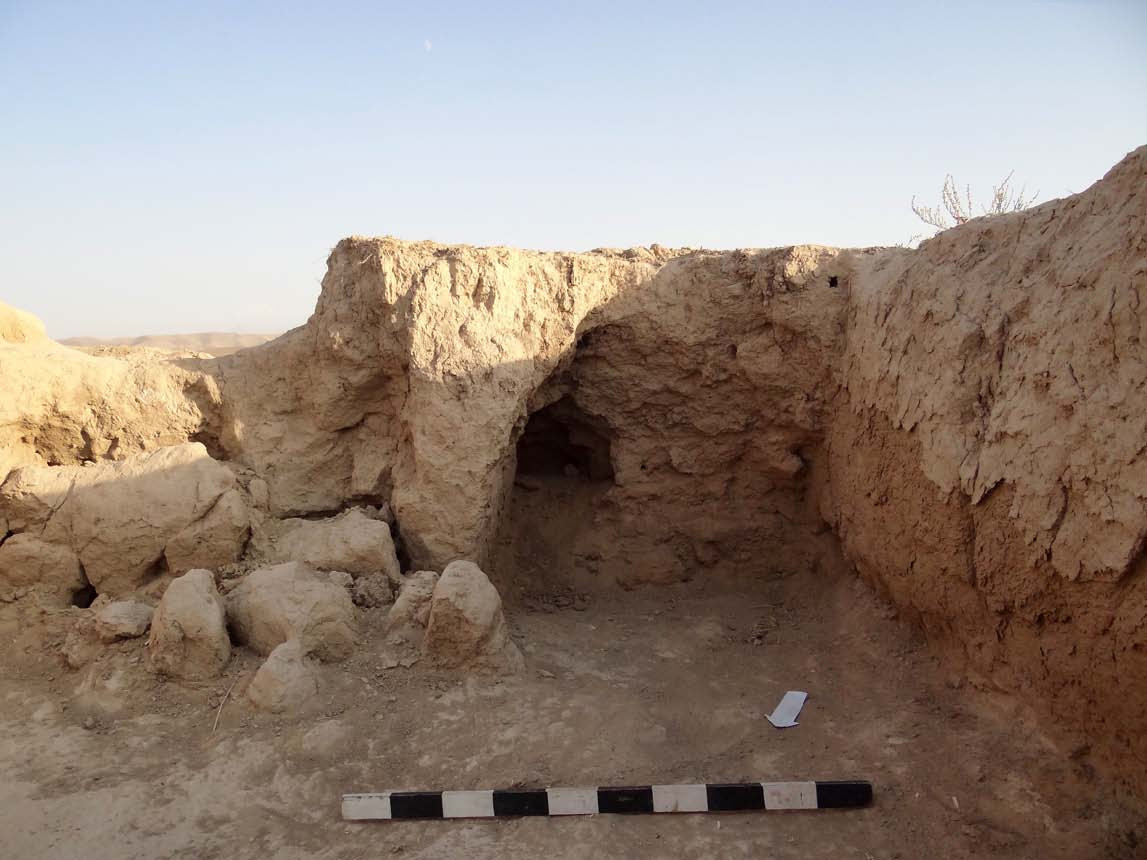
Rooms 1 and 2 at the site of Qutlugh Tepa
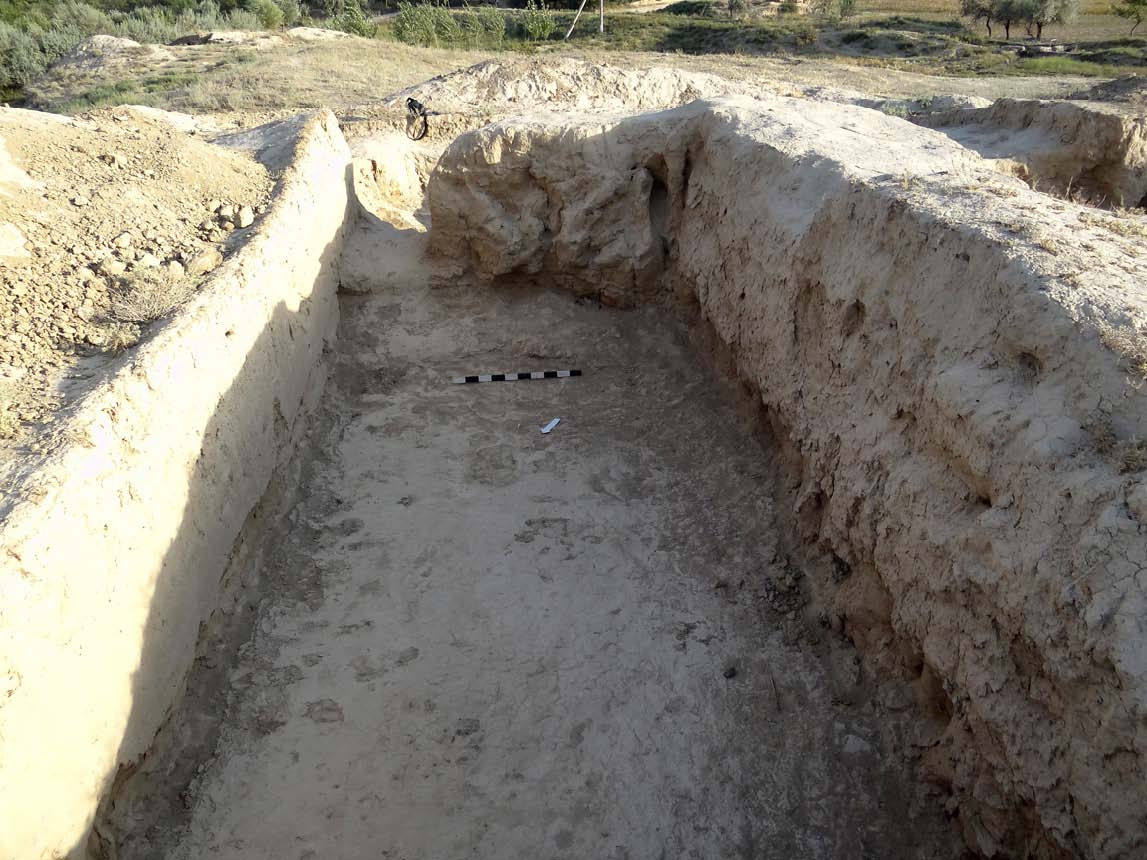
3. SURVEYS
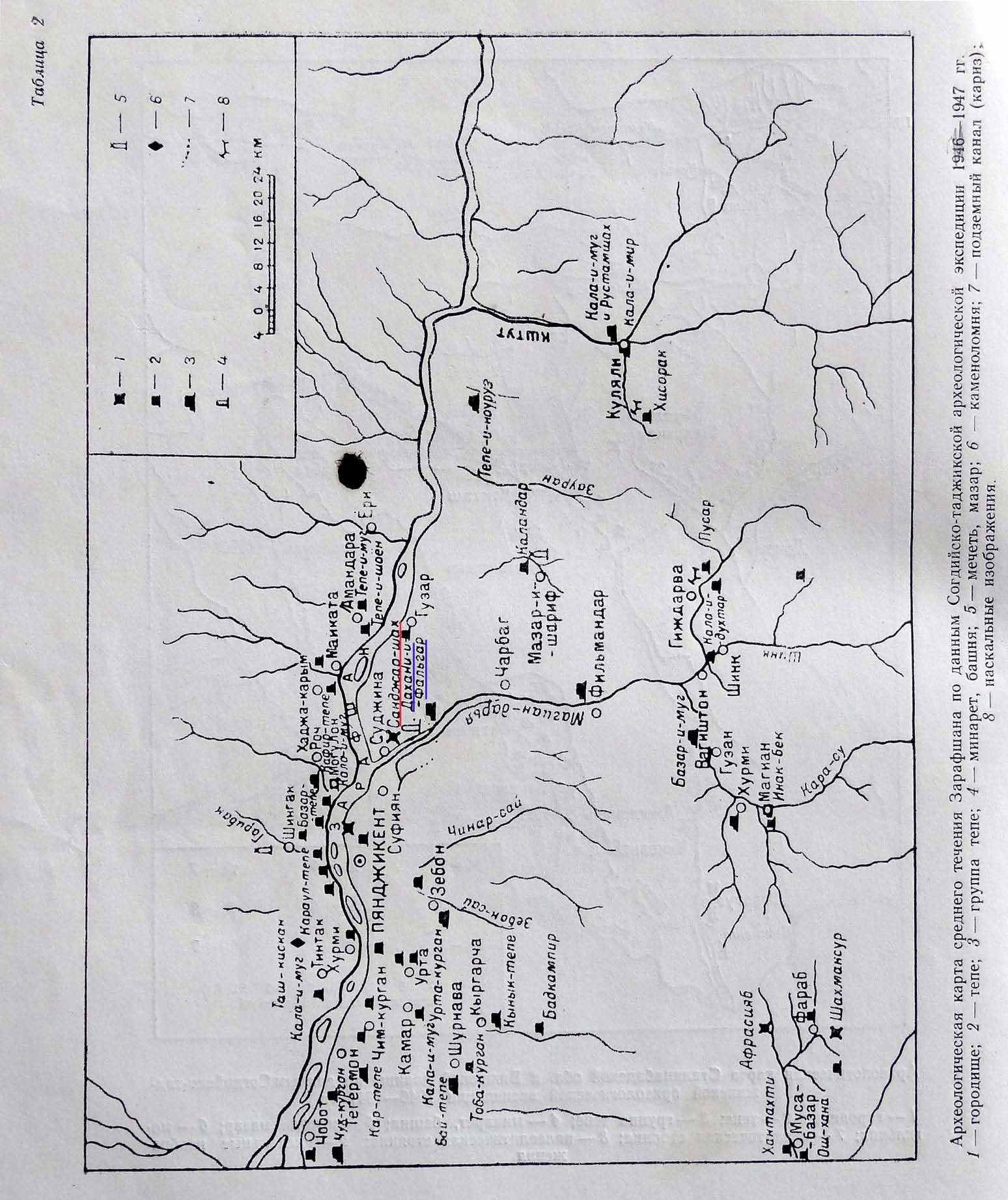
In the course of these surveys the following sites were mapped towards an archaeological map of the Panjikant District, conceived by Smirnova back in 1948:
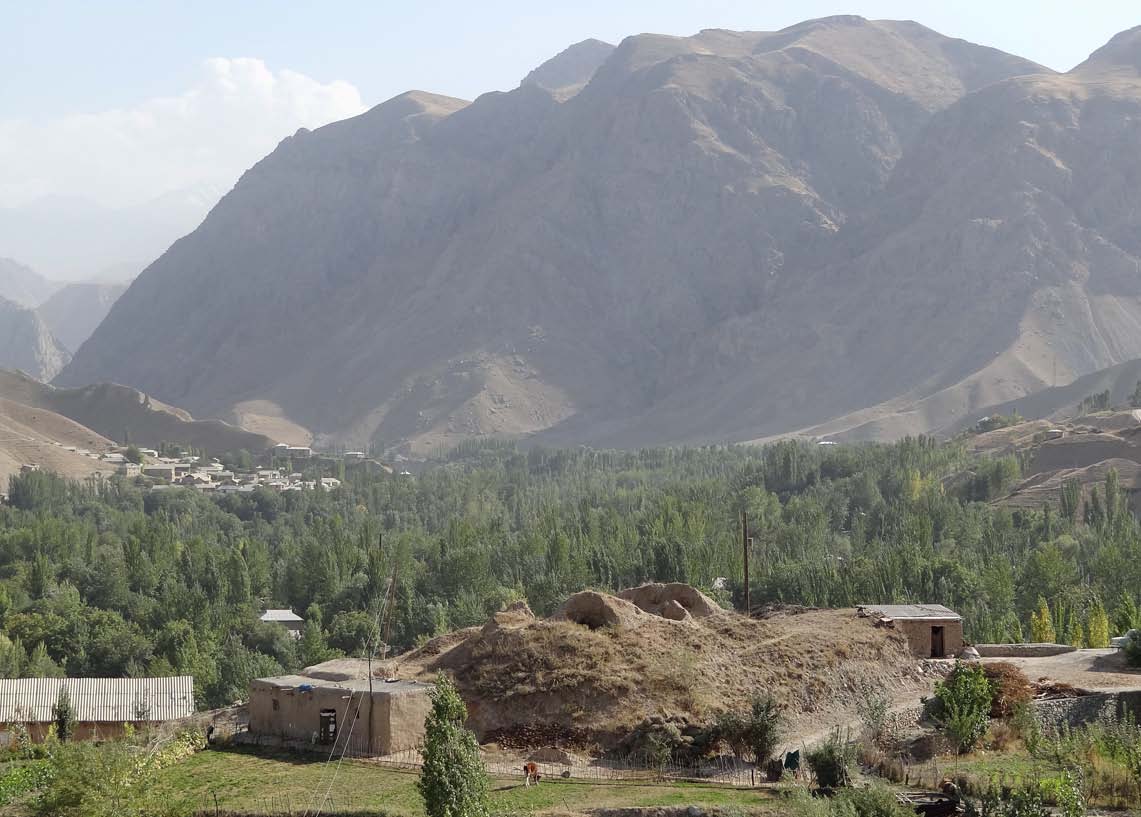
Filmandar, 39 deg 23' 27.85" N, 67 deg 45' 34.63" E
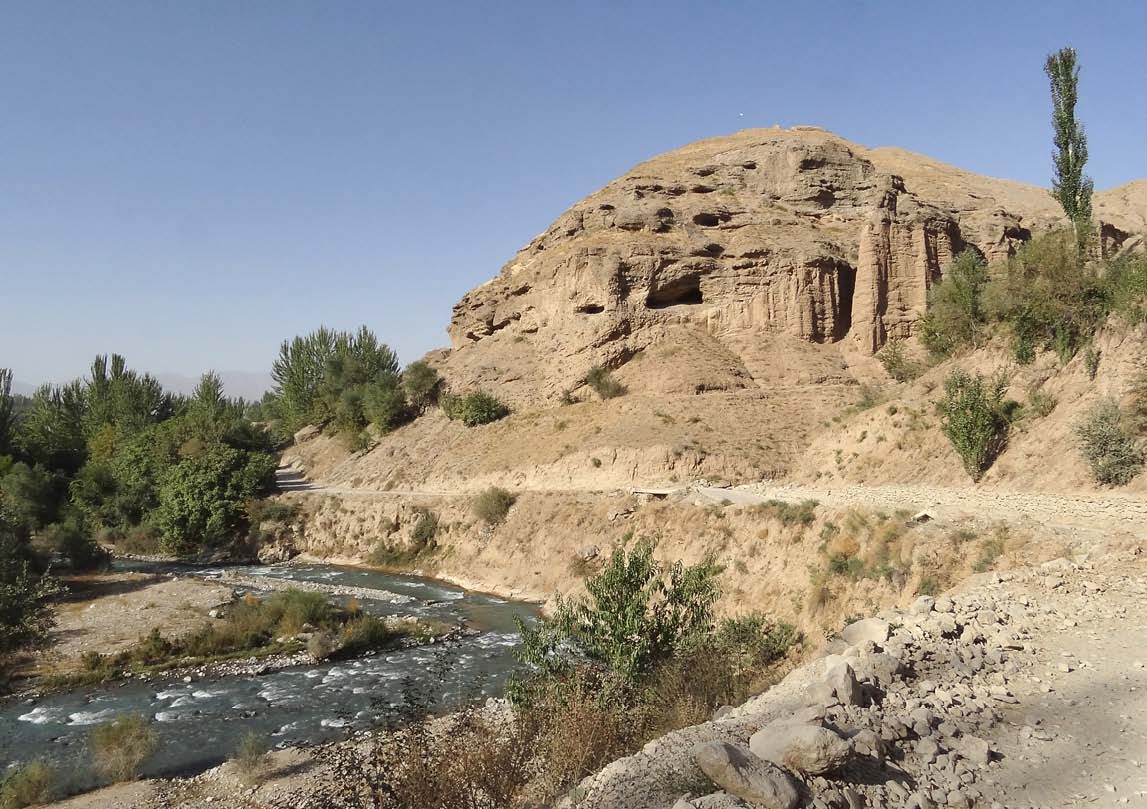
Miron, 39 deg 22' 52.82" N, 67 deg 45' 47.97" E
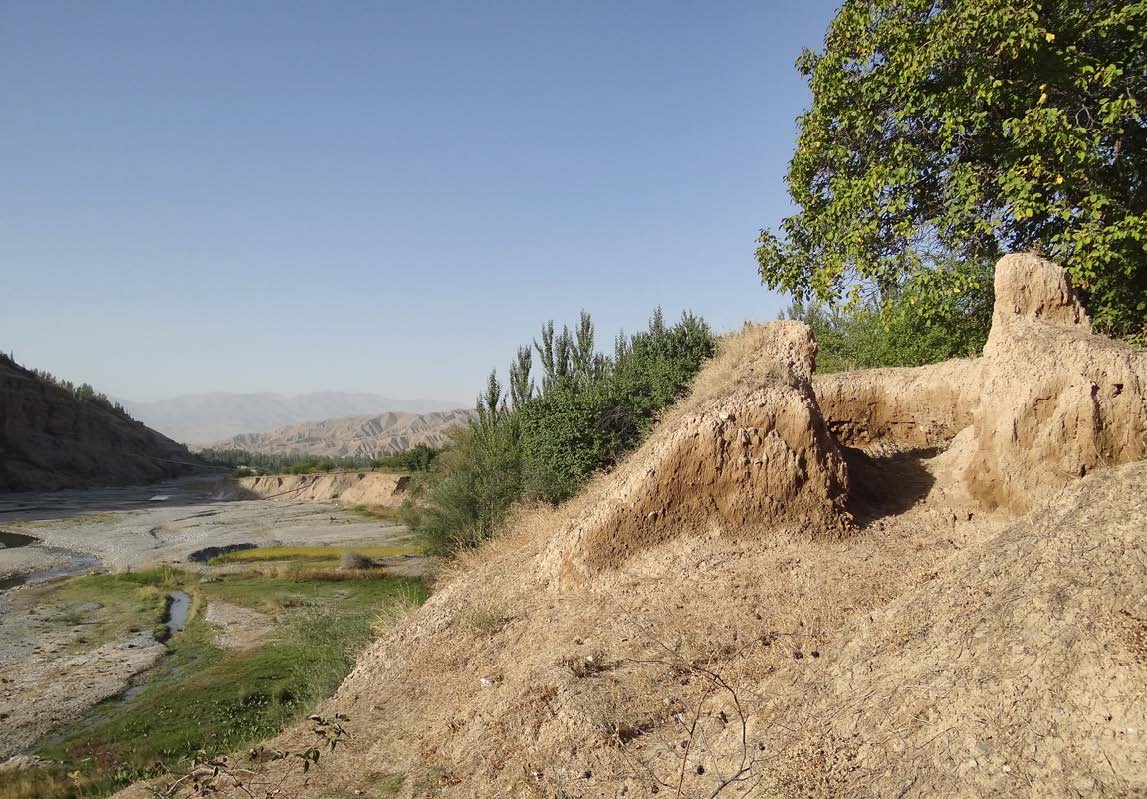
Haliq-Nazar, 39 deg 23' 43.98" N, 67 deg 45' 49.22" E
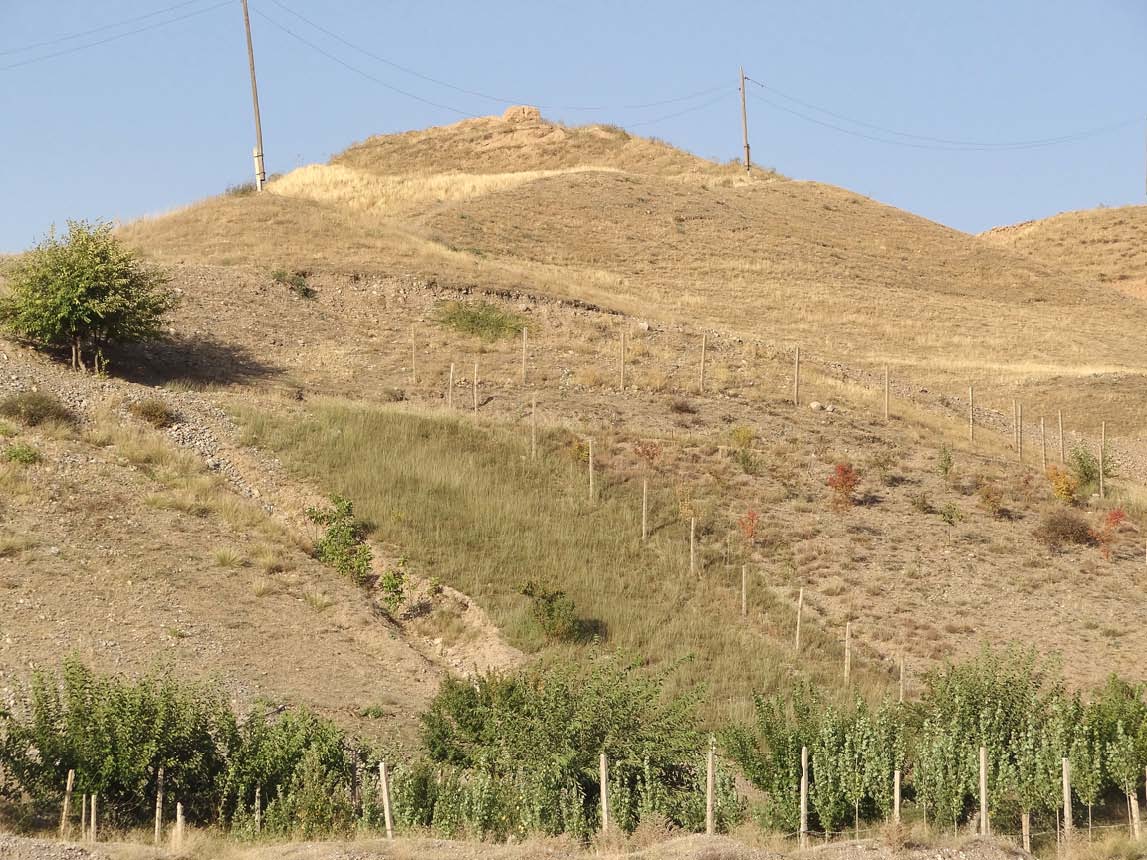
Arpalik, 39 deg 23' 55.95" N, 67 deg 46' 7.54" E
4. TOPOGRAPHY
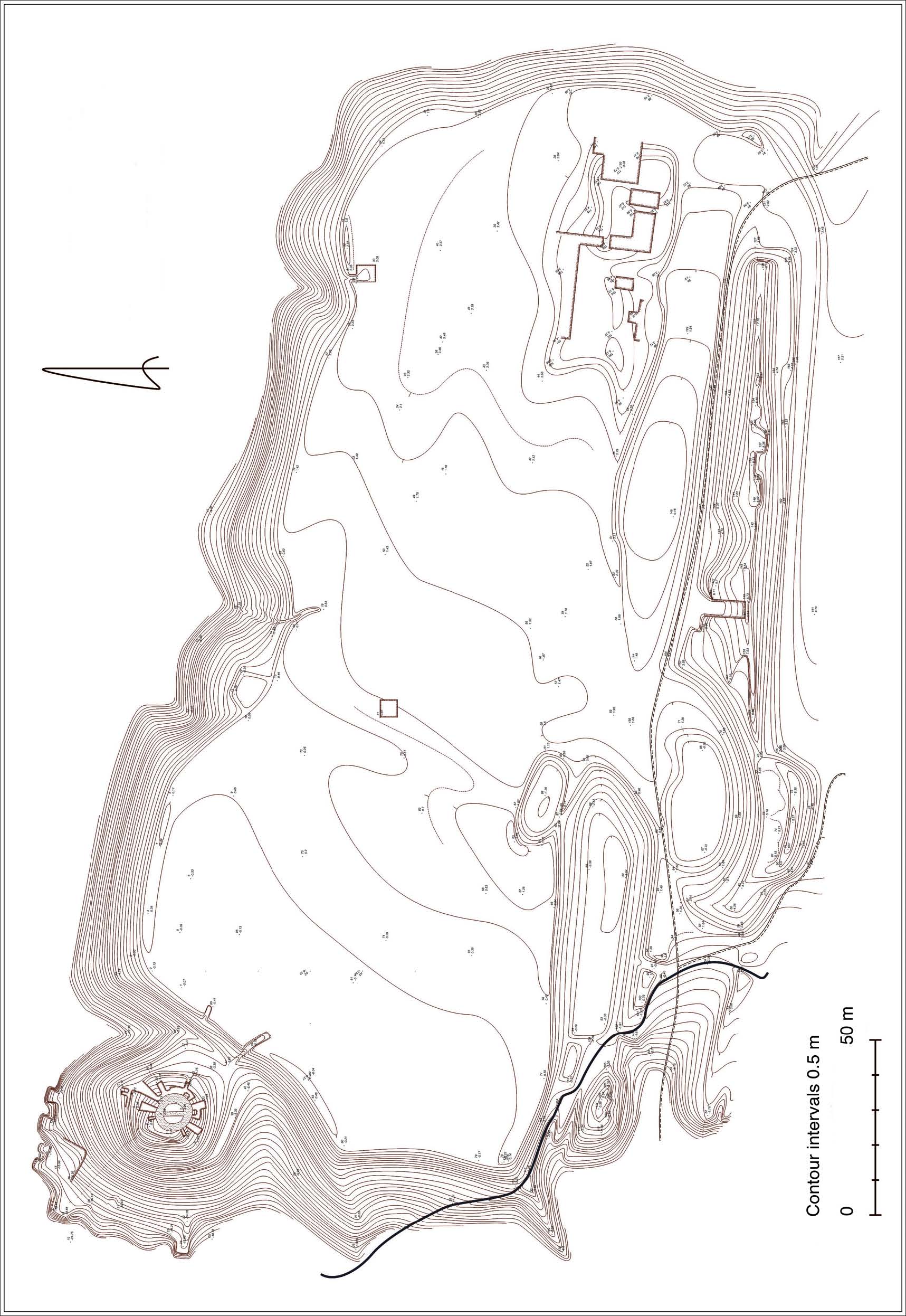
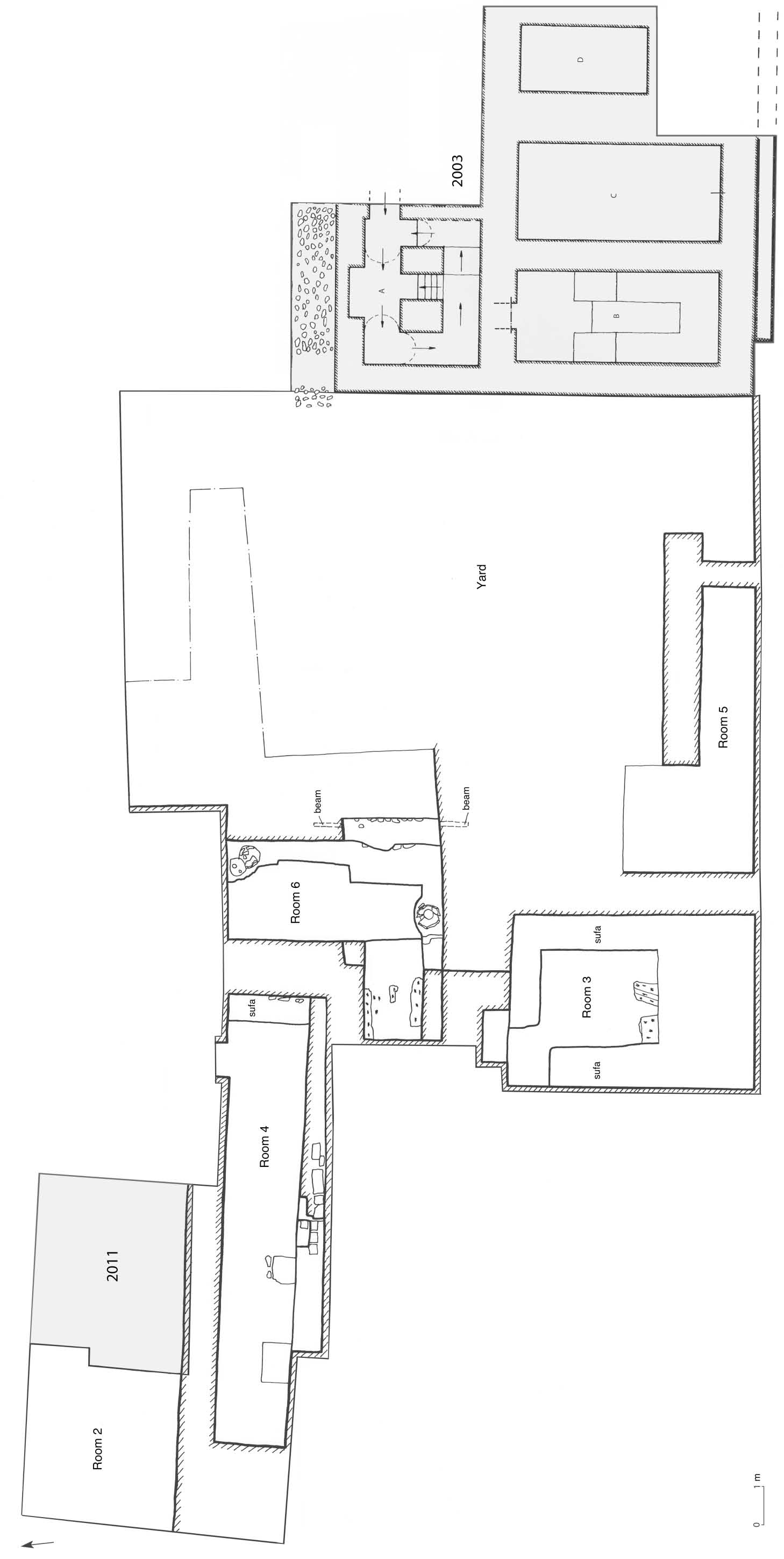
5. THREE-DIMENSIONAL MODEL
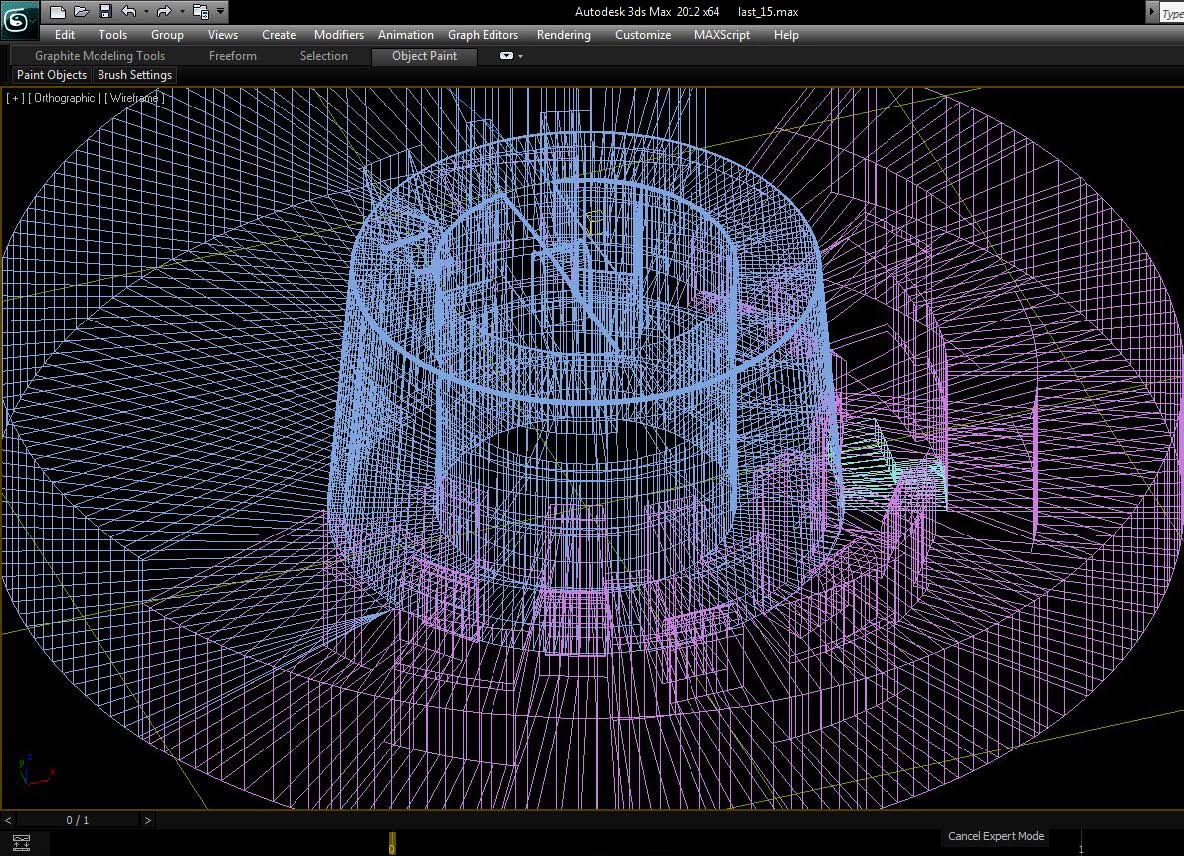
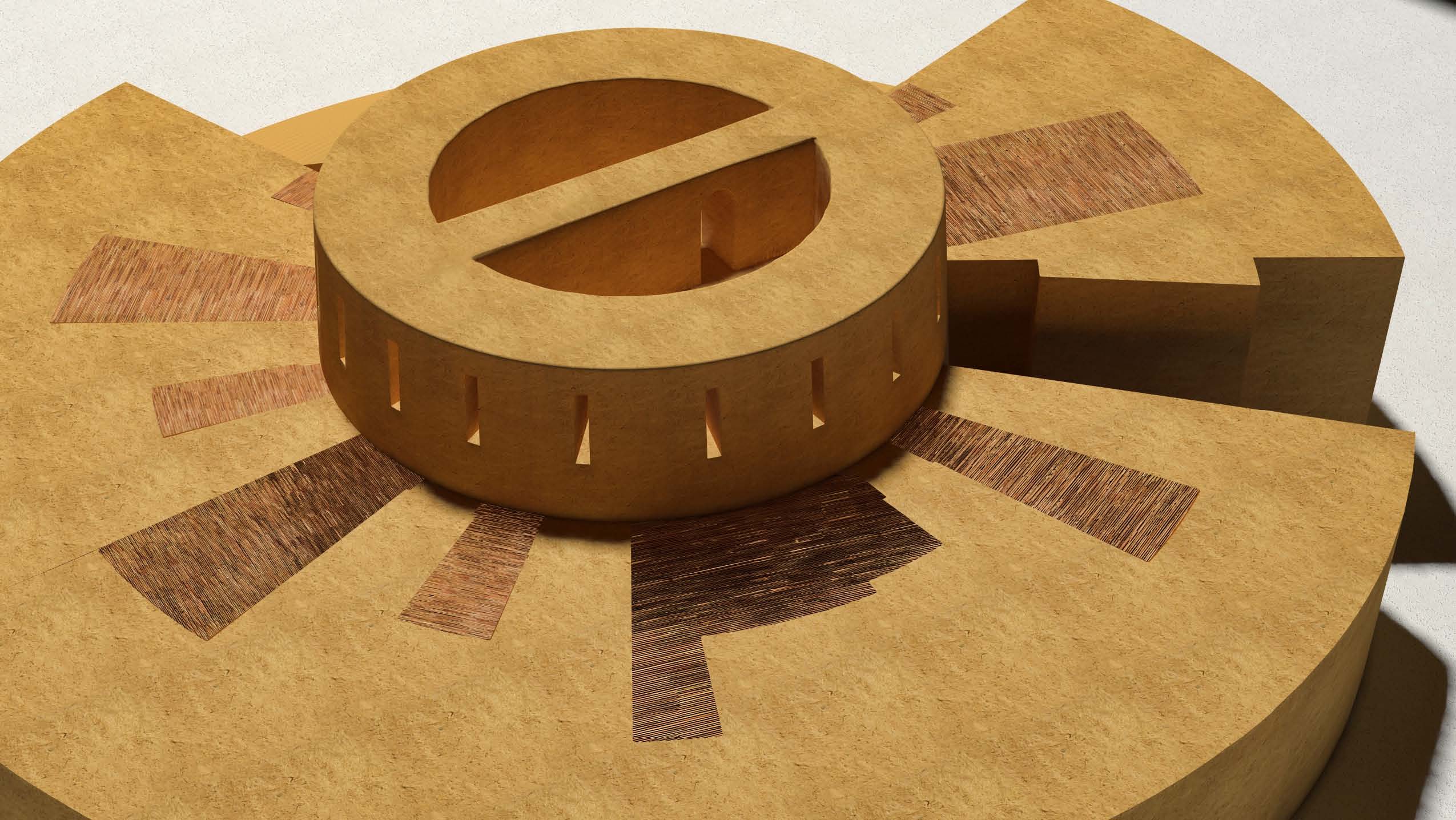
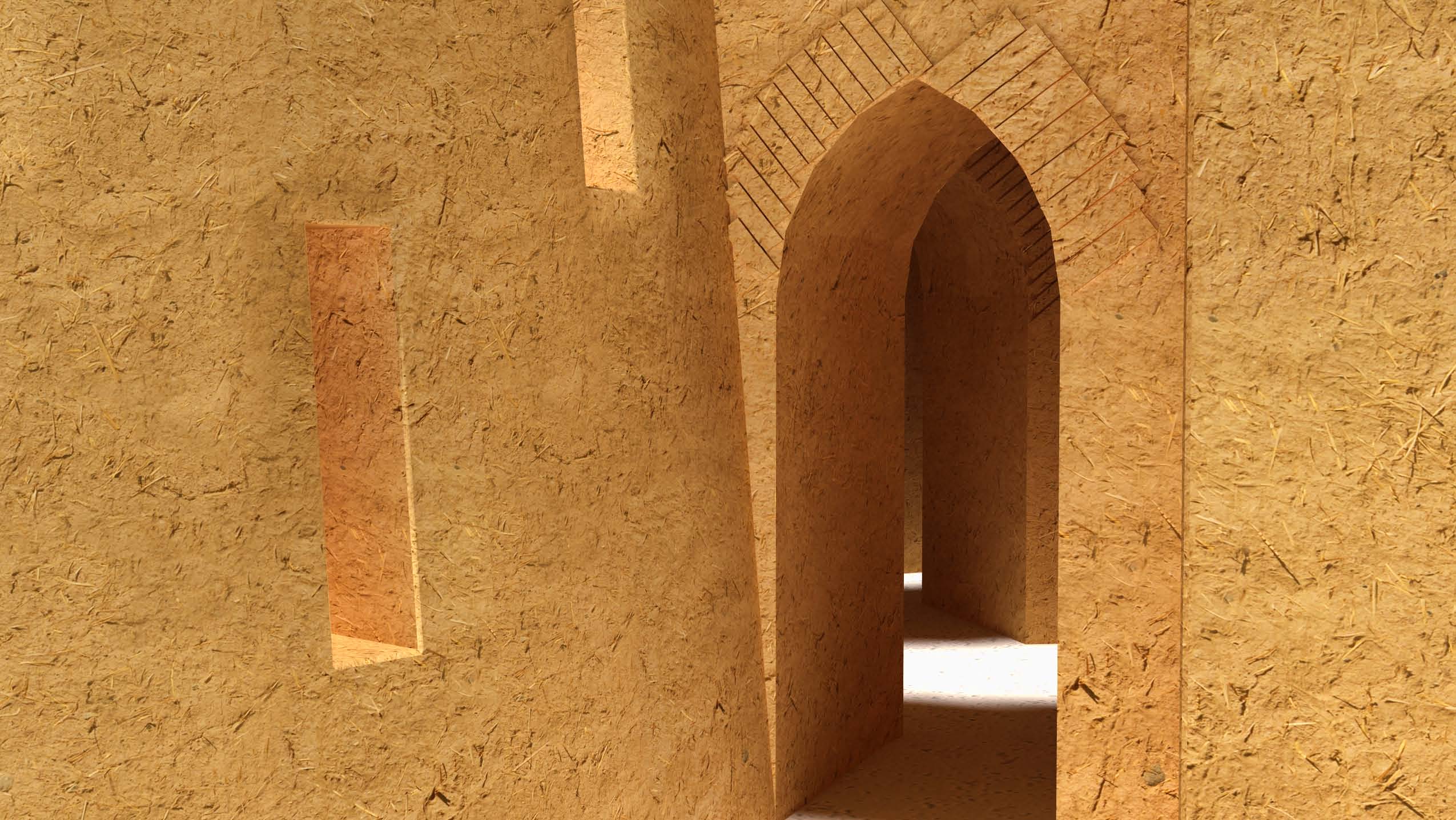
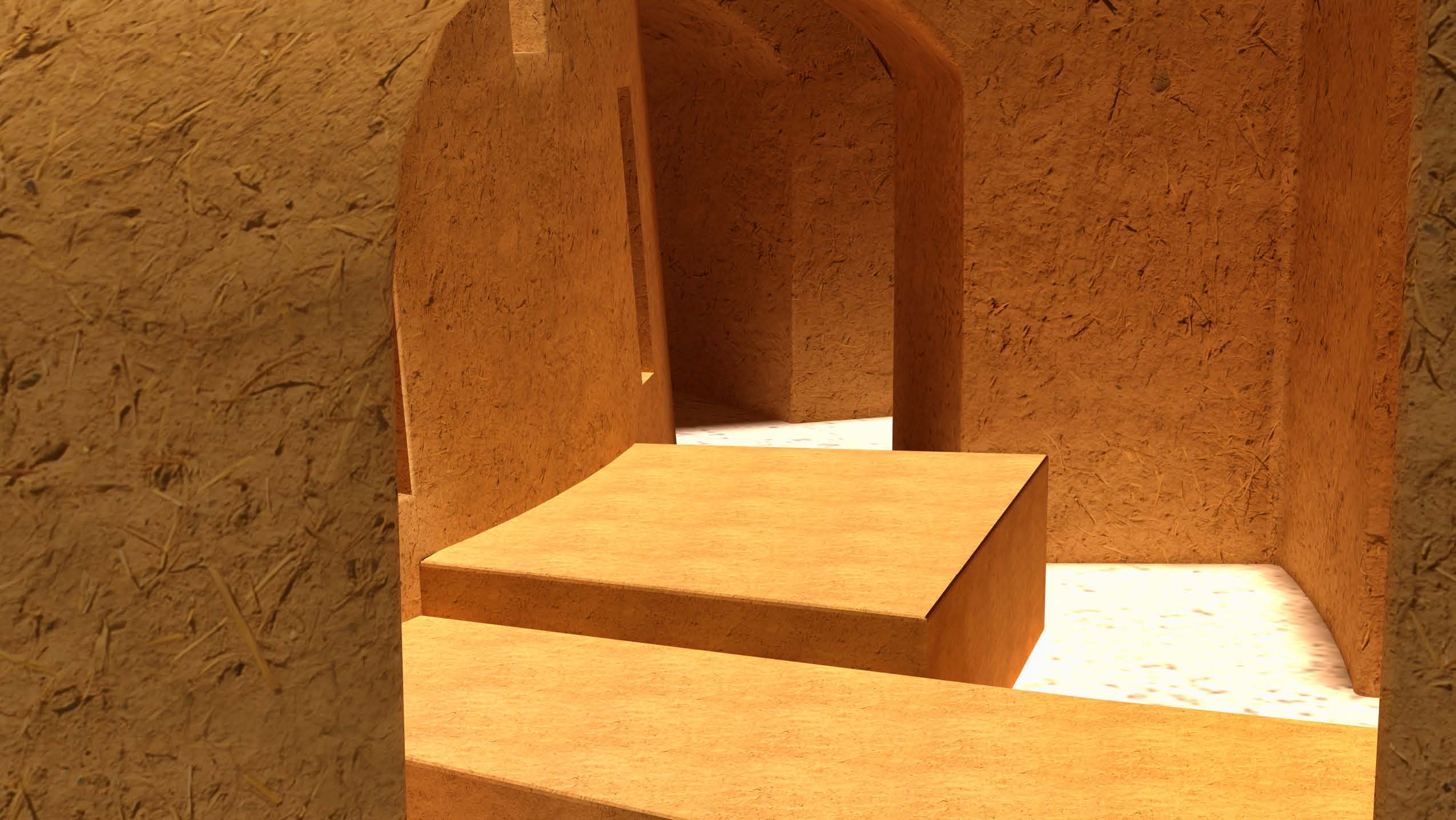
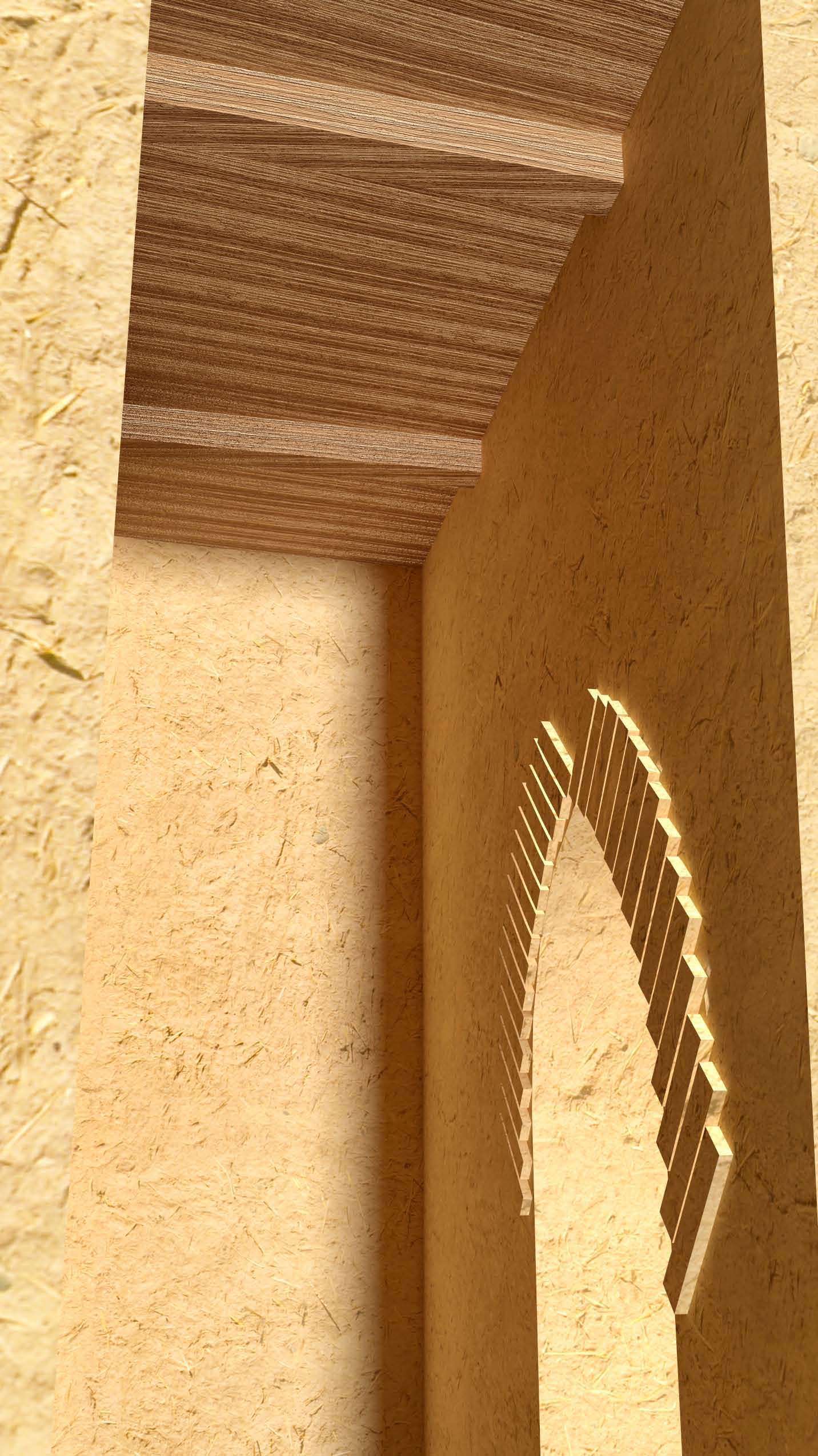
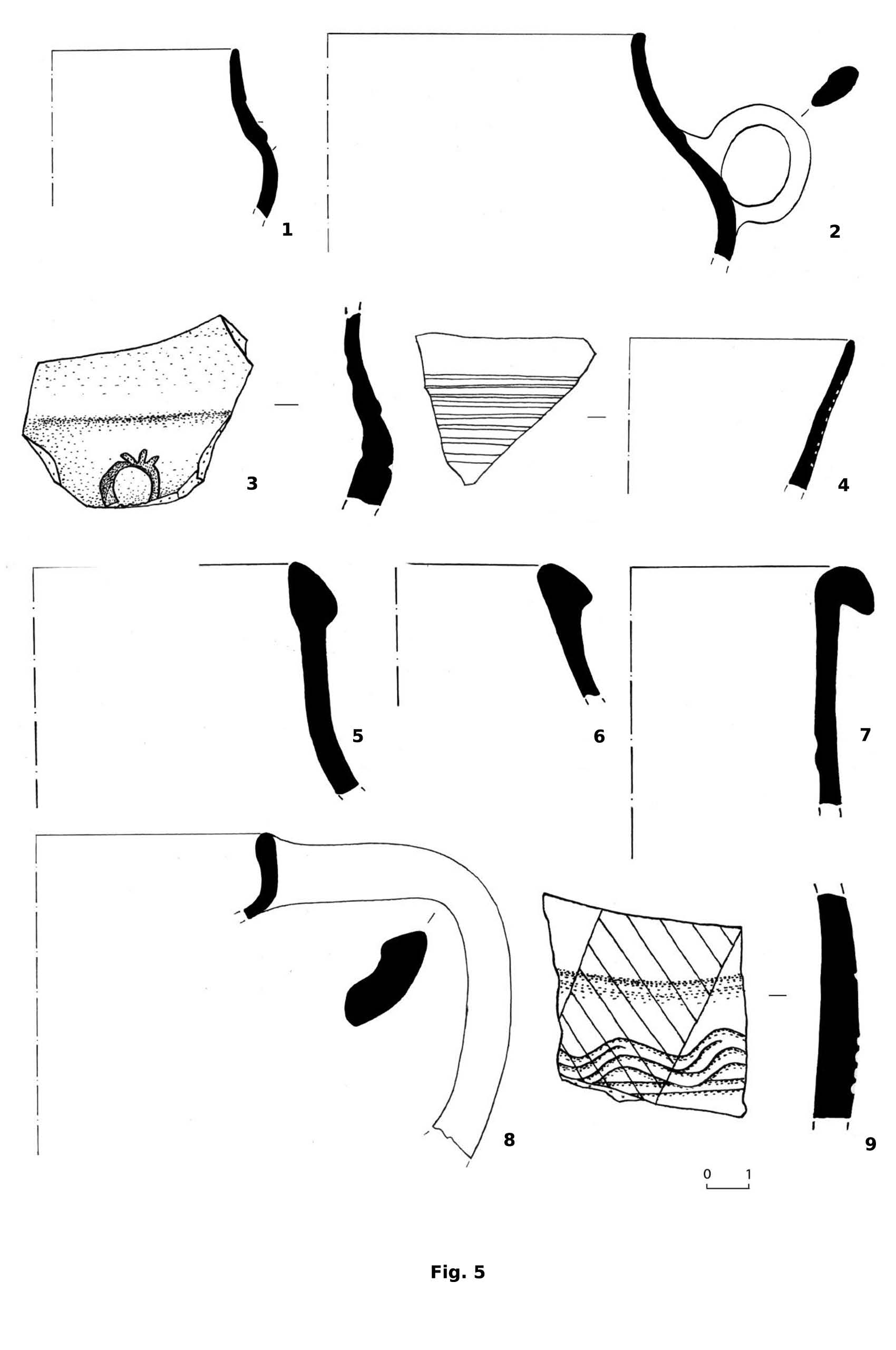
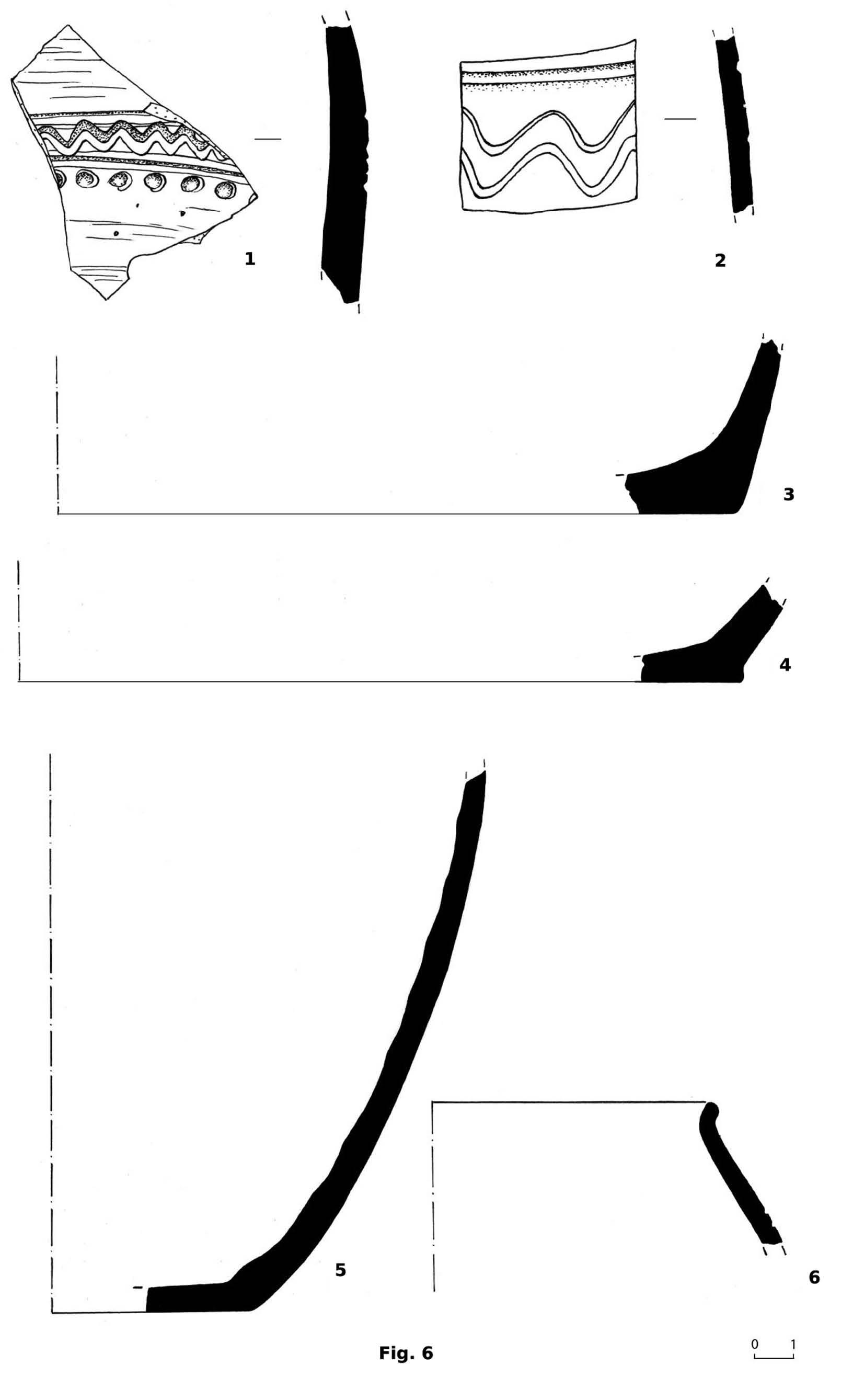
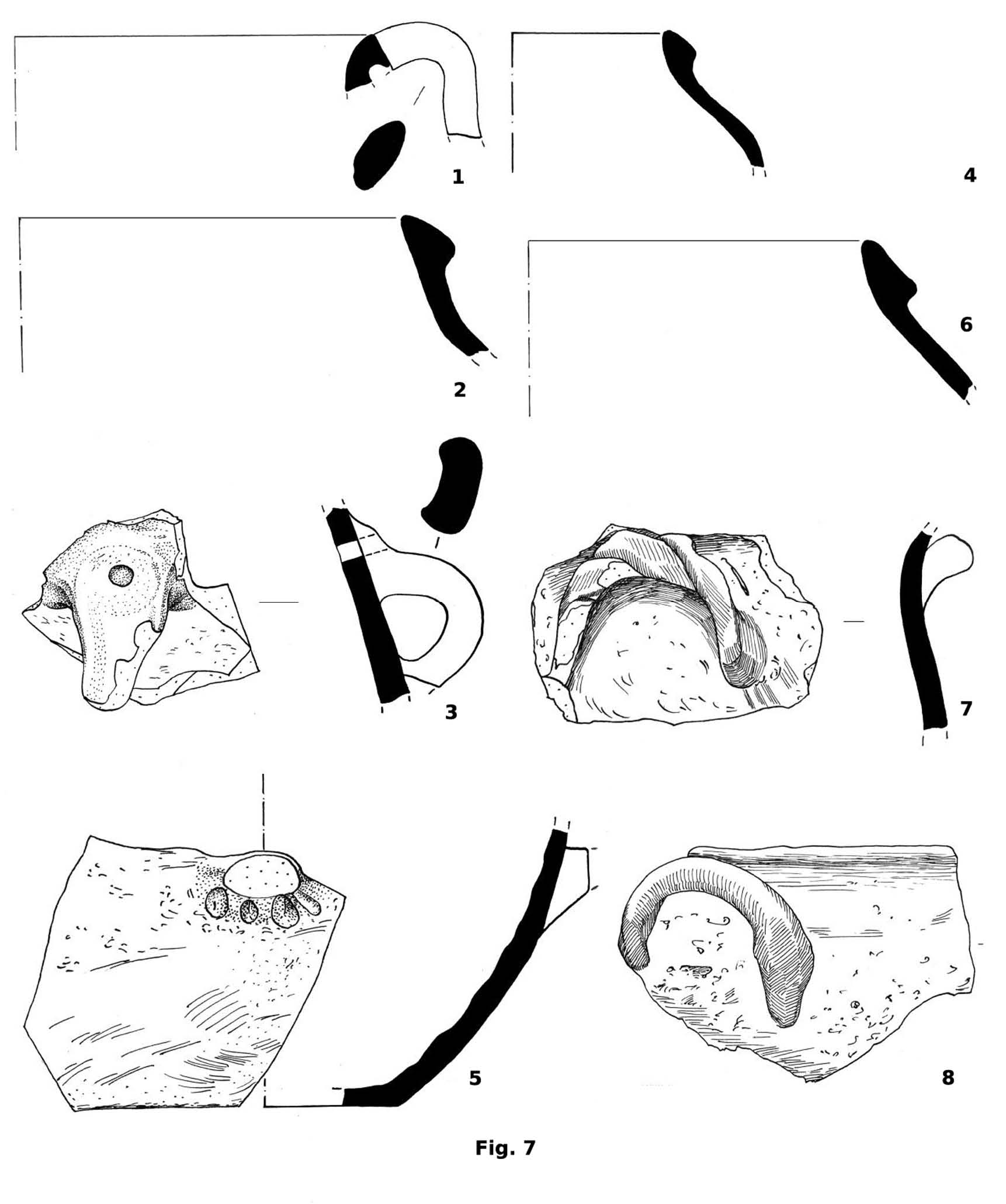
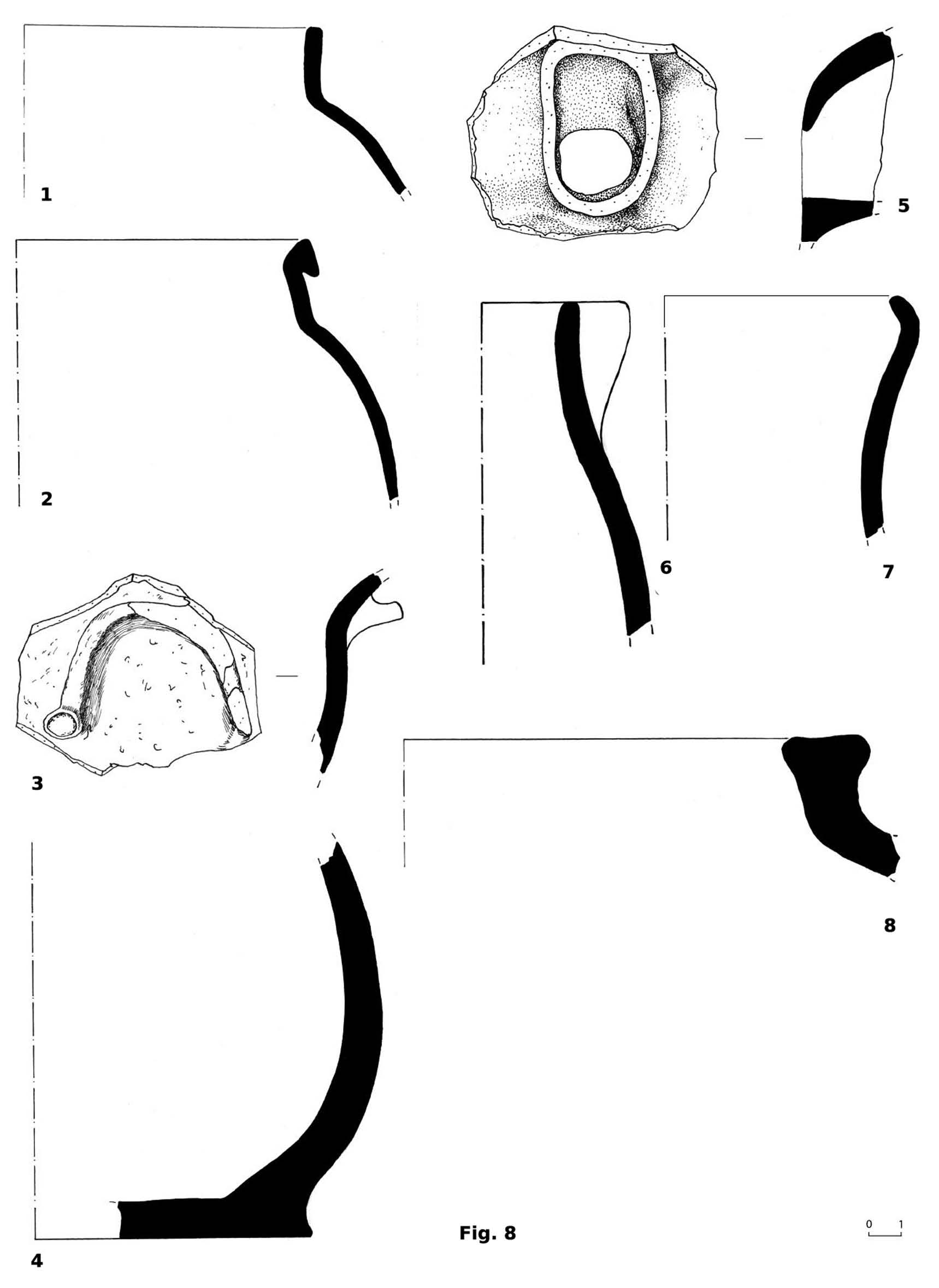
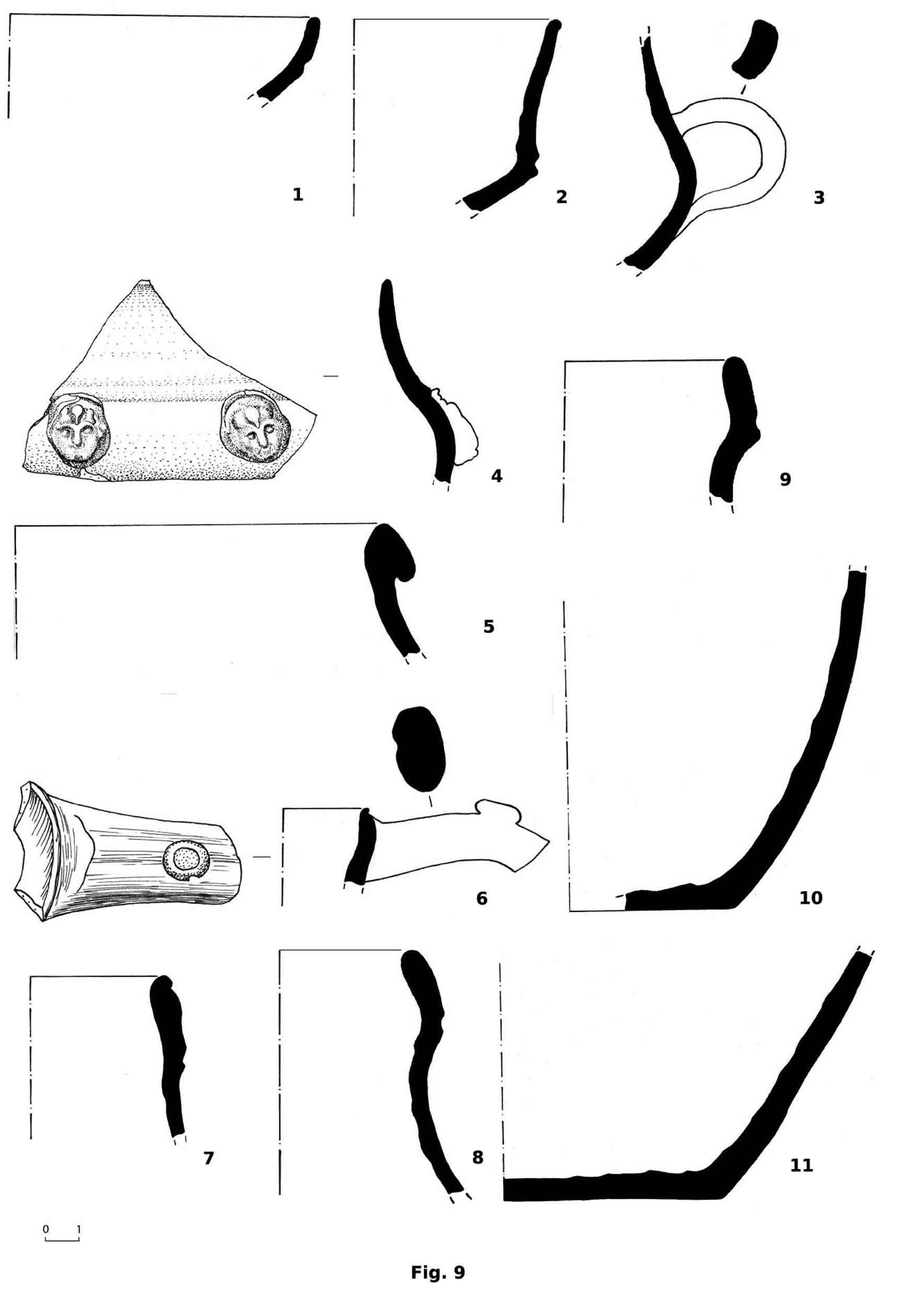
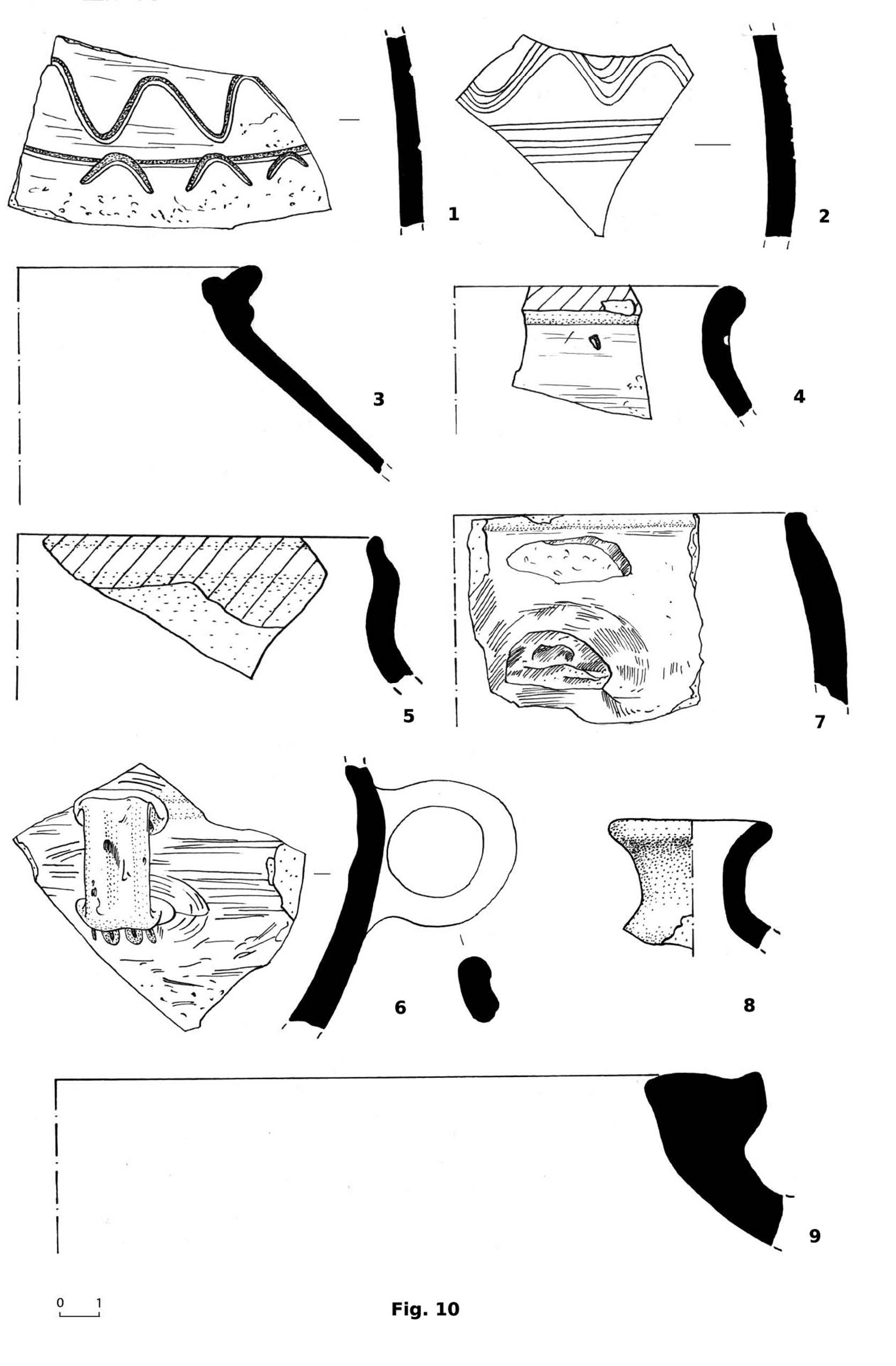
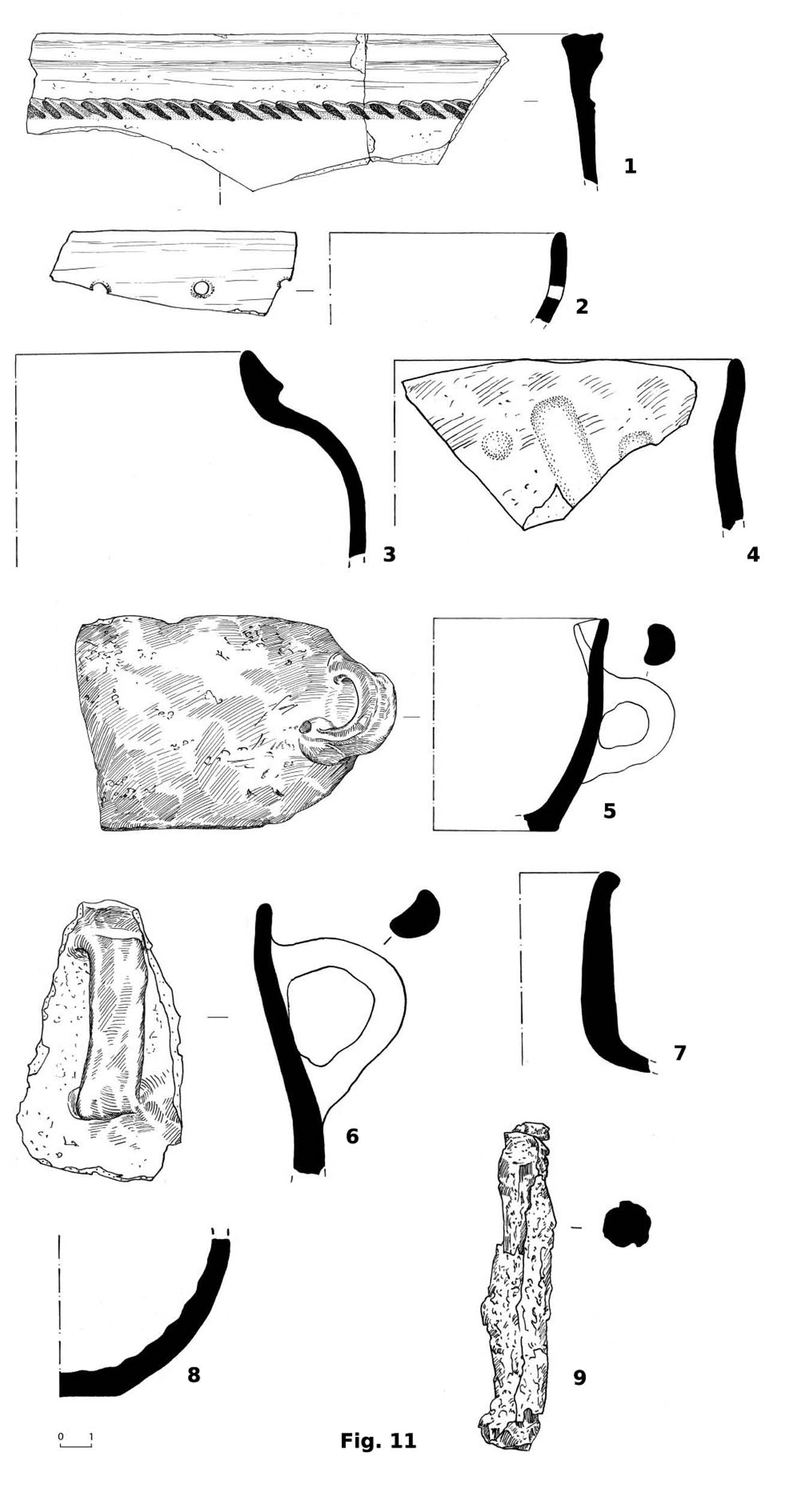
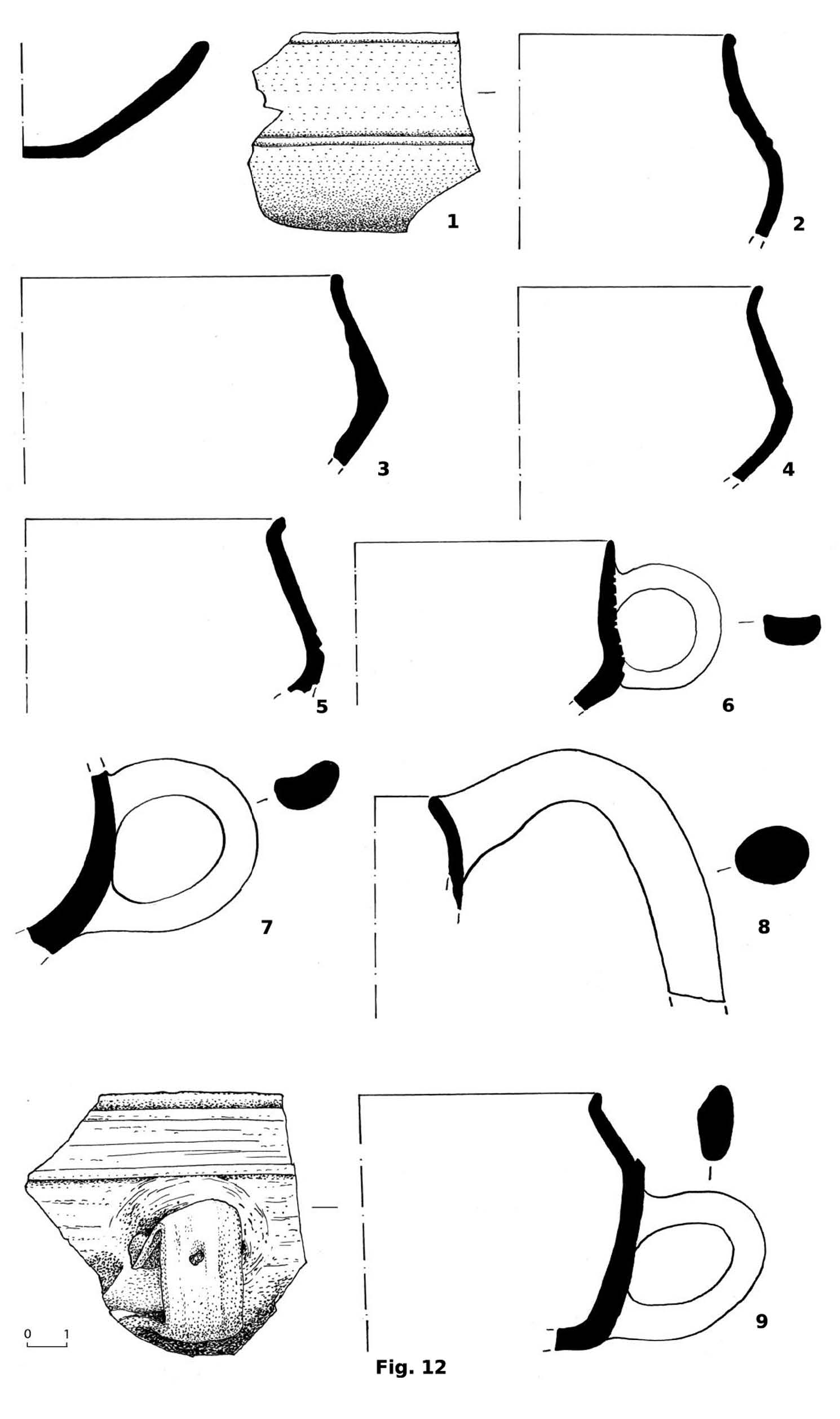
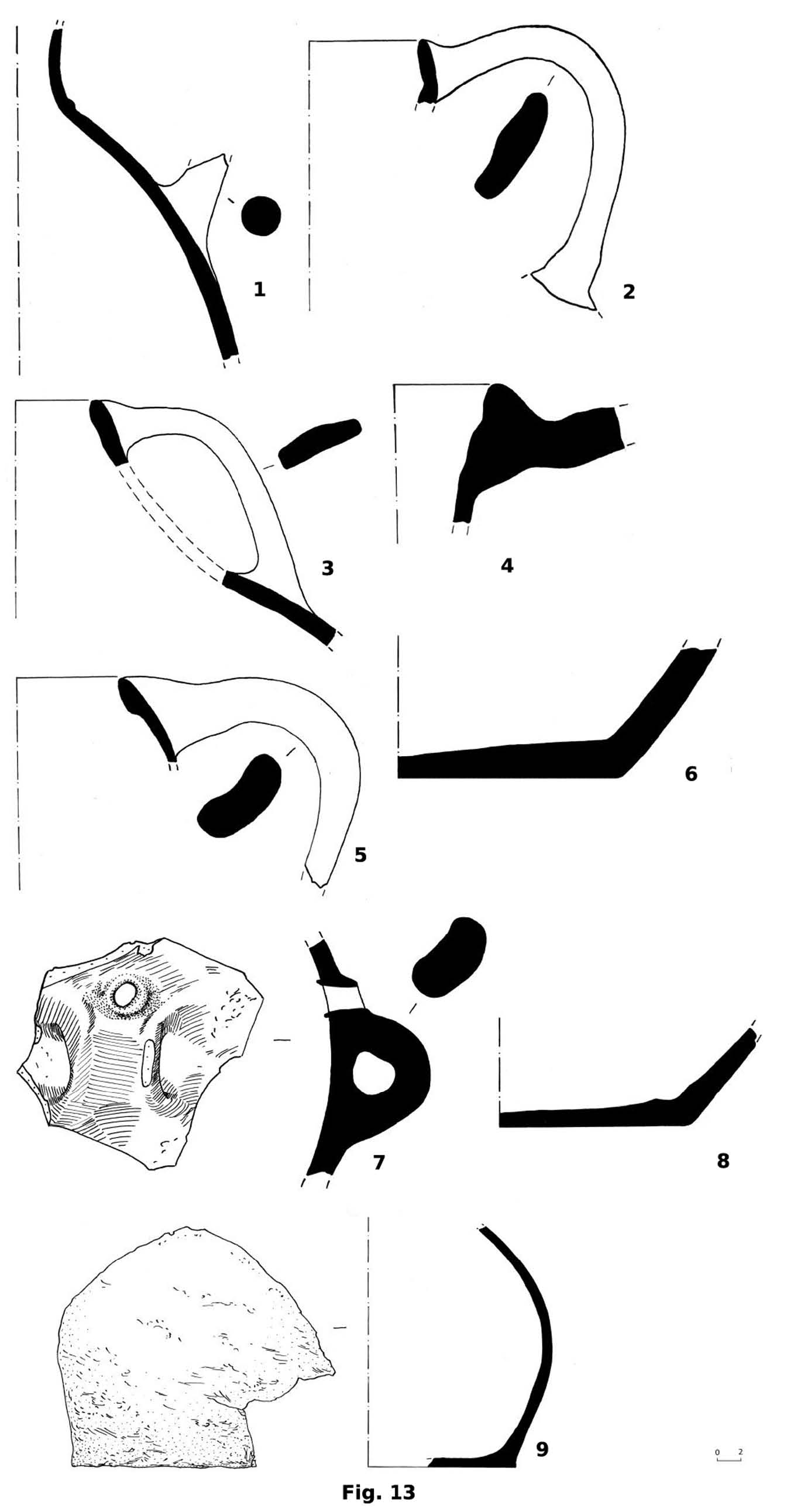
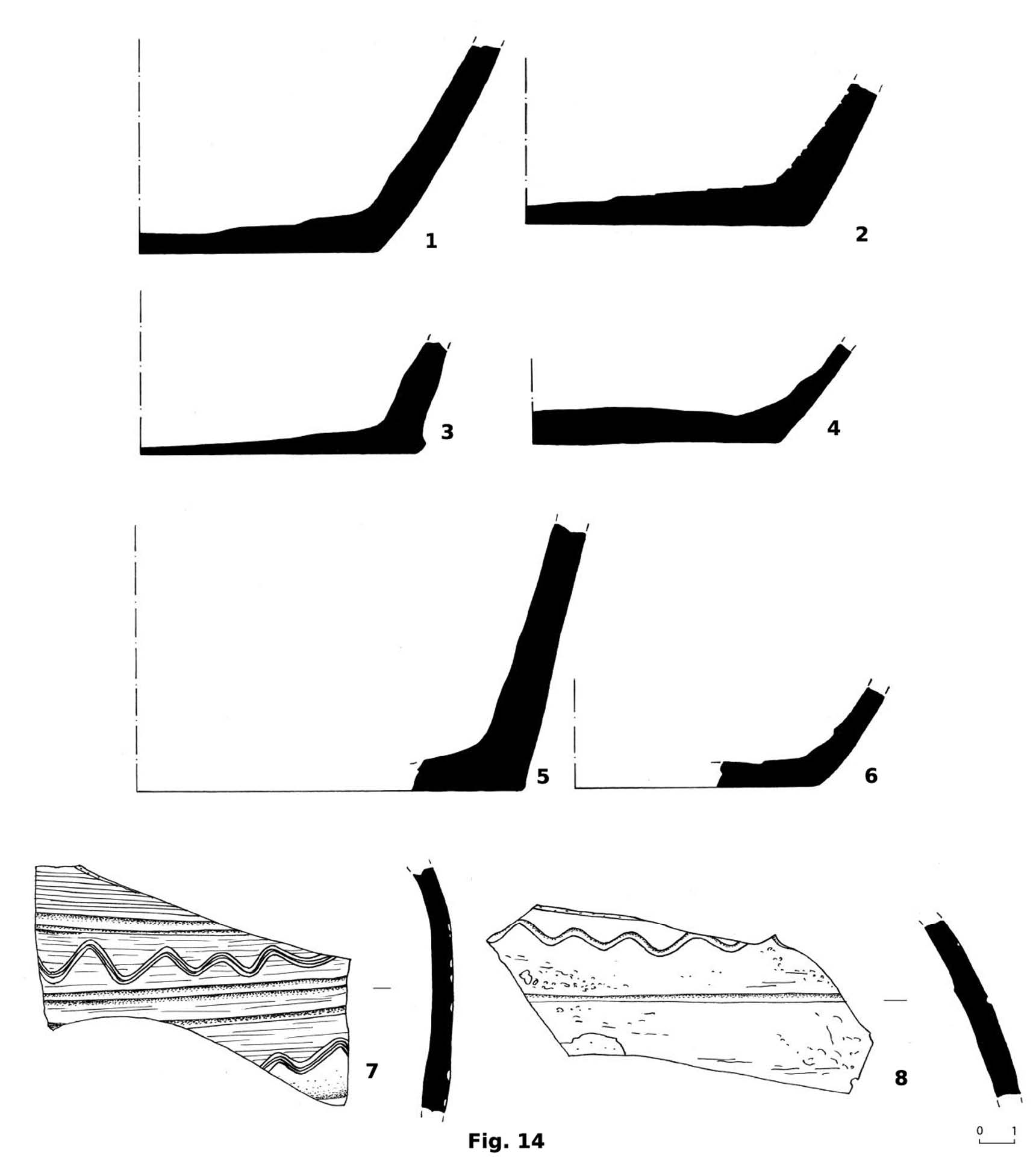
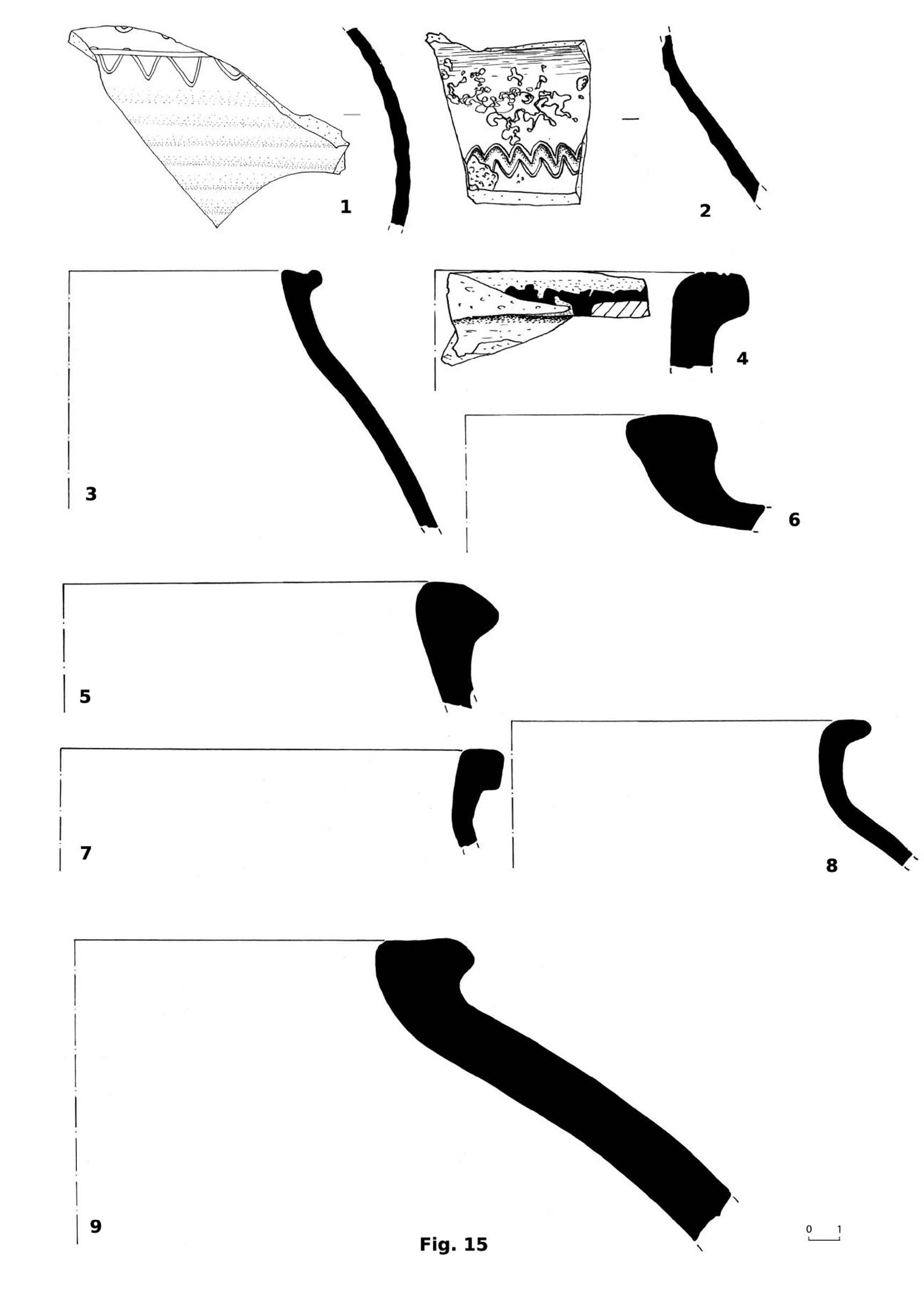
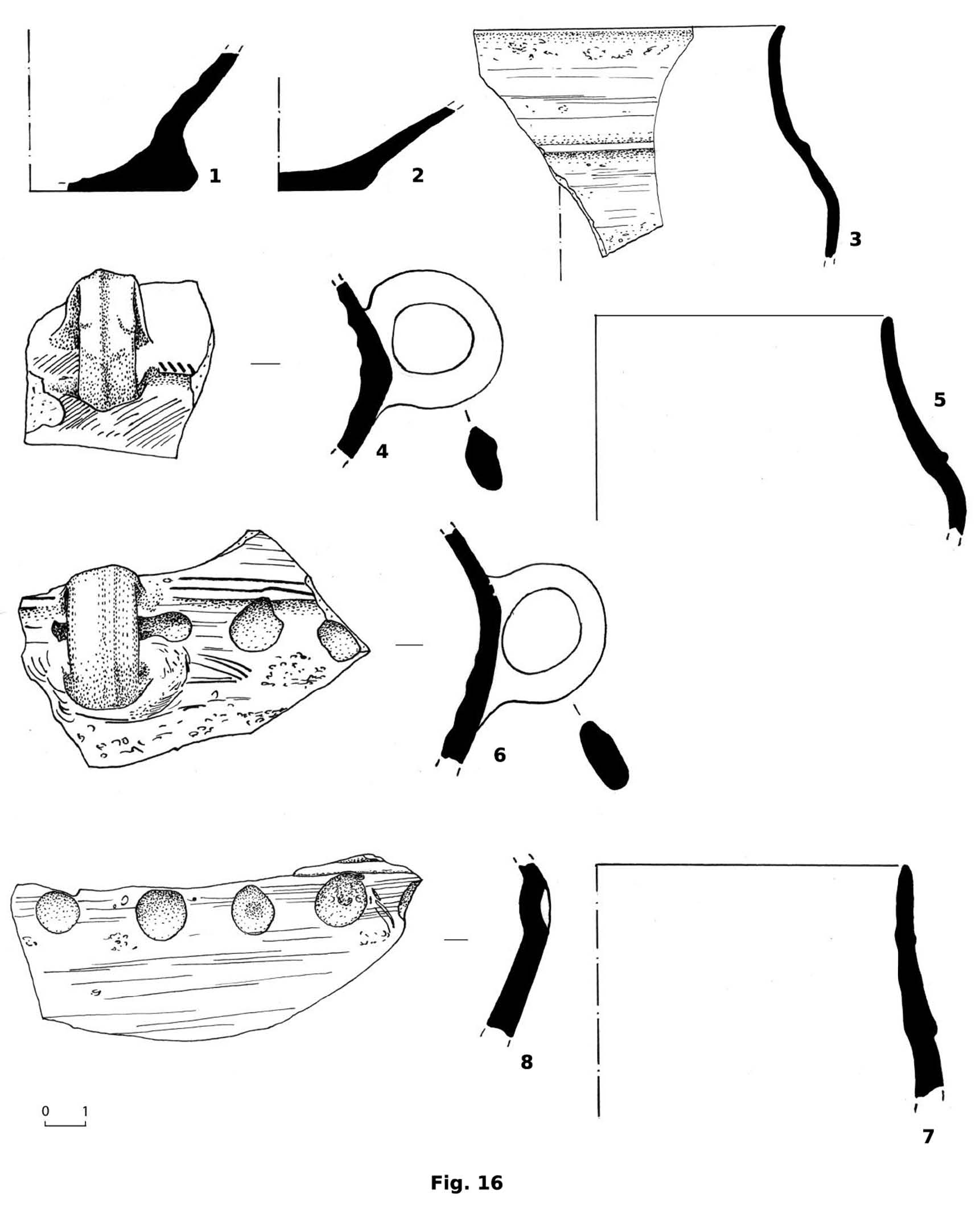
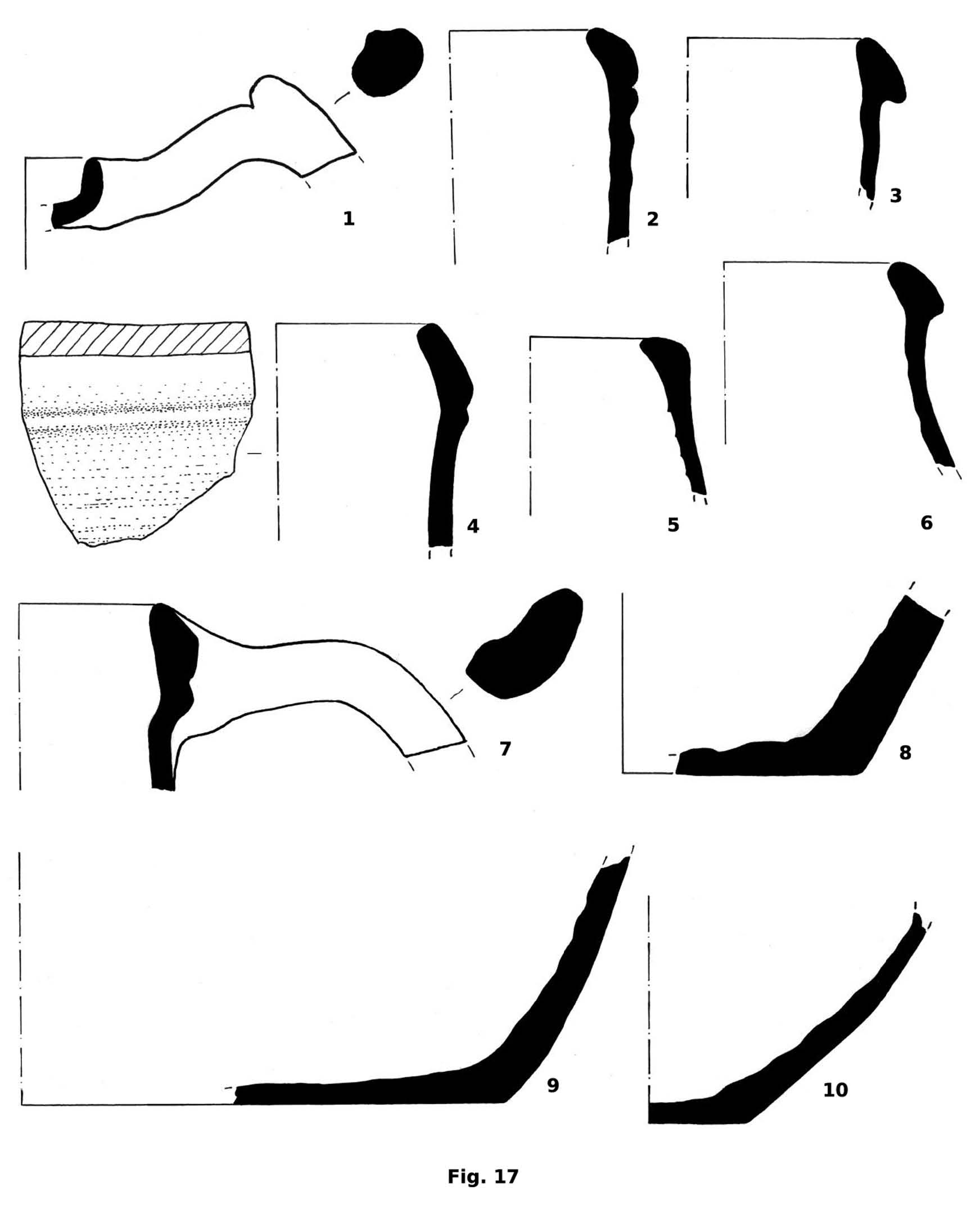
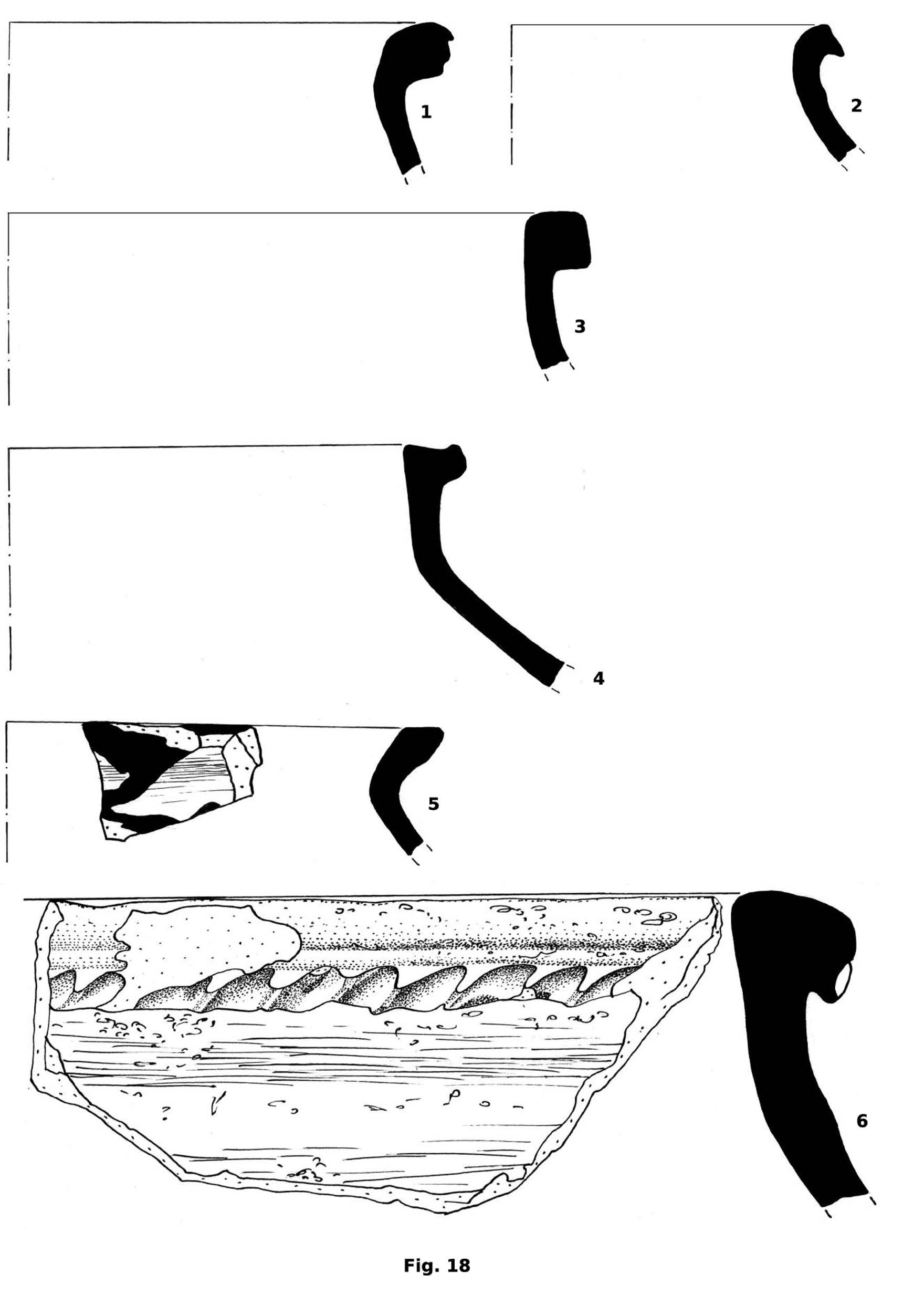
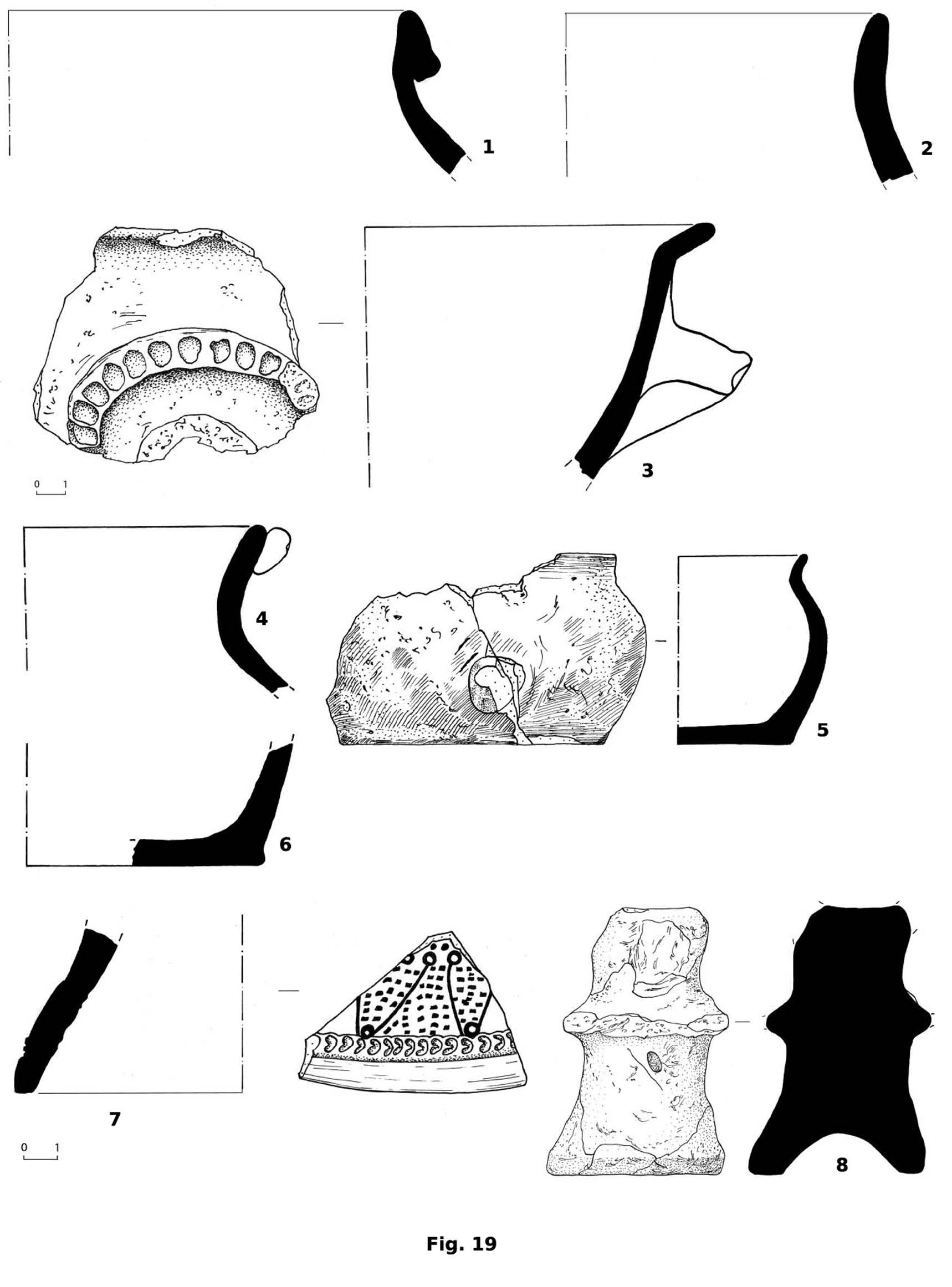
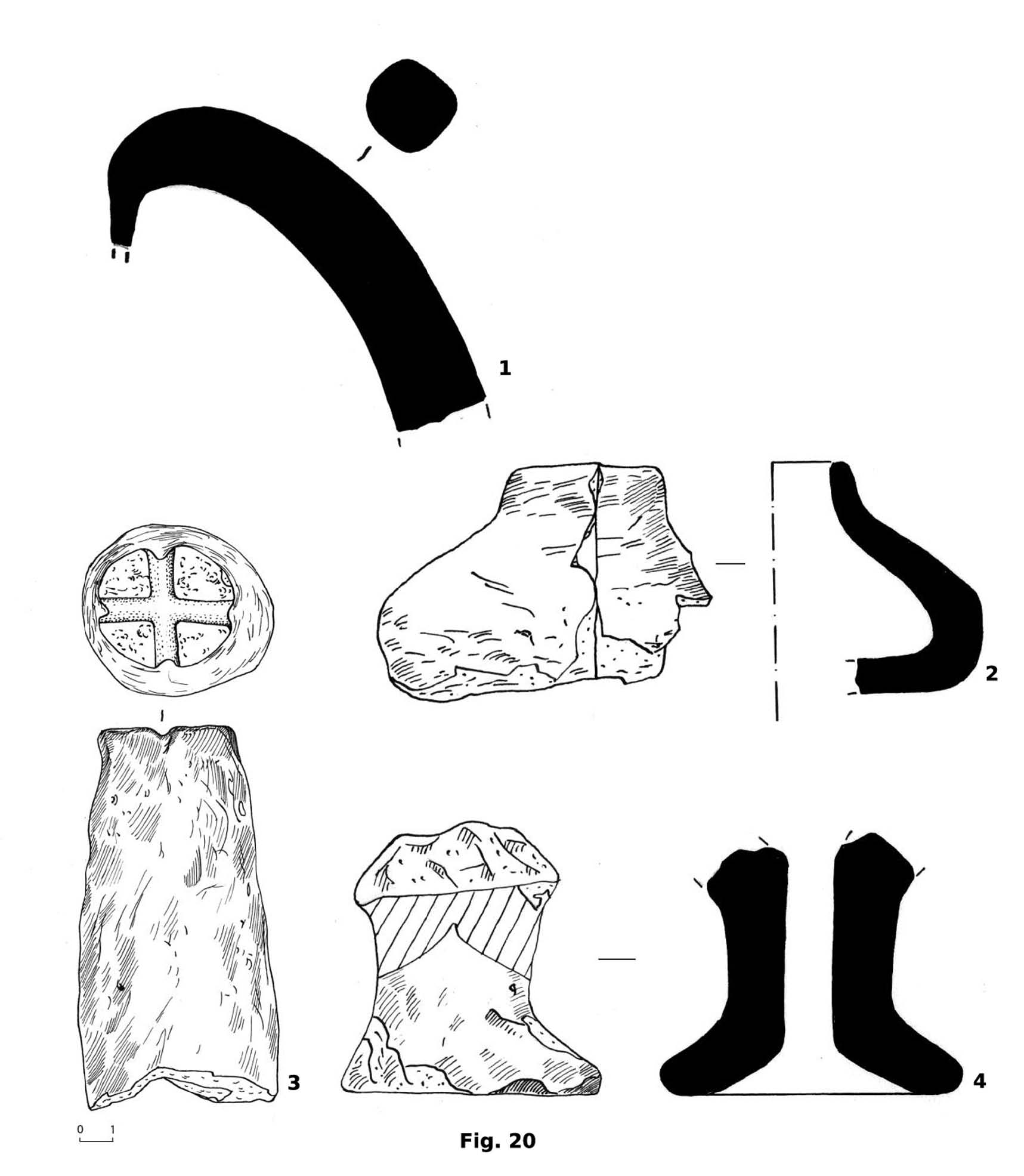
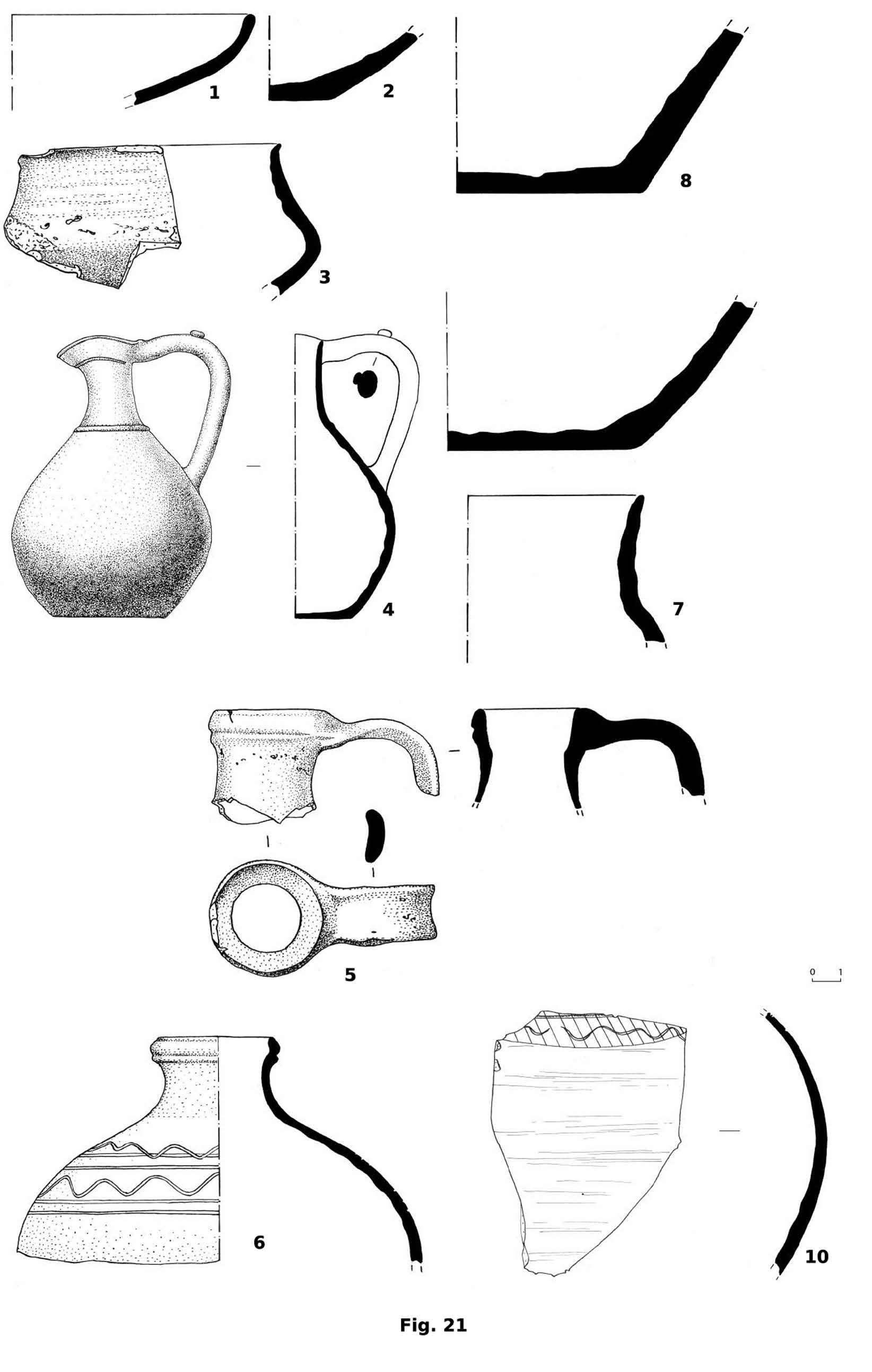
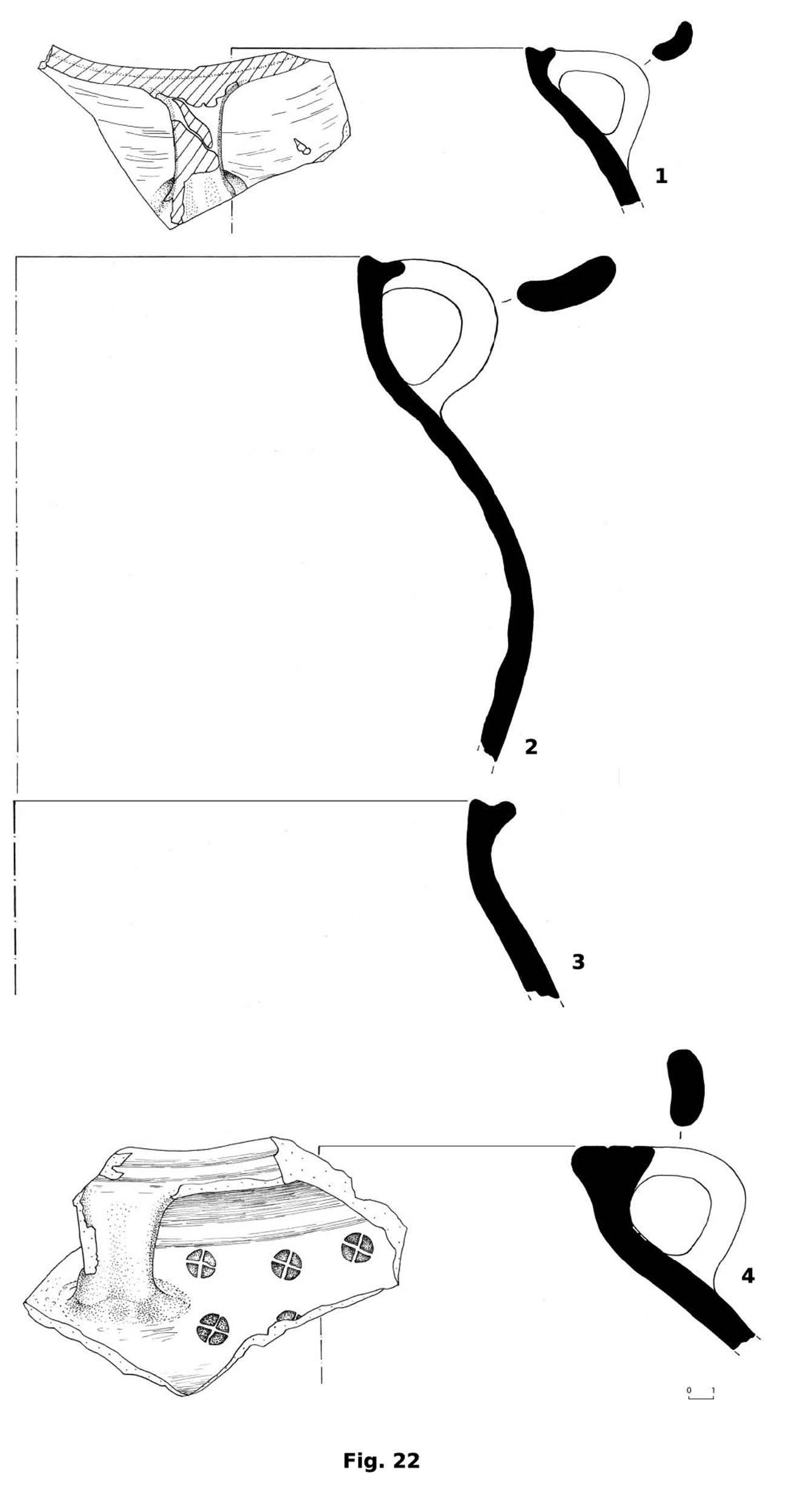
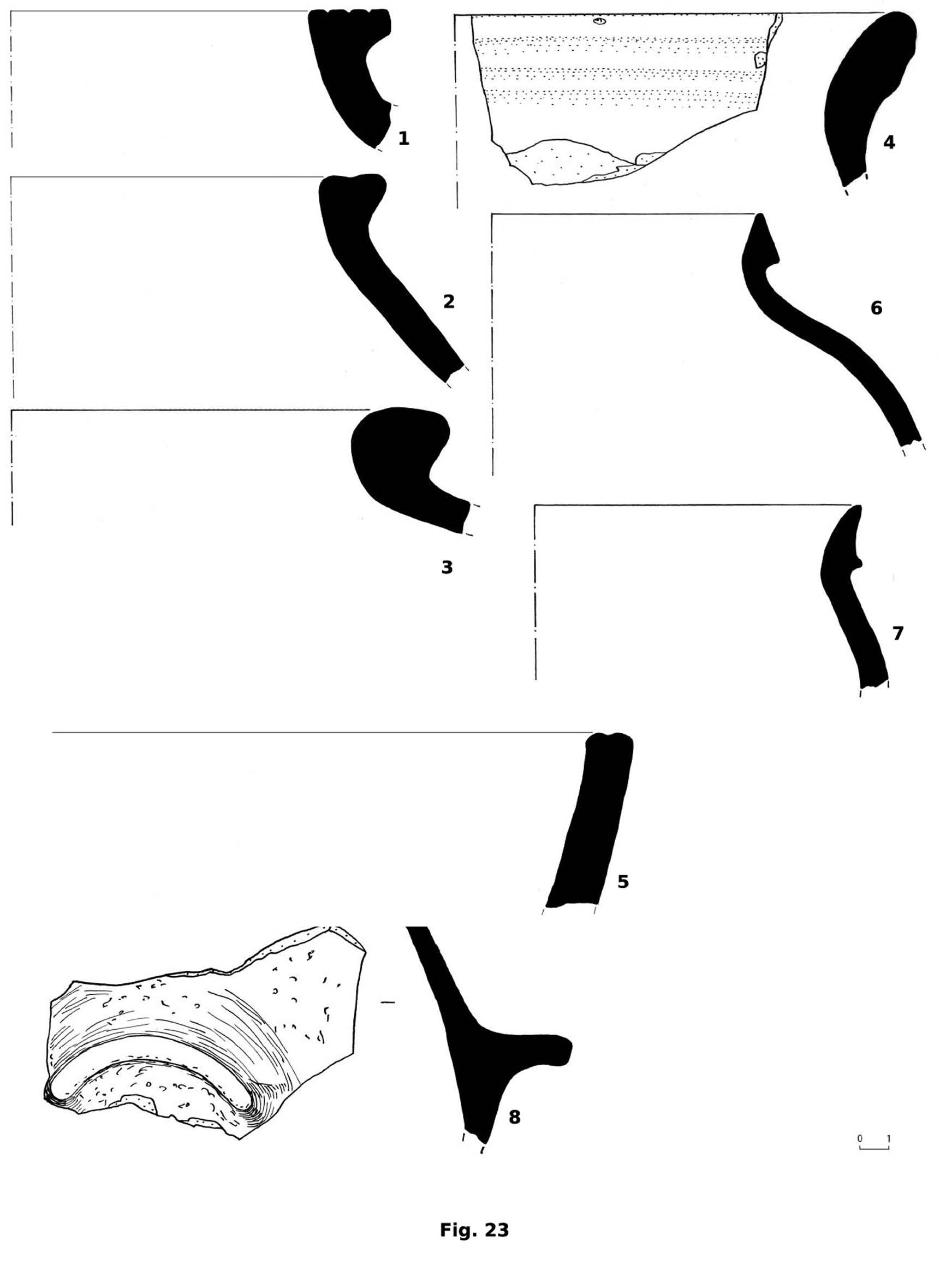
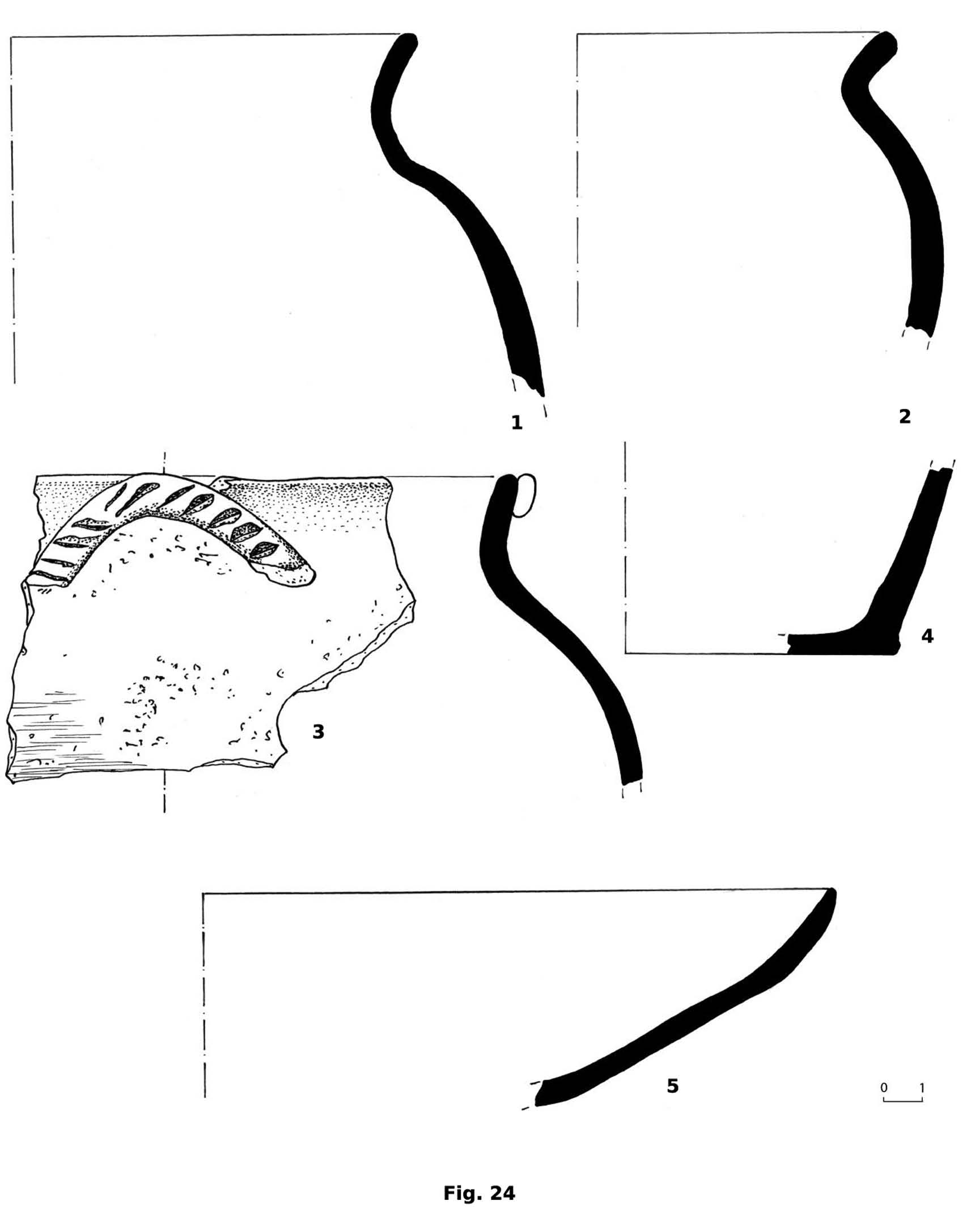
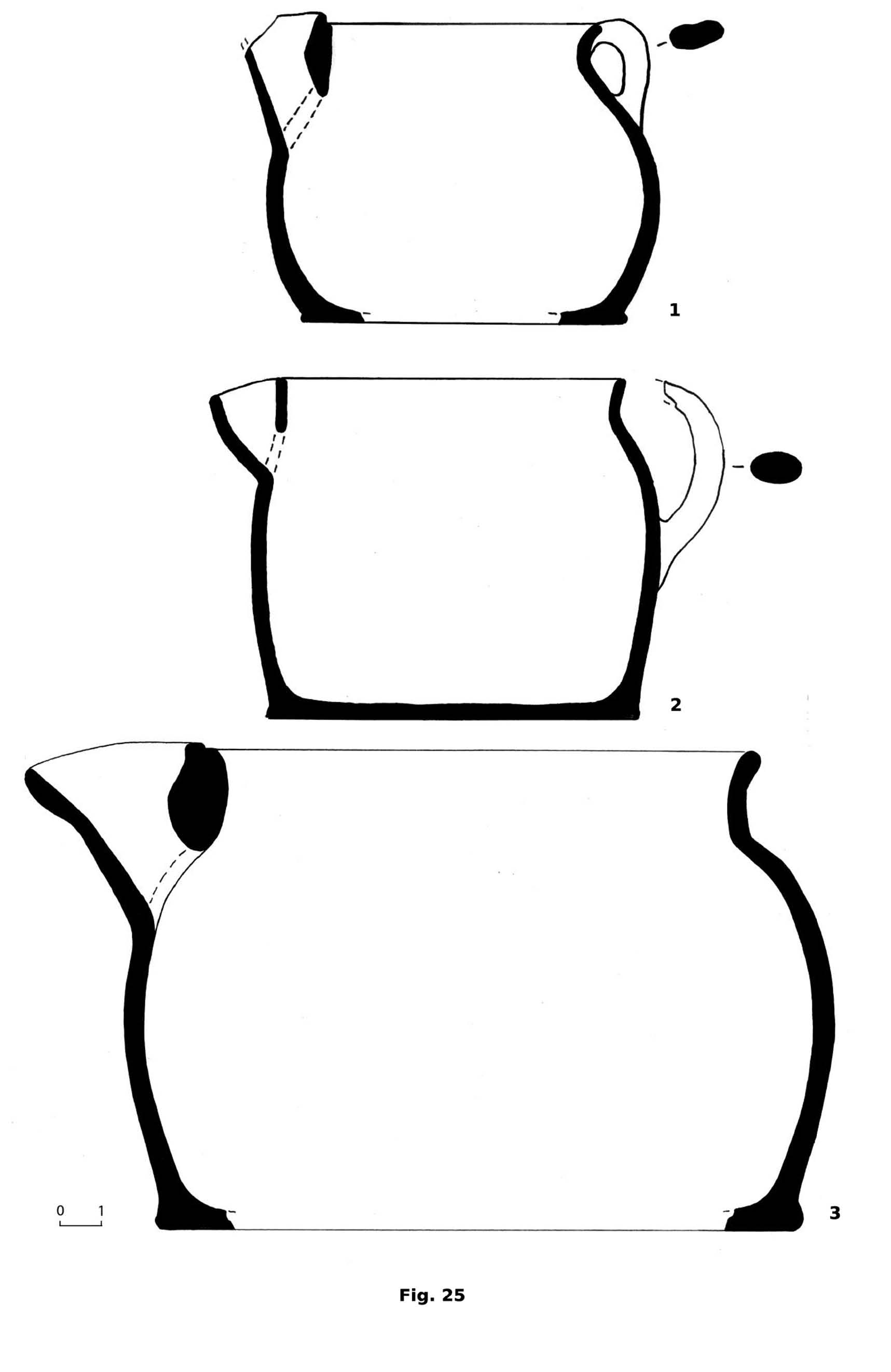
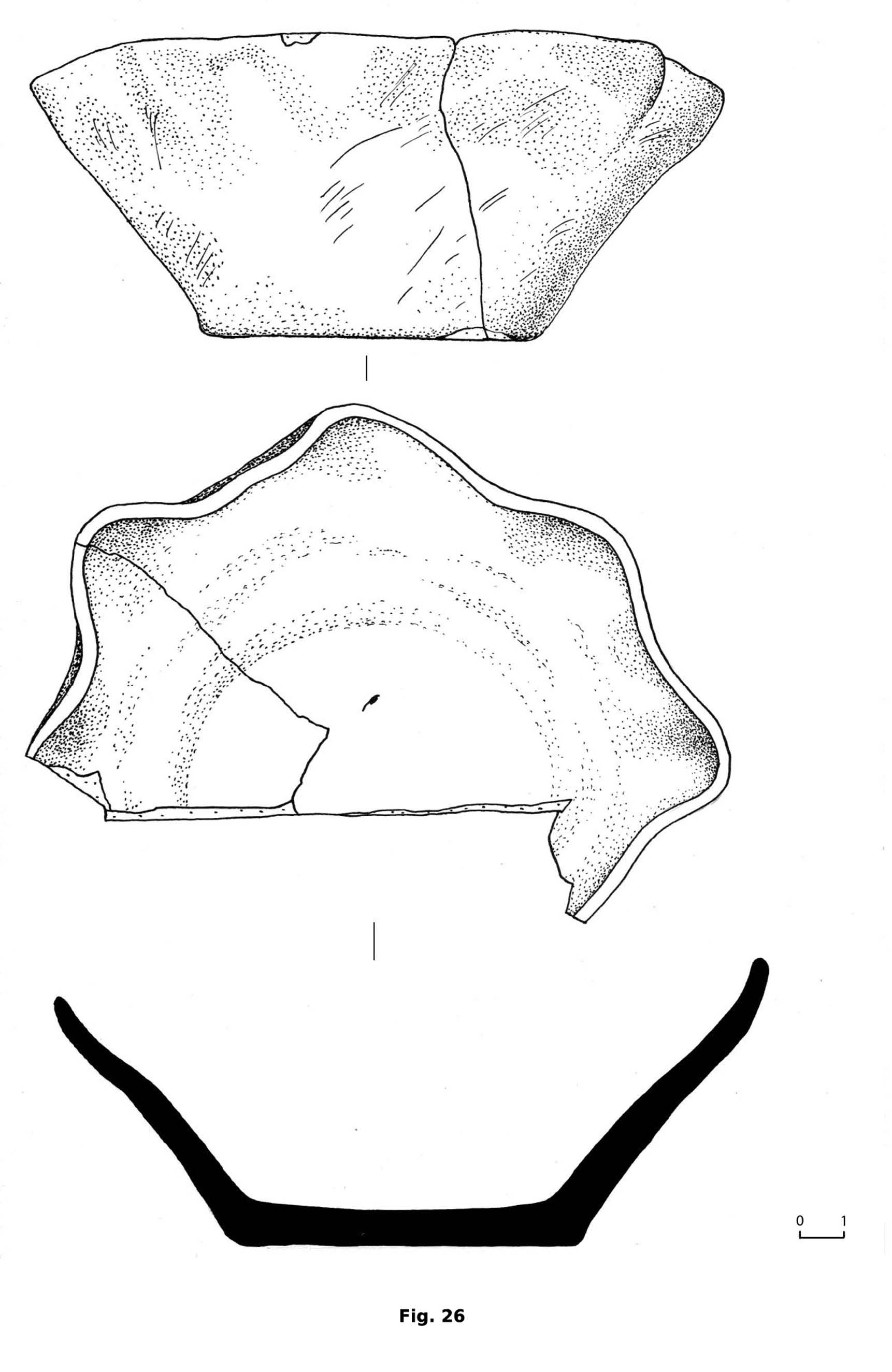
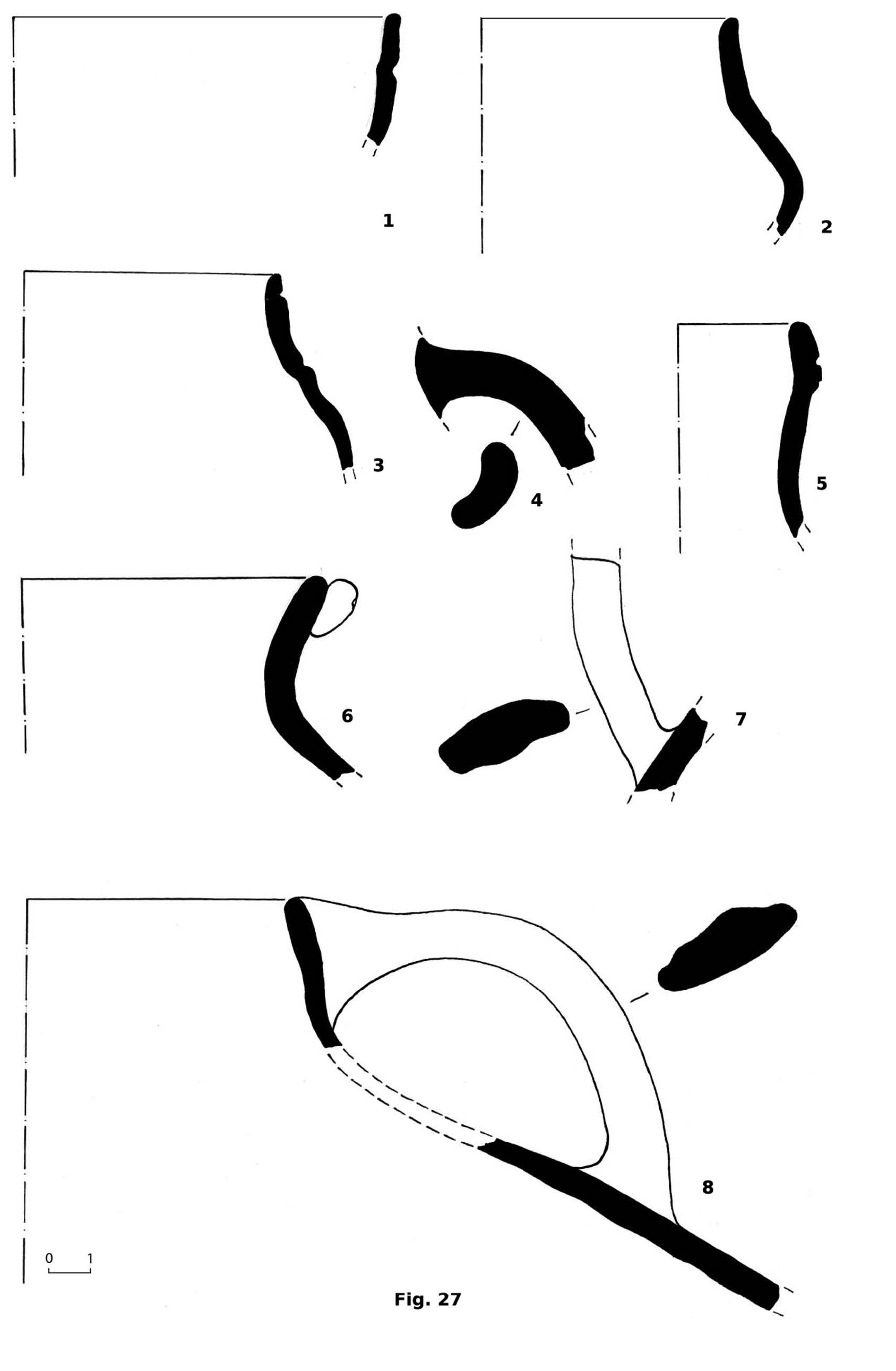
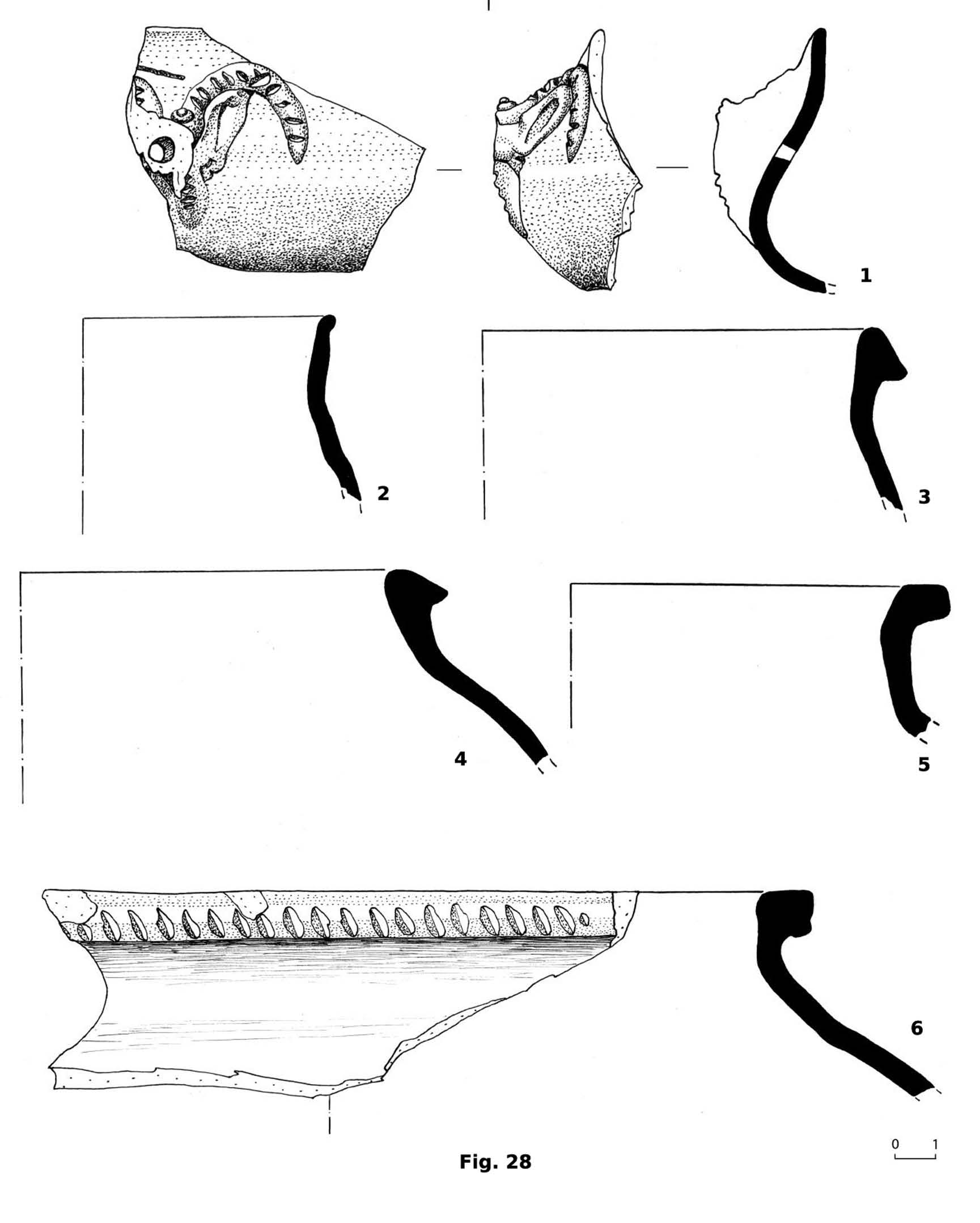
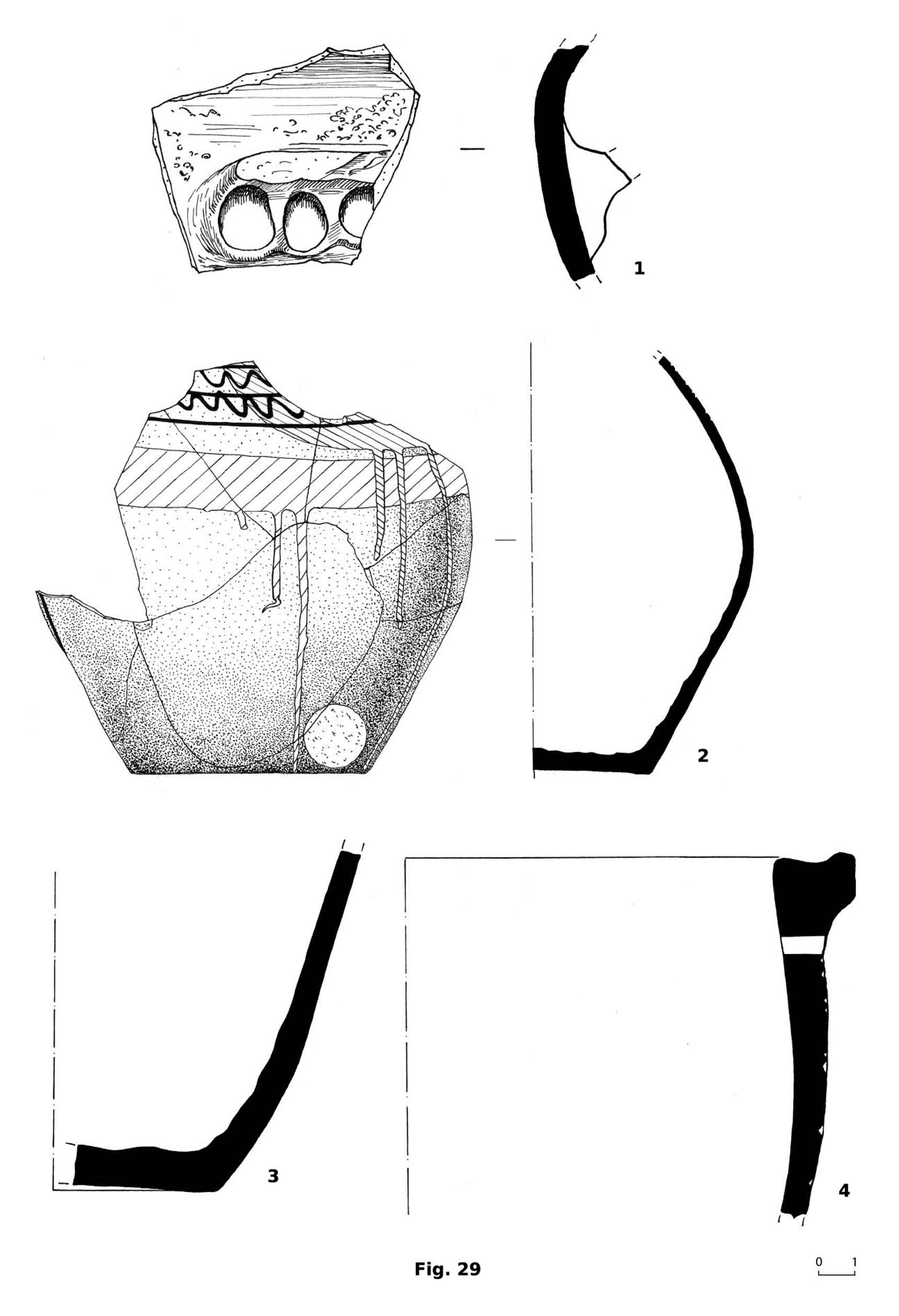
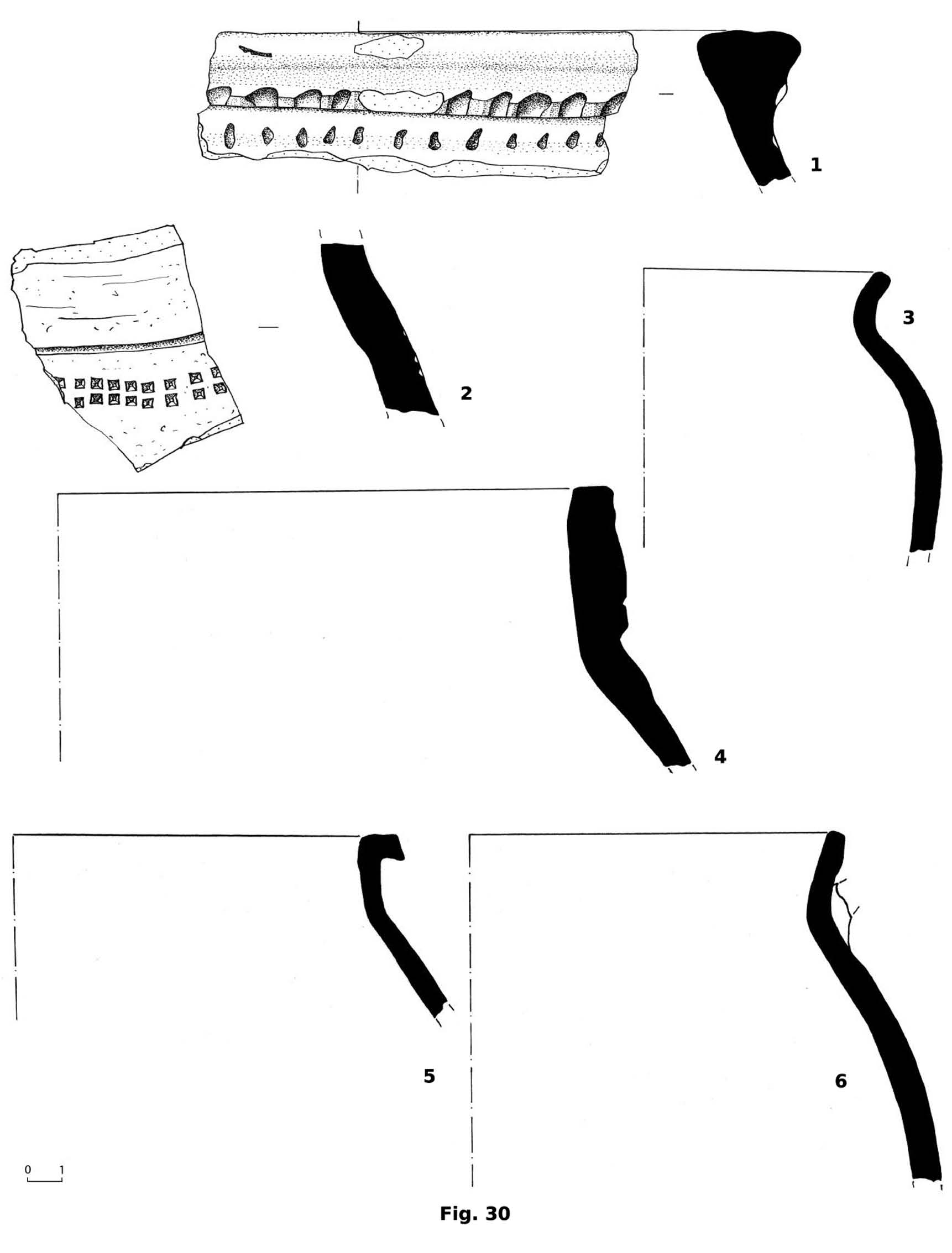
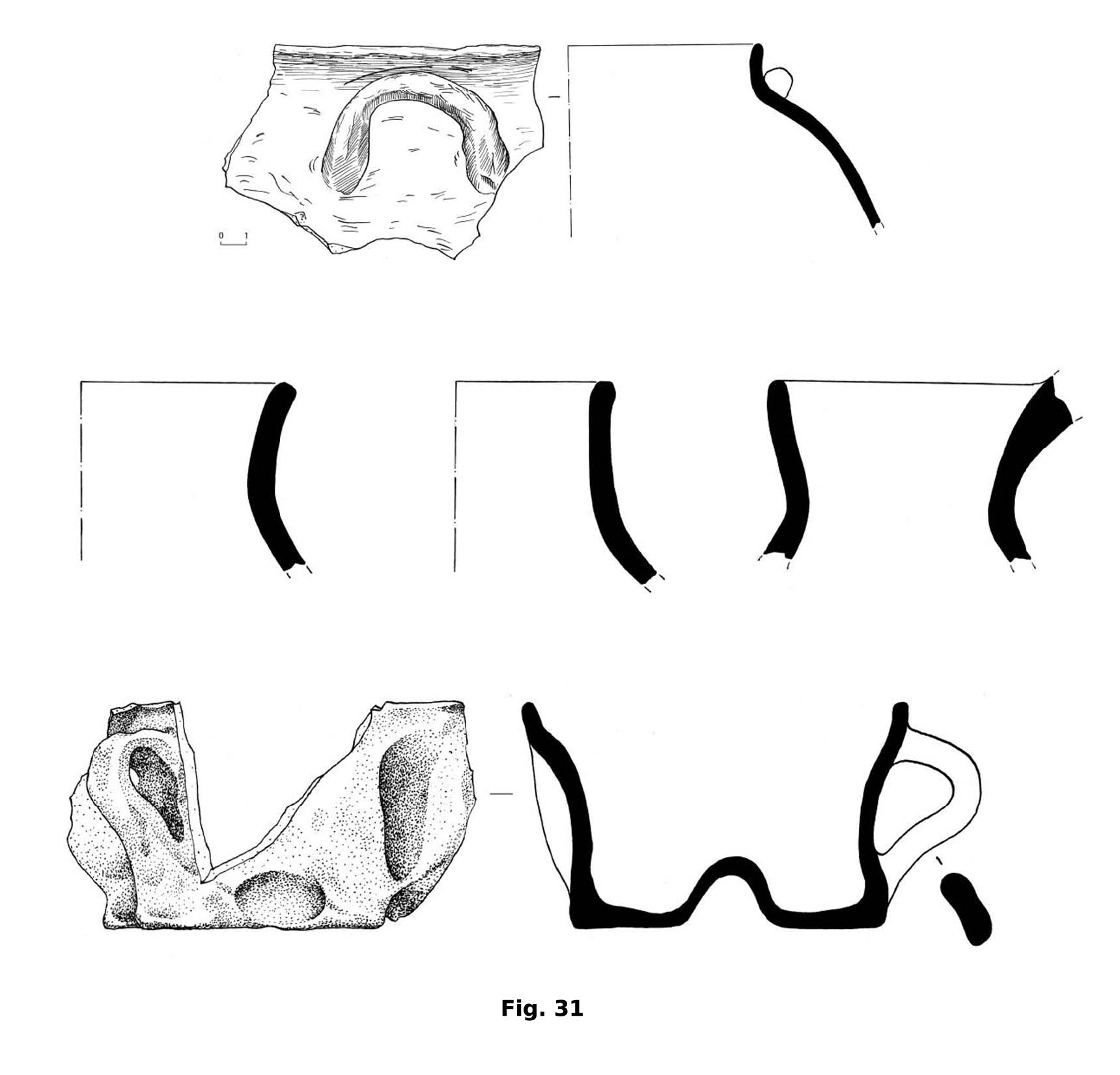
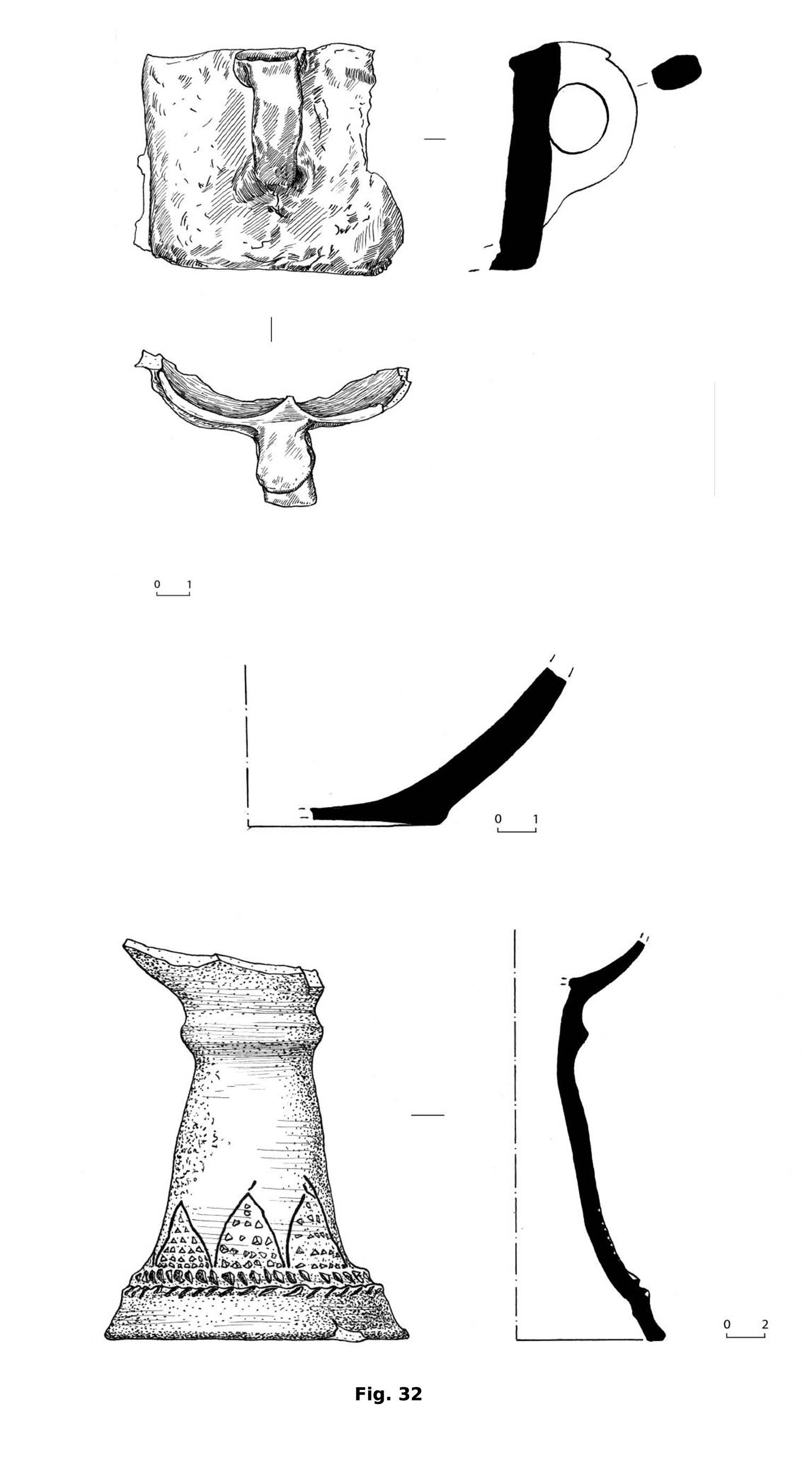
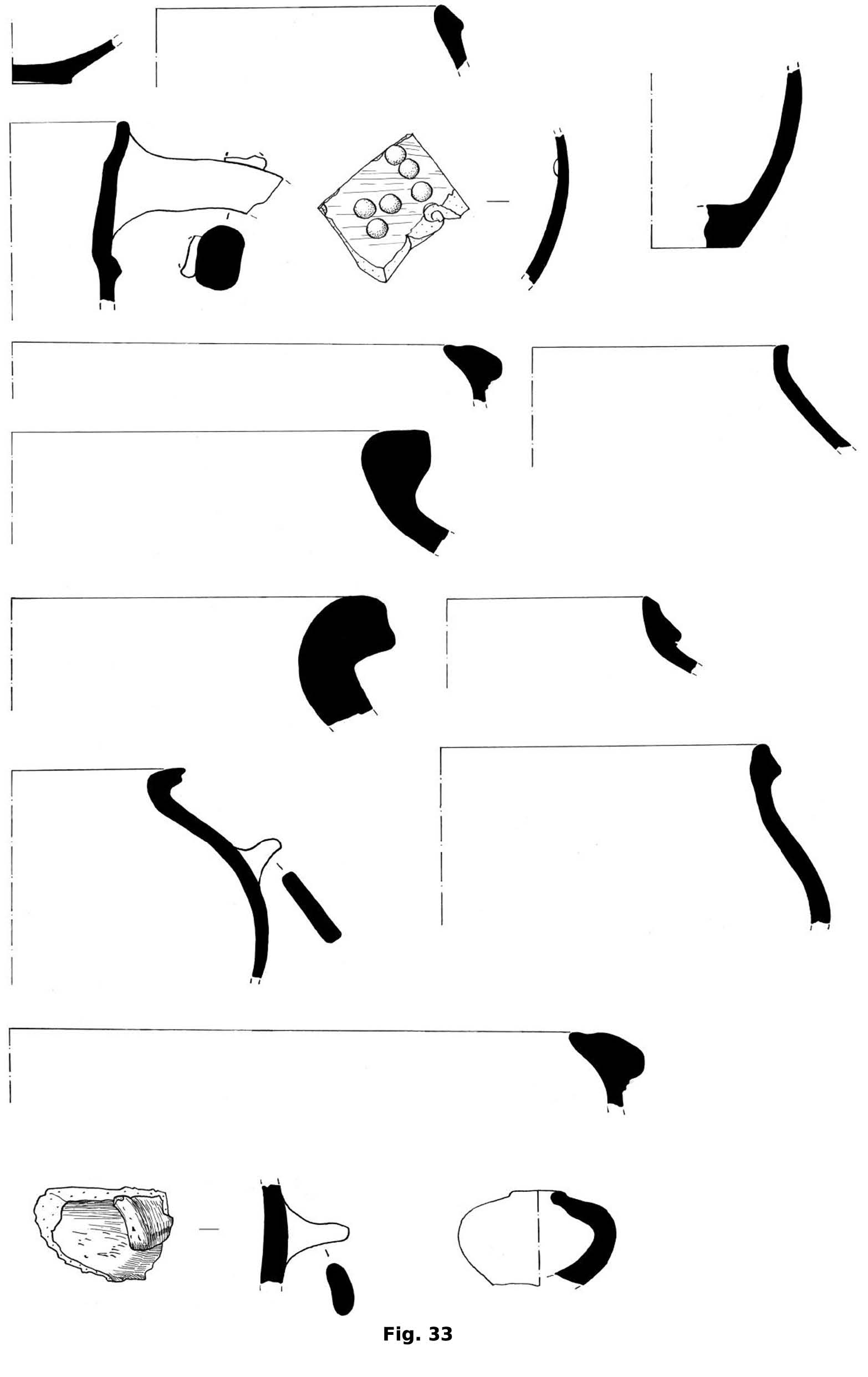
Sanjar-shah Excavations Report, 2013
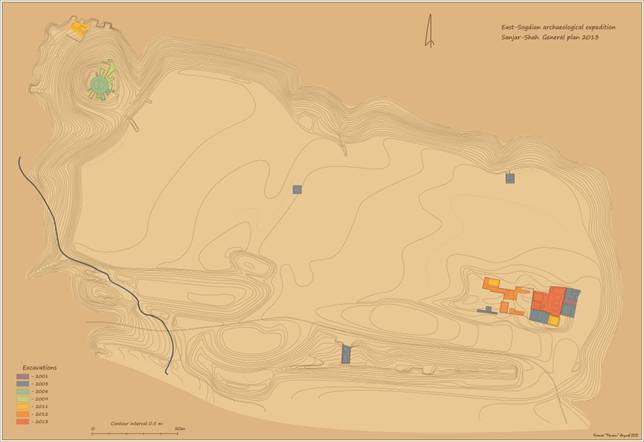
Fig. 1. Sanjar-shah. General plan of the excavated areas.
In the 2013 season the excavations were continued in the Area 2. New plans of the Area 1 (the round tower/donjon) were prepared based on new, precise measurements and calculations (Fig. 2-4). In addition, archaeological survey was carried out in the vicinity of Sanjar-shah, along the northern bank of Zeravshan river.
Area 2
The excavations in this area were initiated in 2003 and resumed in the 2011 season (Figs. 5-13). We intend to uncover sufficient area of what appears to be a residential quarter of Sanjar-Shah, in order to achieve better understanding of the administrative and social structure of the Sogdian town. In the 2013 season, seven rooms were excavated, belonging to one or perhaps to two different households.
Room 8 (4.1 x 2.2 m) is located to the west of the domed hall excavated in 2003. Its walls are very well preserved up to the height of 2.4 m (Fig. 14). The eastern wall is plastered. There is a narrow passage (0.85 m) in the southwestern corner. Attached to the northern wall, there are remains of another sufa. In the south wall, two niches were uncovered with remains of a frying pan and traces of burning.
The ceramics that were found on the floor of this room include two almost complete cooking pots (Fig. 32), a vessel with a zoomorphic sprout (Fig. 30) and a large cooking pot sunk into the sufa. In addition to the ceramic material, a fels with a legend “al-Ashas b. Yahya” was found in a fragment of a wall belonging to the second floor. It was minted in Samarkand between in 761-762/144. Another coin, dated to the first quarter of the 8th c. CE and minted in Panjikent was found in the fill in the southwestern corner.
Room 9 (3.4 x 2 m) is located to the north of Room 8 (Fig. 15). Its western wall is preserved up to the height of 2.2 m. In the southern part of this wall, there is a passage (1.6 x 1 m) leading to Room 15. In the southern and northern walls, niches were made for the wooden beams which probably originally supported mezzanines. The eastern wall was very carefully and smoothly plastered. Some fragments are very well preserved. At the height of 1.5 m. from the lower floor level there is a small niche for the lamp. It is worth noting that this room does not connect with the neighboring Rooms 8 and 10.
A very rich ceramic assemblage was found in the fill and on the floor of Room 9. In additional, a coin of Turgar (Type I) dated to the 8th c. CE was uncovered in the fill under the second floor, which gives a terminus post quem for this floor.
Room 10 (3.3 x 3.3 m) is adjacent to the Room 9 from the north (Fig 16). The walls in this room are also remarkably well preserved, up to the height of 3.3 m. In the southern wall there is an opening (0.85 m) to the Room 15. A sufa (0.7-0.9 m) ran along all the walls in this room. The floor was paved with mud-bricks. A millstone and a runner were found on it.
Notable finds include a base of incense burner (Fig. 31) and another coin of Turgar (Type I) found on the surface of the sufa in the southeastern corner. Other numismatic finds from this room include Sogdian coins minted by a local Turkic ruler dated to 786-793 CE, which were found in the fill above the floor, and two unidentified coins with square holes.
Room 11 (6.3 x 6 m) is adjacent to the Room 10 from the south and its western wall is bordered by the Room 15 (Fig. 17). It is interesting to note that the western wall was constructed on a stone fundament. A passage was made in this wall paved with a stone threshold.
In the southeastern corner, a small domestic bread oven (2.4 x 1.25 x 0.6 m) was excavated. Traces of burning were found on the floor. A small sufa (0.7 x 2.8) was installed in the southwestern corner. The ceramics from this room, for the most part consist of tableware and cooking battery, that confirm that this room served as a kitchen. It is also noteworthy that this room unlike the other rooms in this area, yielded no coin finds.
Room 12 (4 x 2.3 m) is separated from the previous rooms by a wall and by Room 15 (Fig. 18). Until the Room 15 is fully excavated it is impossible to establish whether Room 12 was part of the same house as Rooms 8-11, or it rather belonged to a different household. Its southern and eastern wall had foundations of pebbles. A L-shaped sufa (0.2 x 2.6 x 09 m) was found in the northern part of the room. Additional sufa (1,5 х 1 х 0,1 m) was installed in southwestern corner.
Room 13 (4.6 x 4.6 m) is located to the west of Room 12 and was connected to it by a passage (Fig. 19). Its northern wall was constructed on the foundation made of pebbles. In the southeastern corner there is a passage (0.7 x 1.2 m) to Room 3, excavated in 2003. The vault of the passage was supported by two wooden columns. Two sufas run along western and southern walls. A coin of Bukhara dated to the middle of the 8th century and an unidentified Sogdian coin with a square hole were found in this room.
Room 14 (6.6 x 1.8 m) is located to the south of Room 8. In this room, two architectural levels were identified (Fig. 20). During the second stage, a new wall of pebble was constructed above the original northern wall. In the west, there is a passage to Room 15. Two fireplaces, ashes and traces of burning were found on the sufa that run along the southern wall. In addition, there is a passage in the wall above the sufa. Another sufa was running along the northern wall. Three coins of Turgar dated to the middle of the 8th century were found in this room together with a fels minted in the third quarter of the 8th century.
Room 15 (15 x 2.2/0.9 m) is located to the west of the Rooms 8-11 (Fig. 21). It gave access to Rooms 8, 9, 10, 14 and to the Room D excavated in 2003. From the Room 15 there was no entrance to Room 12 and to the “Ramp Room 3”. Until the northern part of Room 15 is excavated it is impossible to tell whether it is actually a corridor or a street separating two different households. Along the eastern wall there are traces of narrow sufa (0.3/0.4 m). In several places fragments of vaults were preserved.
Survey
The archaeological survey of the area surrounding Sanjar-shah was conducted between 14 and 16 of September under the supervision of Alexey G. Akulov. In total, 21 sites were investigated, photographed and documented (Muborak-shah, Sangi Surokh, Tepa Yori, Kushtepa, Kiri-Hasan, Kiri-Nosir, Tursun-Kampyr, Kartepa, Mushkhona, Mugtepa, Oktepa and several unnamed sites) (Figs. 22-29). Some soundings were made and ceramics were collected from the surface in order to determine the life span and the approximate chronology of the sites. Sogdian ceramics were discovered on 17 sites.
One of the goals of this survey is to establish the administrative structure of the region and the limits of the territorial expanse of the unit with a center in Sanjar-shah. Hopefully, the results will allow better understanding of the relations between Sanjar-shah and Panjikent – the largest site in the region of the Upper Zeravshan.
Summary and further prospects for the 2014 season
So far, the results obtained during the exploration of the Area 2 clearly show a typical residential area, of a similar character to the neighboring Panjikent and other Sogdian sites. In 2014 we intend to excavate the area between Rooms 2-6 and Rooms 8-15 in order to establish the plan of this residential quarter. Further investigations should clarify the number of households in this area and their exact plan. This will provide us some insights regarding the social structure of the town and its inhabitants.
In 2012 ten fragments of burnt wooden beams ca. 20 cm in diameter, and a burnt panel with traces of carving, (40-60 cm wide) were found in Room 3. They were covered over, since no restorer was present on the excavations. In 2014 we intend to re-excavate this room and clear the wooden fragments with the help of a professional restorer from the Hermitage Museum. Based on the Penjikent material, there is every reason to suppose that this room or other rooms of this household can also contain fragments of paintings.
In addition, we plan to investigate the area adjacent to the Round Tower/Donjon from the northeast in order to understand the relation between the Tower and the town. One should note that the plan of the Sanjar-shah Round Tower is unique and finds no ready parallels in the Sogdian fortifications. Therefore, the site of Sanjar-shah could significantly contribute to the study of the Sogdian architecture.
Sharof Kurbonov, Alexey Akulov, Alexey Kossykh (ed. and tr. by Michael Shenkar). Drawings and pictures by Alexey Akulov and Elena Bouklaeva.
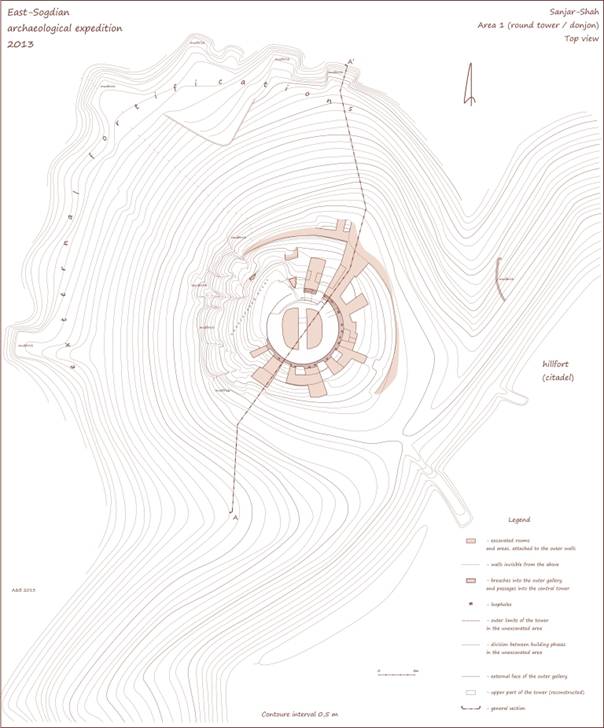
Fig. 2. Sanjar-shah. Area 1. Round Tower/Donjon, Upper Level.
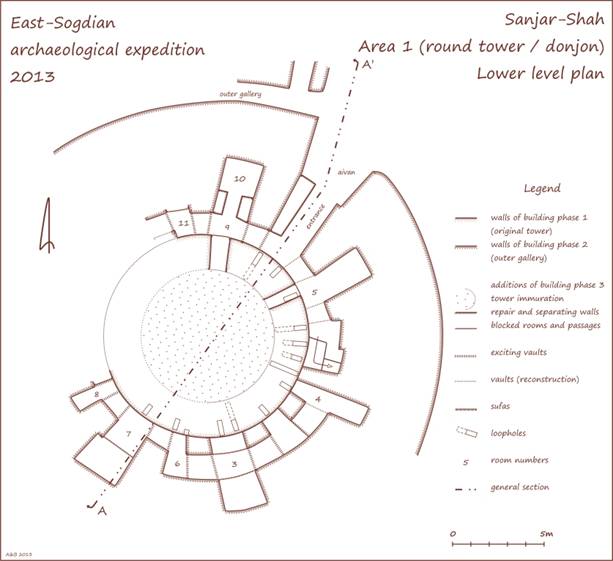
Fig. 3. Sanjar-shah. Area 1. Round Tower/Donjon, Lower Level.

Fig. 4. Sanjar-shah. Area 1. Round Tower/Donjon, Cross-Section A-A’.
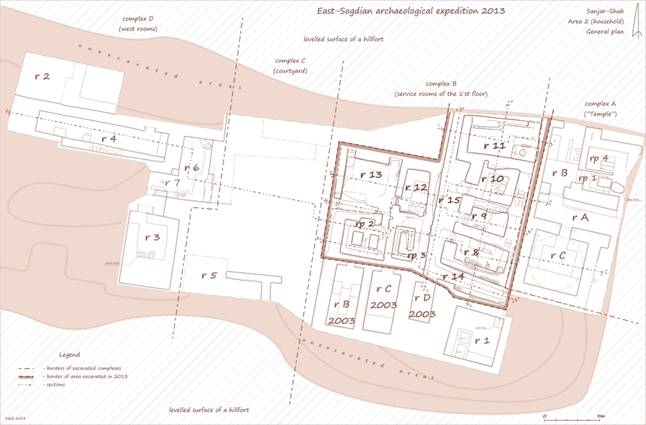
Fig. 5 Sanjar-shah. Area 2, General Plan.
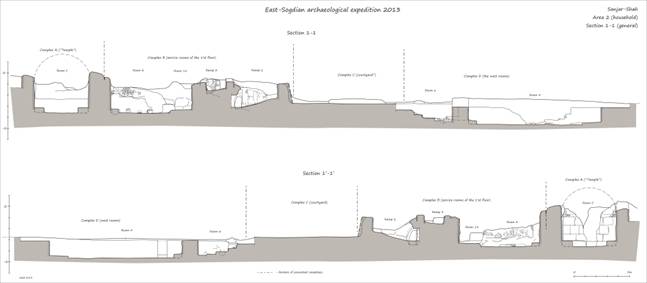
Fig. 6. Sanjar-shah. Area 2, Section 1-1.
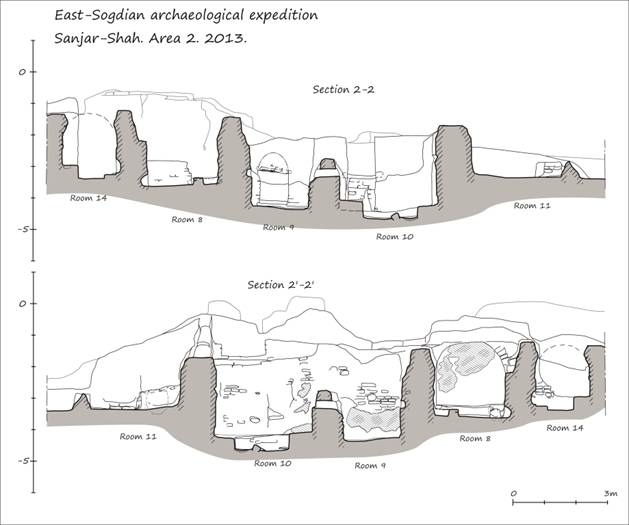
Fig. 7. Sanjar-shah. Area 2, Section 2-2.
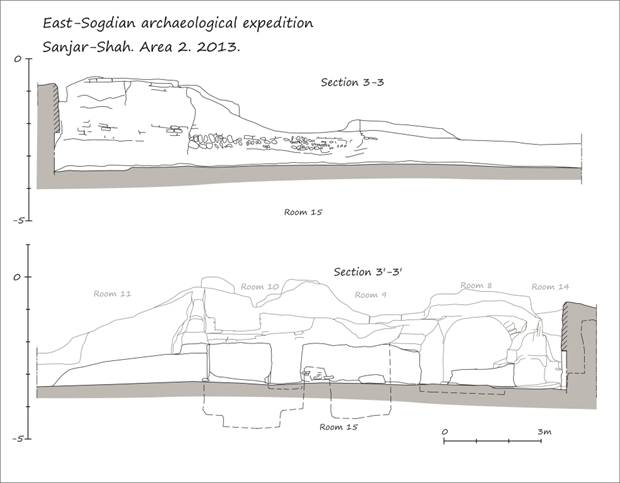
Fig. 8. Sanjar-shah. Area 2, Section 3-3.
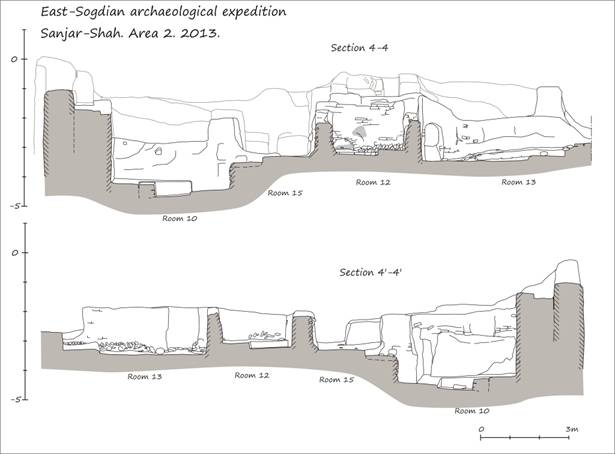
Fig. 9. Sanjar-shah. Area 2, Section 4-4.
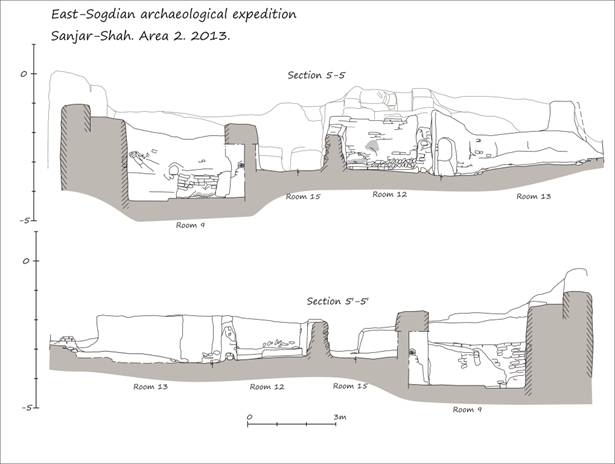
Fig. 10. Sanjar-shah. Area 2, Section 5-5.
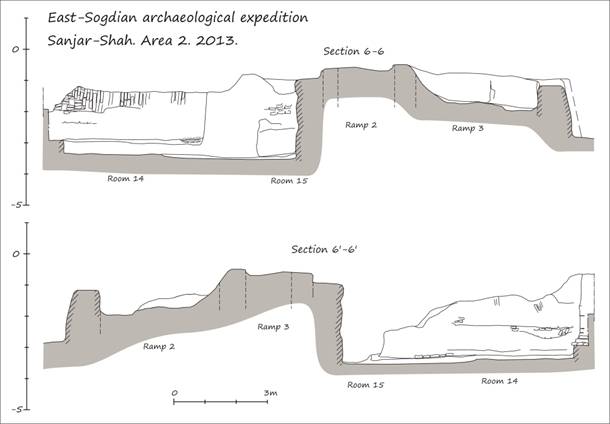
Fig. 11. Sanjar-shah. Area 2, Section 6-6.
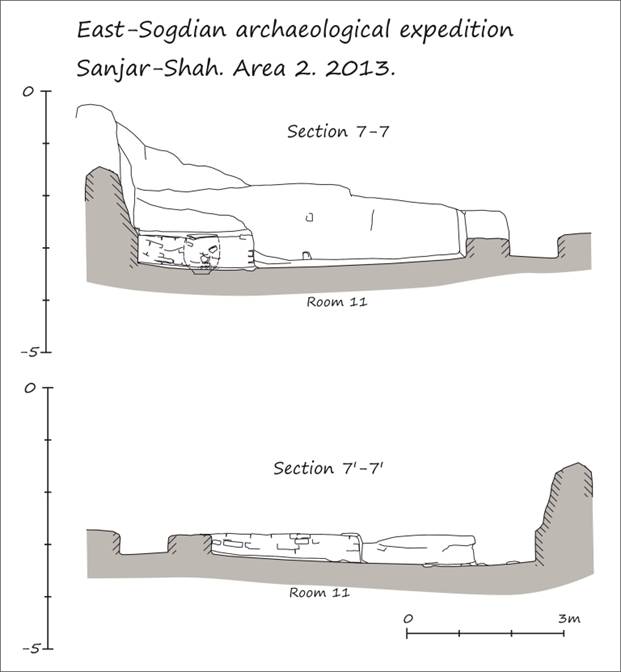
Fig. 12. Sanjar-shah. Area 2, Section 7-7.
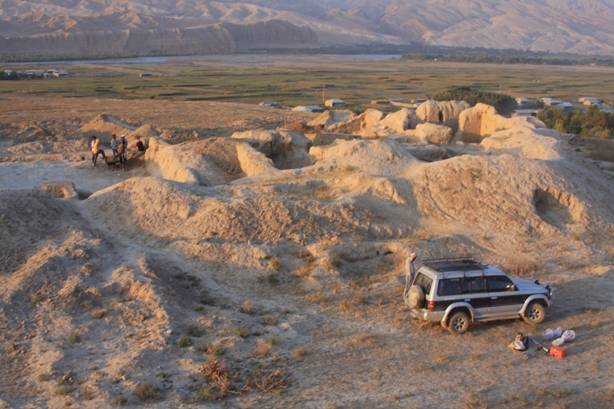
Fig. 13. Sanjar-shah. Area 2, view from the south.
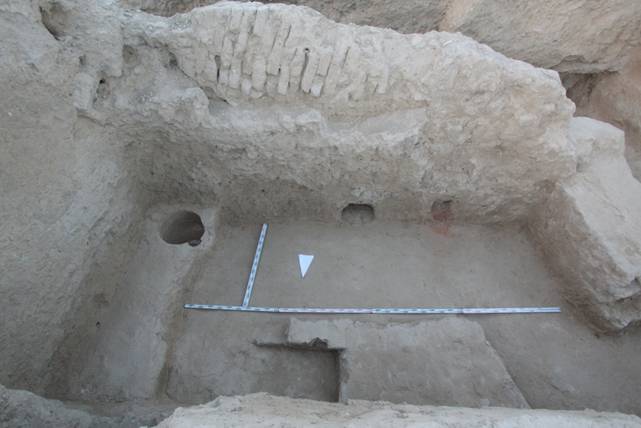
Fig. 14. Sanjar-shah. Area 2, Room 8.
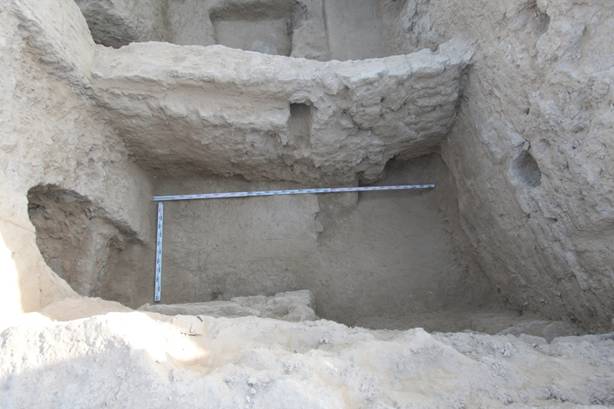
Fig. 15. Sanjar-shah. Area 2, Room 9.
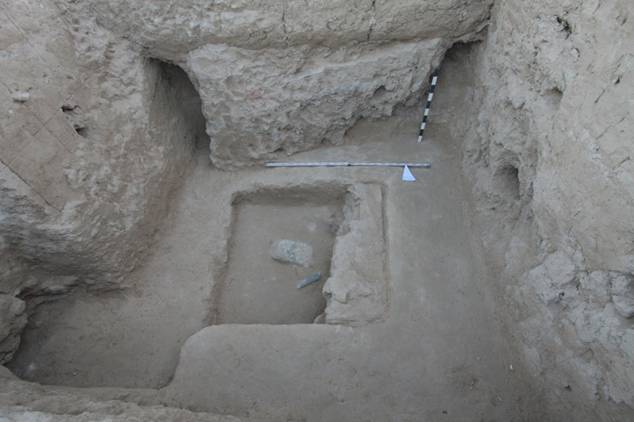
Fig. 16. Sanjar-shah. Area 2, Room 10.
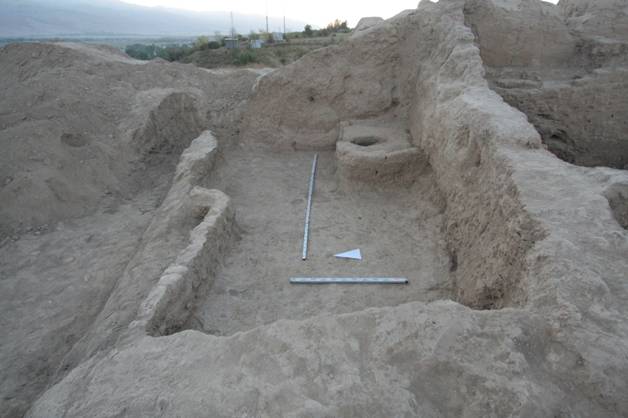
Fig. 17. Sanjar-shah. Area 2, Room 11.
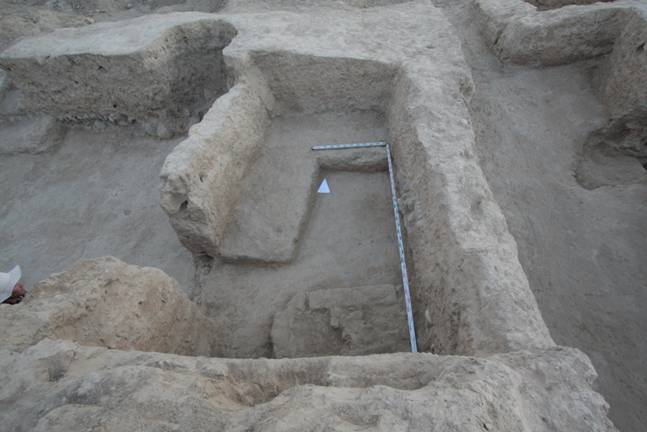
Fig. 18. Sanjar-shah. Area 2, Room 12.
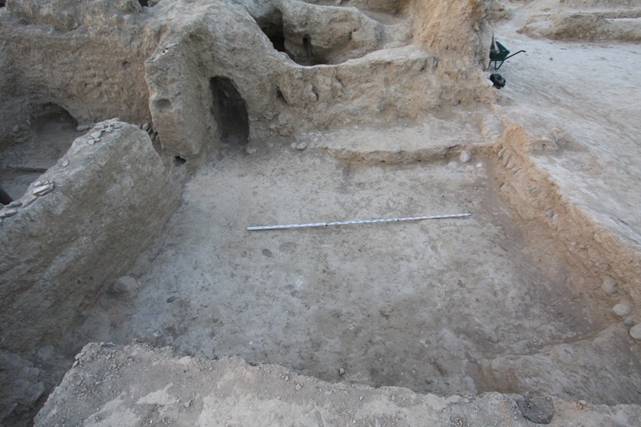
Fig. 19. Sanjar-shah. Area 2, Room 13.
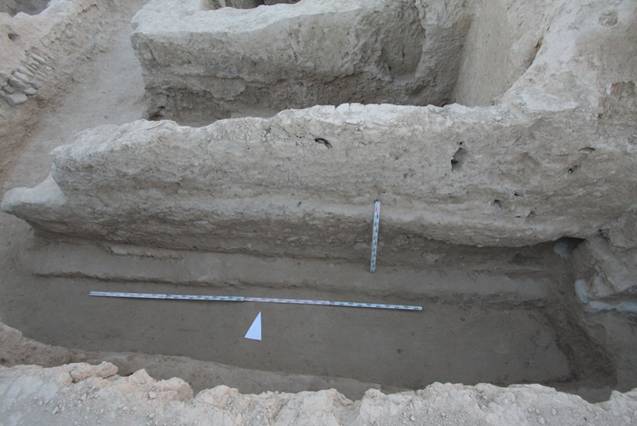
Fig. 20. Sanjar-shah. Area 2, Room 14.
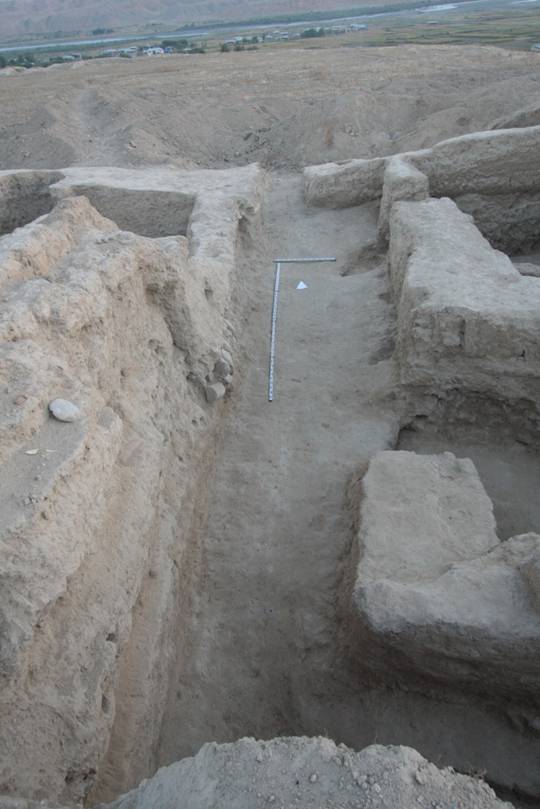
Fig. 21. Sanjar-shah. Area 2, Room 15.
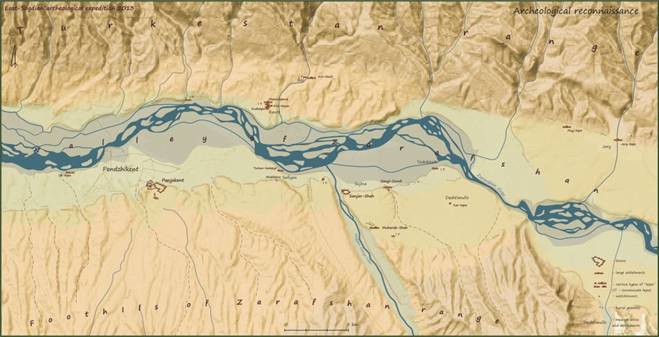
Fig. 22. Archaeological map of the Upper Zeravshan Region.
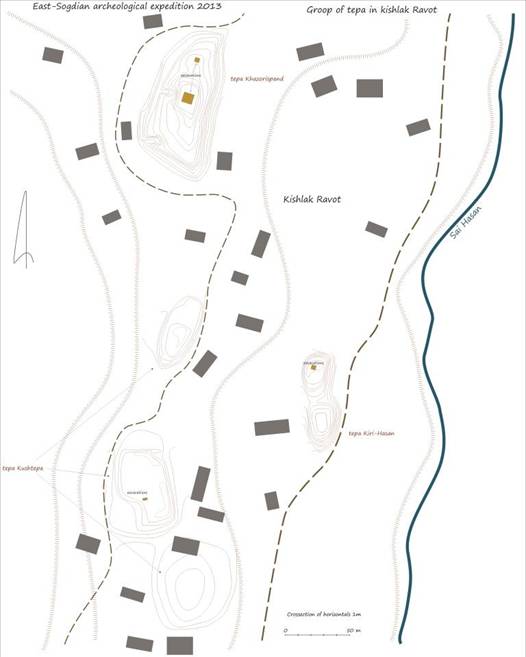
Fig. 23. Group of sites near Kishlak Ravot.
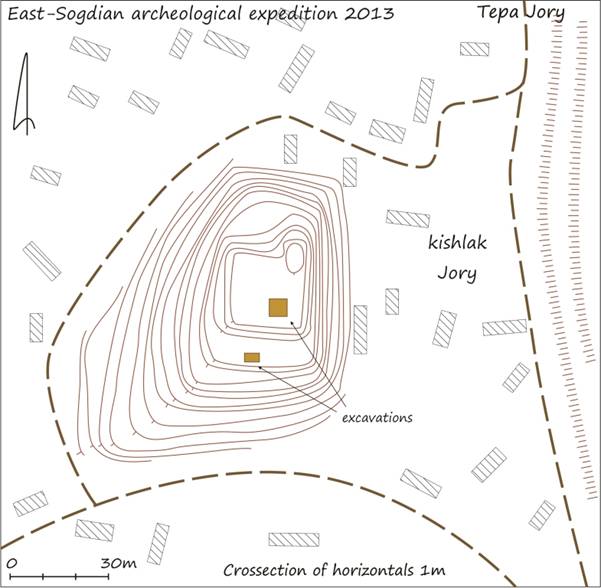
Fig. 24. Tepa Yory, general plan.
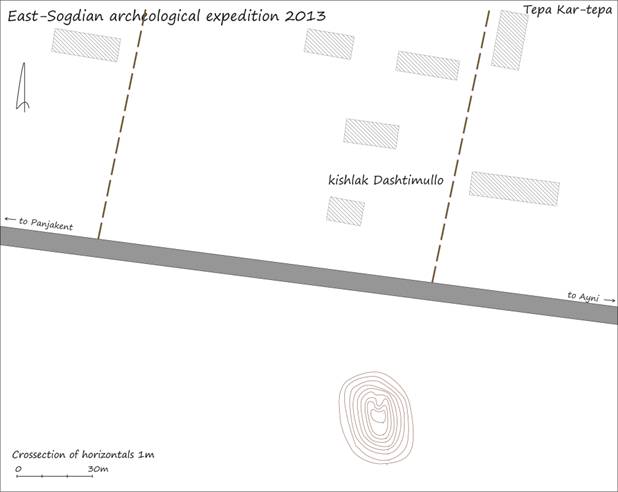
Fig. 25. Kartepa, general plan.
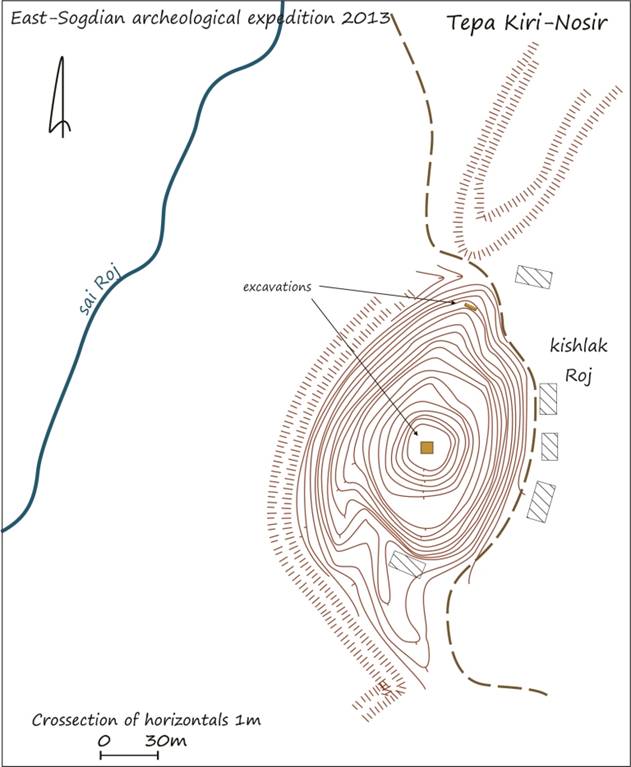
Fig. 26. Tepa Kiri-Nosir, general plan.
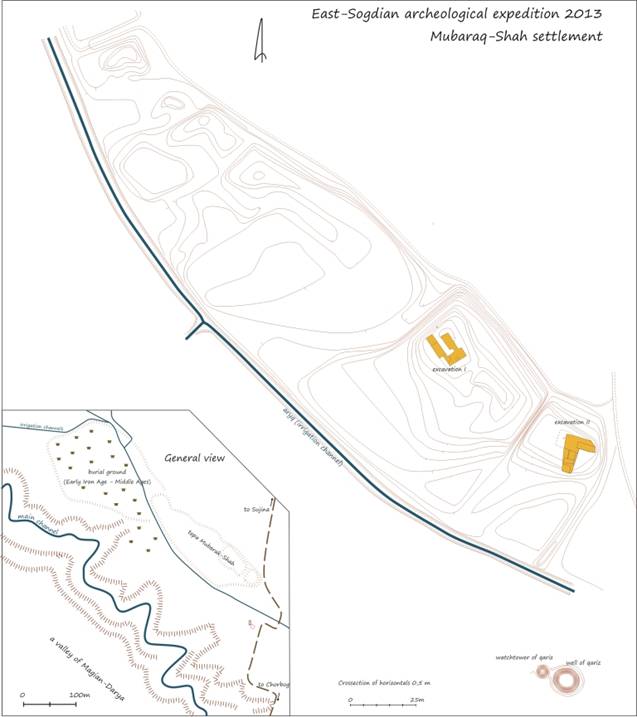
Fig. 27. Mubarak-shah, general plan.
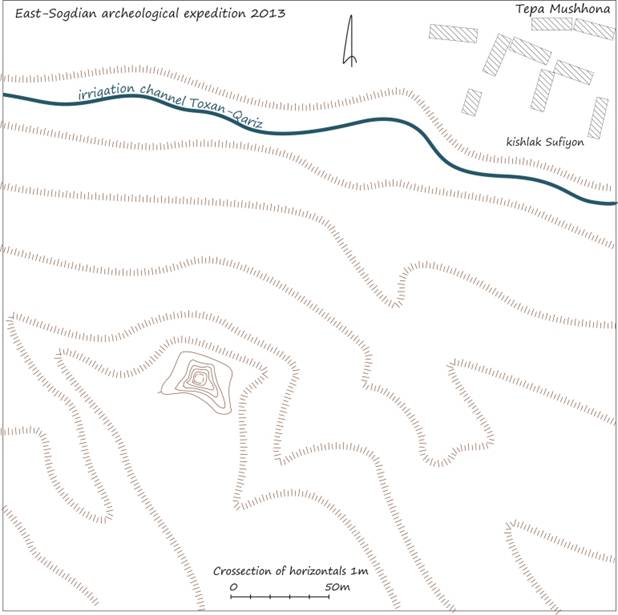
Fig. 28. Mushkhona, general plan.
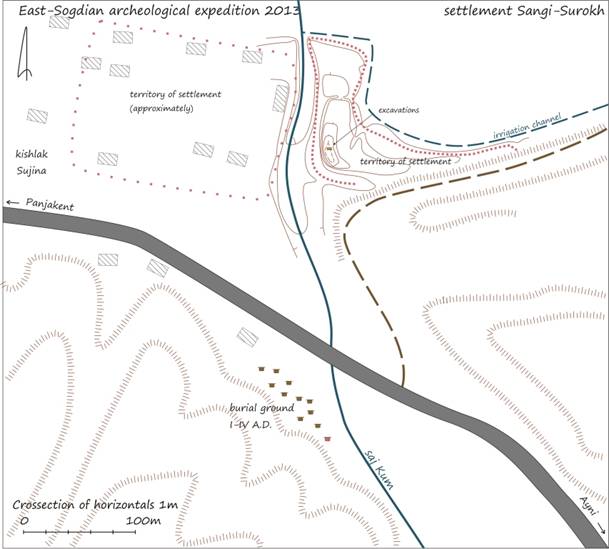
Fig. 29. Sangi-Surokh, general plan.
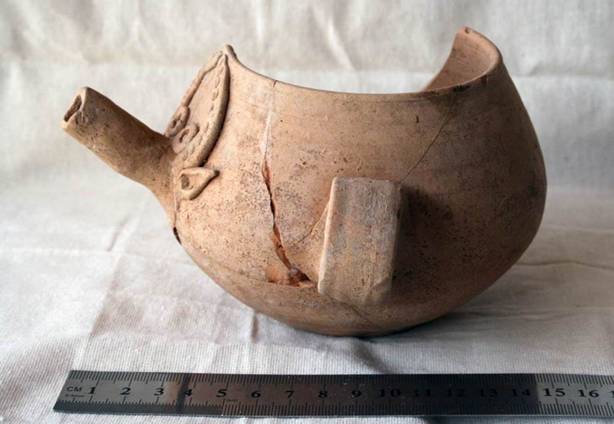
Fig. 30. A vessel with a zoomorphic spout after restoration. Sanjar Shah, Area 2, room 8.
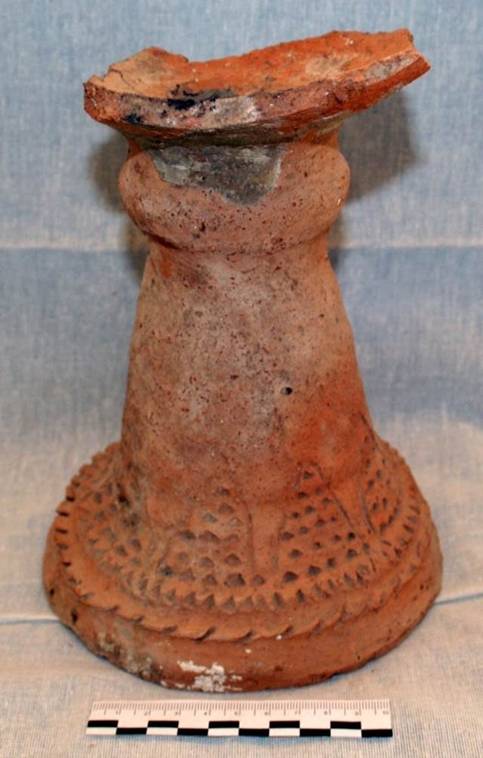
Fig. 31. A base of an incense burner. Sanjar Shah, Area 2, room 10.
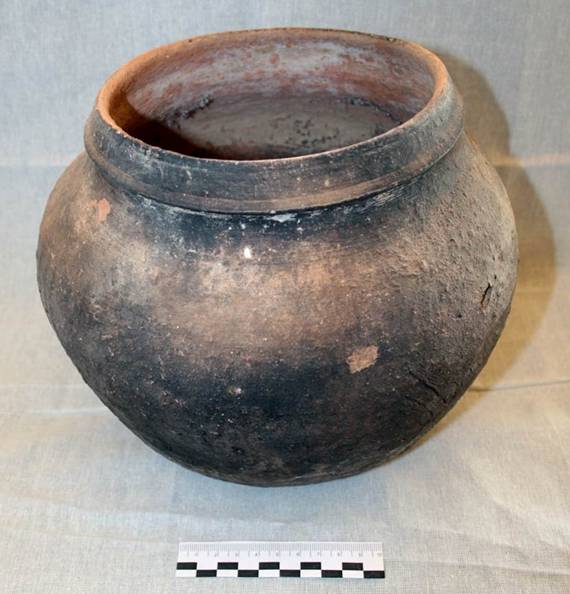
Fig. 32. A cooking pot. Sanjar Shah, Area 2, room 8.
Sanjar-shah Excavations 2014, Tajikistan
Michael Shenkar and Sharof Kurbanov
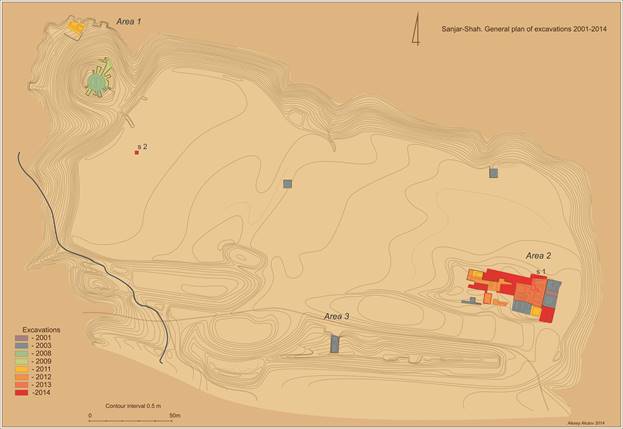
Fig. 1. Sanjar-shah. General plan of the excavated areas.
This season excavations were continued in Area II in the eastern part of the site (Fig. 2-4). Our primary goal was to combine isolated excavated areas of the previous years into one continuous area, as well as in establishing the stratigraphy and in identifying the main building phases. In addition to the excavations of new rooms, limited investigations were carried out in most previously excavated rooms of the Area II in order to establish the correlations between floor levels, to determine the connections between walls and to clarify the stratigraphy. This was absolutely necessary for understanding of the periodization of the site and for the preparation of the plan according to the building levels. Together with new finds, especially coins, this gives us possibility to suggest new dating for the building phases of the site.
The numeration of all rooms since the beginning of the excavations in 2003 was changed and unified. In addition, air photography of the whole site (Fig 5), which was made this season, gives us an important tool in developing the long-term program of excavations at Sanjar-shah. Numeration of walls was also introduced to documentation.
Area II, western part
Room 21
Room 21 is located to the west of Room 20 and to the south of Room 22. There is a passage from Room 21 to Room 22. Part of this room was cleared in 2011 season and yielded finds of more than 10 fragments of burned wooden beams (ø 20 cm) and of two carved panels (c. 40 x 60 cm). One panel had geometric design (Fig. 6) and the second panel was decorated with rows of quinquefoliate flowers (Figs. 7-8). Exact parallels to such flowers are known from wooden panels uncovered in Panjikent and Shahristan. In the absence of a qualified restorer, the excavations were interrupted. This season the works in this room were renewed with participation of a Maria Gervais from the Laboratory of Restoration of the State Hermitage Museum, St Petersburg.
Further fragments of burned wood that were originally part of the roof were found on the floor and on the sufas (Fig. 9). They could be divided into three categories: 1) long beams (2.20-2.30 m), (Fig. 10) 2) wide, thin planks (up to 1.30 m) 3) small carved panels (30 х 15-13 сm). All beams are hewed. Among the fragments of panels three were with geometric carvings. On the first one (CW1), traces of carving are barely visible. The second fragment (CW2 - 30 х 15 х 5) is decorated with four curved lines, 4 cm wide (Fig. 11). Two edges of the third fragment (CW3 - 29.5 х 13 х 5 сm) are preserved (Figs. 12-13). One of them has a frame 3 cm wide. Like CW2, this panel was also decorated with geometric ornament in shape of curved lines 4 cm wide.
In the lower part of Wall 37, which was partly cleaned in 2011, fragments of plaster were preserved. They carry curved and straight lines made with fingers that seemingly form an ornamental decoration. In the right corner, there is a clearly visible horizontal line that serves as a base for two curved wave-like lines (Fig. 14). In the left part the lines seem to form a floral ornament of a raw of vertical “trunks” from which two pairs of “branches” sprout (Fig. 15). It appears that the consistency of these figures and the fact that they form meaningful shapes indicate that they were intended as decoration and not as a mere preparation for laying the final layer of plaster.
The layout of this room with the typical “П-shaped” sufa, the decorations on the walls (although, quite crude and schematic) and wooden ceiling incorporating carved panels, indicate that it was the reception hall of this household. The excavations of this room will be continued in the next season.
Room 22
This room is located to the north of Room 21, to the east of Room 23 and to the south of Room 24 (Fig. 16). All its walls were originally built from smooth pakhsa blocks. On all surface of the Wall 41 (h. 2.20-2.25 m; l. 8.9) a layer of plaster 3-4 cm thick was preserved. At the distance of 5.40 m from the eastern edge of the wall, there are horizontal, vertical, curved and semi-spherical lines made by fingers on the plaster. Traces of burning from the upper level are visible on the wall.
Only the upper part of the Wall 44 (l. 2 m; h. 2.30 m from the sufa) preserved traces of plaster. Here also, the wave-like and semicircular lines made by fingers were found. A layer of plaster (3.5 cm) with lines made by fingers was also preserved on the Wall 45 (l. 7.7 m; h. from sufa 1.90 m). However, in contrast to Room 21, these lines do not seem to form any ornament. At the high of 1.5 m from sufa, there is a layer of mudbrick, which belongs to the second floor level. In fact, this is all what remains of another sufa, on which a large tandoor was found.
Along the Walls 44 and 45 there is a “L-shaped” sufa (w. 65-90 cm; l. 3.64 m; h. 41-45 cm). A second sufa (l. 1.44 m; w. 54 cm; h. 30 cm) was found at the distance of 87 cm along the wall 54. Both sufas are built from mudbrick. Like other walls in this room, Wall 39 (l. 1.20 m; h. from sufa 2 m) was also covered with lines made with fingers. A sufa (l. 1.05 m; w. 55 cm; h. 35 cm) was uncovered attached to this wall.
The Room 22 is in fact a corridor with no less than four passageways leading into other rooms of this Household. Especially noteworthy is a door case (1.40 x 1.20 m) in the Wall 39. The walls in the door case are built on the row of river boulders and pebble. Before the door case, two sufas were made. Burned wooden beams that formed the threshold were found before the doors. Another door case in the Wall 45 (1.20 x 1.20 m) shows traces of intense burning.
In the Room 22 four levels of floors were identified. It is important to note that the Wall 43 in the Rooms 32 and 33 was constructed on this floor level. In the fill under the third floor, a stone runner was found. A bone scraper with internal denticulation was found on the threshold of the door leading to Room 21 (Fig. 17-18). In the fill of this room and on all floors an extremely rich ceramic assemblage typical for the seventh-eight CE was uncovered.
Room 31
Room 31 is located to the north of Room 24. All the walls of this room are made from pakhsa (Fig. 19). Wall 51 (l. 4.90 m; h. 93 cm; w. 80 cm) preserves the upper level of plaster. At the early stage, a stepped passage (each step is c. 18 cm) was made in Wall 52 (l. 3.10 m; h. 1.5 m; w. 80 cm). A row of river boulders was laid under the threshold.
A sufa (l. m; h. 40 cm; w. 50 m) was found attached to Wall 42 (l. 3.6; h. 1.25; w. 1.05). Immediately to the right of the passage in Wall 42, there is a heap of river boulders, which is probably all what remains of a ramp or a stairs in the earlier period. A fragment of an iron knife was found on these stones. The northern wall of Room 31 is destroyed by the agricultural works.
In the passage in the Wall 52 two bronze plaques (2 x 1 cm) were uncovered (Fig. 20). One of them has a small hole. In addition, two three-edged arrowheads were found near the Wall 52.
Room 34
This season, Room 34 was only partly investigated. The excavations of this room will be completed in the next year. Until now, 1.55 m of Wall 44 (w. 1.40 m; h. 1.35 m) were cleared. At a later stage, a repair Wall 55 (w. 45 cm) made from standard mudbrick was attached to it. Wall 53 (l. 3.50 m; w. 67 cm; h. 1.58 cm) is built from pakhsa blocks, but in the upper part it consists of three rows of mudbrick. A row of river boulders is also built into it.
So far, two floor levels were identified in this room. In the southern part of the room a dais built from mudbrick was cleared. It seems that it was part of a sufa.
Area II, eastern part
This season we have conducted limited investigations in Room 3 (“the domed hall”) partly excavated by the German mission in 2003. This room was interpreted by the director of the German mission, Gerd Gropp, as a “fire-temple”. In addition, we investigated the unexcavated area immediately adjacent to the Room 3 from the south. This should have approved or refuted the hypothesis of the German archaeologist about the cultic character of the Room 3 and might have important implications for our understanding of the whole Area II.
Room 3
In order to understand the building history and the purpose of this room, we have excavated part of the Wall 13. It turned out that the pakhsa wall stands on the earlier wall built from mudbrick. Therefore, the level reached by the German expedition is not the earliest one.
In addition, a third sufa was found in the corner of Rooms 10 and 11 and therefore the room had was characterized by “П-shaped” sufas. During our work no traces of any layers of ashes or “fire-altars” described by Gropp were found. In Wall 10, a niche was discovered with a flat fragment of a cooking pot that probably served as a base for a lamp (Fig. 21).
Therefore, it is clearly established now, that the Room 3 was not a temple, but a reception hall of a household with a typical Sogdian layout characterized by “П-shaped” sufas. The dome that covered this hall also cannot be taken as a sufficient argument for its cultic function, since such domed halls, although rare, are nevertheless attested in Sogdian secular architecture – for example at Afrasyab.
Room 29
The Room 29 is of rectangular shape (Fig. 22). Its southern wall was destroyed by tractor in the 1950s. It seems that Room 29 could be originally accessed through the door in this wall. The lower part of Wall 6 (l. 4.80 m; h. 1.65; w. 1 m) was built of mudbrick. Above the height of 60 cm, it is made of pakhsa blocks. The Wall 9 (l. 2.60 m; h. 1.45 m; w. 75) is also made of pakhsa blocks. At the height of 50 cm from the sufa there is a row of river boulders (15 x 20 cm) in Wall 9. It is important to note that Wall 9 was set against the Wall 6.
Wall 7 (l. 5 m; h. 160 cm; w. 80 cm) is constructed of pakhsa blocks and like other walls in this rooms preserves no traces of plaster. A small niche (42 x 30 x 25) for the lamp was made in this wall at the distance of 3.50 m from Wall 9. Traces of burning were found in this niche. The Wall 7 is set against the Wall 9. A sufa was built along the Wall 9.
Only one floor was found in Room 29. In the middle of the floor level, there is a thin layer of ashes (c. 1 m). The fill of this room consists of fragments of mudbrick and earth.
Room 28
The length of the Wall 9 in this room – 2.20 m (Fig. 23). The row of river boulders continues also on the wall in this room. At the distance of 130 cm from the Wall 7 there is a passage (h. 115 cm; w. 85). In the later period, the passage was blocked. Wall 8 (l. 3.15; h. 45-115 cm; w. 80 cm) is made of pakhsa and preserves traces of plaster in the upper part. Room 28 shares the Wall 7 with Room 29. A sufa was attached to it.
Two floor levels were identified in this room. On the first floor, close to Wall 9, an iron knife with internal grinding and two handles were found (Figs. 24-25).
Room 23
The excavations of this Room, started in previous years, were continued in this season. During the works in the northern part of the Room, Wall 50 (l. 2.60 m; w. 75 сm; h. 1.20 m) was uncovered, which is undoubtedly a late facing. The distance (60 cm) between the Wall 50 and the original wall is filled with fragments of mudbrick and pakhsa. On the surface of Wall 42 a bronze belt buckle was picked up (Figs. 26-27).
Room 26
Room 26 is located immediately to the south of Room 3 (Fig. 28). Wall 9 in this room is 5.5 m long. 1 m from the upper edge of the wall, there is also a row of river boulders. The Wall 6 in this room is 130 cm long. Row of river boulders is found 30 cm from the top of the wall. A “L-shaped” sufa of a very poor preservation is attached to Walls 6 and 9.
In the eastern part of the Wall 5 (l. 6.10 m; w. 50 cm; h. 70 cm) a pylon (2.10 x 60 m, the rest was cut by tractor) which was built together with the Wall 5 was found. Wall 5 was set against the Wall 10. Another sufa was built along the Wall 5. Only one row of mudbrick from the original two is preserved. In Room 26, five floor levels were identified. On the fifth, lower level, in the corner of the Walls 6 and 9, a fire-place (1.20 х 1.15 m) was made surrounded by a border of stone.
A passage existed on this level that led from Room 26 to Room 14. It was blocked already during the next stage that corresponds to the 4 floor. It seems that during this and later period there was a passage also in the eastern wall and therefore, Room 26 was probably a corridor. However, there is no certainty, since the eastern wall was destroyed by a tractor.
In the fill between the 3 and the 4 floors an iron javelin-head (Figs. 29-30) and a broken terracotta figurine of a dog (Figs. 31-32) were found. From the fill between the 4 and 5 floor, a bronze buckle (Figs. 33-34) and a fragment of an iron object, probably a bar (Figs. 35-36).
The Courtyard
In this season we have resumed the excavations of a large courtyard (c. 144 m2) that separates room 13, 16 and 19 from rooms 35, 23, 20, 21 (Fig. 37). In its northern part, three walls made of mudbrick attached to each other were found; Wall 47 (l. 5.5 m; h. 55 cm; w. 60 cm), Wall 48 (l. 150 cm; h. 25 cm; w. 40 cm); Wall 49 (l. 4 m; h. 25 cm; w. 50 cm).
Three surface levels were identified in the courtyard. It is important to note that the Walls 47-49 were built on the second surface. Among the finds on this level are: Bukharkhuda coin of very bad preservation (Figs. 38-39) and an arrowhead. On the first surface a coin of Turgar (Type I) was found (Figs. 40-41). On the third level an unidentified very eroded bronze coin and a small fragment of Sogdian coin with a square hole.
Northern Street
This season we have excavated a broad street whose northern border was destroyed by a tractor (Fig. 42). This “Northern Street” runs from room 11 and 15 in the east and opens into the courtyard. The level of the street corresponds to the second level of the courtyard. A coin of Turgar (Type I) (Figs. 43-44), fels of Hamza bin ‘Amr minted in Samarkand in 770 CE (Figs. 45-46), an iron knife, a bronze rivet and a broken terracotta figurine of a horse (Figs. 47-48) were found on the street.
Sounding 1
Sounding 1 (2 x 2.5 m) was made in the eastern part of the Area II, 30 cm to the north of Room 11, in order to clarify the stratigraphy and to establish for the first time the depth of the bedrock. Overall, six surface levels were identified in the sounding. We established that the depth of the topsoil is 12-45 cm and the bedrock level occurs at depth of 2.25 m from the surface. Therefore, it is clear now that even in the areas leveled for agriculture in the 1950s the depth of stratigraphy layers is still around 2 m, which allows further archaeological investigations.
Small (1-2 cm) fragments of wall-paintings of white, blue and red color were found in the fill on the level of the third surface. Unfortunately, the source of these wall-paintings is not clear and we were not yet able to find a wall to which they could have belonged. 20 cm below the third surface a lot of iron waste and clear traces of forging were discovered. On the fifth level, a wall made of mudbrick was found.
Sounding 2
Unlike the Area II in the east, all surface of the western part of the site was leveled for agriculture in the 1950s. Therefore, the second sounding was made in the western part of the site in order to determine the depth of cultural levels here and to see whether there is enough potential for excavations. It appears that the depth of the topsoil is 20 cm and the bedrock level occurs at depth of 2.40 m from the surface. Two levels of surface, identified in the sounding are probably street-levels.
Conclusions and further prospects
For the first time, we have succeeded in combining isolated excavated areas of the previous years into one continuous area, as well as in establishing the stratigraphy and in identifying the main building phases (Fig. 49). In addition to the excavations of new rooms, limited investigations were carried out in most previously excavated rooms of the Area II in order to establish the correlations between floor levels, to determine the connections between walls and to clarify the stratigraphy. This was absolutely necessary for understanding of the periodization of the site and for the preparation of the plan according to the building levels. Together with new finds, especially coins, this gives us possibility to suggest new dating for the building phases of the site.
New data obtained this season suggests that all the rooms uncovered so far in Area II belonged to two different households separated by a large open courtyard and a wide street that can be called the “Eastern” and the “Western”. The “Eastern Household” (Rooms 1-19) included the doomed reception hall (Room 3). Other rooms in this Household probably had service-utility functions.
The “Western Household” (rooms 20-35) also included at least one reception hall – room 21, where numerous fragments of burned wooden beams and carved panels were found and geometric and floral designs made by fingers on the walls. It is clear that the “Western Houshold” was perished in a big fire and it is tempting to connect it with the Arab conquest of Panjikent in 722. Although, we should be very cautious with this preliminary hypothesis and it should be noted that the relations between Panjikent and Sanjar-shah are not yet clear.
Rooms 9-10 and the walls in the Sounding 1 belong to the earliest building period. The finds of ceramics dated to the 4-5 centuries CE in the sounding made by the German Mission in 2003 in Room 1 suggest that during this period a small settlement probably already existed in this part of Sanjar-shah. However, no architectural remains or ceramic assemblages dated to this period are yet found.
The second building phase could be called the “heyday” of Sanjar-shah. It is to this period that the Rooms 21-25 of the “Western Household” belong. They are characterized by the high building technique and décor. Later periods differ significantly and the building technique is much lower. In the last building phase, public space, like certain parts of the Northern Street and the Courtyard were enclosed by walls, which seem to be the evidence of the general decline of public life and the city administration. According to the coin finds we may date the second level of the courtyard and the Northern Street level to the late quarter of the eighth century CE.
It appears that Area II, and perhaps all the eastern part of Sanjar-shah was most probably a living-craftsmen quarter where various handicraft industries were located. This is confirmed by traces of forging and the pottery kiln excavated in the western part of the Area II in the previous years, as well as by small finds such as bone scraper probably used in leather manufacture and iron knife used for wood-cutting.
Many walls in Sanjar-shah are built on fundament of river boulders undoubtedly brought from the nearby Magian-darya. In general, construction of walls from pakhsa or mudbrick on a stone foundation is a distinctive feature of Sanjar-shah architecture which is almost non-existent in the nearby Panjikent – located on a farther distance from a river (Zeravshan).
Our priority for the next season is to investigate the western part of the site, which until now has not been excavated. Since the excavations below the round tower in 2011 did not yield remains of any administrative buildings, they were probably located in the western part of the town. Sounding 2, which was made in this part of the site in order to determine the depth of the cultural layers, showed that those are some 2 m depth and therefore excavations here are possible. Air photographs show a rectangular building in the western part of the site, which could be the remains of a monumental building (perhaps a palace?) (Fig. 50). Next season, we plan to open a new area (Area IV) and to concentrate on excavating this building. In addition, we intend to finish excavations of the “Western Household” in Area II. Especially important is to excavate the Room 21 which could provide us with additional carved panels and material for the reconstruction of the ceiling. This year we plan to collect samples of wood for dendrochronology and for C-14 analyses to be carried out by Dr. Karl-Uwe Heussner from the German Archaeological Institute, Berlin.
Another important direction for the archaeological research of Sanjar-shah is to investigate the rooms adjacent to the southern wall in order to try to find the southern gate of the town.
This season, for the first time, we have uncovered fragments of wall-paintings at Sanjar-shah. Although they are very small and were found in a fill, without a clear context, it gives us hope that larger fragments and perhaps even entire sections of painted walls will be discovered in the future.
Figures
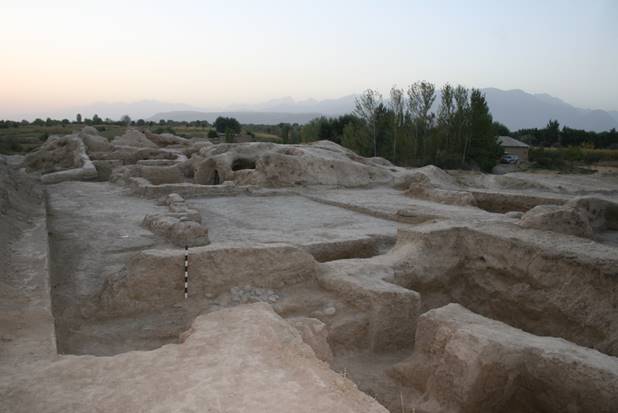
Fig. 2. Area II, General View
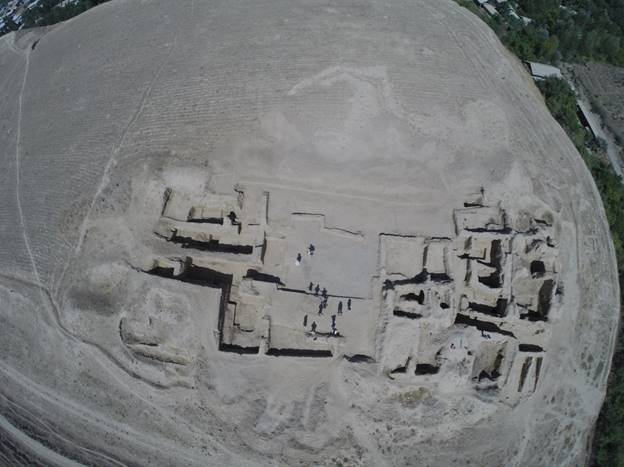
Fig. 3. Area II, Air Photo
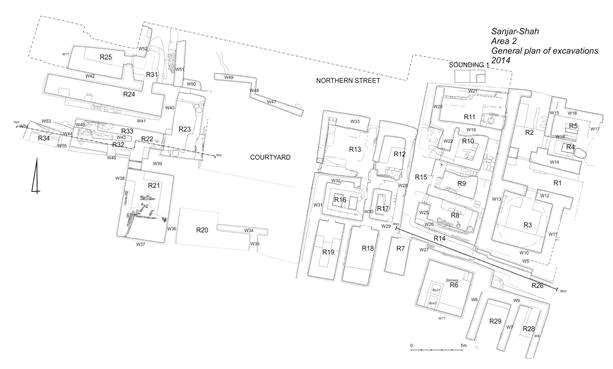
Fig. 4. Area II. General Plan of the Excavated areas 2014
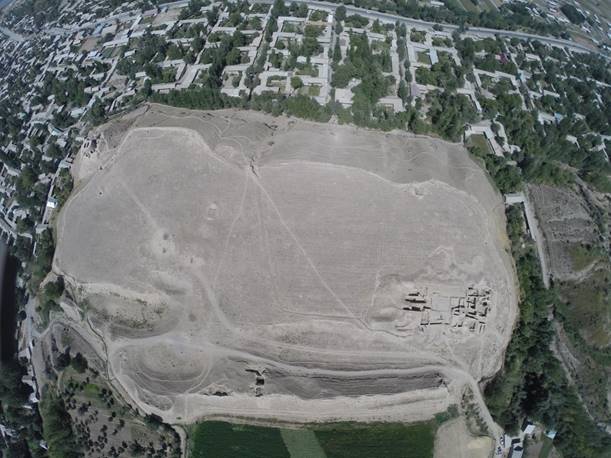
Fig. 5. Sanjar-shah. Air photo.
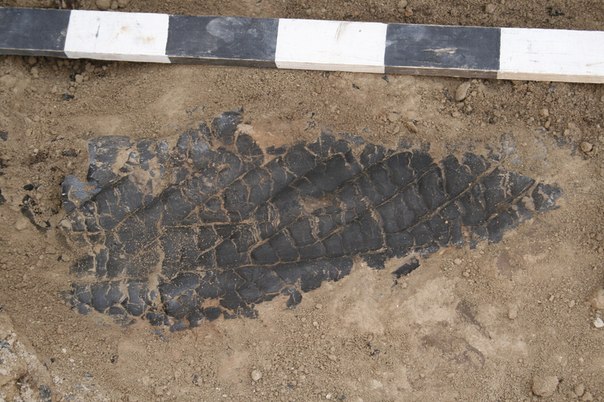
Fig. 6. Wooden panel with geometric designs found in 2011.
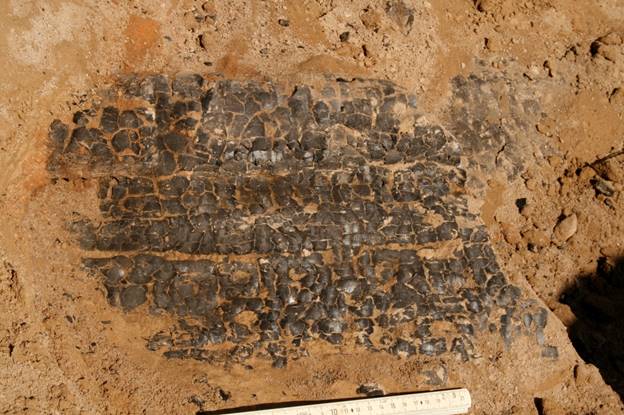
Fig. 7. Wooden panel decorated with flowers found in 2011.
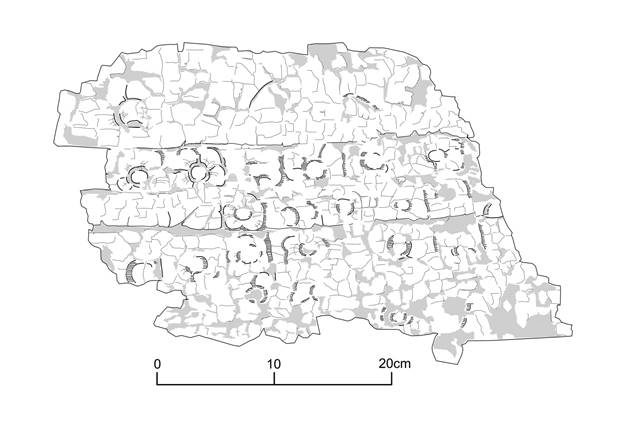
Fig. 8. Wooden panel decorated with flowers found in 2011, Drawing by Elena Bouklaeva.
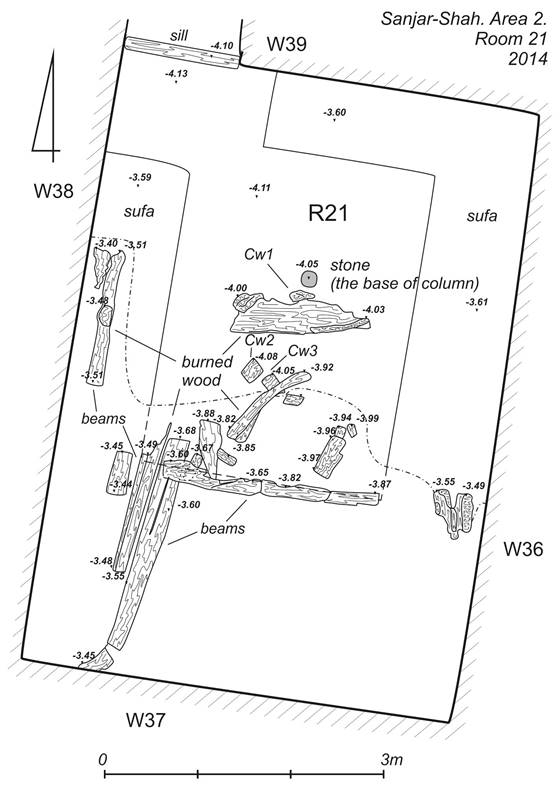
Fig. 9. Room 21 showing fragments of burned wood, drawing by Alexey Akulov.
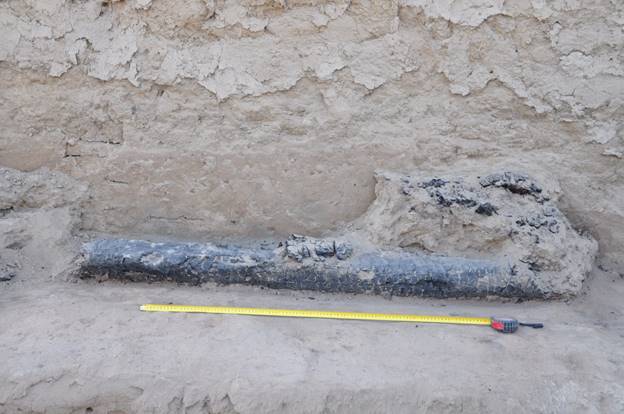
Fig. 10. Room 21. A wooden beam on a sufa.
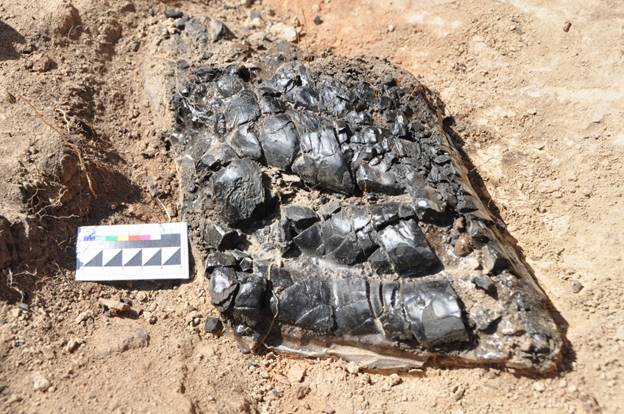
Fig. 11. Room 21. CW2.
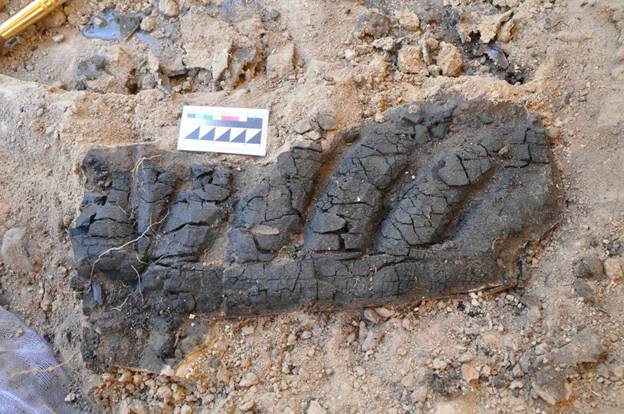
Fig. 12. Room 21. CW 3.
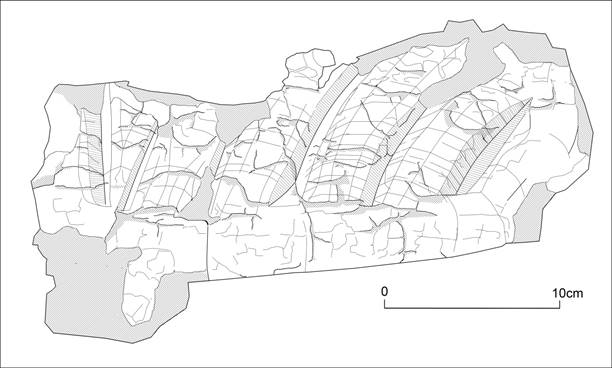
Fig. 13. Room 21. CW3. Drawing by Elena Bouklaeva.
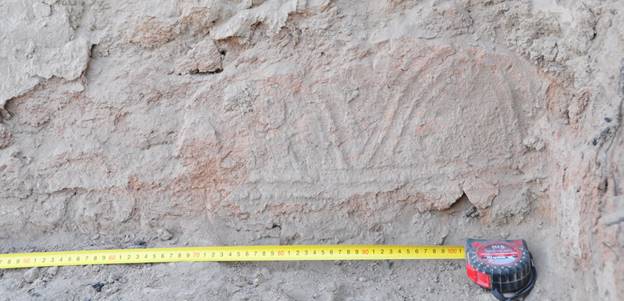
Fig. 14. Room 21. Wave-like lines on plaster.
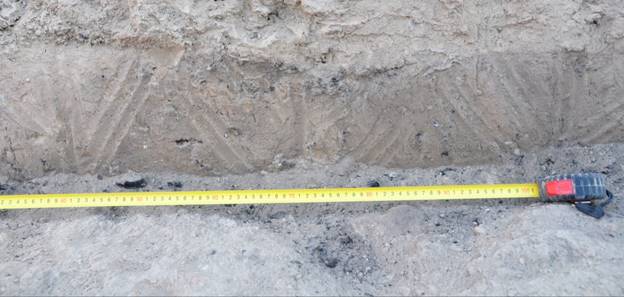
Fig. 15. Room 21. “Floral Decorations” on plaster.
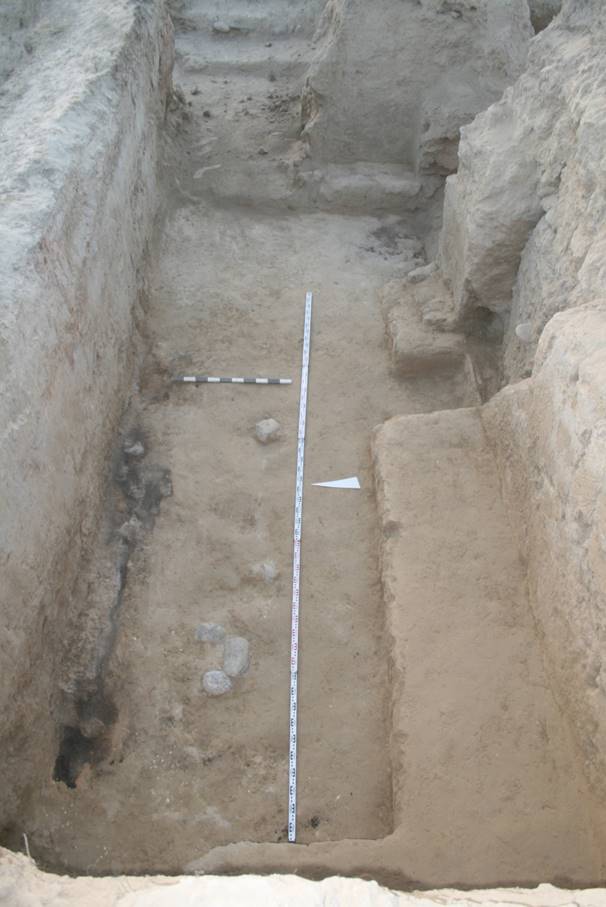
Fig. 16. Room 22.
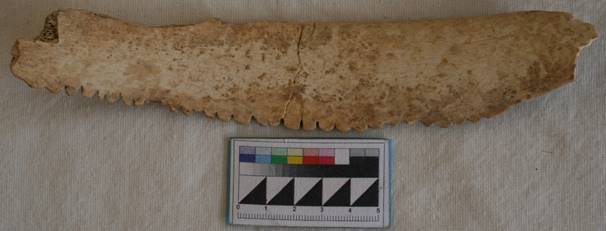
Fig. 17. A bone scraper, Room 22.
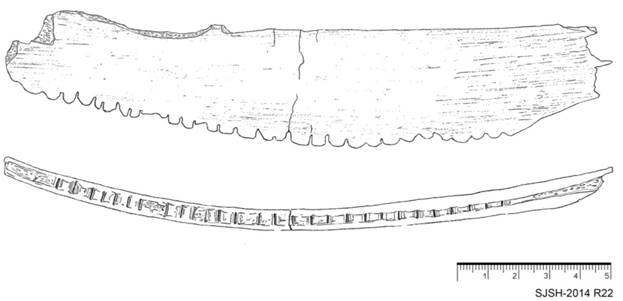
Fig. 18. A bone scraper, Room 22, drawing by Elena Bouklaeva
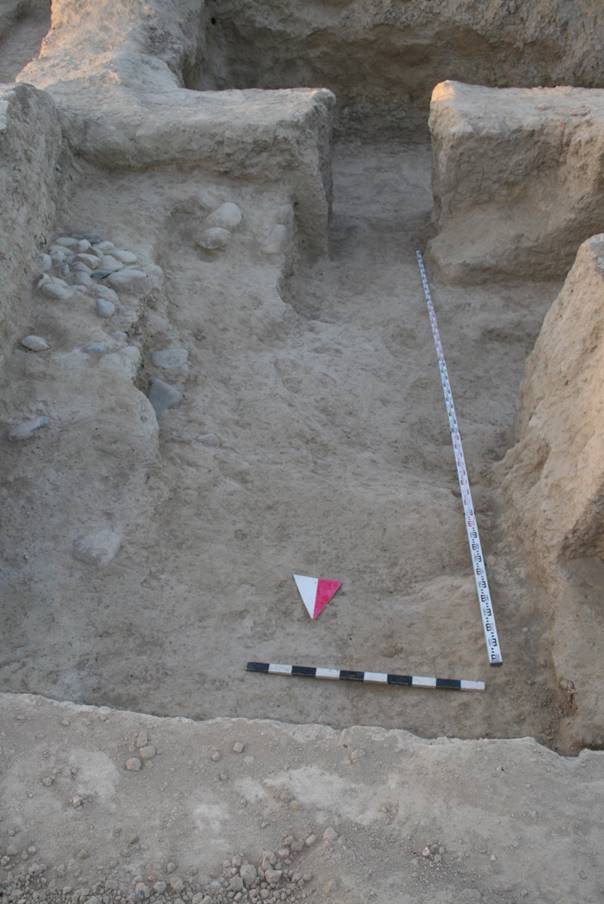
Fig. 19. Room 31
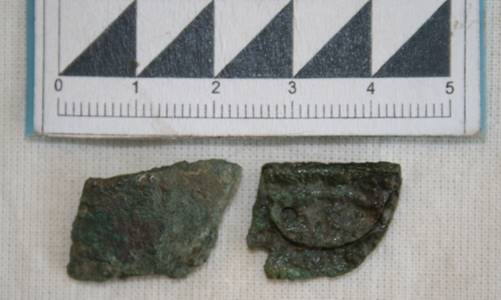
Fig. 20. Two bronze plaques, Room 31.

Fig. 21. Room 3. A sufa (partly excavated) and a niche in the Wall 10
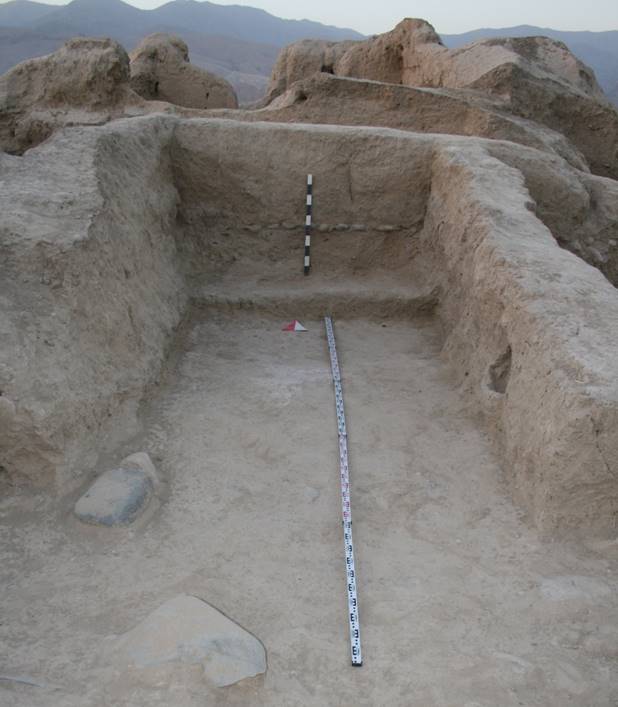
Fig. 22. Room 29
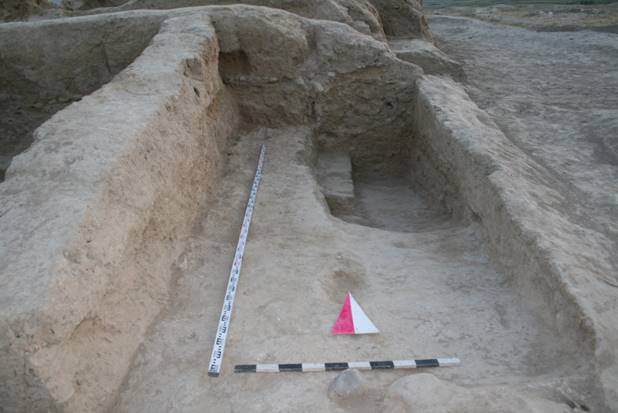
Fig. 23. Room 28.

Fig. 24. Iron knife, Room 28.

Fig. 25. Iron knife, Room 28. Drawing by Elena Bouklaeva.
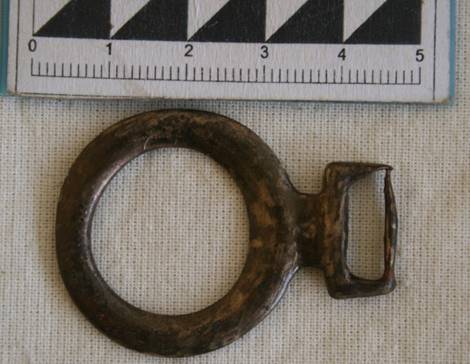
Fig. 26. Bronze belt buckle, Room 23
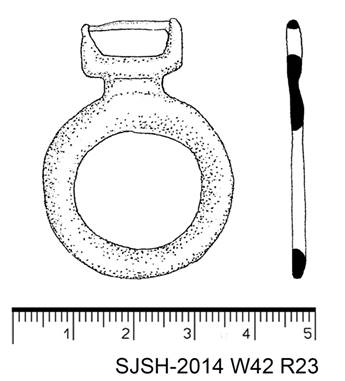
Fig. 27. Bronze belt buckle, Room 23. Drawing by Elena Bouklaeva.
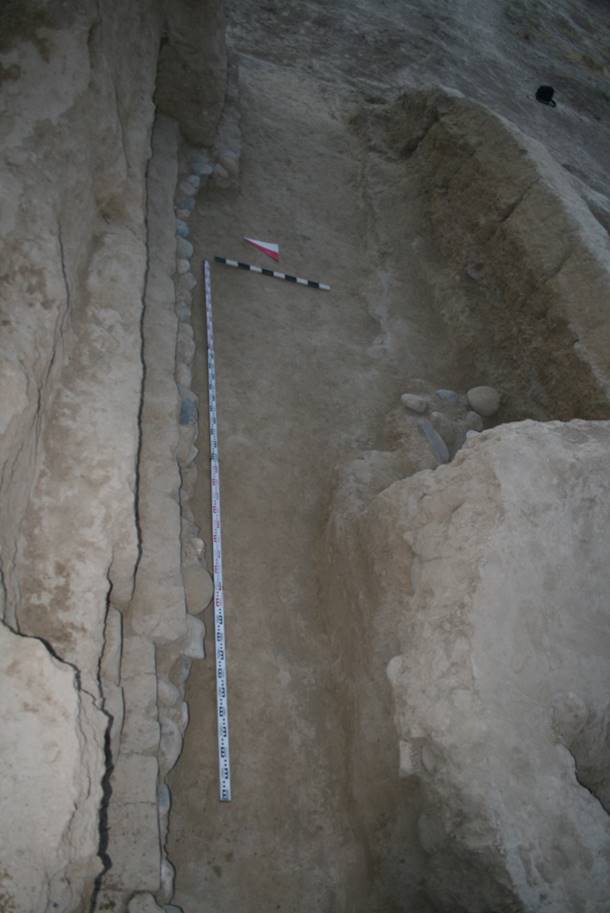
Fig. 28. Room 26.
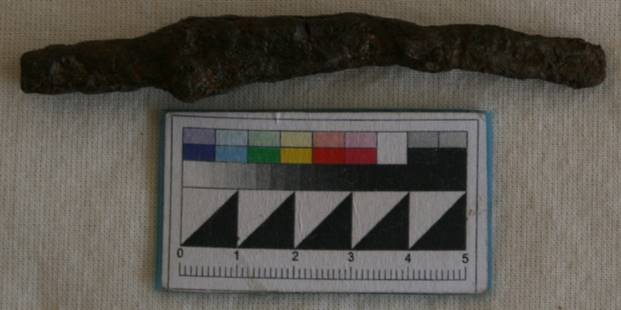
Fig. 29. A head of a javelin. Room 26.

Fig. 30. A head of a javelin, Room 26. Drawing by Elena Bouklaeva.
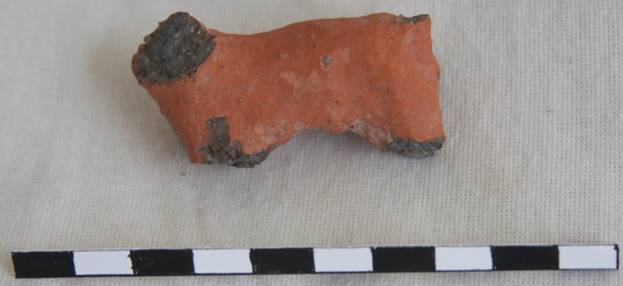
Fig. 31. Terracotta figurine of a dog, Room 26.
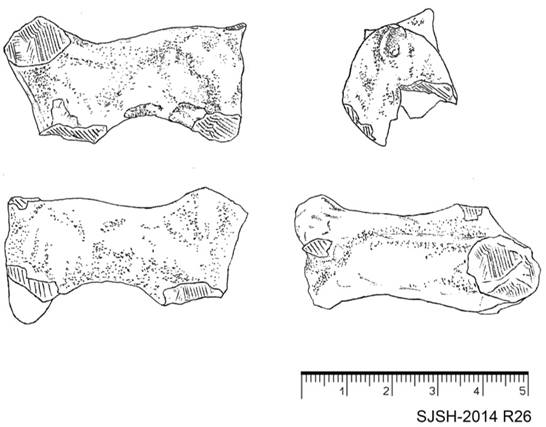
Fig. 32. Terracotta figurine of a dog, Room 26. Drawing by Elena Bouklaeva
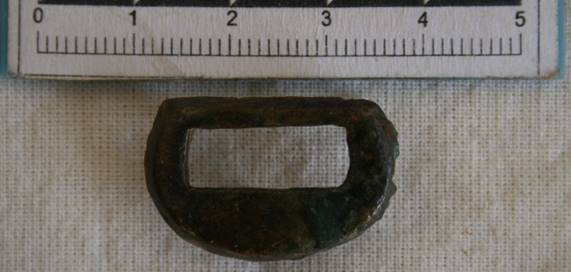
Fig. 33 Bronze buckle, Room 26.
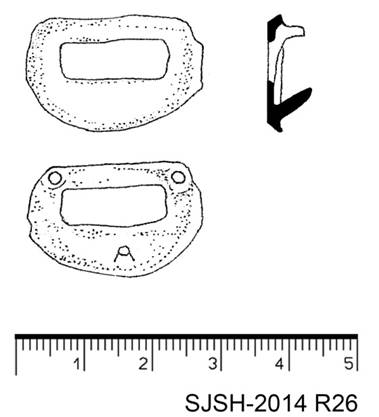
Fig. 34. Bronze buckle, Room 26. Drawing by Elena Bouklaeva.
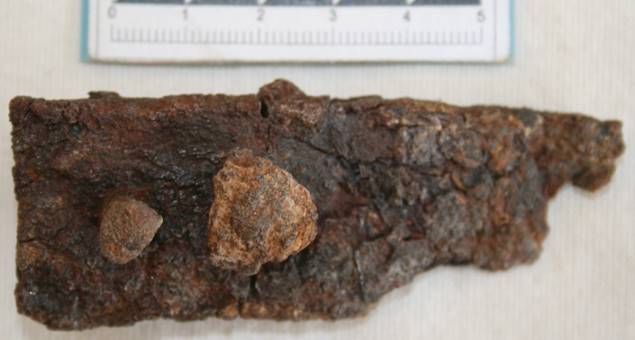
Fig. 35. Iron bar, Room 26.
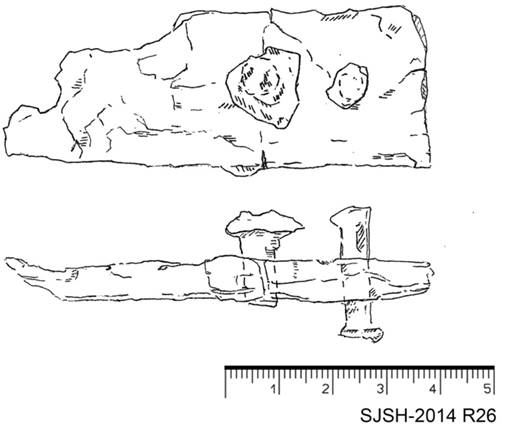
Fig. 36. Iron bar, Room 26. Drawing by Elena Bouklaeva.
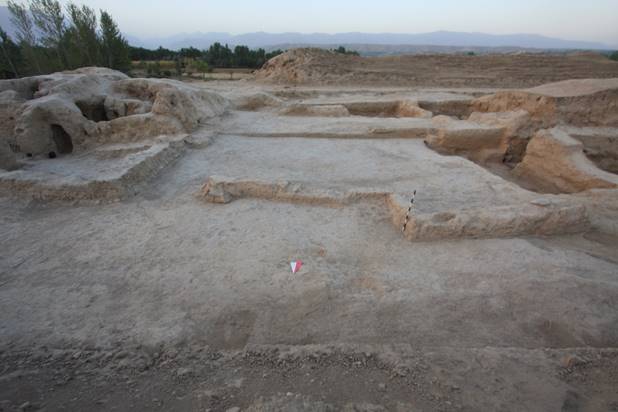
Fig. 37. The Courtyard, looking south.
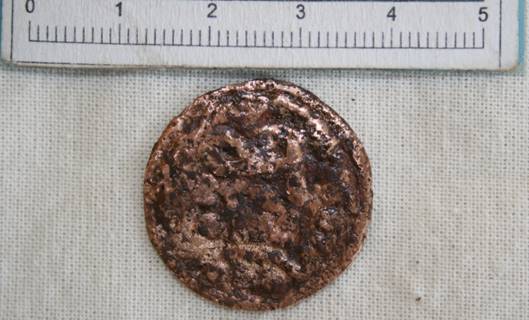
Fig. 38. Bukharkhuda coin (av), Courtyard.
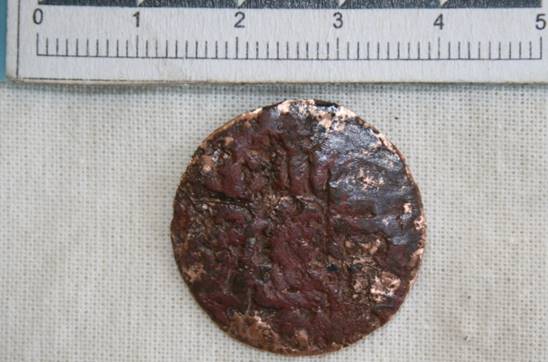
Fig. 39. Bukharkhuda coin (rev), Courtyard.
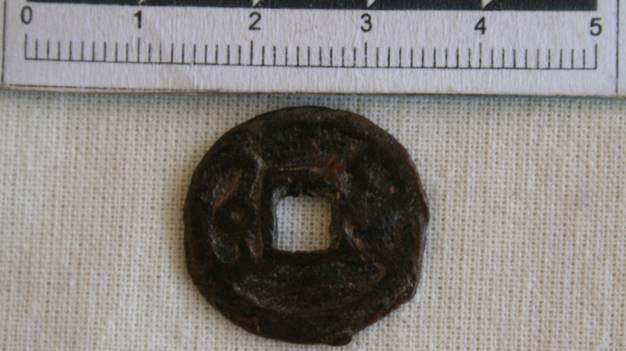
Fig. 40. Coin of Turgar (Type I, av.), Courtyard
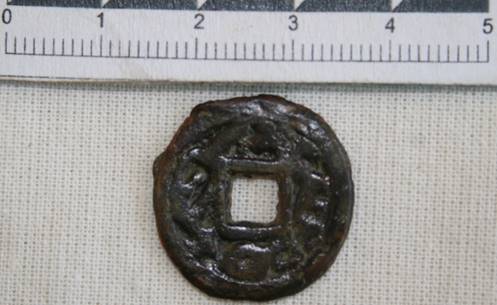
Fig. 41. Coin of Turgar (Type I, rev.), Courtyard
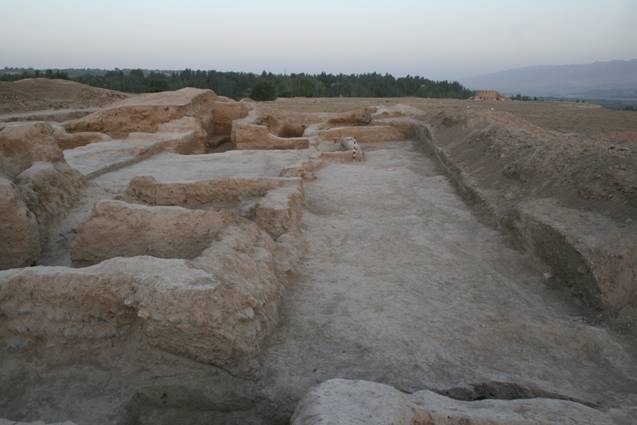
Fig. 42. Northern Street looking west.
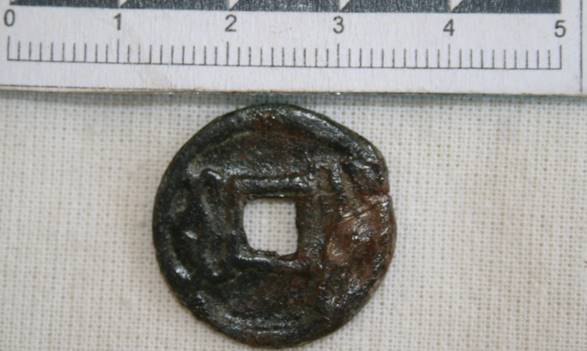
Fig. 43. Coin of Turgar (Type I, av.), Northern Street
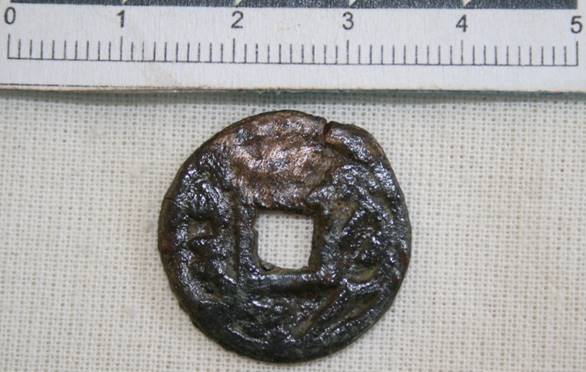
Fig. 44. Coin of Turgar (Type I, rev.), Northern Street
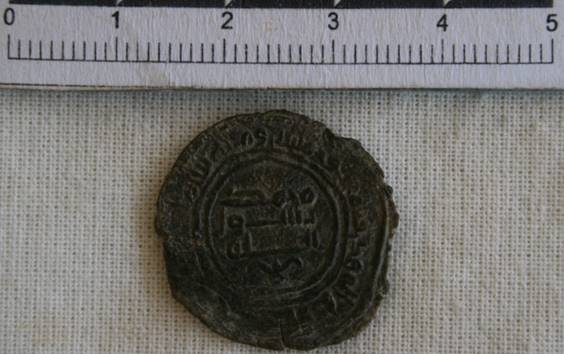
Fig. 45. Fels of Hamza bin ‘Amr (av), Northern Street
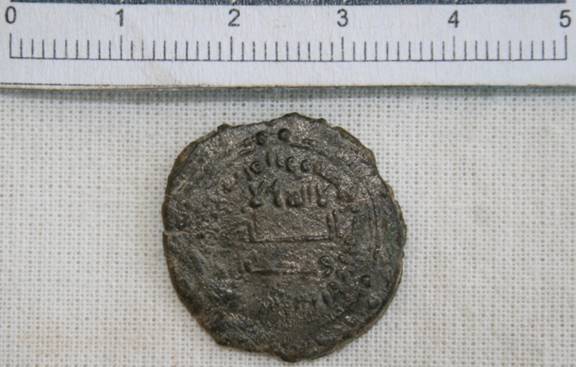
Fig. 46. Fels of Hamza bin ‘Amr (rev), Northern Street
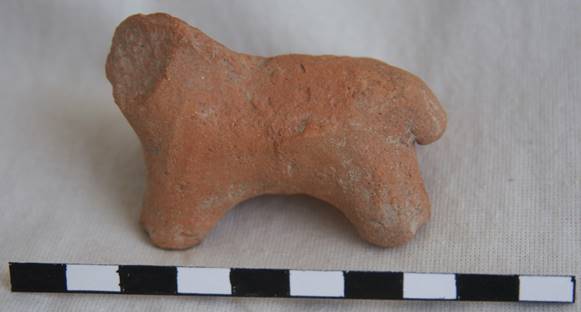
Fig. 47. Teracota figurine of a horse, Northern Street
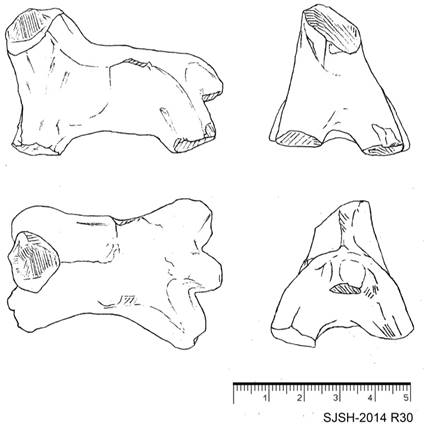
Fig. 48. Teracota figurine of a horse, Northern Street, Drawing by Elena Bouklaeva
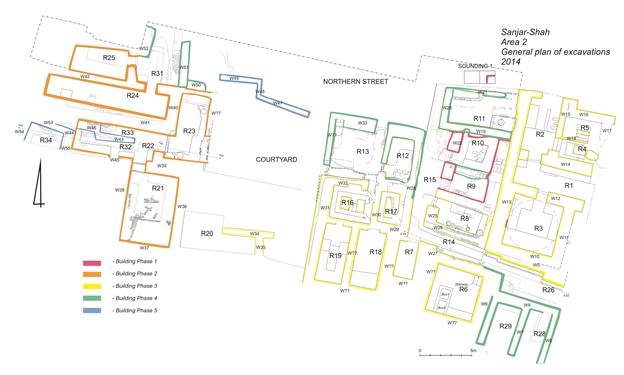
Fig. 49. Area II, Building Phases, Drawing by Alexey Akulov.
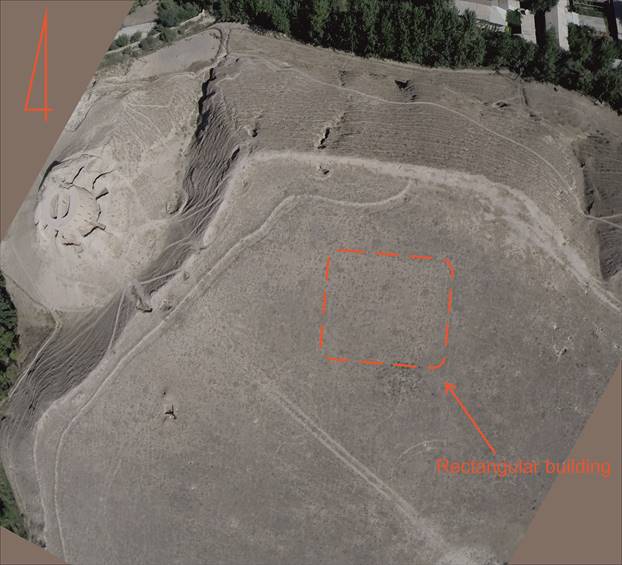
Fig. 50. “Rectangular Building” in the western part of the site, air photo.
Michael Shenkar and Sharof Kurbanov
Sanjar-Shah Excavations Report 2015
This season, we have continued the excavations in the Area II in the eastern part of the site (Fig. 1). Several rooms in the western part of the Area II (R34-R38) were excavated and the cleaning of the Room 21, which contained numerous fragments of well-preserved burned woods (some of it with traces of carvings) was finished (Fig. 2). We have also started excavations in the new area (Area IV) in the south-eastern part of the site immediately adjacent to the southern wall of the town (Figs. 3-4). The area along the southern wall is the only one apart from Area II, which has not been levelled during the Soviet period.
In addition, preliminary investigations were initiated in the western part of the town, which has never been excavated. Following the results obtained from Sounding 2 that showed that the cultural level in this area is some 2 m depth and air photographs that revealed what seems a rectangular structure in the western part of the site (which could be the remains of a monumental building).
Area 2
Room 21
This room (for description, see Excavations Report 2014) as established last year, was a main “Reception Hall” of this Household. Numerous fragments of wooden ceiling incorporating carved panels were uncovered during the previous season, but the excavations were not complete. This year we have finished cleaning this room and all additional fragments of burned wood were excavated with the participation of Maria Gervais from the Laboratory of Restoration of the State Hermitage Museum, St. Petersburg (Figs. 5-6). Five wooden beams together with many other fragments of burned wood were uncovered in the southeastern corner (between walls 36 and 37) (Fig. 8). Among them, three fragments show traces of carvings. First fragment (CW4 – 84 x 24 x 10 cm) has both edges rounded and a boundary furrow near one end (Fig. 9). The second fragment is square (CW5 – 30 x 30 x 5 cm) and has remains of a carved rectangular frame of which only one corner is preserved (Figs. 10-11). Immediately within the original frame there is a wave-like line. The most impressive carving design is a rectangular panel (CW6 – 97 x 25 x 7) found under one of the beams (Figs. 12-13). It has a geometrical design of diamonds inside a frame. On the eastern part of the Wall 37 uncovered this year, there is a continuation of the same wave-like and tree-like ornamental decoration attested last year in the western part of the wall (Figs. 14-15). They were made either with fingers, or with some tool with three dentations. This wall was the main wall of the Reception Hall since it is located opposite of the entrance. Its complete decorative program is the following: in the eastern part there are “trees” and in the western there are “waves”. In the center of the wall the plaster is not preserved.
Room 34
This room of relatively modest dimensions (3,90 х 3,60 m) is located in western part of the Western Household. Wall 53 (h. 1.20 m from the sufa level) is made of pakhsa blocks with three rows of mud brick in the upper part (Figs. 16-17). A layer of plaster (1.5-2 cm) is partially preserved on the wall. Wall 57 (h. 57 cm) is entirely made of mud brick and is attached to Wall 53. Similar plaster layer was identified also on this wall. The preservation of Wall 55 is very bad. It is constructed of pakhsa and mud brick and attached to Wall 53. A hearth was found adjacent to this wall (at the distance of 1.55 from Wall 53) projecting for 40 cm from the wall. In front of it there is an enclosed platform (l. 1.50 m, w. 2 m). The hearth (w. 45 cm) is flanked by two columns (w. 12 and 17 cm). It is flanked by two columns and the right column had decorations of a tree with pomegranates or tulip flowers painted in red and white (Figs. 19-20). Also the back of the heath itself was repeatedly plastered and painted (Fig. 21). There are more than 20 layers of plaster, which was also painted with red circles, probably representing pomegranates or tulips as well. Wall 56 (h. 1.05 m) is made entirely of mud brick and is very poorly preserved. There are numerous traces of repairs.
The sufas are preserved along the Wall 53 (w. 1 m, h. 18 cm) and the Wall 57 (w. 85 cm, h. 17-20 cm). The latter did not reach the end of the wall, and its length is only 3.25 m. At the southern end of W 57 at the distance of 1.10 m from the entrance, there is an antechamber wall (h. 80 cm, w. 28 cm) with a well-preserved plaster layer.
This room is almost square in shape and had benches installed along the walls. The only entrance to the room (w. 90 cm) was in the corner of Wall 56 and Wall 57. The floor in the Room 34 was lower by 30-35 cm than in the other rooms in the Household and one had to step down into it.
Among the finds in the room we should mention a fragment of base of a glass vessel and a coin of Ghurak (712-737/8), (found at the depth of 60 cm from the surface level) (Figs. 22-23).
Such rooms with similar heaths are well-known from Sogdian sites in the Zeravshan valley (Panjikent, Hisorak, Gardani Hisor etc). Traditionally, they were interpreted as private “house-chapels” and the hearth was seen as a domestic fire-altar. However, it has been recently convincingly demonstrated that these rooms should be rather understood as “winter-rooms” where the extended family would live during the winter.
Room 35
Room 35 (4.5 x 1.7) is located to the west of the Room 36 and is adjacent to it (Fig. 24). Wall 45 (h. 2.7 m) is made from pakhsa blocks. Wall 58 is shared with Room 36. In the northern end of this wall there is a doorway (h. 1.5 m, w. 90 cm) leading to Room 36. In the southern end there is a hole from a wooden beam that goes through the wall to the Room 36. Wall 37 (h. 1.27 m) in this room stands on the upper floor level and is made from pakhsa. In the southern part of Wall 55 (h. 2.7 m, l. 2.8 m, w. 1 m) there is a doorway (w. 1.5 m) leading to Room 38.
Two floor levels were identified in the room. The upper floor was found at the depth of 1.7 m. from the upper level of the preserved wall. The floor surface is greenish and relatively smooth. Second floor was discovered at the depth of 1 m from the first one. It is yellow and smooth.
This room was relatively rich in finds comparing with other rooms excavated this season. Two coins of Turghar (738-750?) were found in the fill (Figs. 25-28) as well as fragments of iron and bronze objects and a spindle weight.
Room 36
This rectangular room (7.2 x 1.6 m) is located to the south of Room 32 to which it is connected by a passage (Fig. 29). The Wall 45 (h. 2.5 m) is made of pakhsa blocks. In this wall at the distance of 1.15 m. from Wall 58 there is a doorway (h. 1.5 m., w. 75 cm, w. 1 m) leading to the Room 32. Wall 38 (h. 2.6 m) is built from both pakhsa and mud brick. In the southern part of the wall there are traces of repairs. In the upper part of the wall (1.20 m from the floor level) there are clear indications of a vault. Wall 37 (l. 1.7 m, h. 0.8 m) is made entirely of pakhsa blocks, while Wall 58 (h. 2.5 m) is constructed from mud brick (53х26-27х8-10 cm). In the northern part of the Wall 58 there is a doorway (h. 1.5, w. 1.2 m) leading to the Room 35. In the southern part of Wall 58 there are two holes in which originally two wooden beams were inserted. There first hole (w. 20 cm, h. 15 cm, d. 50 cm) is made at the distance of 1.3 m from the Wall 37 and the height of 55 cm. A flat stone was found lying inside it. The second hole (w. 28 cm, h. 26 cm) is found at the distance of 1.1. m to the north of the first one, at the height of 65 cm from the floor. This hole goes through the wall to the Room 35.
Two floor levels were identified in the Room 36. The upper floor slightly rises in the southern direction. It has a greenish color and there are numerous small ashes on its surface. The second floor was uncovered at the depth of 26 cm from the first one. It has a smooth and yellow surface. A sufa (w. 64 cm, h. 9 cm) was installed on this floor attached to the Wall 58. At the northern end of the sufa there was a hearth (w. 45 cm, l. 48 cm) with traces of burning and ashes. Wall 38 and Wall 58 are attached to the Wall 37.
Room 37
This is a corridor (4 x 1.25 m) which runs from the north-western corner of the Room 32 (Fig. 30). Wall 41 continues here from the Room 32. There are two doorways in this wall. The first passage (w. 1 m) is found in the north-western end of the Wall 41. At the distance of 60 cm from the first doorway, there is a second one (w. 1 m, h. 1.5 m) leading to the Room 24. This passage is linked to a ramp that originally led to the second floor. The surface of the ramp is solid, smooth and yellow. Near the passage to the Room 32, at the depth of 55 cm from the surface, a wooden beam (15 x 10 cm, l. 1.4 m) was found.
Wall 53 (h. 2.2 m) is constructed of pakhsa up to the height of 90 cm and in the upper part it is made of mud brick. The Wall 57 is preserved in this room to the h. of 120-30 cm and l. of 2 m.
Fragments of wall-paintings
Also the fragments of wall-paintings, found last season in Sounding 1 were removed this year by the professional restorer (Fig. 31). Overall there are four, unfortunately, very small (3 cm) fragments of paintings in blue, red, white and brown color. One fragment bears clear traces of gentile, thin outline made with black colour, which seem to belong to figural paintings.
Area 4
This season we have started excavations in the new area (Area 4) in the south-eastern part of the site immediately adjacent to the southern wall of the town. The area along the southern wall is the only one apart from Are 2, which was not levelled during the Soviet period. The architecture here is preserved to the exceptional height of up to 4 meters and therefore it has a great potential for archaeological investigations. So far, four rooms were excavated.
Room 1
From this room (4.2 x 1.6 m) only the southwestern corner is preserved (Figs. 32-33). The rest was destroyed by tractors in the Soviet period. Wall 4 (l. 1.7 m, h. 4 m) is built from pakhsa and mud brick interchangeably. Such construction technique provides wall with further stability. Wall 3 (h. 3.5 m, l. 1.4 m) is built with the same technique and there are traces of burned plasters on its surface. In Wall 4 there is a passage to the Room 2 and the beginning of a ramp leading to the second floor. There is one level of floor in the room on which the walls are standing. Besides pottery, fragment of a small glass bottle were found on it.
Room 2
This room is 2.75 m long from south to north (Fig. 34-35). We did not reach the western wall (Wall 5) of the room because of the serious danger of the collapse. The width of the exposed area of the room is therefore, 2.1 m. In Wall 4 (see description in Room 1) there is an arched niche (h. 47 cm, w. 60 cm, d. 30 cm) with traces of soot and burning at the level of 1.15 m from the floor and at the distance of 75 cm south from the passage. Wall 4 is attached to the Wall 3. From the height of 2.23 m and up to the end of Wall 4 there is a well-preserved layer of smooth plaster.
Wall 3 is preserved up to the height of 3 m. It is built of pakhsa and mud brick. At the level of 1.8 m from the floor there are 3 holes for wooden beams (w. 35 cm, h. 20 cm, d. 32 cm). The distance between them is 45-50 cm. This room was vaulted, and the vault is quite well-preserved. At its base, there are 3 rows of bricks laying and after them another 4 bricks are on the butt-end. In Wall 2, only three bricks are left intact, one of them wedge-shaped. Wall 2 is preserved up to 3 m high until the vault level, while the vault itself is one additional meter, bringing the total height of the room to 4 m. The original height of the vault was around 4.7-4.8 m.
On the level of 2.26 m in the wall there is a row of mud brick with 4 holes from wooden beams. This is probably an indication of a mezzanine. The level of the first floor is found on the distance of 1.1 m from the beam holes. The floor of the second floor is found at the depth of 90 cm from it. In the fill below the earliest floor, a coin of Turghar and a poorly preserved Bukharkhuda coin were found. Another unidentified, badly worn Sogdian coin was found in the fill in the room (80 cm from the surface), which consists of pakhsa and mud brick fragments. This building was probably destroyed by a fire, since there are traces of burning on the walls and floor. The entrance (w. 1.1 m) to the Room was in the Wall 4. The building quality is very high and the pakhsa blocks in this room are very solid and smooth.
Room 3
This partly excavated room (8.5 x 2.55 m) is located to the north of the Room 2. Wall 1 is preserved up to 20 cm in eastern part and up to 2.3 m in the western. It is built from 3 rows of pakhsa blocks. At several places on the wall there are fragments of plaster. Only small fragment (h. 50 cm, l. 1 m, w. 1.1 m) of Wall 8 is preserved in the northern eastern corner of the Room. In this wall there was a passage (w. 1.57 m).
Wall 2 (h. 2.5 m) is also built from 3 rows of solid, regular pakhsa blocks (average 100x80x70). The wall was covered with thick (2-3 cm) layer of plaster, which is very well preserved. At the height of 2.55 from the floor level there is a cornice projecting some 5-6 m from the wall and the beginning of the vault. 6 bricks from the vault are preserved. In the western part of the wall at the distance of 1.5 m from the southern eastern corner there is an arched doorway (w. 90 cm, h. 1.9 m).
Wall 7 (h. 1.4-2 m, l. 2.55 m) is made of mud brick. It is attached to the Wall 1 and Wall 2. In Wall 7 there is a passage (w. 90 cm) to yet unexcavated room. It is possible that it is in fact a beginning of a ramp leading to the second floor.
Along the Wall 1 a sufa (l. 5 m, w. 60 cm, h. 20 cm) made of mud brick was installed. It surface is flat and smooth. The floor in the room is relatively smooth and dense of grey-greenish colour. On the floor at the distance of 2.2 m from the passage in W 2 a heath (diameter 40 cm) was found. The room was filled with mud brick fragments. One floor level was identified in the room. The excavations of this room will be completed in the next season.
Room 4
Room 4 is located to the west of the Room 2 (Fig 36). The northern wall of the room was not preserved and the condition of other walls is rather bad. Wall 3 (l. 5.2 m, h. 50 cm) is constructed of solid pakhsa blocks. Wall 6 is preserved up to length of 2 m and up to 20 cm height in the northern and 70 cm in the southern part. In Wall 5 (l. 1.8 m, h. 25 cm, w. 60 cm) there is a passage (w. 1.05 m). On all walls there are traces of plaster (2-3 cm thick). In the southwestern part of the room there are traces of intense burning. The floor in the room is smooth and flat.
Conclusions and further prospects
The most important result of this season is the conclusion of the excavations of the “wooden” Room 21. Uncovering and careful registering of numerous fragments of the wooden ceiling (including six fragments of carved panels) together with the décor of the main wall, allows us to reconstruct an ornamental program of this “Reception Hall” of the Western Household. The walls of the adjacent corridor (Room 22), from which there was the only passage to the Room 21 were also decorated with similar “trees” and “waves” ornament. In Panjikent houses the paintings are also usually found in the Reception Hall and the corridor adjacent to it. In our case, despite comparable dimensions and construction techniques, the impressive and expensive paintings which reflected the elevated position of the house-owner in the social hierarchy were replaced with simple and unsophisticated ornamentation. Modest geometric and floral designs of the wooden ceiling also indicate that the owner of the Western Household did not belong to the upper classes of Sanjar-Shah, but was still trying to emulate the decoration principles of the aristocratic houses within the limits of his rather limited financial possibilities. However, comparing with other rooms in the Area 2 it seems clear that Rooms 21 and 22 stand out both in terms of being the only decorated rooms and by their solidly built walls. It appears that they belonged to one of the wealthiest persons in this neighborhood.
Although, there is still a small area in the western part of the Area 2, which is probably not affected by levelling, further excavations here seem to us inexpedient. However, in the previous seasons, remains of pottery kiln were uncovered in the western part of the Area (Room 38). Unfortunately, it was not properly documented and covered with soil. The discovery of the pottery kiln holds a special significance because, curiously, no evidence for ceramic industry has been ever found in Panjikent. Therefore, next year we intend to re-excavate the kiln and document it properly.
Next season we plan to continue excavations of the Area 4 and to open additional area along the southern wall, but in the western part of the site. We believe that the administrative quarter, the palace and the houses of the aristocracy were located there.
In addition, we have started the excavations of the western part of the site (Area 5) which had never been excavated before and where a rectangular building was supposedly seen on the air photos. The excavations in this Area will be continued in the next season.
Figures
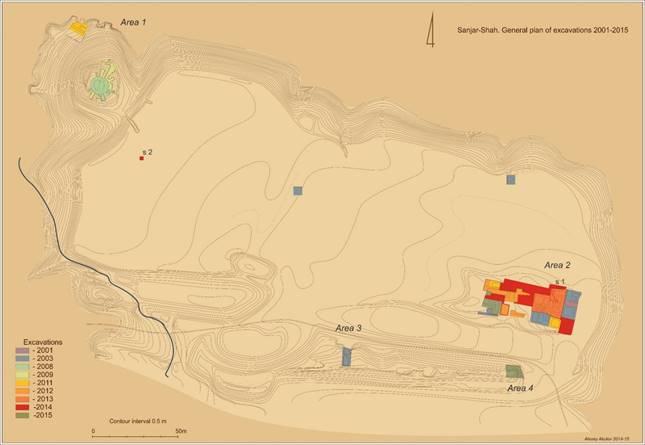
Fig. 1. Sanjar-shah. General plan of the excavated areas.
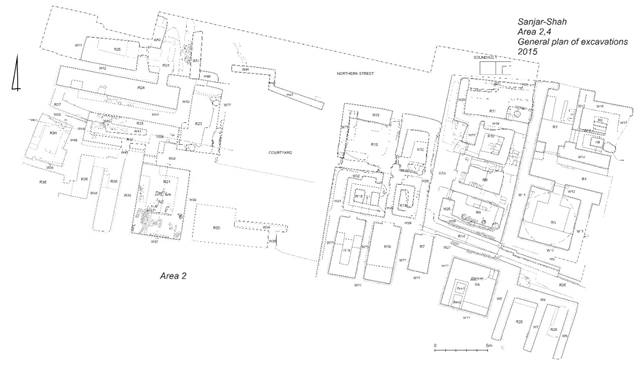
Fig. 2. Area 2. Drawing by A. Akulov.
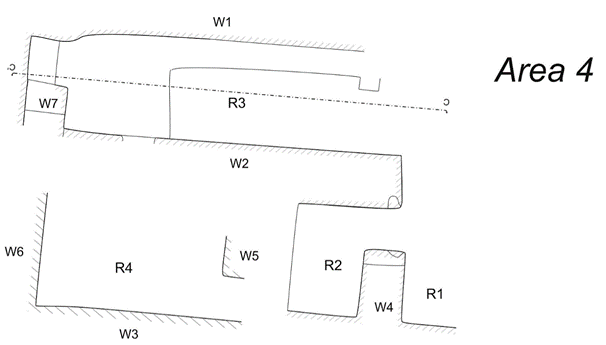
Fig. 3. Area 4. Drawing by A. Akulov.
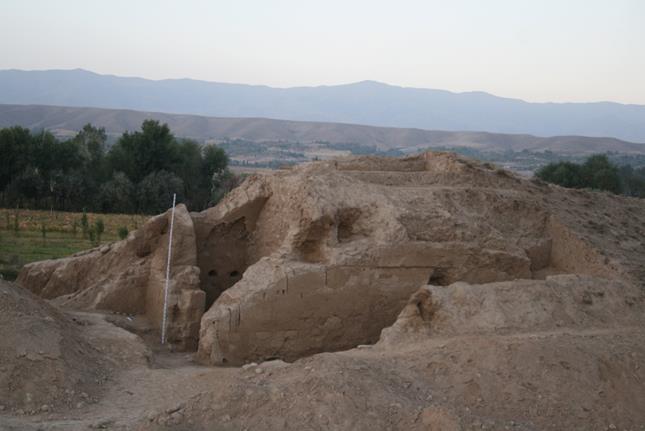
Fig. 4. Area IV. General view.
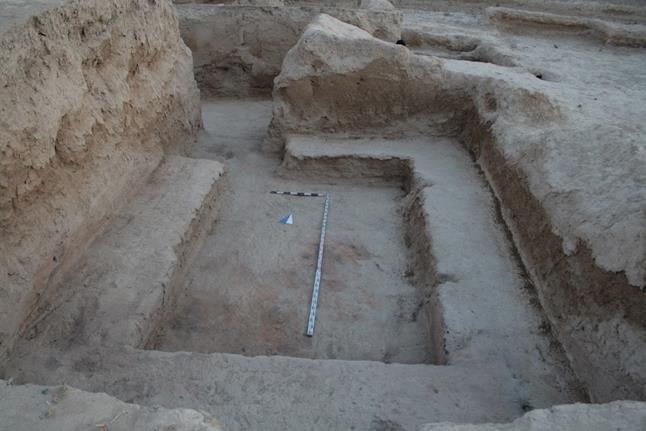
Fig. 5. Room 21 completely excavated, after removal of all the wooden fragments.
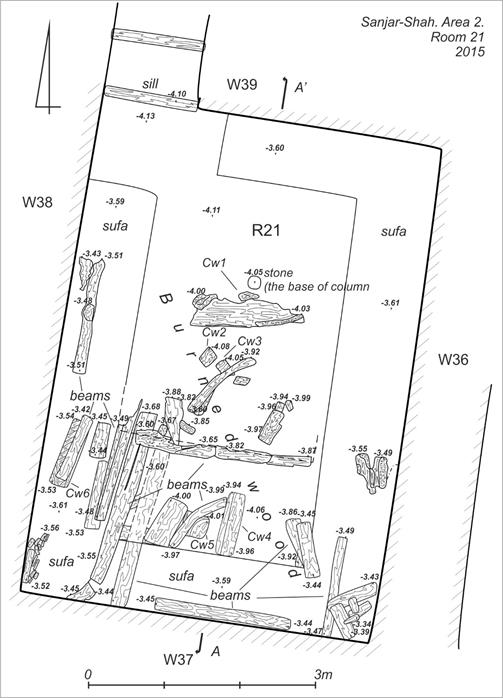
Fig. 6. Room 21. Drawing by A. Akulov.
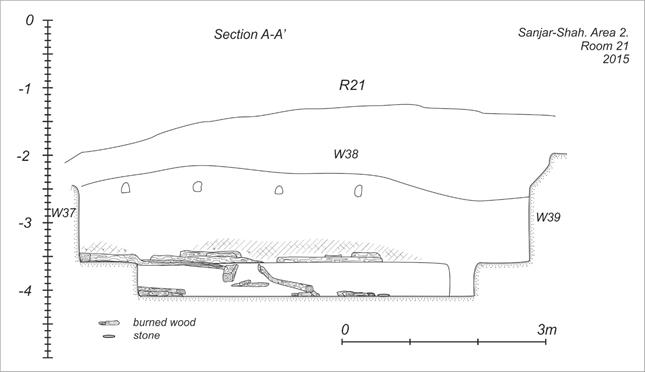
Fig. 7. Room 21, cross section. Drawing by A. Akulov.
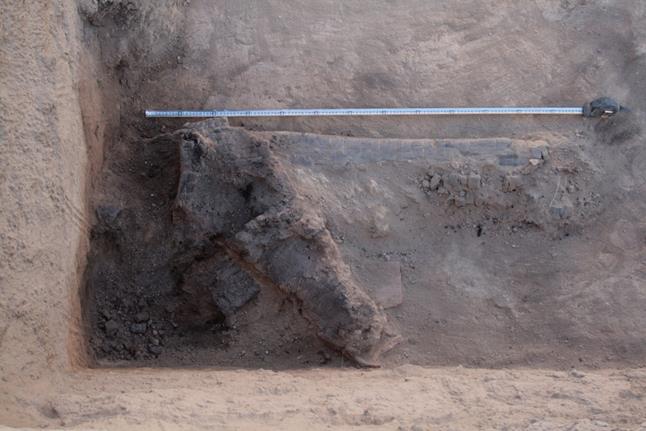
Fig. 8. Room 21. Fragments of wooden beams.
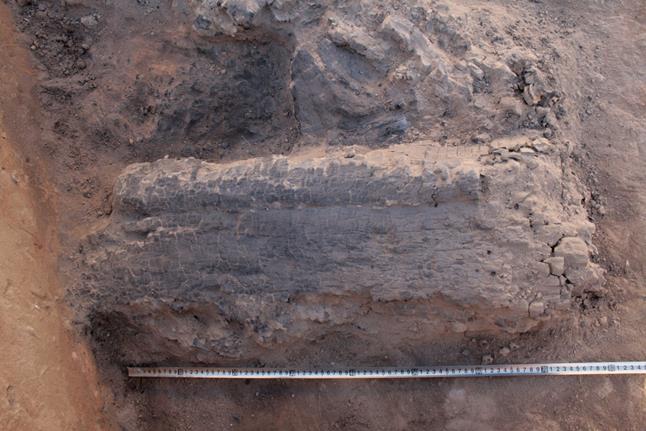
Fig. 9. Room 21, CW 4.
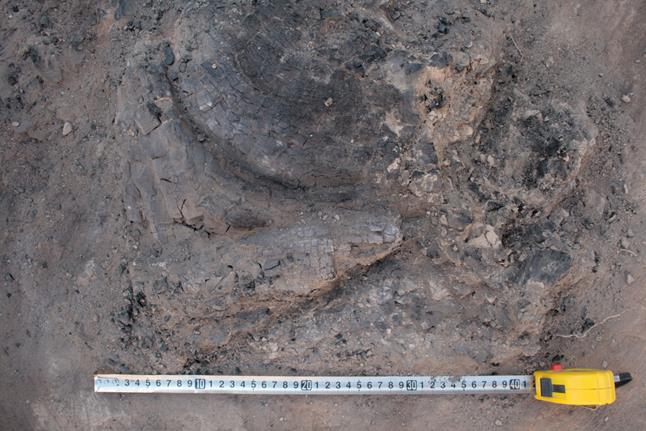
Fig. 10. Room 21, CW 5.
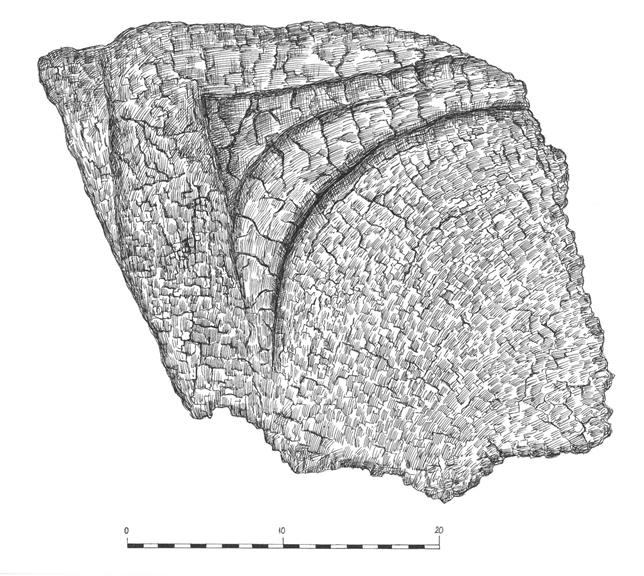
Fig. 11. Room 21, CW 5. Drawing by M. Gervais.
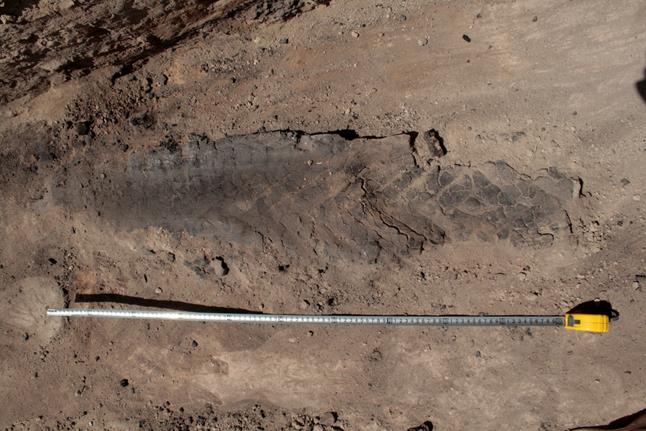
Fig. 12. Room 21, CW 6.
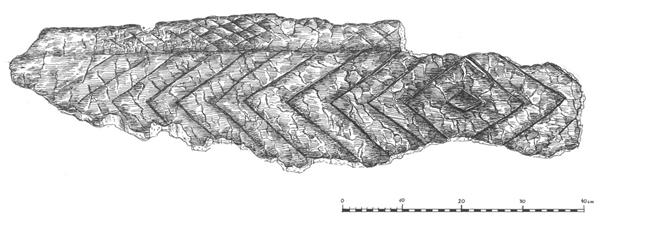
Fig. 13. Room 21, CW 6. Drawing by M. Gervais.
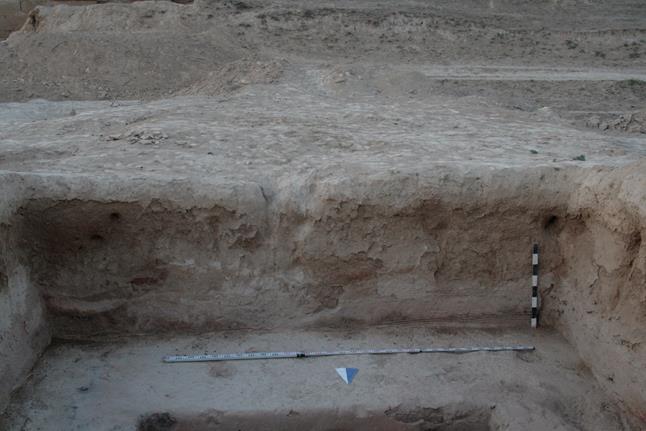
Fig. 14. Room 21, Wall 37.
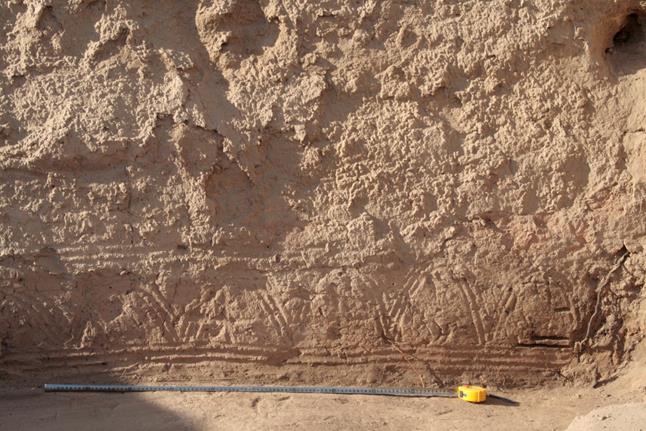
Fig. 15. Room 21, Wall 37. Wave-like ornament.
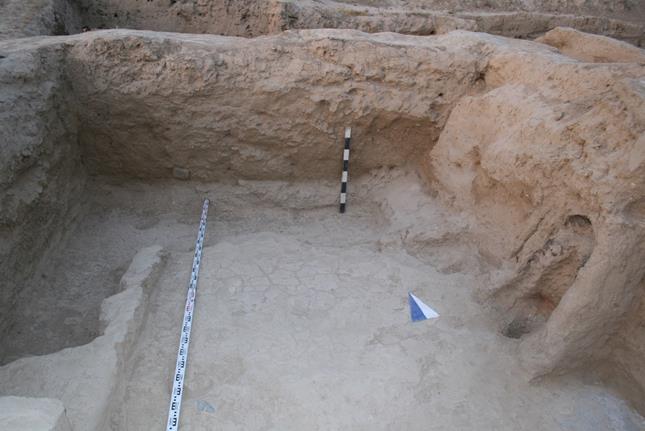
Fig. 16. Room 34.
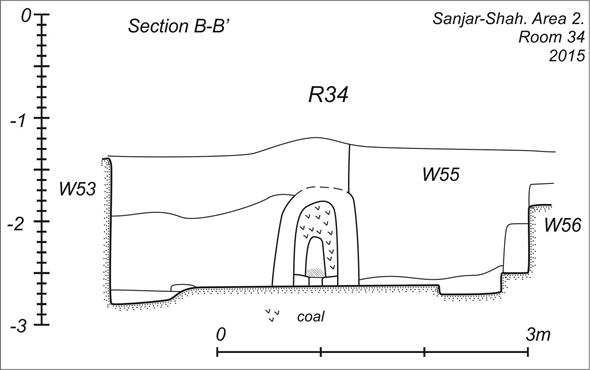
Fig. 17. Room 34, cross section. Drawing by A. Akulov.
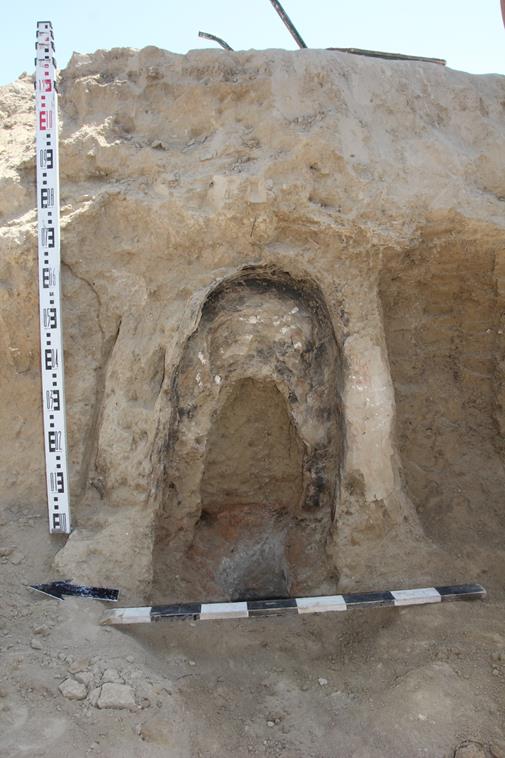
Fig. 18. Hearth, Room 34.
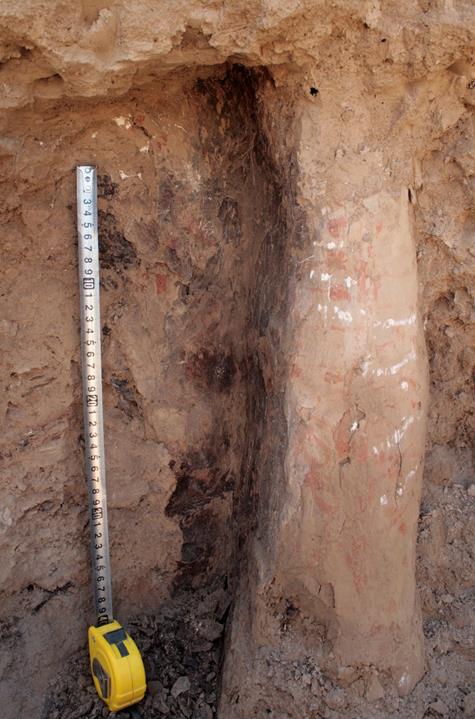
Fig. 19. Room 34, Right column of the hearth.
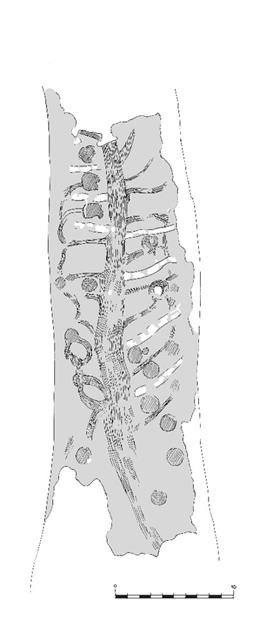
Fig. 20. Room 34, Drawing of a tree on the right column of the hearth. By M. Gervais.
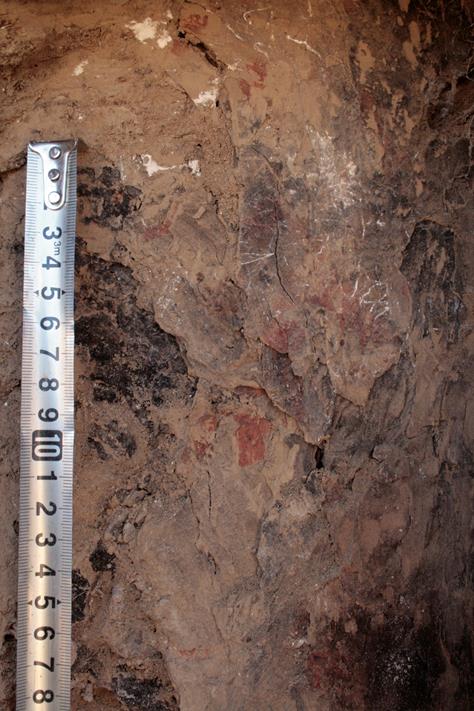
Fig. 21. Room 34, back of the hearth.
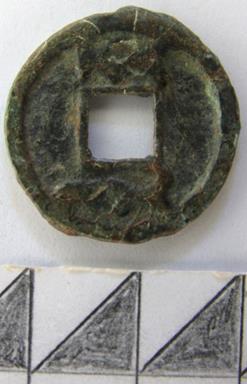
Fig. 21. Room 34, coin of Ghurak av.
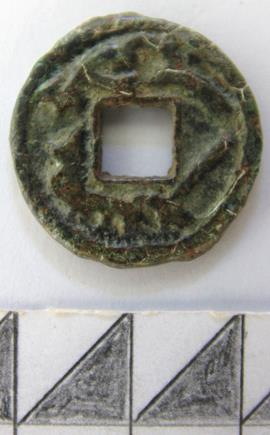
Fig. 22. Room 34, coin of Ghurak rev.
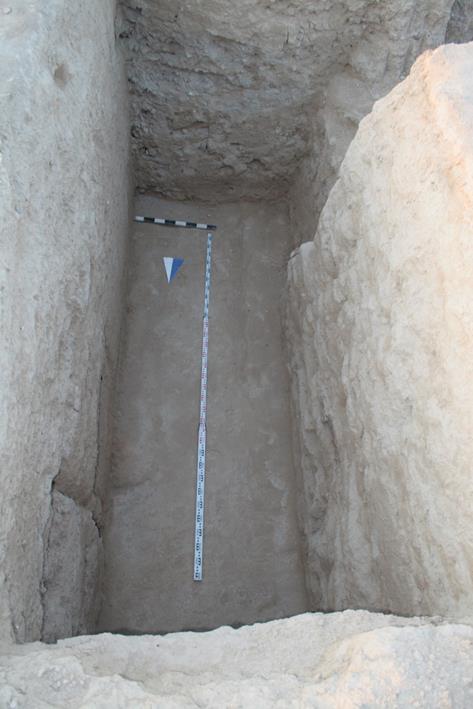
Fig. 24. Room 35.
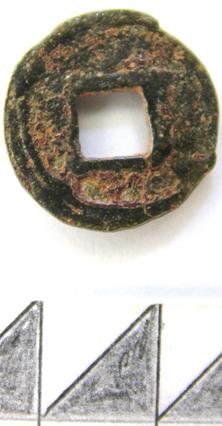
Fig. 25. Room 35, coin of Turghar av.
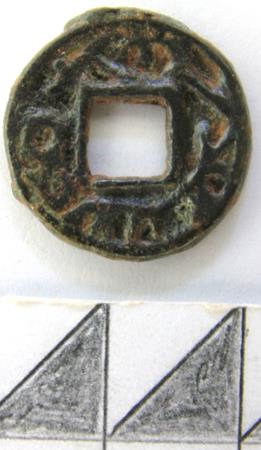
Fig. 26. Room 35, coin of Turghar rev.
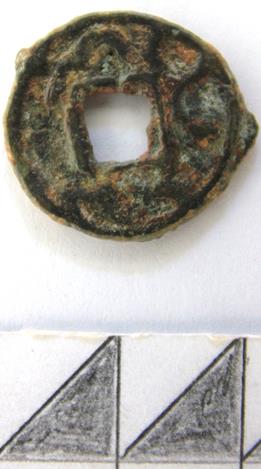
Fig. 27. Room 35, coin of Turghar av.
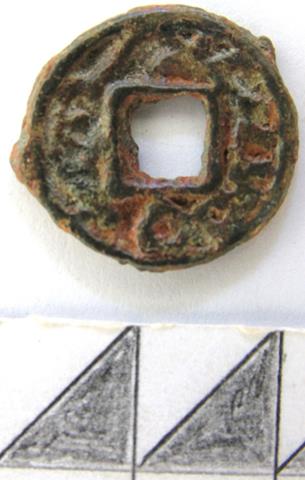
Fig. 28. Room 35, coin of Turghar rev.
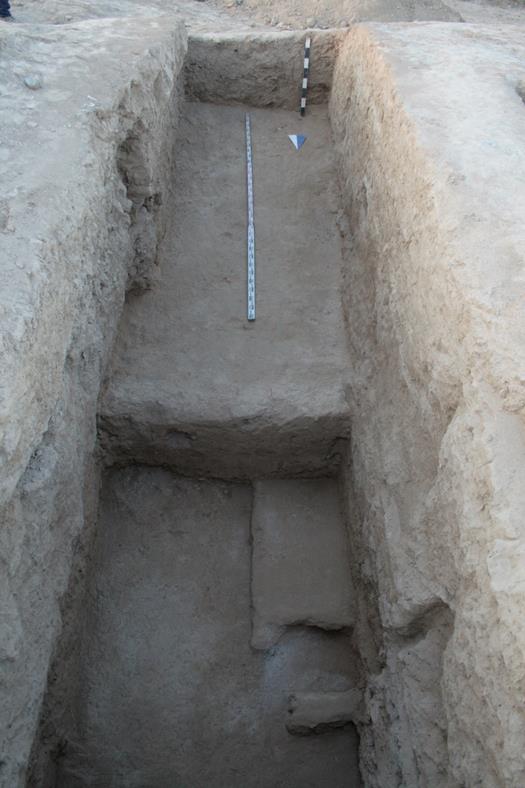
Fig. 29. Room 36.
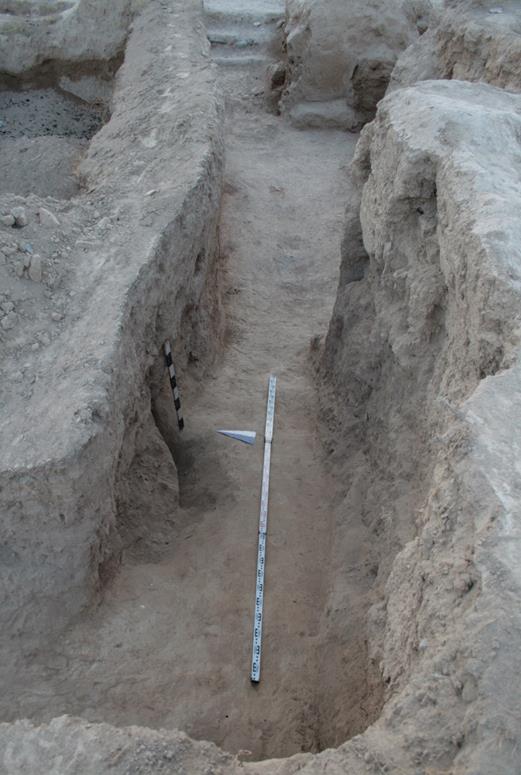
Fig. 30. Room 37.
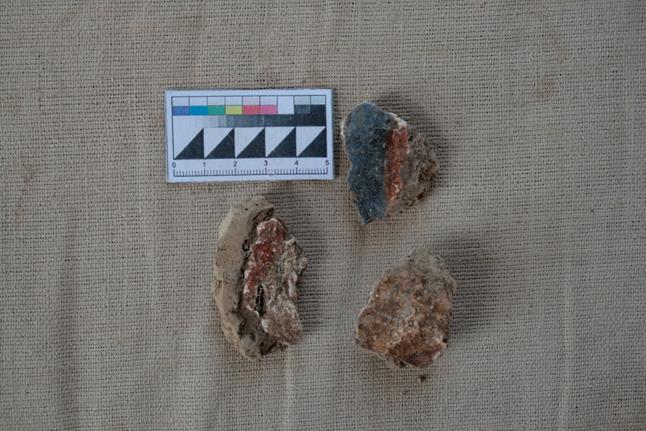
Fig. 31. Sounding 1, fragments of wall-paintings.
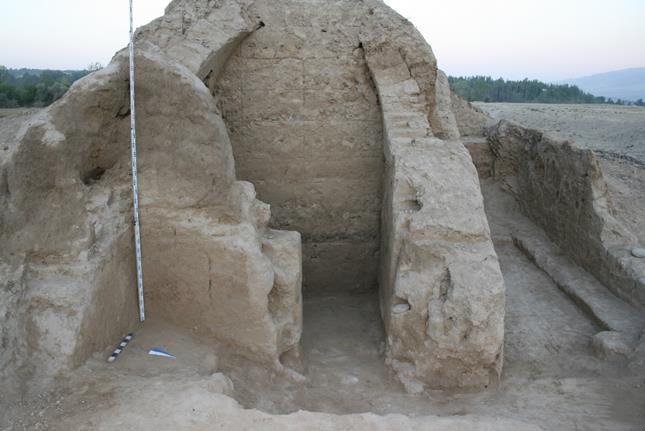
Fig. 32. Area 4, Room 1.
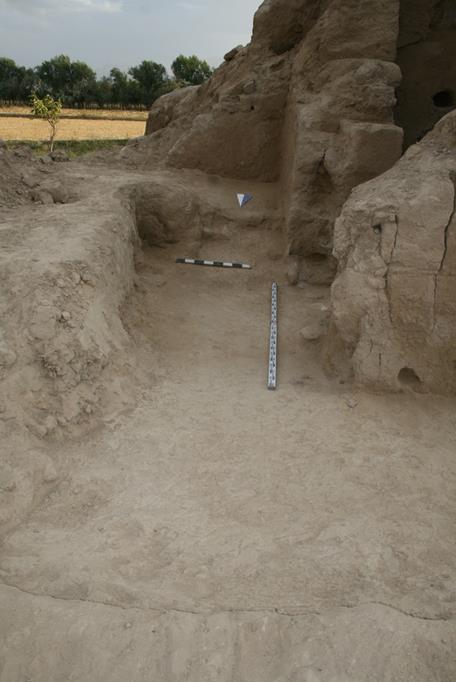
Fig. 33. Area 4, Room 1.
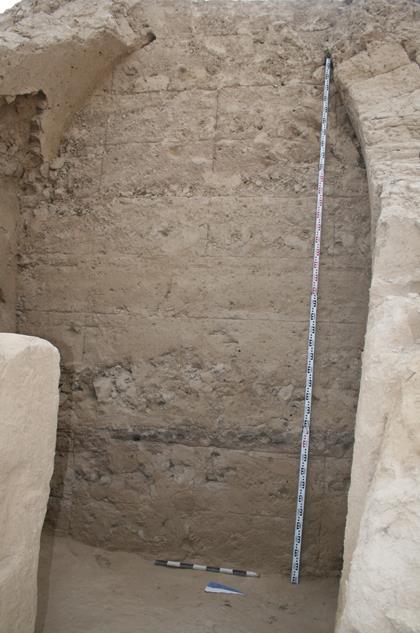
Fig. 34. Area 4, Room 2.
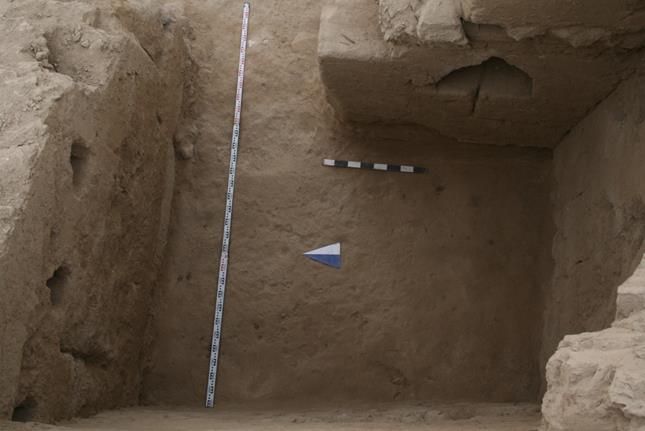
Fig. 35. Area 4, Room 2.
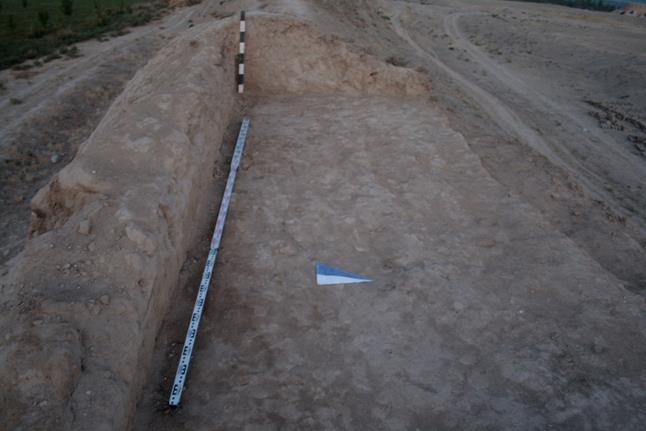
Fig. 36. Area 4, Room 4.
Michael
Shenkar and Sharof Kurbanov
(download here)
Sanjar-Shah Excavations Report 2016
This season we have continued investigations in Area IV and in Area VII initiated during last year. We have also started excavations in two new areas (V and VI) located along the southern wall of the town (Fig. 1). Area V is situated approximately in the middle of the southern wall, some 65 m to the west of Area IV, and Area VI is adjacent to the southwestern part of the southern wall. The area along the southern wall is the only one apart from Areа II, which was not levelled during the Soviet period.
In
Area V parts of the third floor were preserved and two special finds, a
fragment of a bronze Chinese mirror and a unique bronze pin were made there.
Area IV
This Area is situated at the easternmost corner of the southern wall of town (Figs. 2-3). The investigations here were started last year and were continued this season when three additional rooms were partly excavated. A banket (section) was left running through entire area from north to the south that separates Rooms (5-7) excavated this season from Rooms (1-4) which were investigated last year.
Room 5
Room 5 (3.5 x 3.2 m) is located to the south of Room 6 (Fig. 4). In this season, three walls of this room were cleared. Wall 3 (h. 3.1 m from the floor level) is made of layers of pakhsa blocks and mud brick. The upper part of the wall is badly preserved. On the height of 2.05 m there are mud bricks that were probably originally part of a mezzanine. At the distance of 45 cm from the upper floor there is a semi-circular niche (62 x 50 x 45 cm). Inside the niche there are traces of intense burning and it seems that it functioned as a hearth of the second storey. The second niche (45 x 56 x 35 cm) was found at the distance of 60 cm to the east from the first niche. The lower part of the wall is relatively well preserved and is built entirely of pakhsa blocks. At the distance of 2.25 m from the banket there is a niche (145 x 16 x 33 cm) which has a semi-circular shape in its upper part. Wall 9 (h. 1.36 m from the sufa level; l. 2.52 m; w. 80 cm) is made of pakhsa blocks. In the southern part of the Wall there is a niche (blocked passage; 1 x 0.53 m). In some places on the Wall there are fragments of plaster. Wall 8 (h. 1.3 m from the sufa level; l. 3.24 m) is built of pakhsa blocks and plastered. L-shaped sufa was installed along the Walls 8 and 9. Along the Wall 8 the sufa is very badly preserved (h. 15 cm; w. 80 cm). The sufa along the Wall 9 (h. 55 cm; l. 195 cm; w. 84 cm) is better preserved. It is constructed of standard mud brick. Along the edge of the sufa there is a mud brick enclosure (l. 293 cm; w. 15-20 cm). There is one floor level in this room. Its surface is greenish and solid. In the southern part of the floor there are traces of intense burning.
Room 6
Room 6 is located to the north of Room 5 and 7 (Fig. 5). Only two Walls 1 and 8, and parts of the floor were exposed during this season (4.6 x 1.85 m). Wall 8 (h. 1.1 m; l. 3.71 m) is shared with Rooms 5-7 and is made of pakhsa blocks. There was probably a passage or a ramp leading to Room 7 in the western part of the wall. Wall 1 (h. 95 cm; l. 4.65 m) is made of both pakhsa blocks and rows of mud brick. The floor surface uncovered so far is smooth, solid and green.
Room 7
Room 7 (excavated area: 260 x 90 cm) is located to the west of Room 5 and to the south of Room 6 (Fig. 6). Wall 3 (h. 3.5 m) is the southern wall of the city built of pakhsa blocks. At the height of 2.9 m from the floor level, a layer of plaster is preserved. At the height of 60 cm and at the distance of 10 cm from Wall 9 there is a niche (40 x 36 x 30 cm). Its upper part has a semi-circular shape and is plastered. Around the niche, the surface of the wall is burned. At the distance of 43 cm from Wall 9, there is a hearth attached to the Wall 1. Wall 9 (h. 1.75 m; l. 2.1 m) is shared with Room 5 and is constructed of pakhsa blocks and of mud brick. One floor level was identified in the room. Its surface is relatively smooth, solid and yellowish.
Area V
The excavations of this Area were initiated in this season (Fig. 7). So far, we have uncovered 5 rooms (Rooms 1-3 and Rooms 5-6) adjacent to the southern wall and a ramp (Room 4). In addition, partially preserved room of the upper floor was excavated (Room 1). Room 6 stands out with its particularly large size.
Room 1
Room 1 is located on the third floor above the Rooms 2 and 5. It has a rectangular shape (Fig. 8). Only southern (1) and eastern (2) walls are partially preserved. An outline of the western wall was also visible. Wall 1 (h. 5.4 m from the floor level) was constructed together with the southern wall of the town. In the upper part of the Wall three layers of plaster were identified. The middle layer has traces of red color, which most probably represent the evidence for the existence of wall paintings. Also on Wall 2 (l. 1.2, h. 1.45 m) three layers of plaster were found, but no traces of paintings. One level of floor was cleared in the southern part of the room above Rooms 2 and 5. Only parts of it are preserved. It is made of standard mud brick, its surface is solid and has a yellowish color. A fragment of a Chinese bronze mirror showing a character playing a qin (zither) was found in the fill (Fig. 9). A separate study will be dedicated to it.
Room 2
Room 2 (3.9 x 2.1 m) is located south from Room 4, to the west from Room 5 and to the east of Room 3 (Fig. 10). It has a rectangular shape and has a partially preserved vault. The lower part (up to 2.1 m) of Wall 7 (h. 7 m) is built from pakhsa and the upper part from standard mud bricks. It is attached to the Wall 6. In the western part of Wall 7 (20 cm from Wall 5, high 20 cm from the floor level) a niche was found (h. 50 cm; w. 40 cm; d. 20 cm). In the eastern part of the Wall 7 there is a passage (h. 1.5 m) to Room 4 which has not been cleared yet. In the upper part of the passage there is a skylight (h. from ramp level 50 cm; w. 1.2. m) leading to Room 4 (Fig. 11). Traces of plaster are visible on some parts of the wall. Wall 6 (h. 3.8) is built from pakhsa blocks and has a well-preserved layer of plaster (Fig. 12). The vault begins at the high of 1.9 m from the floor level. It is built from mud brick and is preserved up to a height of 1 m. The vault is also plastered. In the lower part of the northern section of the wall there is a manhole (h. 70 cm; w. 70 cm) leading into Room 5 (Fig. 13). At the distance of 2.6 m from Wall 4 there is a niche (50 x 50 x 30 cm). The upper part of the niche has a semi-circular shape and is plastered. Wall 4 (h. 2.9 from the sufa level) is completely preserved (Fig. 14). It is made of pakhsa and plastered. This wall is in fact a northern face of town wall. Wall 5 (h. 2.9 m) is built of pakhsa and has traces of plaster. The vault begins at the height of 2.1 m from the floor level. In the southern part of the room there is a passage (h. 1.7 m from the sufa level; 20 cm from Wall 4; w. 90 cm) to Room 3. In the corner of Walls 5 and 7 there is a semi-circular depression (h. 90 cm; w. 1 m; d. 25 cm). The lower part of this depression is plastered and it seems that it served for storage.
In the southern part of the room there are remains of a vault (l. 1.2 m; h. 3 m). Along the Wall 4 there is a plastered sufa (w. 80 cm; h. 25 cm) made of mud brick. The floor of the room is flat and have a plaster layer of some 4-5 cm which was made over a fill of pebbles.
Room 3
This room is located to the west of Room 2 with which it shares Wall 5. It has been only partially exposed, but it seems that this room was perhaps related to a courtyard adjacent to the city wall (?). Its excavations will be continued next season.
Room 4
This room is a ramp located to the north of Rooms 2 and 5 (Figs. 15-16). The ramp led to the second (mezzanine) and third floors. The direction of the ramp is counter clockwise. It was vaulted and is well-preserved. In the western section of the ramp there is a small window for the second floor.
Room 5
Room 5 (3.6 x 2.2 m) is situated to the south from Room 4 and to the east from Room 2 (Figs. 17-18). The preservation of the Wall 4 (h. 2.8 m from the sufa level) in this room is very good. It also has a well-preserved level of plaster. Wall 8 (h. 2.7 m) is built from pakhsa blocks (1.1 m) and is attached to Wall 4. The plaster on this wall was not preserved. The cornice is situated at the height of 2 m from the floor level. In addition, 6 holes for wooden beams that supported the mezzanine were made in Wall 8. All of them are situated at the height of 1.8 from the floor level and have similar dimensions (h. 25 cm; w. 30 cm; d. 40 cm). An arch-like niche (h. 60 cm; w. 60 cm; d. 22 cm) was found beyond the 5th hole. The upper part of the niche was destroyed when the inhabitants removed the beam of the mezzanine. Traces of burning left by a lamp were found in the niche. Wall 6 (w. 90 cm) is attached to Wall 4 and is also made of two rows of pakhsa blocks (h. 1 m), but is better preserved than Wall 8. Cornice is found at the height of 2 m from the floor level. Also here 6 holes for mezzanine beams were made which correspond to the holes in the opposite Wall 8. In the corner between Walls 4 and 6 in one of the holes, a 10 cm fragment of the mezzanine floor made of reed and straw is preserved. At the distance of 50 cm from Wall 4 there is a plastered arch-like niche (h. 40 cm; w. 40 cm; d. 40 cm). In the corner of Walls 8 and 7 there is a plastered manhole (h. 90 cm; w. 60 cm; d. 90 cm). Later the manhole was filled with standard mud bricks. Wall 7 (w. 80 cm) is built of large pakhsa blocks (h. 2 m). There is a passage (h. 1.7 m; w. 1.1 m) in the corner with Wall 6. Above the passage there was a ramp that leads to the second and the third floors; the direction is from west to east. The height of the second floor from the mezzanine to the vault is 1.3 m. The vault in this room is preserved in the southern part only. It is made of mud brick (50 x 25 x 10) and is plastered with fine plaster.
In the southern part of the room, along Wall 4 a plastered sufa (h. 45 cm; w. 70 cm) was found. The floor is flat with a slight degradation towards south. The surface of the floor is plastered. It seems that this room functioned as a granary.
Room 6
Room 6 (3.4 x 3.9) is situated to the east of Room 5 (Fig. 19). Wall 4 which forms also the southern city wall is preserved up to the height of 5.2 m from the level of the first floor. It is built of pakhsa blocks (1 x 1.4 m) and mud brick. In the corner of Walls 9 and 10 parts of the wall are washed away with rain. The wall is plastered with fine plaster layer. In the south-eastern part there is a soot from a domestic hearth. Wall 9 (h. 1.4 m) was constructed from pakhsa blocks and in the upper part there was a row of mud brick. It is attached to Wall 4. The plaster layer on the wall is well-preserved and covered with soot. At the height of 3.5 m above the level of the first floor 8 holes from mezzanine beams (h. 30 cm; w. 20 cm; w. 45 cm) were found. Wall 8 (h. 5.2 m) is shared with Room 5 and is covered with fine layer of plaster. In the northern part of the wall there are traces of burning. At the distance of 1.5 m from Wall 4 at the height of 1.3 m from the first floor there is a plastered niche (h. 35 cm; w. 15-20; d. 20 cm) for a lamp. Traces of soot are visible in the upper part. At the height of 3.5 m from the level of the first floor there are 8 holes from wooden beams identical to those in Wall 9. The beams that were originally installed in these holes formed the roof of this room. Wall 10 is almost completely destroyed. In the corner between Walls 9 and 10 there was a passage, which has not been cleared in this season. Two floor levels were identified in Room 6. The first floor has a smooth surface and slightly rises from north to south. Second floor was found in the southern part of the room. On this floor a “case” (1.7 x 3.4 x 1.7 m) was constructed made of baked brick put vertically on the smaller side. Ceramic assemblage from this room is characterized by a large percentage of cooking pots (large fragments and archaeologically complete cooking ports were found here).
Two remarkable finds were made in the fill in this room. One is a crystal bead (Fig. 20) and another is a unique cast bronze pin, topped by a “Janus” like double image of a human head wearing a helmet (Fig. 21). The pin will be a subject of a special study.
Area
VI
This area was opened this season in the western part of the southern city wall (Fig. 22). We have excavated four vaulted rooms (1, 2, 5, 6), a courtyard (3), a tambour (4) with parts of a corridor.
Room 1
This room (5.8 x 2.2 m) is located on the eastern edge of the excavated area (Figs. 23-24). Wall 1 (2.8 m) of the Room forms the inner side of the city wall. Originally, the wall was constructed entirely from pakhsa blocks. Later, its upper part (from 1.2 m) was repaired using mud brick. At the height of 1.2 m from the sufa and at the distance of 60 cm from Wall 3 there is a window (h. 1.5 m; w. 1.1 m; d. 1.5 m). The surface of the window is covered with soot. Wall 2 (h. 3.9 m from the earliest floor). Up to the height of 1.6 m it is built of pakhsa blocks and its upper part is made of standard mud brick. Vault beings at the height of 1.9 m from the floor level, and it is preserved up to the height of 1.6 m. At the distance of 2.7 m from Wall 1, at the height of 1.4 m above the level of the earliest floor there is a niche (40 x 40 x 10 m). At the distance of 2.2 m to the north there is a second niche (60 x 50 x 35 cm). Wall 4 (h. 75 cm from the level of the earliest floor; w. 70 cm) is built from pakhsa. Wall 3 (h. 2.8 m) is built from standard mud brick up to the height of 1.3 m. Plaster is not preserved. The upper part of the wall was built later. On this part of the wall there are trace of plaster. The lower part of the wall projects forward for 25 cm. Wall 3 is attached to Wall 1.
Two floor levels were found in this room. The first floor is found at the depth of 3.5 m from the surface level. The floor is smooth, solid and yellowish. A sufa (h. 15 cm; w. 70 cm) was constructed on this floor along Walls 3 and 1. In the sufa attached to Wall 1, in the corner with Wall 2, a semi-circular hearth was found (h. 45 cm; l. 1.15 m; 30 cm). The inner part of the hearth is circular and is built from the halves of bricks placed vertically (Fig. 25). The hearth shows traces of intense burning. The second floor was found at the depth of 60 cm from the first floor. The surface is irregular, solid and has yellowish color. A small sufa (h. 20 cm; w. 70 cm) is attached to Wall 4. The sufa has a yellowish plastering.
It seems that this room was used for dwelling. Soot on the walls testifies to the intense use of hearth. The window which is located directly above the hearth probably also served as chimney.
Room 2
This room (5.5 x
2.7 m) is situated to the west of Room 1 and has a rectangular shape (Fig. 26).
Wall 1 (h. 4.4 m) which corresponds to the inner side of the city wall is built
of pakhsa blocks and is plastered. The lower part of the wall shows
traces of burning. Along the whole length of the wall, at the height of 2.6 m
there is a rectangular “chest-like” installation. The bottom of the
installation is hard and yellowish with traces of alabaster plaster. Originally,
it was placed on two wooden beams whose holes are visible in the walls. The
northern wall of the installation is not preserved. Wall 3 (h. 2.3 m from the
sufa level) is built of pakhsa blocks. It has two layers of plaster. The
early layer is completely burned. At the height of 1.8 m from the sufa there is
a cornice of the vault which is preserved up to 1 m and built of standard mud
brick. The vault hangs over the room and projects forward for 30 cm. His total
height from the sufa level is 2.8 m. Two holes for wooden beams (25 x 20 x 30
cm) were made in the room at the height of 1.9 m from the sufa level. The first
hole is situated at the distance of 30 cm from Wall 1 and the second is made 50
cm further to the north. Wall 4 (h. 2.8 m) is built of pakhsa blocks and
is attached to Wall 3. At the distance of 1.2 m from Wall 5 there is a passage.
Since this part of the wall is not preserved well, the dimensions of the
passage are still to be established in the next season. Wall 5 (h. 2.8 m from
the floor level) is made of standard mud brick. The plaster is not preserved.
In the southern part of the wall there is a passage (h. 2 m; w. 1 m) which was later
filled with pakhsa blocks. Above this blocked passage at the height of
2.2 m from the floor level, there are two beam holes. The first one (25 x 20 x
45 cm) is made 25 cm to the north of Wall 1, the second one has a slightly
bigger dimensions (30 x 20 x 55 cm). A sufa (h. 30 cm; w. 70 cm) was constructed
along the entire Wall 3. It is built of mud brick and plastered with solid,
yellowish plaster. The southern part of the sufa is better preserved than the
northern part.
Only
one floor level was identified in this room. It has an irregular surface of
yellowish color. In the middle of the room there is a deepening (d. 15 cm; w.
60 cm) characterized by slightly green surface and the presence of pebbles. In
the ceramic assemblage found in this room particularly notable is an almost
complete small vessel probably used for incense.
Room 3
Room 3 is situated to the west from Room 3 and was only partially excavated this season (Fig. 27). Large dimensions (l. 8.3. m; w. 4.4 m) of already investigated area indicate that this room was probably in fact a courtyard. Wall 1 (h. 3 m from the third floor) is the inner side of the city wall and is made of pakhsa blocks. The plaster is not preserved. Wall 5 (h. 1.3 m from the second floor; l. 7.3 m) is built of standard mud brick. This wall stands on the second floor. Three floor levels were identified in this room. The first floor was found at the depth of 90 cm from the top of Wall 5. The surface is irregular and is of light green color. In the western part of the room the floor level is significantly higher. It seems that from this floor there was an accent to the upper floors. The second floor was found at the depth of 20 cm from the first. It is also of green color, but is characterized by small pieces of charcoal. Similar to the first floor, it also rises to the west. The third floor was only partly preserved at the depth of 30 cm from the second floor. The surface is relatively smooth, of yellowish color in the southern part and of green color in the northern part of the room. In the northern part of the room we have started excavating a corridor going eastwards. The width of the already excavated passage is 1.5 m. Wall 4 in this room is preserved up to the height of 1.5 m. The excavations of this corridor will be continued in the next season.
Room 4
Room 4 is located to the north of Room 1 (Fig. 28). It probably functioned as a corridor and it has three passages, to Room 1, to the north and to the west. Wall 4 (h. 2 m) is shared with Room 1 and is made of pakhsa blocks. In some places of the surface a layer of plaster is preserved. Attached to the Wall there is a repair wall (h. 90 cm; l. 1.2 m) which projects forward for 95 cm. Wall 2 continues from Room 1. In the northern part there is a semi-circular sufa (h. 70 cm; w. 1.5 m) attached to it. In the Wall 3 there is an arched passage (h. 1.8 m; w. 1.2 m). In this room there are two levels of floor that correspond to those in Room 1.
Two complete cooking pots were found in this room (Fig. 29)
Room 5
This room (4.2 x 2.9 m) is located to the west from Room 3 (Fig. 30). It has two passages and a sufa installed along the Wall 6. Wall 1 here is preserved up to the height of 4.1 m. The plaster is sooty. Wall 6 (h. 1.6 m from the sufa level) is made of pakhsa blocks. Fragments of plaster layer are preserved on the wall. At the height of 55 cm from the sufa level there is a vault (h. 1 m). The vault is plastered and also here, the plaster is sooty. Wall 7 (h. 1.2 m) is built of mud brick and is quite badly preserved. In the western part of the Wall there is a passage (w. 1 m) to the still unexcavated room. Wall 8 (h. 2.5 from the second floor) is built of pakhsa and its preservation is bad. Like the other rooms it was also vaulted. The vault begins at the height of 1.2 m from the level of the second floor. In the southern part of the wall there is a passage (h. 1.4 m; w. 1 m) to Room 6. A sufa (h. 35 cm from the first floor; w. 60 cm) is found adjacent to Wall 6. Its surface is solid and is of yellowish color. The first floor has a slightly green color. The second floor was found at the depth of 30 cm from the first one and is of the same color and substance.
Room 6
This room (4.4 x 2.2 m) is located to the west of Room 5 (Figs. 31-32). Wall 1, which corresponds to the city wall is preserved in this room up to the height of 3.2 m. It is built from pakhsa blocks and was plastered with two layers of plater. This room was also vaulted and the vault begins at the height of 1.5 m above the floor level. The cornice of the vault is found at the height of 1.3 m. The vault is built of mud brick and its height was 2.35 m from the floor level. Wall 8 (h. 2.5 m; w. 1.7 m) is shared with Room 5 and is badly preserved. It is made of pakhsa blocks. In the southern part of the wall there is a passage (h. 1.3 m; w. 70 cm) at the distance of 1.5 m from Wall 9. Wall 9 (h. 2.5 m) is constructed of mud brick. Wall 10 (h. 2.35 m) is built of mud brick and has a thin layer of plaster. The floor is constracted of standard mud brick and is plastered. One floor level was identified in this room. It has a smooth, solid and yellow surface.
Area VII
This season we have continued excavations started last year in the northwestern part of the site, close to the Round Tower (Area I) (Fig. 33-35). This is the first time that the western part of Sanjar-Shah becomes subject of archaeological investigations, because in the Soviet period this part was completely levelled by bulldozers for agriculture. Therefore, also the soil here is extremely hard and difficult for the excavations. We have opened an area of 13x13 m in the place where a large, rectangular building was identified by us on the air photos of the site. Indeed, we have excavated a huge Wall 1, 3 m thick, whose exact function is not clear at this stage (Fig. 36). To the east of the Wall 1 we have excavated so far a small, elongated area (1.9 x 13 m) for a depth of 1.2 m. Two layers of grey color were identified. The first one at the depth of 55 cm from the surface level, and the second one at the depth of 25 cm from the first. In the southern part of the excavated area at the depth of 25 cm there is a layer of soil (6-10 cm thick) with a large admixture of ashes. Wall 1 is preserved to the height of 80-90 cm.
“Room 1”
This “Room”, which was only partially exposed so far, appears rather to be a part of a street. Its surface is irregular, solid, of yellowish and occasionally green color. In the middle of the exposed part, there is a hole filled with stones of different size.
Room 2
To the west of the
Wall 1, Room 2 (5 x 4.3 m) was excavated. Wall 3 (h. 60 cm from the floor
level) is very badly preserved and was only partly exposed. It is made of pakhsa.
Wall 2 is preserved up the similar height of 60 cm and is built of mud brick.
Wall 5 is preserved only up to the height of 50 cm and is also built of mud
brick. Along Wall 5 there is a sufa preserved only up to the height of one mud
brick. The floor in this room is solid and smooth and has a red color, which
probably indicates that it was burned.
Conclusions and further prospects
This season the excavations were conducted on an unprecedented scale. Our investigations in the Areas along the southern city wall (Areas IV-VI) uncovered exceptionally well-preserved architecture. Especially noteworthy is Area IV where remains of the floor of the third storey were found (Room 1). Numerous small fragments of paintings found in the fill in Rooms 2-5 indicate that the living rooms were located on the third storey and that, at least Room 1 was painted with figurative paintings. Unfortunately, the rooms of the first floor were not painted (despite a well-preserved layer of good plater), and it seems that most of them served as utility rooms. Two special finds were made in Area V: a fragment of a Chinese bronze mirror and a unique bronze pin. They are currently being prepared for publication. In addition, several complete or almost complete vessels were found this season. The ceramic assemblages of Sanjar-Shah are currently being studied by Abdurahmon Pulotov as part of his PhD dissertation at the Hebrew University of Jerusalem.
Next season we plan to continue excavations of the Areas (IV-VI) along the southern wall of the city. The purpose of these investigations is to understand the nature of these rooms and their dating. It can also provide important information for the Sogdian urban planning when compared with similar structures attached to the city walls which were excavated in Panjikent and Paykend. In addition, the exceptional preservation of the rooms and the plaster layers in these Areas (IV-VI) indicate that if one of these rooms had wall-paintings, there is a good chance that they would be preserved. In Panjikent, wall-paintings were indeed discovered in the rooms adjacent to the city walls. Despite the fact, that it is more common that the “Reception Halls” and rooms decorated with paintings to be located on the second and the third floor (as is indeed the case in Area V with Room 1), sometimes at Panjikent, the rooms of the first floor were also painted. Moreover, often fragments of paintings that fell from the upper floors were excavated at Panjikent in the fill in the rooms of the first floor.
We
also intend to broaden Area VII in the western part of the site where we
believe was the location of the administrative quarter, the palace and the
houses of the aristocracy of Sanjar-Shah. Wall 1 which is exceptionally thick
(3 m) is either part of the early inner wall dividing the town, or a wall of a
truly monumental structure which was located in this Area and could turn out to
be one of the public buildings of the town. We hope that future excavations
along this wall will reveal its purpose. Despite the poor preservations of the
remains (the entire Area VII was levelled in the Soviet period) we should be
able at least to trace the ground plan of the structures.
An important publication about the worldwide most ancient paper manuscripts in Arabic found so far was published in the Jerusalem Studies in Arabic and Islam, (2016), Hebrew University of Jerusalem. The fragments were discovered in Sanjar Shah.
Figures

Fig.
1. Sanjar-shah. General plan of the excavated areas (2016).

Fig.
2. Area IV. Drawing by Aleksey Akulov.

Fig. 3. Area IV. General view of the rooms excavated in 2016.

Fig.
4. Area IV. Room 5.

Fig.
5. Area IV. Room 6.

Fig.
6. Area IV. Room 7.

Fig.
7. Area V. Drawing Alexey Akulov

Fig.
8. Area V. Room 1.

Fig.
10. Area V. Room 2.

Fig.
11. Area V. Room 2.

Fig.
12. Area V. Room 2, Wall 6.

Fig. 13. Area V. Room 2.

Fig. 14. Area V. Room 2.

Fig. 15. Area V. Room 4.

Fig. 16. Area V. Room 4.

Fig. 17. Area V. Room 5.

Fig. 18. Area V. Room 5.

Fig. 19. Area V. Room 6.

Fig. 20. Area V. Room 6. A crystal bead.

Fig. 22. Area VI. Drawing by Alexey
Akulov.

Fig. 23. Area VI. Room 1.

Fig. 24. Area VI. Room 1.

Fig. 25. Area VI. Room 1, hearth.

Fig. 26. Area VI. Room 2.

Fig. 27. Area VI. Room 3.

Fig. 28. Fig. VI. Room 4.

Fig. 29. Area VI. Room 4. Cooking pots.

Fig. 30. Area VI. Room 5.

Fig. 31. Area VI. Room 6.

Fig. 32. Area VI. Room 6.

Fig. 33. Area VII. Drawing by Alexey
Akulov.

Fig. 34. Area VII looking north.

Fig. 35. Area VII looking west.

Fig. 36. Area VII. Wall 1.
Sanjar-Shah Excavations Report 2017
Michael Shenkar and Sharof Kurbanov
(Area Supervisors: Abdurahmon Pulotov and Firuz Aminov; Architect: Elena Bouklaeva)
In 2017 the excavations focused on the Area V situated along the southern wall of the town. Investigations were also continued in Area VI in the southwestern part of the southern wall. We have also started excavating the new Area VIII in the western part of the town adjacent to the western part of the northern city wall (Fig. 1).
In Areas V and VIII, for the first time at Sanjar-Shah, fragments of wall-paintings in situ were uncovered.
Area V
The investigations of this Area were initiated during last season, when Rooms 1-5 and parts of Room 6 were excavated. This season we have finished the excavations of Room 6 notable for its large size, and excavated Rooms 7-12 with the adjacent street (Figs. 2-5). The architecture in this Area is exceptionally well-preserved up to the height of more than 5 m, which required investing a lot of time and effort in excavating every single room (Figs. 6-8).
Room 4
This room is a ramp located to the north of Rooms 2 and 5, and to west of Room 6. The excavations of Room 4 were started last season. In 2017, we have excavated the eastern part of the room (the lower part of the ramp) and uncovered three passages: one in Wall 7 leading to the south to Room 5, the second to Room 6, and to the west and further up the course of the ramp to Room 2. From the north, the room opened to the street. The entrance to the ramp was made in the eastern part of Wall 12. The ramp leads to the upper storeys of Rooms 2, 5 and 6. The passage (0.9 m wide) stands up to 1.6 m, but no vault is preserved. The doorstep is made of river pebbles (20 x 30 x 10 cm). Another passage (w. 1.05 m; h. 1.9 m) on the lower level leads to the lower storeys of the same rooms. It is located to the 0.95 m to the south. The walls of the passage are 1 m thick. Because of the danger of collapse, the passage was not fully excavated. The passage to the Room 6 was located in the northern part of the Wall 8.
Room 6
The excavations of this room were started last season and were not completed. Only Wall 1 (the city wall) was fully exposed, and parts of Walls 8 and 9 were excavated. Two special finds we made in 2016 in this room – a unique bronze pin with a finial in shape of two Janus-like faces, and a fragment of Chinese bronze mirror produced under the Tang dynasty. This season we have completed the excavations of the northern part of room (Figs. 9-10). Room 6 (6.7 x 5.3 x 3.4 m) has a rectangular shape and is situated to the east of Room 5 and to the west of Rooms 7 and 10. Wall 1 is preserved up to the height of 6 m from the floor level of the first storey. It is built from pakhsa blocks and mud bricks, laid interchangeably. Up to the height of 2.2 m it is built from pakhsa blocks (0.8 x 0.7). Above them, there are 2 rows of mud bricks, a row of the pakhsa blocks of the same dimensions, 3 rows of mud bricks, and pakhsa blocks again up until the preserved height. At some places on the wall, fragments of plastering (1-1.25 cm thick) that blackened from smoke are preserved. In the eastern end of the wall at the height of 1.6 m there is a beam hole (18 x 10 x 13 cm). At the same height level, at the distance of 1.3 m to the west, there is a second beam hole (25 x 13 x 5 cm). The lower part of the wall is clad with fired bricks (48 x 30 x 4 cm).
Wall 8 (h. 2.3-6 m (from north to south); l. 6.7 m; w. 1.05 m) is constructed of pakhsa blocks of various dimensions up to the height of 2.8 m, followed by mud brick (50 x 24; 25 x 10 cm). Fragments of heavily smoked plaster are preserved on the wall. At the distance of 1.5 m to the north of the Wall 1 at the height 1.55 cm from the floor level, there is a beam hole (34 x 22 x 10 cm). The lower part of the wall is clad for 1.63 m with the similar fired bricks as the Wall 1. In the northern part of the wall, at the distance of 1.35 m from Wall 10 there is a passage to Room 4. The passage is vaulted (h. 1.7 m; w. 1.1 m). From the Room 6, the floor of the passage rises for 10 cm.
Wall 10 (h. 2.5; l. 3.7; w. 09 m) is made of mud brick (50 x 25 x 10 cm). The wall is plastered (1 cm thick). There is a sufa (h. 30 cm; w. 30-40 cm) running along the wall. It is clad with fired bricks for a length of 1.4 m. The sufa surface has a thin layer of yellow plaster. Wall 10 is not bond with Walls 8 and 9.
Wall 9 (h. 3.95-2.6 m from south to north; l. 5.3 m; w. 1 m) is built of pakhsa blocks up to the height of 1.3 m, and above that level of mud brick (50 x 25 x 10 cm). At the distance of 1.58 m to the north of Wall 1, at the height of 1.47 m from the floor level there is a beam hole (23 x 17 x 30 cm). It symmetrically corresponds to the beam hole in Wall 8. On the wall, there are small fragments of heavily smoked plaster (especially in the southern part of the wall). The lower part of the wall (for 1.64 m from the south and for 1.1 m from north) is clad with fired bricks. In the central part it is plastered and the same plaster layer continues on the floor surface.
The floor surface is relatively smooth, with traces of yellow plaster preserved in some places. Small pebbles are also visible. Near the Wall 9, at the distance of 1.6 m from Wall 1, a single mud brick (50 x 25 x 10 cm) was placed on the floor at 90° angle. The southern side of the brick is plastered. The fill in the room consisted of collapsed mud brick and loose earth.
Finds made in this room: two spindle whorls made of stone and gypsum (found in the fill). On the floor of the room, a fragment of bronze plaque was found. In addition, on the surface next to the excavation area, a fragment of a terracotta figurine which probably originally belonged to the fill of Room 6 (Fig. 11). The figurine belongs to a well-known local type (similar terracottas are known from Panjikent, Afrosyab, Kafir-Kala) and is thought to represent a Zoroastrian ritual of tying a sacred girdle – kusti.
Room 7
This two-storey room (2.7 x 2.7 m) is located to the west of Room 8, to the south of Room 10, and to the east of Room 6. The lower storey was used as a warehouse and boxes were installed there. Numerous wooden details of a collapsed roofing of the first storey were uncovered (Figs. 12-18).
Wall 1 – the inner side of the southern city wall is preserved for a height of 4.3 m from the level of the storage boxes built along it on the floor of the first storey. Up to the height of 1.7 m it is built of the pakhsa blocks, above them there are two rows of mud bricks followed by more pakhsa blocks. Four layers of plaster (0.5-2 cm thick) were identified on some parts of the wall. Two upper layers were blackened from smoke. On the second floor at the distance of 0.95 m from Wall 14, and 1 m from Wall 9 (in the middle of the Wall 1) at the height of 2.9 m from the boxes there is a rectangular niche ( 1.2 x 0.8 x 0.55 m) with rounded corners with skylight. The skylight (h. 0.65 cm; w. 0.6 m) is made inside the niche at the height of 40-45 cm from its surface. Inside, the niche has several layers of plater (0.3-0.7 cm thick). The lower layers are blackened from smoke. At the height of 1.8 m from the boxes surface, at the distance of 65 cm from Wall 14 there is a beam hole (20 x 10 x 25 cm).
Wall 9 (h. 3.5 m from the boxes surface) is built of pakhsa blocks up to the height of 1 m, followed by rows of mud brick. It is attached to Wall 1 and covered with a layer of plater (0.5 cm thick). Six holes from the beams belonging to the roofing of the lower storey were found in the wall: 1) dimensions: 13 x 14 x 25 cm, 10 cm from Wall 1; 2) dimensions: 15 x 20 x 25 cm, 20 cm to the north of the first hole; 3) dimensions: 20 x 20 x 45 cm, 20 cm to the north of the second hole; 4) dimensions: 20 x 25 x 35 cm, 50 cm to the north of the third hole; 5) dimensions: 15 x 13 x 30 cm, 30 cm to the north of the fourth hole; 6) dimensions: 20 x 20 x 30 cm, 35 cm to the north of the fifth hole. At the height of 20 cm from the level of the beam holes remains of the floor of the second storey were uncovered. The wall of the second storey is 20 cm thinner than that of the first storey.
Wall 13 (h. 2.15 m; w. 0.5 m) is constructed of mud brick (50 x 25 x 10 cm). In some places on the wall, fragments of plaster (1-1.5 cm thick) are preserved. Wall 13 is not bond with Walls 9 and 14. In the eastern part of the wall, at the height of 1.25 m from the floor level there is a fragment of plaster (60 x 45 x 2 cm) with rows of stamped circles (diameter: 2 cm), which probably represent a simple decoration (Fig. 19). In the western part of the wall there is a passage (h. 1.4 m; w. 85 cm) leading to Room 10. Above the passage there is a wooden lintel (l. 1.3 m; w. 8-9 cm). The passage was not fully excavated.
Wall 14 (h. 4.3 m from the boxes level and 3.1 m from the floor level in the northern part) is made of the pakhsa blocks up to the height of 1.9 m following by mud brick. It is attached to Wall 14. At the height of 3.15 m from the floor and at the distance of 1.2 m from Wall 1 there is a semi-circular niche (h. 26 cm; w. 25-30 cm; d. 20 cm). The niche has three layers of plaster (0.5-1 cm thick). At the height of 2.4 from the floor level there is a second niche, also semi-circular (h. 30 cm; w. 30-35 cm; d. 10 cm). The niche is plastered with a thin layer of plaster. At the height of 1.9 m from the floor level there are 5 beam holes. Inside 4 holes remains of the beams were still present and it was not possible to measure their depth: 1) dimensions: 15 x 20 cm, at the distance of 10 cm to the north of Wall 1; 2) dimensions: 8 x 10 cm; 28 cm to north of the first hole; 3) dimensions: 20 x 27 cm; 28 cm to the north of the second hole; 4) dimensions: 20 x 20 cm; 65 cm to the north of the third hole; 5) dimensions: 15 x 15 x 45; 60 cm to the north of the fourth hole. The sides of the holes are reinforced with stones and with bricks.
Along the Wall 1 at the distance of 1.65 m from Wall 13 two boxes were built. They have different dimensions: western box (l. 1.3 m; w. 0.95 m); eastern box (l. 1.45 m; w. 1 m). They stand up to the 30 cm from the floor level. They have a common northern wall (h. 1 m; w. 20 cm), which is constructed of fragments of mud bricks. At several places there are fragments of plaster (1-1.5 cm thick) preserved on this wall. The boxes are separated by the thin partition-wall (h. 20 cm; w. 10 cm). The boxes are attached to the walls and they were originally plastered.
The floor in the room has a yellow color, with traces of burning in some places. At the distance of 0.95 m from Wall 14 there us a partition-wall constructed of fragments of mud brick (h. 15-7 cm; w. 23 cm). The second storey of Room 7 was filled with loose earth. Below it, the fill of first storey consisted of collapsed mud brick. Beneath this fill we have uncovered wooden elements of roofing of the first storey. It seems that following the collapse of the walls of the second storey, the beams of the roofing also broke down and fell (Figs. 20-21). The average size of the large beams which were laid on the axis west-east is 22 x 18 x 8/6 cm, the diameter of the smaller canes of the flooring which were laid on the axis north-south is 2-6 cm.
In the fill of Room 7 we have found: a fragment of an iron knife, a bronze handle of a vessel decorated with geometric design of crosses inside frames (Fig. 22), a fragment of a worked bone, a fragment of a glass vessel. On the floor – a bronze buckle (Fig. 23), a coin of Dēwāštīč (r. 706-722), and an unidentified Sogdian coin were found.
Room 8
This is a rectangular, two-storey room (5.2 x 3 m) situated to east of Room 7, to the south of Room 12 and to the west of Room 9 (Figs. 24-25). Wall 1 is preserved here up to the 5 m from the floor level. Up to the height of 1.9 m, it is constructed of pakhsa blocks, followed by two rows of mud brick, 1 m of pakhsa blocks, and further again of mud brick. The upper part of the wall is washed away. At the height of 3.7 m form the floor of the first storey, close to Wall 17 there is a rectangular niche with rounded edges (h. 1 m; w. 65-80 cm; d. 40 cm). The niche has three layers of plaster. Two lower layers have blackened from burning. At the distance of 1.4 m from Wall 17, at the height of 2.4 m from the floor level there is a beam hole (30 x 40 x 40 cm). At the same height, but at the distance of 1.7 m to the west, there is a second beam hole (35 x 40 x 40 cm). At the distance of 2.2 m to the west of Wall 17 there is a small cavity (h. 1.5 m; w. 1.1 m; d. 5 cm). Its surface preserves a layer of a gypsum plaster, which is burnt and blackened. In the western end of the wall there is a deeper semi-circular cavity (h. 1 m; w. 1.1 m; d. 30 cm). It seems that a larger storage jar was originally placed here.
Wall 14 is preserved up to the height of 4.4 m in the southern part, and up to 2.8 m in the northern. Up to the height of 2 m it is built of the pakhsa blocks followed by 1 m of mud brick, and further up there are pakhsa blocks again. At the height of 2.6 m from the floor level, there are 4 beam holes: 1) dimensions: 20 x 25 x 40 cm; at the distance of 10 cm from Wall 1; 2) dimensions: 23 x 20 x 40 cm; 40 cm to the north of the first hole; 3) dimensions: 23 x 15 x 38 cm; 50 cm to the north of the second hole; 4) dimensions: 30 x 25 x 20 cm; 45 cm to the north of the third hole. At the height of 1.4 m from the floor level and at the distance of 1.1 m from Wall 1, there is a semi-circular niche (h. 30; w. 20-35; d. 25 cm). Inside the niche, fragments of plaster (0.5 cm thin) were preserved.
Wall 15 (h. 2.6 m – 55 cm from west to east; w. 60 cm) is made of pakhsa blocks. It is attached to Walls 14 and 17. At the distance of 80 cm from Wall 14, at the height of 1.35 m there is an oval window (40 x 27 cm). At the same height, but at the distance of 60 cm to the east there is a poorly preserved niche (35 x 40 x 25 cm). At the height of 40 cm and at the distance of 40 cm to the east of Wall 14 there is a semi-circular niche (30 x 30 x 30 cm). In the eastern part of the wall, at the distance of 50 cm from Wall 17 there is a passage (h. 1.6 m; w. 1 m) to Room 12.
Wall 17 (h. 3.5 m in the southern part and 2.6 m in the northern part) is made of pakhsa blocks up to the height of 1.8 m and further from mud brick. In some places, a plaster layer (1.5 cm) is preserved. The plaster has traces of heavy burning. At the height of 2.5 m from the floor level there are 4 beam holes, which symmetrically match those in Wall 14: 1) dimensions: 16 x 22 x 23 cm; 8 cm to the north of Wall 1; 2) dimensions: 22 x 22 x 30 cm; 56 cm from the first hole; 3) dimensions: 18 x 16 x 30 cm; 70 cm from the second hole; 4) dimensions: 28 x 20 x 25 cm; 36 cm from the third hole.
The room was filled with loose earth and many fragments of mud brick. The floor surface of Room 8 is relatively smooth, of yellow color, and includes some small pebbles. On the floor at the distance of 1.2 m from Wall 1 there were 2 stone column bases symmetrically placed on the same axis as the niches in Wall 1. The first base (30 x 30 cm) is made of two flat river stones and is found at the distance of 1.3 m to the west of Wall 17. The second base (30 x 25 cm) is at the distance of 1.65 cm from the first one. In addition to the ceramic assemblage, a fragment of an alabaster table was found. In the fill of the second storey we have found a a fragment of a bronze bracelet with a crudely executed head of a snake (Fig. 26). In the fill of the first storey a clay spindle whorl and a fragment of a glass vessel were found.
Room 9
This square room (2.6 x 2.65 m) is located to the east of Room 8 and to the south of the Room 11 (ramp) (Figs. 27-28). Wall 1 is preserved in this room up to the height of 4.4 m from the level of the first floor. Up to the height of 1.6 m it is made of the pakhsa blocks followed by two rows of mud brick, one row of pakhsa blocks, tree rows of mud brick, and again pakhsa. At the distance of 40 cm from Wall 17, at the height of 2.6 cm, a fireplace (h. 60 cm; w. 60-90 cm; w. 25-40 cm) was installed in the wall. Judging by heavy traces of burning, the fireplace was in use for a long period. At the height of 2.7 m from the floor level, there are four beam holes: 1) dimensions: 25 x 20 x 18 cm; 25 cm from Wall 17; 2) dimensions: 23 x 20 x 19 cm; 42 cm to the east of the first hole; 3) dimensions: 20 x 14 x 18 cm; 26 cm to the east of the second hole; 4) 30 x 24 x 21 cm; 50 cm from the third hole. The room had two storeys. Wall 1 on the level of the first storey has three layers of plaster (0.5-1 cm thick). The first two layers of plaster are blackened from smoke and fire. The third, upper layer consists of a pure, yellow clay (0.2-0.5 cm thick). A fireplace (h. 70 cm; w. 40-80 cm; d. 20 cm) was installed in the eastern part of the wall, at the level of the first floor. It shows traces of heavy burning.
Wall 17 is preserved in this room up to the height of 3.6 m from the second floor. Its foundation is made of river boulders. Up to the height of 70 cm it is constructed of the pakhsa blocks, followed by three rows of mud-brick (48 x 24 x 10 cm), two rows of pakhsa blocks for the height of 1.7 m, and further additional mud brick. At the height of 1.75 m from the surface of the first floor there are 4 beam holes from the roofing of the first storey. All beam holes were made at the same height. In relation to the beam holes in Wall 1, holes in Wall 17 are made about 10 cm lower. 1) dimensions: 35 x 24 cm; 10 cm from Wall 1; 2) dimensions: 22 x 20 x 30 cm; 35 to the north from the first hole; 3) dimensions: 25 x 25 x 40 cm; 50 cm to the north of the second hole; 4) dimensions: 25 x 24 x 23 cm; 55 cm to the north of the third hole. At the distance of 25 cm from Wall 1, at the height of 95 cm from the level of the first floor there is a pointed niche (h. 40 cm; w. 26 cm; d. 50 cm) made of mud brick. At the distance of 1.45 m to the north, at the height of 90 cm from the first floor, there is another similar niche (h. 40 cm; w. 30 cm; d. 75 cm).
Wall 17 is 1.2 m thick. Originally, it was thinner, but it was subsequently built up for additional 50 cm. Wall 19 is a repair wall that was later attached to Wall 17 from the inner side of the room. The plaster with heavy traces of burning that was uncovered on Wall 1 continues also on Wall 17.
Wall 18 is preserved up to the height of 2.9 m from the level of the second floor. It is also constructed on the fundament of the river boulders. It is made of the pakhsa blocks. The upper part of the wall is badly preserved. In the eastern part of the wall, at the distance of 1.6 m from Wall 17 there is a passage (h. 1.2 m) leading to Room 11 (ramp). The vault of the passage was constructed of mud brick laid in a herring-bond pattern. Wall 18 is not bond with Walls 17 and Wall 22.
Wall 22 is preserved up to the height of 3.8 m in the southern part, and up to 2.3 m in the northern part (from the level of the first floor). It is attached to Wall 1. Up to the height of 0.7 m it is made of pakhsa blocks, above it there are three rows of mud brick, one row of pakhsa blocks, two rows of mud brick, one row of pakhsa blocks and further from mud brick. In the upper part of the wall, fragments of the vault of the second storey are preserved. They project from the wall for 25 cm. At the height of 1.7 cm from the level of the first floor there are 4 beam holes. They are made 25 cm lower than those in Wall 1, and correspond to those in Wall 17 1) dimensions: 20 x 20 x 14 cm; 10 cm from Wall 1; 2) dimensions: 30 x 28 x 50 cm; 40 cm to the north from the first hole; 3) dimensions: 36 x 25 x 40 cm; 45 cm to the north of the third hole; 4) dimensions: 25 x 20 x 24 cm; 45 cm to the north of the third hole. Two niches were also made in this wall. They are situated in a symmetrical manner to the niches in Wall 17. First niche is semi-circular in shape and is located at the distance of 25 cm from Wall 1, at the height 90 cm from the first floor. The second niche is located at the distance of 1.2 m to the north of the first niche and is badly preserved. Her niche is 45 cm deep.
Two floor levels from the first storey were identified in the room. The first floor was found at the depth of 4.5 m from the surface level. The floor surface is irregular and soft with yellow plastering. Towards the passage, the surface rises for 20 cm. Second floor was found at the depth of 45 cm from the first one. It is not completely cleaned. It has a solid, grey surface with small pebbles. The fill between the two floors consists of chip stones. Walls 19 and Wall 18 are built on the surface of the first floor. Two bronze beads and a fragment of a bronze plaque were found in fill.
Room 10
Room 10 is located to the north of Room 7, to the east of Room 6, to the west of Room 12, and to the south of the street (Figs. 29-30). Its length is 2 m. It is partly excavated for 1.6 m and limited in the eastern part by a section. The northern wall of the room is not preserved, but in the northern part there is a laying of river boulders (25 x 12; 15 x 4 cm). Its height is from 8 to 26 cm from the floor surface.
Wall 9 (h. 2.9 m; w. 90 cm) is made of standard mud brick. It has three layers of plaster (0.5-1 cm). Its surface is blackened from smoked, and in some places is plastered with gypsum. Traces of red color, which represent remains of the wall paintings are clearly visible (Fig. 31). In Wall 9, there are 8 beam holes of similar size (12 x 16 x 16 cm) situated diagonally at the angle of 45 degrees. The lowest hole is made at the distance of 1.6 m from Wall 13. The upper hole, at the distance of 8 cm from Wall 13. On the floor surface, symmetrically to the lowest hole and at the distance of 25 cm to the east there is a column base (30 x 27 x 10 cm). These holes are probably the remains of a staircase that led to the upper storey of the room.
Wall 13 (h. 2.4 m) was excavated for the length of 1.6 m. It is constructed of mud brick and has three layers of plaster. Two lower levels (0.2-0.5 cm.) show traces of burning. On the upper level (0.3 cm) traces of brown color are clearly distinguishable. There is a passage in the wall (w. 1.2 m; h. 1.8 m) leading to the first storey of Room 7.
The floor surface in Room 10 is smooth, solid and has a yellow plaster. On the floor among the ceramic assemblage, a complete handmade cooking pot with four handles was found. Fragments of a bronze bell and two glass vessels were found in the fill.
Room 11
Room 11 (3.5 x 2.5 m) is located to the north of Room 9, to the east of Room 12, and to the south of the street (Figs. 32-33). It is a spiral ramp rising counter clockwise. At the centre of the room there is a central pillar in form of a truncated pyramid (h. 1.5 m; w. 0.65-0.8 m) which stands on a stone foundation. The corners of the pillar are smooth. Up to the height of 60 cm, Wall 21 (h. 0.6-1.7 m; w. 1.2-0.7 m) is built of pakhsa blocks, then there are two rows of mud brick, followed by further mud brick. From the side of the street, the wall stands on foundations of river boulders (35 x 25 x 20 cm). Up to the height of 70 cm, Wall 17 (w. 80 cm) is made of pakhsa blocks and then 1.1 m of mud brick. At some places, traces of plaster (1.5-2 cm) are preserved. The western part of Wall 20 (h. 1-2 m) is made of pakhsa blocks, and the eastern of mud brick. It is attached to Wall 17.
In the eastern part of Wall 20 there is a passage (w. 1 m) from the street. Street surface rises for 10 cm immediately before the passage. In the middle of the passage, there is a threshold which is 8 cm lower than the floor level. In the northern part of Wall 22 there is a passage (w. 1.1 m, h. 1.6 m) to the still unexcavated room. In the fill of the room a fragment of a glass vessel was found.
Room 12
Room 12 has a rectangular shape (5.1 x 1.6 m) and is located to the west of Room 11, to the north of Room 8, to the east of Room 10 and to the south of the street (Fig. 34). Wall 15 is made of pakhsa blocks. There is a skylight and a passage to Room 8. In the southern-western corner there is a cavity with traces of burning. Wall 14 (w. 70 cm) is preserved to the height of 2 m and is built of pakhsa blocks. It continues from Room 8.
Wall 16 (h. 0.6-1.1 m; w. 1.1 m) is badly preserved in this room. It is made of mud brick on stone foundations, and attached to Walls 14 and 17. In the western part of the wall there is an entrance (w. 1 m) from the street. Floor surface in the room is 20 cm higher than the street level. Wall 17 (h. 2.2-2.5 m) is a continuation of the same wall in Room 8. Its upper part is washed away. The floor surface in the room is irregular, of grey color and includes many small stones. In the fill of this room we have found a clay spindle whorl, a bronze buckle (Fig. 35), an iron plaque.
Street
The excavated rooms in Area V opened to the street to the north (Fig. 36). This street was excavated for a length of 22 m, and width of 1.5-3 m. From the street, one could enter Rooms 4, 10-12. Two surface levels were identified with 25-40 cm separating between them. Along Wall 10 there is a laying of stones (l. 2.2 m). It seems that this fragment represent the remains of a sideway. Immediately to the north, the street deepens, perhaps in order to provide drainage. The upper surface level is solid and has a yellow color. The lower level is smooth and irregular, of green color with traces of burning and small ashes. Towards the entrance to Room 12 the surface slightly rises. On the second surface level, a fragment of a bronze earing, and an unidentified copper fals were found.
Area VI
Because we have concentrated mainly on Area V, only limited investigations were carried out in Area VI in Room 4 and in the corridor adjacent from the west (Fig. 37).
Room 4
This season a passage (h. 1.9 m; w. 1.2 m) was excavated leading to the corridor to the west (Fig. 38). The floor surface of the passage is 30 cm lower than the floor of the room. The passage is vaulted. The vault begins at the height of 1 m from the floor and is made of mud brick. The corridor and the passage leading to Room 4 were excavated to the length of 2.58 cm and for the depth of 3.2 m. Its width is 1.1 m. Wall 4 (h. 3.2 m) is built of standard mud brick. In the central section, the wall is washed away. It is attached to Wall 5. The floor surface of the second period is solid, smooth and grey. A sufa is built on the floor and does not bond with the walls. It consists of three rows of mud brick and has a partly preserved layer of mud brick. At the distance of 17 cm from Wall 4, and 27 cm from sufa there is a flat, almost rectangular stone (27 x 17 x 6 cm).
In addition, we have excavated parts of the city wall for a length of 6.8 m on the east-west axis (Fig. 39-40). Here, in Area VI, the wall makes a sharp turn to the south. This part was excavated for a length of 11 m. In this corner there is a masonry of river boulders (4.1 x 3.2 m) which is probably part of the foundation of a later building. In the fill of this room an iron knife was found. On the floor, we have found a fragment of a glass vessel and a clay spindle whorl.
Area VIII
This new area (current dimensions: 7.1 x 7.3 m) was opened in the western part of the site adjacent to the northern city wall (Figs. 41-42). The inner side of the city wall (Wall 1) was excavated together with two rooms.
Room 1
Parts of this room, which is located in the eastern part of the Area, were excavated during this season (2.5 x 1.2 m) (Fig. 43). Walls 2 and 3 are made of standard mud brick and are preserved to the height of 0.3.-0.4 m. no plastering is preserved on them. The floor surface is smooth, yellow, and is slowly rising towards south.
Room 2
This room is situated to the west of Room 1. It was only partially excavated (5 x 2.8 m) (Fig. 44). Wall 1 is the city wall and is built of the pakhsa blocks and of mud brick. It is preserved up to the height of 1.1 m.
Wall 2 was excavated for the 75 cm, and its width is 2.1 m. The upper part, is built of mud brick for 25 cm, and the lower part is constructed of pakhsa blocks. Wall 2 is not bond with Wall 1. The wall has a well-preserved layer of plaster (0.5-1 cm). In the northern part of wall, wall paintings with traces of red and white color were uncovered (Fig. 45). Irregular surface with traces of burning and numerous ashes was found at the depth of 1.1 m. It is clear that this surface belongs to the later occupation stage of the room, since the walls continue below it.
The wall paintings were immediately covered. The excavations here will be resumed next season with the help of a professional restoration specialist.
Conclusions and prospects for the next season
The excavation in Area VI has revealed exceptionally well-preserved domestic architecture which originally stood for two and three storeys. These are utility rooms situated on the first floor and living spaces on the upper floor. These dwellings were accessible from the street immediately to the north. Boxes installed in Room 7 indicate that this room was used for the storage of grain. Wooden fragments of the roofing, which were uncovered here are remarkable because of their unique preservation. The climate and the acid soil in this part of the Zeravshan valley usually do not allow the preservation of the organic material. In Panjikent (and so far also in Sanjar-Shah), only burned wood is usually preserved. The quantity and the perfect preservation of the wooden beams from Room 7 find parallels only in the sites of mountainous areas of the Upper Zeravshan valley, such as Gardani Xisor and Xisorak. Numerous fragments of dry wooded roofing found this year will be examined by dendrology specialists from the German Archaeological Institute (DAI) Berlin. The results will contribute for the dendrochronology project of the region carried by the DAI, as well as provide further dating indications for Sanjar-Shah site.
The most significant result of this season, however, is undoubtedly the evidence for the wall-paintings found in Areas V and VIII. In previous seasons we have already identified small fragments of figural wall-paintings in Area II. However, this is the first time that the wall-paintings are found in situ, still on the walls. In both cases fragments of plaster with traces of color were covered with soil in order to ensure their protection. Next season we will concentrate on exposing them with the participation of the professional restorer. Fragments uncovered on Wall 2 in Area VIII look particularly promising. The unusual thickness of Wall 2 (2.1 m) suggests that it might be part of a monumental building – part of the administrative quarter, which we believe was situated in this part of the town. In 2018, we intend to continue our investigations in Areas V and VI and significantly expand the Area VIII in order to try to establish the plan of the building to which Wall 2 belongs.
Figures
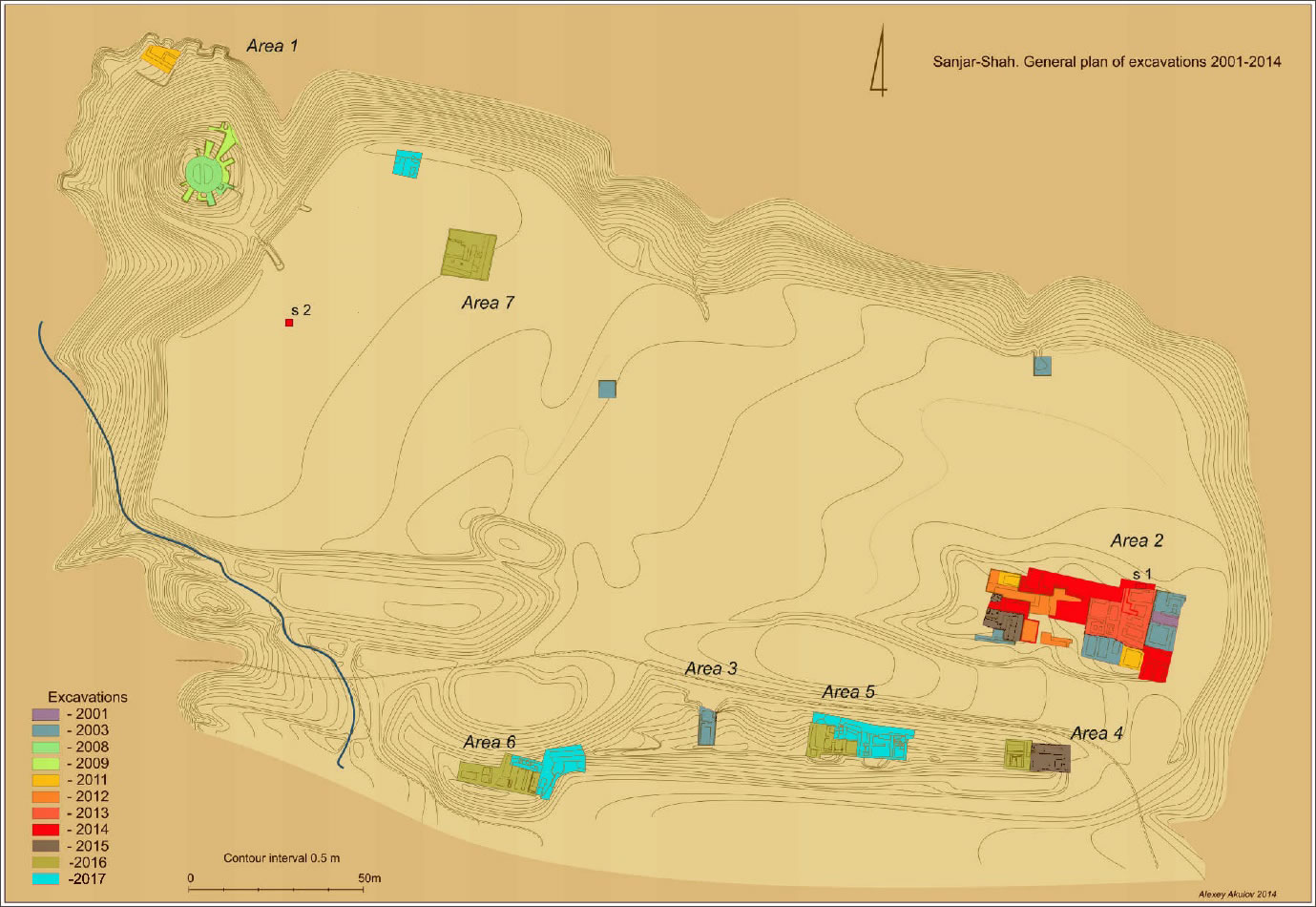
Fig. 1. Sanjar-Shah, general plan of the excavated areas 2017

Fig. 2. Area V (drawing by Elena Bouklaeva).

Fig. 3. Area V, Section 1-1 (drawing by Elena Bouklaeva).

Fig. 4. Area V, Section 2-2 (drawing by Elena Bouklaeva).

Fig. 5. Area V, Section 3-3 (drawing by Elena Bouklaeva).

Fig. 6. Area V during excavations looking south-west.

Fig. 7. Area V. General view of the excavations looking west.

Fig. 8. Area V. General view of the excavation looking south.

Fig. 9. Area V, Room 6 looking south.

Fig. 10. Area V, Room 6 looking west.

Fig. 11. Area V, Room 6, terracotta figurine.

Fig. 12. Area V, Room 7.

Fig. 13. Area V, Room 7 looking south.

Fig. 14. Area V, Room 7 looking west.

Fig. 15. Area V, Room 7 looking east.

Fig. 16. Area V, Room 7. Collapsed wooden roofing of the first storey.

Fig. 17. Area V, Room 7 after the wooden fragments were removed.

Fig. 18. Area V, Room 7 after the wooden fragments were removed.

Fig. 19. Area V, Room 7. Stamped decorations.

Fig. 20. Area V, Room 7. Some wooden fragments belonging to the roofing of the first storey.

Fig. 21. Area V, Room 7. Some wooden fragments belonging to the roofing of the first storey.

Fig. 21. Area V, Room 7. A bronze handle of a vessel (?).

Fig. 22. Area V, Room 7. A bronze belt buckle.

Fig. 24. Area V, Room 8.

Fig. 25. Area V, Room 8, looking west.

Fig. 26. Area V, Room 8. A bronze bracelet shaped as a snake.

Fig. 27. Area V, Room 9.

Fig. 28. Area V, Room 9 looking west.

Fig. 29. Area V, Room 10.

Fig. 30. Area V, Room 10 looking west.

Fig. 31. Area V, Room 10. Traces of wall-paintings.

Fig. 32. Area V, Room 11.

Fig. 33. Area V, Room 11. Entrance from the street.

Fig. 34. Area V, Room 12.
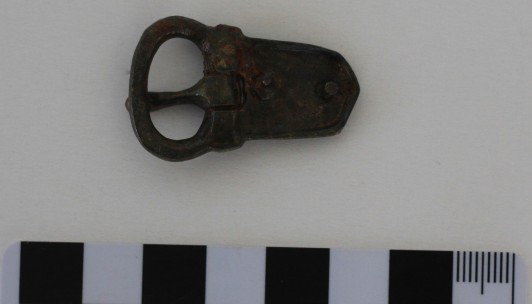
Fig. 35. Area V, Room 12. Bronze belt buckle.

Fig. 36. Area V, Street looking west.
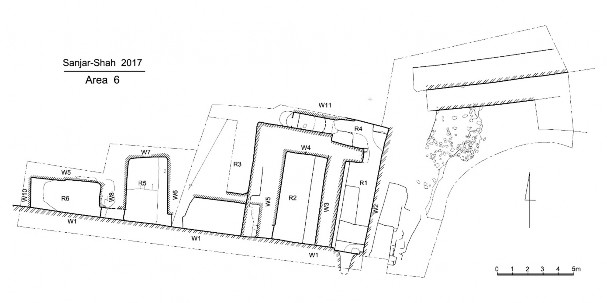
Fig. 37. Area VI. Drawing by Elena Bouklaeva.
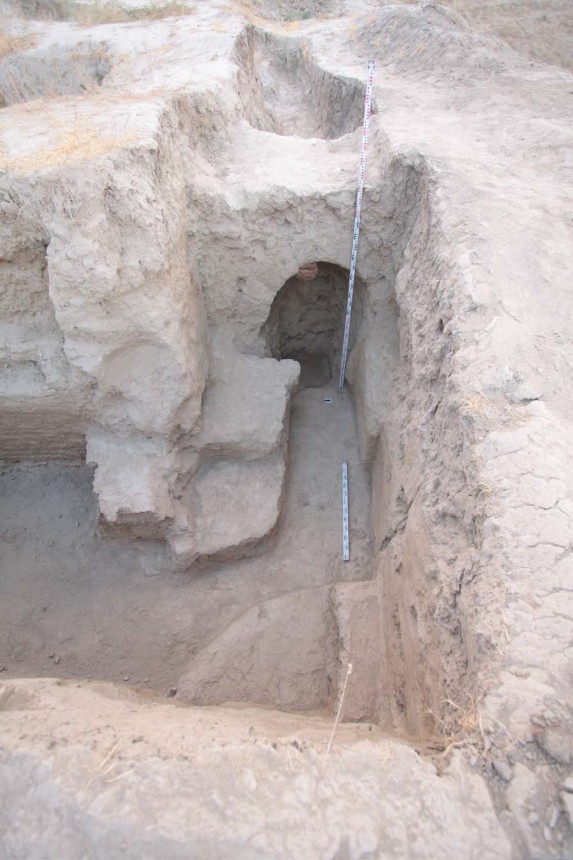
Fig. 38. Area VI, Room 4.
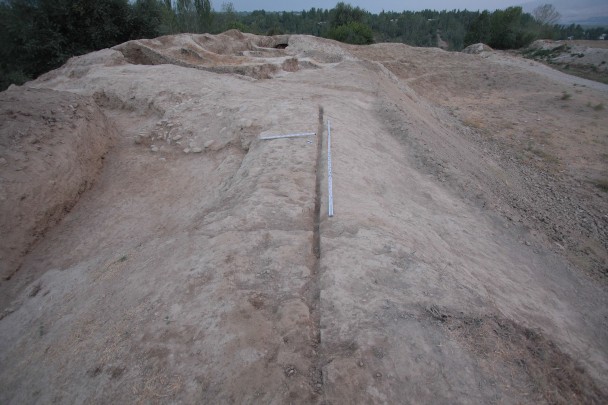
Fig. 39. Area VI. Southern city wall looking west.
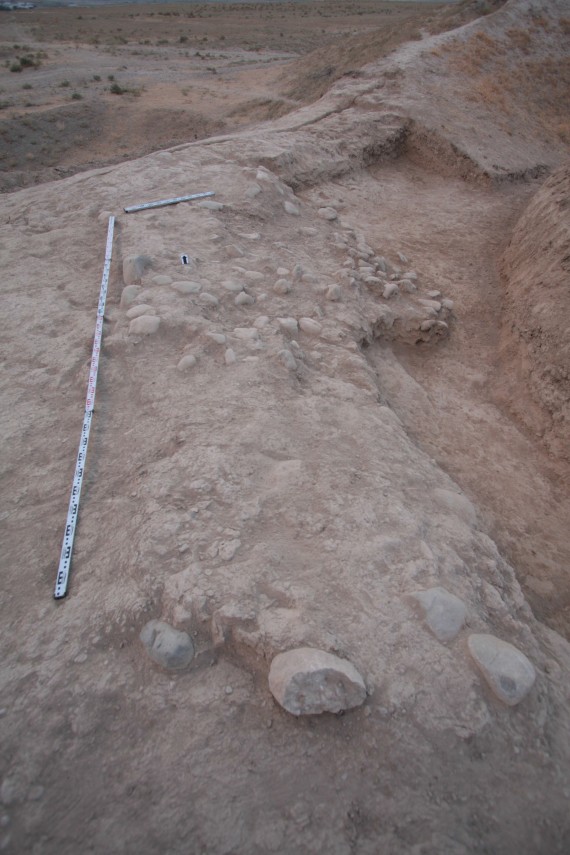
Fig. 40. Area VI. The sharp turn of the city wall looking north.
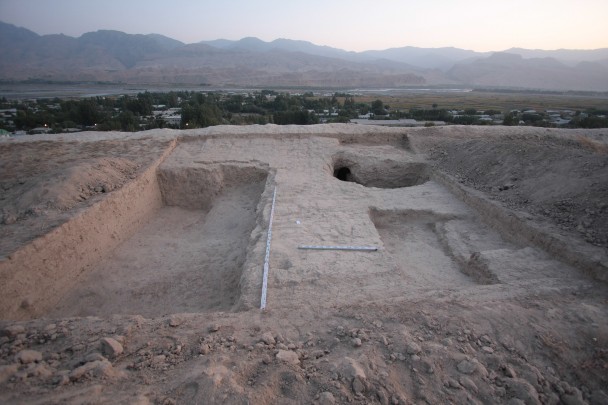
Fig. 41. Area VIII looking north.
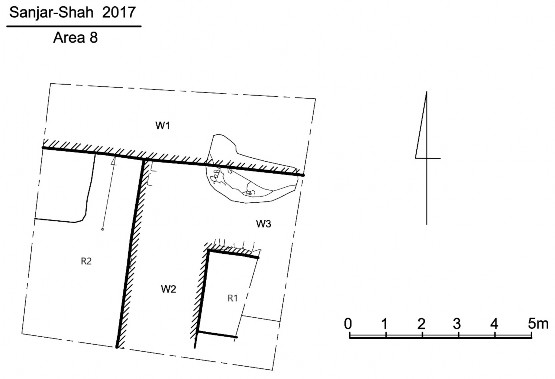
Fig. 42. Area VIII, drawing by Elena Bouklaeva.
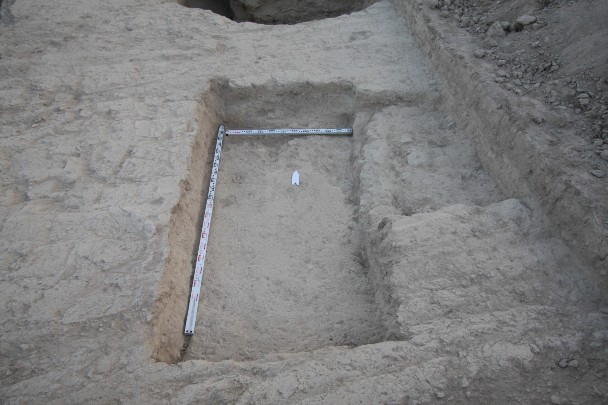
Fig. 43. Area VIII, Room 1 looking north.
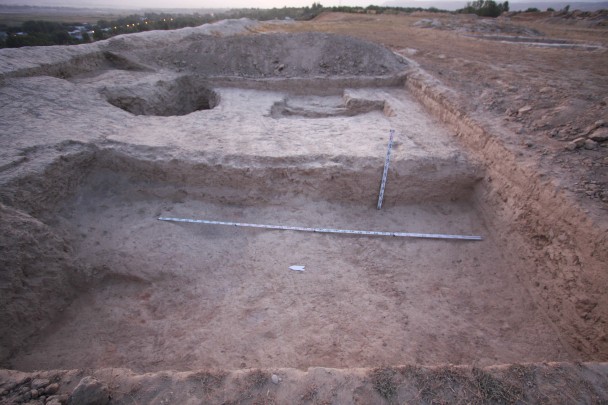
Fig. 44. Area VIII, Room 2 looking east. Plaster with traces of wall paintings is covered with soil in the north-eastern corner.
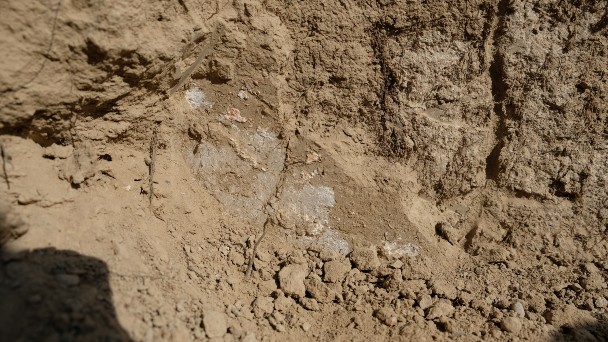
Fig. 45. Area VIII, Room 2. Traces of wall-paintings in situ.
Sanjar-Shah Excavations Report 2018
Michael Shenkar, Sharof Kurbanov, Abdurahmon Pulotov and Firuz Aminov
with Appendix by Maria Gervais
the excavations were continued in Areas V and VI situated along the southern wall of the town, as well as in Area VIII in the western part of the town adjacent to the western part of the northern city wall (Fig. 1). The wall-paintings that were discovered last season in Areas V and VIII were cleaned and subjected to a restoration and conservation process (see Appendix).
Area V
This season the excavations of Rooms 8 and 10 that started in the previous year were completed (Figs. 2-7). In addition, we have excavated a new Room 13 located to the east of Rooms 9 and 11. Excavations to the north of Room 11 were also continued in an easterly direction, where we have exposed what appears to be an open courtyard (“Room 14”).
Room 8
This room was completely excavated last year. This season, a sounding (2.7 x 1 m) was made in the eastern part of the room, at a distance of 1 m from Wall 1 in order to establish the stratigraphy and to reach the earliest layers in the Area. The excavations reached a depth of 1.6 m below the floor level down to the bedrock. Up to 1.6 m, the fill in the sounding consisted of small gravel followed by 0.4 m layer of larger stones (10 x 5 x 4; 6 x 3 x 7 cm). Under Wall 14, immediately beyond the floor, there is a 25 cm layer of fill consisting of small gravel followed by a layer (d. 0.6 m; w. 0.5 m) of clay with small stones and fragments of mud-brick, which was probably placed here in order to support the wall. Below this level, there is a layer of gravel. Ceramics found in the sounding include a complete bowl with red slip (Pl.1). Several fragments of ceramics were also collected while clearing the south-western corner of the room 12 (Pl.2).
Two bronze buckles were found in the sounding. One of them (at a depth of 0.7 m from the floor level, Fig. 34.7) is gilded and has an iron tongue, whereas the second one (at a depth of 0.5 m from the floor level) has a bronze tongue (Fig. 34.6). In addition, two coins were found under the floor. One coin is attributable to Turgar, dated between 738 and 750 (Fig. 32-33. 4), and the second is a bronze Sogdian coin with a hole, which cannot be identified because of its bad state of preservation (Fig. 32-33. 3).
It became clear this season that Room 8 and Room 12 were originally part of one big hall with four columns. At a later stage, Wall 15 was built separating this into two rooms. The coin of Turgar gives us a terminus post quem for the original construction of Room 8. Since there are no earlier layers in this Area, it means that the rooms here were originally constructed not earlier than 738.
Room 10
This season, the excavations in this room were completed, and we were able to establish its final dimensions (2.5 x 2.4 m). Wall 14 (h. 2.5 m; l. 2.4 m; w. 0.9 m) is built with two rows of pakhsa blocks (85 x 85 cm) followed by mud-brick. At a distance of 55 cm from Wall 13, at a height of 70 cm from the floor, there is a semi-circular niche (18 x 18 x 15 cm). At a distance of 67 cm from Wall 13, at a height of 1.3 m from the floor there is a second niche of similar form (70 x 45 x 32 cm). The surface of this second niche has a thin layer of yellow plaster. Several ceramic fragments were found in the fill under the floor of Room 10 (Pl. 3). Cleaning and restoration work was carried out on traces of color in this room uncovered last season (see Appendix).
Room 13
This new room (5.20 x 2.20 m), which was excavated this season, is located to the east of Rooms 9 and 11 (Fig. 8). There is a passage (w. 1.1 m) leading to Room 13 from Room 11 (ramp) (Fig. 9). At a distance of 30 cm from Wall 22 there are holes (southern side: 15 x 20 x 15 cm; northern side: 20 x 20 x 15 cm) and a threshold (w. 15 cm; d. 5 cm). At a height of 45 cm from the floor surface on the northern side of the passage there is a hole for the heel of a door jamb (15 x 15 x 15 cm). The corresponding hole on the southern side is absent.
Wall 22 is preserved up to a height of 3.6 m from the floor surface in the southern end and up to 2.9 m in the northern. The lower part of the wall is constructed of 5 pakhsa blocks (75-90 x 80 x 110 cm) followed by 3 rows of mud-brick (47-49 x 23-24 x 7-9 cm). Above them there is another row of pakhsa blocks again followed by 8 rows of mud-brick (48 x 25 x 8-9 cm), and by a row of 3 pakhsa blocks. One of them is completely preserved (80 x 80 x 80 cm). The upper end of the wall and the cornice are built of 6 rows of mud-brick (24 x 48 x 8-9 cm). The cornice is located at a height of 3.1 m from the surface of the sufa of the first storey. It projects from the wall surface for 5 cm and is preserved for a length of 0.9 m. At the southern end of Wall 22 at a height of 2.7 m from the surface of the earliest floor there is a beam hole (20 x 20 x 30 cm). At a distance of 55 cm to the north there is a second beam hole of similar dimensions. At the same distance to the north of this hole there is a third beam hole (30 x 25 x 22 cm). At a distance of 58 cm to the north, a fifth beam hole was found (35 x 24 x 21 cm). All five beam holes are made at the same height. They belong to the mezzanine of the early period.
At a distance of 2.85 m to the north of Wall 1 and at a height of 1.2 m from the earliest floor, there is an arrow-shaped niche in Wall 22 (w. 0.7 m; h. 43 cm) (Fig. 10). It is made of mud-brick (48 x 25 x 8 cm) laid so as to create a kind of half-rhombus.
Wall 1 is preserved in this room up to a height of 4.5 m above the sufa surface. Up to a height of 1.55 m from the sufa surface it is made of two rows of pakhsa blocks followed by two courses of mud-brick (h. 20 cm), 1 course of pakhsa (h. 1 m), 2 courses of mud-brick (h. 20 cm), and pakhsa blocks. Their dimensions are 51-60 x 26-29 x 10 cm for the mud-brick and 80-90 x 50-80 cm for the pakhsa blocks. Up to a height of 1.9 m from the sufa, three layers of plaster are preserved on the wall. The lower part of the wall is heavily smoked.
At a height of 2.05 m from the sufa are the 5 beam holes of the mezzanine: 1) located in the south-western corner (25 x 20 x 25 cm), supported by a rock from one side; 2) at a distance of 50 cm to the east of Wall 22 ( 20 x 15 x 20 cm); 3) at a distance of 0.9 m to the east of Wall 22 (20 x 20 x 20 cm); 4) at a distance of 1.4 m from Wall 22 ( 25 x 25 x 20 cm); 5) at a distance of 2.2 m to the east of Wall 22 ( 20 x 20 x 20 cm). All beam-holes are made at the same height and are 25 cm higher than the holes in Wall 33. This mezzanine belongs to the second stage.
At a height of 2.85 m from the sufa and a distance of 0.4 m to the east of Wall 22, there is a beam hole in Wall 1 (24 x 14 x 25 cm). The second hole is located at the same height and at a distance of 2.7 m to the east of Wall 22 (25 x 14 x 30 cm). These two holes must belong to the early period since the second hole has been blocked by Wall 23.
At a height of 4 m from the sufa, and a distance of 0.5 m to the east of Wall 22 there is an oval niche (74 x 40 x 30 cm). It is placed at almost the same level as the modern surface.
Wall 23 stands up to 1.4 m height from the sufa and is in a very bad state of preservation. Wall 23 is attached to Wall 1. It is made of pakhsa blocks (85-75 cm), and the sufa is attached to it.
Wall 20 is preserved to a height of 1.8 m from the level of the second floor. It is attached to Wall 23 and is constructed on a stone fundation. Up to 0.7 m it is made of pakhsa blocks. The western part of the wall has 3 rows of mud-brick 35 cm high. At a distance of 1 m from Wall 23 and at a height of 12 cm from the second floor there is a semi-oval niche (50 x 50 x 30 cm).
A П-shaped sufa (w. 1 m at its eastern end, 70 cm at its western) was installed in the room along Walls 1, 22 and 23. It belongs to the first, earliest level. At its western part along Wall 22, at a distance of 2.7 m from Wall 1, a hearth was built (50 x 60 cm) (Fig. 11). It is rectangular with one semi-circular side projecting towards the room. It is preserved up to a height of 15 cm, with walls 12-15 cm thick.
The first floor corresponds to the level of the sufa. The second floor is smooth and is of yellow color. The sufa is installed on the first, upper floor. In the corner between Walls 1 and 22 a rectangular installation was found (h. 40 cm; l. 1.2 m; w. 55 cm) (Fig. 12). It is made of mud-brick (46-47 x 24 x 10 cm). Inside it was plastered with a thin layer of yellow color.
The pottery found in the fill of Room 13 (Pl. 4) includes a fragment of a mug which is dated to the second half of the 7th – beginning of the 8th century. A pottery assemblage was collected from the first floor (Pl. 5). In addition, a fragment of a hemispherical bronze bowl was found in the fill of the room (Fig. 34.11), and a carnelian bead was found on the first floor (Fig. 34.15).
Courtyard (“Room 14”)
This season, excavations were continued in the northern street in an easterly direction and to the east of Room 13. The northern street continued for another 4.5 m and opened to what turned out to be an open courtyard (6 x 8.4 m) directly adjacent to Room 13 to the east (Fig. 13). It is limited to the east by Wall 23, and by Wall 1 (the city wall) to the south. The section of Wall 1 that forms the southern limit of the courtyard is very badly preserved (h. 2.9-3 m). It is built of both pakhsa and mud-brick. In the eastern part of the wall, at a height of 2.2 m from the earliest surface of the courtyard, and at a distance of 1 m from the remains of the eastern wall, there is a hearth of almost circular shape installed in the wall (50 x 55 x 35 cm). Its surface shows traces of intense burning. Wall 24 is preserved up to a height of 20 cm in the northern part, and up to 1.6 m in the southern.
Two floor levels were cleared in the courtyard with 40 cm between them. The upper level rises slightly towards the east. Two hearths were installed in this floor near Wall 24. The first one (90 x 85 x 32 cm) is found at a distance of 40 cm from Wall 1. It has an oval shape, and its walls are built of mud-brick (40 x 23 x 10 cm). The second hearth (80 x 80 x 22) is located at a distance of 1.5 m from Wall 1 and is of square shape. It is also built of mud-brick of similar dimensions.
The second floor level has a relatively smooth, solid surface of a grey color, which slightly rises towards the south. We have left a stratigraphic section 80 cm thick in the middle of the courtyard, at a distance of 2.1 m from Wall 1, on the east-west axis. There is a third hearth (80 x 70 cm) near Wall 24 at a distance of 3.7 m from Wall 1.
A very rich ceramic assemblage was found in the fill of the room above the first floor level (Pls. 6. 1-3); especially noteworthy is a fragment of the bottom of a glazed cup dated to the 9th century (Pl. 6. 1) found on the first, upper floor (Pl. 7). Noteworthy among the pottery found in the fill under the first floor (Pl. 8) is a fragment of a green-glazed jug with decoration pasted on, and the bottom of a mug with a special floral ornament stamped inside (Fig. 36.1-2). From the pottery found on the surface of the second floor (Pl. 9), one should note a pottery fragment with a stamped image of a mountain goat decorated with a floating ribbon (Fig. 35. 7).
Three coins were also found in the different layers of the courtyard: 1) a Bukhar Khuda drachm bearing the name of the Abbasid Governor al-Mahdi (third quarter of the 8th century) came from the surface of the first floor; 2) a coin of Dēwāštīč (705?-722) was also found on the first floor (Fig. 32-33. 1-2); 3) a Sogdian coin which was impossible to identify due to the bad state of preservation was found between the bricks of Wall 24 (Fig. 32-33. 5).
Excavations of the courtyard also produced numerous finds, a fact confirming that this was an open, public space in the town where a lot of people passed by every day. Finds from the upper fill include a pair of iron scissors, a bronze ring, a fragment of carnelian beads, an unidentified bronze item (Fig. 34.1; 34.3; 34.8; 34.14), an iron part of door hardware (Fig. 35.2), two ceramic spindle whorls (Fig. 36.7; 36.9), and three fragments of glass vessels (Fig. 37.5; 37.11; 37.14). Objects found on the first floor include a fragment of a stone item (Fig. 34.12), a stone weight (Fig. 36.4), and three fragments of the rims and handle of glass vessels (Fig. 37.2; 37.4; 37.9). Finds coming from the fill between the two floors include a fragment of the handle of a green glazed jug with a decorative ornament (Fig. 36.2), a fragment of the rim of a glass vessel (Fig. 37.1), a remarkable ceramic fragment of a red slip mug bearing inside a stamped ornament in the form of a quatrefoil flower within a square and encircled, with leaves projecting from it. The handle of the mug is broken (Fig. 36.1). On the lower, second floor we have found a bronze ring with a green agate stone, a fragment of a glass bead (Fig. 34.2; 34.13), an iron item of door hardware, a fragment of the rim of a bowl with stamped ornament depicting a mountain goat (Fig. 35.4; 35.7), a ceramic spindle whorl (Fig. 36.6), and a glass vessel handle (Fig. 37.8).
Area VI
In 2016-2017 we investigated several rooms in this Area (Rooms 1-6), and Wall 1 (the city wall) was partly excavated. This season the excavations of Rooms 3 and 5 initiated in the previous year were completed, and we have excavated 4 new rooms (7-10) (Figs. 14-15).
Room 8
Room 8 (5.2 x 2.2 m) is located to the north of Room 6 and to the west of Room 5 (Fig. 16). Wall 7 is preserved up to a height of 2 m and is constructed of mud-brick (52 x 9 cm). At a height of 1.4 m from the third floor there is a cornice projecting for 3 cm from the wall surface. The room was vaulted. In its western part, a vault is preserved up to a length of 95 cm. Its height is 2.4 m from the third floor.
Wall 10 is made of pakhsa blocks (10 x 90 cm). Fragments of a thin layer of plaster (0.5-1.5 cm) are preserved on the wall. Wall 9, 1 m thick, is preserved up to a maximum height of 2 m. It is built of mud-brick. At a height of 1.6 m from the third floor there is a cornice projecting for 3-4 cm from the wall surface. At some places on the wall, traces of plaster (0.3-1.5 cm) are preserved. Both Wall 7 and Wall 9 are attached to Wall 10. Along the western part of Wall 9 there is a sufa (l. 3.35 m; w. 70 cm; h. 35 cm) made of mud-brick. There is a row of mud-brick (w. 50-55 cm) along Wall 10 at a depth of 20 cm from the sufa level. In the eastern end of Wall 9 two boxes were installed (Fig. 17). The first box is in the north-east corner of the room. It is square (80 x 80 cm). Its western wall is 25 cm thick and is constructed on the second floor. Its southern wall is not preserved. The second box (w. 60-75 cm, l. 74-90 cm) is to the west of the first one. Its eastern wall is the western wall of the first box. The western wall of the box (h. 30 cm) is made of fragments of mud-brick. Between the western wall of the second box and the sufa there is a gap of 45 cm.
Wall 8 is preserved up to a maximum height of 175 cm and is 1.1 m thick. At a distance of 1 m from Wall 9 there is a passage (w. 90 cm) leading to Room 5. At a distance of 60 cm from Wall 8 there is a threshold (w. 15 cm; d. 5 cm).
The first floor was found at a depth of 1.8 m from the top of Wall 8 and 1.58 m from the top of Wall 9. Its surface is irregular, solid at the center of the room, and becomes softer close to the walls. It is of green color and rises towards the passage. The sufa described above was installed on this floor. The second floor is at a depth of 20-60 cm from the surface of the first floor. It has a smooth, regular and solid surface of green color. At a depth of 10-30 cm there is a third floor, which also rises slightly towards the passage. On its surface there were small river pebbles, and in some places also a thin layer of greenish plaster.
A very rich ceramic assemblage was collected from the fill of Room 8 (Pl. 10.1-3) including archaeologically complete vessels (Pls. 11-13). Pottery was also collected from the third floor (Pl. 14). Finds from the fill include fragments of an iron knife and of an iron nail (Fig. 35.1; 35.3.8). A tip of the bronze strap from a horse harness was found on the first floor (Fig. 34.9). A fragment of a bronze earring was found in the fill between the first and the second floor (Fig. 34.4). On the surface of the second floor we have found a fragment of a bronze mirror (Fig. 34.10), a ceramic spindle whorl (Fig. 36.8), and a remarkable and rare iron arrowhead used for hunting (Fig. 35.5). A similar arrowhead was found in Panjikent and dated to the 8th century by V.I. Raspopova.[1]
Room 5
This rectangular room (8.1 x 2.8 m) is situated to the west of Room 3 and to the east of Rooms 6, 8 and 9 (Fig. 18). Wall 11 in this room is preserved only up to a height of a single mud-brick. A sufa (h. 14 cm; w. 80 cm) is installed along the wall. It is built of mud-brick and has a 5 cm layer of plaster. Wall 6 is preserved up to a maximum height of 2.4 m from the surface of the earliest floor. It is made of standard mud-brick and attached to Wall 1. In some places on the wall, traces of plaster (2-3 cm) are preserved. In the middle of the wall there are clear traces of burning. In the southern part of Wall 6 there is a small Wall 13 (l. 3 m; h. 1.05 m; w. 0.8 m) built of mud-brick and attached to it as an additional support for Wall 6. In the last period, the upper surface of this wall functioned as a sufa.
Wall 8 is preserved up to a height of 2.5 m at its southern end, 1.4 m in the middle, and 25 cm at its northern end. It is made of mud-brick (50 x 25 x 9-10 cm), and there are fragments of plaster 2-3 cm thick. There are two passages in the wall. The first passage leading to Room 6 was excavated in 2016. The second passage leading to Room 8 is situated at a distance of 3.2 m to the north of Wall 1.
Two floor levels were identified in Room 5. The first floor was found at a depth of 46 cm from the top of Wall 13. The floor surface is hard, smooth, and rises slightly towards the north. The second floor lies 60 cm below the first one. Its surface is solid, irregular, of green color and includes small stones. Near Wall 6, opposite the passage to Room 8, there is a burnt spot of red color (1 x 0.5 m). A second burnt spot (40 cm x 30 cm) was found at a distance of 1 m from the northern side of the same passage.
Pottery was collected from the second floor (Pl. 15). On the surface of the first floor we have found a fragment of a bronze Sogdian coin with an imitation of a square hole in the middle (Fig. 32-33. 6) and inscribed with the name of the Samarkand ruler Ghurak (Fig. 32-33. 7). These coins were minted by the Arab authorities in Samarkand between 712 and the 730s.
Room 9
This is a rectangular room (2.9 x 1.15 m) situated to the north of Room 8 and to the west of Room 10 (Fig. 19). Wall 15 (w. 0.5 m) is preserved up to a height of 0.8 m from the floor level. It is made of mud-brick of standard size and is attached to Wall 9. The latter is preserved up to a maximum height of 2 m and is also made of mud-brick (53 x 24 x 10 cm). The surface of the wall up to the height of 1.1 m bears traces of intense burning.
Wall 10 is preserved up to a height of 2 m from the level of the first floor. It is made of mud-brick (50 x 25 x 10 cm) and attached to Wall 9. This Wall is preserved up to a height of 1.35 m from the level of the first floor. Like all the walls in this room it is made of mud-brick of similar size as Wall 10.
There is a passage 1.1 m wide in the western end of Wall 11, at a distance of 1 m from Wall 15. The passage was filled with irregular mud-brick fragments – Wall 14 (h. 0.6 m; w. 80 cm). The excavation of the passage towards the north will be completed next season.
The floor in Room 9 was found at a depth of 2 m from the top of Wall 9. It has a smooth, yellow surface paved with mud-brick (50 x 25 x 10 cm). In the fill in Room 9 a lot of large and medium-sized stones were found.
It is clear that originally Rooms 9 and 10 were part of a single, large room, which was divided into two rooms at a later stage when Wall 15 was built. Later, the passage to Room 9 was blocked with Wall 14, and the room was filled with stones. It seems that the upper part of the room was still in use after it was filled. This is suggested by traces of burning on Wall 9 situated just above the fill, and by a layer of ashes (10 cm) which directly covers it. Pottery was collected in the fill of this room (Pl. 16).
Room 10
This room was only partly excavated this season (1.3 x 1.7 m until the northern section) (Fig. 20). It is located to the west of Room 5, to the north of Room 8 and to the east of Room 9. At the early stage, Rooms 10 and 9 were part of one room later divided into two. Wall 16 (w. 1 m) is preserved up to a maximum height of 60 cm. It is made of mud-brick and has a bond with Wall 9, which is also made of mud-brick and preserved up to a height of 1.8 m. Wall 15 (w. 50 cm) is preserved up to a maximum height of 1.15 m [ich habe “cm” in “m” geändert] in its southern part and is constructed of mud-brick. The floor in Room 10 is found at a depth of 15 cm from the top of Wall 15. It has a solid, irregular surface of green color. Pottery assemblages were found in the fill of the room (Pl.17), and on the floor (Pls. 18-19).
The courtyard (Room 3)
The large dimensions of this room and the absence of any evidence for ceilings suggest that it was an open courtyard (Fig. 21). It was partially excavated in 2016 when Walls 1 and 5 were explored and the first floor was fully excavated. This season we have uncovered 2 additional floor levels in the courtyard and explored Wall 6. Its dimensions are therefore: w. 3.9 m; l. 8.3 m. Wall 6 (h. 1.2 m) is in a bad state of preservation. It is made of mud-brick.
The second floor level was found at a depth of 1.1 m from the top of Wall 5. It is of a greenish color, its surface is covered with ashes, and it rises slightly towards the west. The third floor is found at a depth of 30 cm from the surface of the second floor. Its irregular surface is of a greenish color. The fill in the courtyard consists of rammed earth and clay and partly of mud-brick fragments.
The ceramic assemblage illustrated in pls. 20 and 21 was found in the fill above the second floor (Pl. 20), and in the fill above the third floor (Pl. 21). Two coins were found on the surface of the third floor in this room. One is a local imitation of the Chinese coin Kai Yuan Tong Bao dated to the middle of the 7th century (Fig. 32-33. 8). The second one has a square hole typical for Sogdian coins, but is impossible to identify due to its bad state of preservation (Fig. 32-33. 9). Additional finds in Room 3 include a fragment of an iron knife that comes from the fill between the second and third floors (Fig. 35.3) and a gypsum spindle whorl from the second floor (Fig. 36.3).
Room 7
This room, which is a vaulted corridor, is located to the north of Room 4 (Figs, 22-23). The dimensions of the room in the first stage are 2.3 x 3.2 m. Wall 12 is in a very bad state of preservation (h. 0.9 m; w. 1.2 m). It was only possible to establish that it was made of mud-brick. In the second building stage, a passage existed in the wall.
The western wall actually consists of three parallel parts without a bonding between them. The first part (eastern end of Wall 11) (w. 1.05 m; h. 1.8 m from the second floor) is made of mud-brick (50 x 25 x 9 cm). The second part (0.9 x 1.2 m from the second floor) is 65 cm to the west. The third part (w. 1.25 m; h. 80 cm) is at a distance of 40 cm.
There are two floor levels in the room. The first floor is at a depth of 1.5 m from Wall 2. Its surface is smooth, solid, of a yellow color, and rises slightly towards the north. In the north-eastern corner there is a hearth (70 x 30 x 15 cm) made of mud-brick fragments. At the second, lower level, Wall 2 becomes wider, narrowing the space: the room functions as a corridor. The second floor is found at a depth of 60 cm from the first one. Its surface is relatively smooth, solid and of a yellow color. It corresponds to the lower levels of Rooms 1 and 4, while the upper floor corresponds to the upper floors of the same rooms. Near the western wall at the level of the second floor there are traces of burning (45 x 60 cm), and the surface of the wall is burnt up to a height of 30 cm.
The finds from the second floor of the room include a fragment of a knife with a part of a bronze handle (Fig. 35.6) and a pottery assemblage (Pl. 22).
Walls 1 and 2 (The City Wall)
One of the objectives of our work in this Area was to check the suggestion that one of the city gates was located here, to the east of Room 4 where the City Wall makes a sharp turn to the south. The stone debris covering the city wall was removed, and it turned out that the City Wall formed a right angle here (south-eastern corner of Room 1). The wall consists of two parallel walls attached to each other. Their width is 3.3 m.
Area VIII
This season we have continued our investigations in this Area started in the previous year. The excavation area was expanded for 5.7 m towards the west, and for 5.8 m towards the south (Figs. 24-25). We have identified 3 levels, which correspond to two main building phases. Conservation and restoration work was carried out on the wall-paintings found in Room 2 (see Appendix).
Room 1
The excavation of this room, which started in the previous year, was continued this season (Fig. 26). In addition to the first floor exposed last year, we have found the second floor at a depth of 25 cm from the first. Its surface is smooth, of green color. On the floor surface there is a layer of ashes (3-4 cm) with small embers.
Room 2a
This Room (8 x 2.5 m) belongs to the second (late) building phase. The northern wall is not preserved, only its front can be traced. Wall 5 is preserved up to a maximum height of 1.1 m in the northern part and 0.4 m in the southern. The middle section of the wall is almost completely destroyed. It is constructed of two rows of pakhsa blocks (1 x 0.8 m) with an admixture of small river stones. It is built on the second floor of the second building phase. On the upper floor near Wall 5, at a distance of 2.7 m from its northern end there is a stone column base (20 x 20 cm). It is placed on a layer of clay (15 cm). Another one is at a distance of 0.85 m to the south of it (30 x 33 cm). On the stone, there is a layer of clay (10 cm) with an imprint of a wooden column (14 cm). The column base stands on a layer of clay (7 cm).
Wall 6 (w. 1.4 m) is preserved up to a height of 0.75 m from the level of the upper floor in the northern part, and up to 0.14 m from the sufa surface in the southern. It is constructed like Wall 5. Wall 7 is preserved up to a height of 0.45 m from the level of the upper floor. At a distance of 1.3 m from Wall 6 there is a passage (w. 1 m). It functioned during both building phases. A sufa (w. 1.3 m; h. 0.50 m) was constructed from mud-brick along Wall 6.
Two tandoors were installed in the sufa. One ( 65 cm; h. 50 cm) is located at a distance of 2.9 m from the front of the northern wall (Fig. 27). Its rim is strengthened with mud-brick fragments. The surface near the tandoor bears traces of intense burning. The second tandoor is installed at a distance of 1.6 m to the south of the first one, and at a distance of 1.9 m from Wall 7. In fact, there are traces of two different tandoors which were installed here in different periods. The tandoor of the later period ( 65 cm) is preserved up to 35 cm. Only part of the body of the second tandoor was found, so it is impossible to determine its diameter (Pl. 27).
The first, upper floor of the room is found at a depth of 1.2 m from the top of Wall 5. It has a smooth, solid surface of light grey color. The second floor was discovered at a depth of 20 cm from the first one. Its surface has similar characteristics.
Pottery assemblages were found in the fill of Room 2a (Pls. 23-24), and on the first floor (Pl. 25-26). The finds found in the fill of Room 2a include a carnelian bead (Fig. 34.5), five fragments of the rim, handle, bottoms and wall of glass vessels (Fig. 37.3; 37.6-7; 37.12-13). On the first floor, we have found a glass mug handle and a fragment of the bottom of another glass vessel (Fig. 37.10; 37.15).
Room 2
This room existed during the first building phase; its width during that period was 3.8 m (Figs. 28-29). We have continued the exposure of Wall 2 started in the previous season. 10.5 m of that wall were excavated. It is preserved up to 0.5 m in its southern part, and up to 1.4 m in its northern. Its thickness is 2.2 m. Up to a height of 60 cm the wall is built of pakhsa blocks followed by mud-brick. In the northern part of the wall we have found fragments of wall-paintings in situ (see Appendix). In the southern part of the wall there is a layer of plaster (2 cm), but no paintings. Wall 2 stands on the floor of the room. It has a smooth surface of yellow color and numerous burned spots. Pottery was found on the floor (Pl. 28).
The western wall of Room 2 (Wall 8, w. 1.6 m.; l. 50 cm) was exposed for a length of 2 m in the southern part. It continues towards the north under the walls of Room 2a. The plaster on Wall 8 shows traces of intense burning. Near the wall, two burned wooden beams were found in the fill. One (l. 70 cm; w. 10 cm; 6 cm) was placed parallel to the wall. The other (l. 70 cm; w. 15 cm; 5 cm) was found at a distance of 25 cm from the first one and 47 cm to the east of Wall 8.
We may conclude that Rooms 2 and 2a represent two different building phases. The first stage (Room 2) was characterized by solid, unusually thick and long walls, which bore narrative wall-paintings. It seems that the monumental building to which Room 2 belonged was destroyed by fire. Later, a smaller Wall 5 was built parallel to the earlier Wall 2 at a distance of 1.3 m to the west, and the room became much narrower. The space between the walls was filled with dense clay and was not used during that stage. The function of the later Room 2a was clearly different from Room 2, since two taboons were installed in the sufa, and it seems that it was converted to a utility room.
In the mortar between the bricks of Wall 2 we have found a coin of Turgar dated between 738-750 (Fig. 32-33. 10), which gives us a terminus post quem for this wall. A ceramic spindle whorl was found on the lower floor of the room (Fig. 36.5).
Room 3
This room, which was partially excavated this season (the dimensions of the excavated area: 1.7 x 1.2 m) is located to the south of Room 1 (Fig. 30). Wall 9 is preserved up to a height of 55 cm from the level of the first floor. It is built of mud-brick and very badly preserved. Wall 4 (w. 2 m) is preserved up to a height of 0.6 m. It is made of pakhsa blocks and is attached to Wall 2. Wall 2 is preserved in this section up to a height of 0.6 m. The floor of the room has a smooth, grey surface.
Pottery assemblage was found in the fill of the room (Pl. 29), and on the floor (Pl. 30).
Room 4
This season we have also started excavations to the west of Room 2a, where part of Room 4 was exposed (Fig. 31). We have excavated part of W10 (l. 4.7 m; w. 30 cm), which has been preserved up to a height of 1 m. It is constructed parallel to Wall 6. There is a space of 30 cm between the walls which was filled with soil, pebble and fragments of mud-brick. A coin fragment in a very bad state of preservation was found in the fill of room 4 (Fig. 32-33. 11).
Conclusions and further prospects
The most remarkable result of this season was the discovery of the fragment of narrative paintings on Wall 2 in Room 2 of Area VIII. The thickness of this wall suggests that it was part of a monumental building, perhaps a palace that presumably occupied a large area in the western part of the town. The construction of Wall 2 is securely dated by the Turgar coin to the period between 738 and 750. It seems that it was destroyed by fire. Notwithstanding the early and preliminary stage of exploration of this monumental building, it is interesting to compare these results with the well-known stratigraphy of Panjikent where the city was rebuilt in the 740s after being partially burned by the Arabs in 722. In the 740s, many building were reconstructed, but not the temples – the only public buildings in the city, and of course no new monumental buildings were constructed in Panjikent at this stage. Moreover, the results of this season demonstrate that the rooms in Area V were built after 738. This confirms the results obtained for Area IV in 2015, when a coin of Turgar was found under the earliest floor in Room 2. In seems, therefore, that the urban development of the areas along the southern wall took place only after 738. It is tempting to connect this with the results of the pacifying policies of the last Umayyad governor Naṣr b. Sayyār (738-748). The only monumental building known from the region and securely dated to this period is the so-called “palace of Naṣr b. Sayyār”, which was excavated on the citadel of Afrasyab. In contrast to Panjikent, where only few new households were built in the 740s, at Sanjar-Shah we have evidence for a large-scale building activity. If our preliminary suggestions that a monumental building in the western part of Sanjar-Shah was constructed in the 740s are confirmed in the next seasons, it can potentially change our perceptions of settlement history in the upper Zeravshan region.
Our main objective for the next seasons is to expose this monumental building, to establish its layout and function, and hopefully to uncover more, and better-preserved wall-paintings. Therefore, the main efforts will be concentrated in this Area. We plan to expand Area VIII towards the east, and to combine it with Area VII.
We also intend to continue investigations along the southern city wall in order to assemble more data about the urban development in this area, and in order to find the southern city gate.
Figures

Fig. 1. Sanjar-Shah,
general plan of the excavated areas, 2018.

Fig. 2. Area V during
excavations looking south.

Fig. 3. Area V. Drawing
by Elena Bouklaeva.

Fig. 4. Area V, Section
1-1. Drawing by Elena Bouklaeva.

Fig. 5. Area V, Section
2-2. Drawing by Elena Bouklaeva.

Fig. 6. Area V, Section
3-3. Drawing by Elena Bouklaeva.

Fig. 7. Area V, Sections
7-7, 10-10 and 11-11. Drawing by Elena Bouklaeva.

Fig. 8. Area V, Room 13,
general view.

Fig. 9. Area V, Room 13,
the passage.

Fig. 10. Area V, Room
13, an
arrow-shaped niche in Wall 22.

Fig. 11. Area V, Room
13, a
hearth attached to Wall 22.

Fig. 12. Area V, Room
13, rectangular installation
in the corner between Walls 1 and 22.

Fig. 13. Area V, Open
courtyard “Room 14”.

Fig. 14. Area VI,
drawing by Elena Bouklaeva.

Fig. 15. Area VI,
Sections 2-2, 3-3, 4-4, drawing by Elena Bouklaeva.

Fig. 16. Area VI, Room
8.

Fig. 17. Area VI, Room
8. Boxes installed near Wall 9.

Fig. 18. Area VI, Room
5.

Fig. 19. Area VI, Room
9.

Fig. 20. Area VI, Room
10.

Fig. 21. Area VI, Room
3.

Fig. 22. Area VI, Room
7.

Fig. 23. Area VI, Room
7.

Fig. 24. Area VIII.
Drawing by Elena Bouklaeva.

Fig. 25. Area VIII.
General view.

Fig. 26. Area VIII, Room
1.

Fig. 27. Area VIII, Room
2a, tandoor.

Fig. 28. Area VIII. Room
2.

Fig. 29. Area VIII. Room
2.

Fig. 30. Area VIII. Room
3.

Fig. 31. Area VIII. Eastern part of Room 4, and
western part of Wall 6.

Fig. 32. Coins, Sanjar-Shah 2018, obverse: 3. A bronze Sogdian coin with a hole, from Area 5, room 8, sounding. 4. Sogdian coin of Turgar, from Area 5, room 8, sounding. 1. Bukhar Khuda drachm bearing the name of the Abbasid Governor al-Mahdi, from Area 5, room 14, on the surface of the first floor. 2. A coin of Dēwāštīč, from Area 5, room 14, on the surface of the first floor. 5. A coin which is impossible to identify, from area 5, room 14, found between the bricks on the eastern wall (wall 24). 6. A bronze Sogdian coin with an imitation of a square hole in the middle, from Area 6, room 5, on the surface of the first floor. 7. A coin of Ghurak, from Area 6, room 5, on the surface of the first floor. 8. Local imitation of a Chinese coin Kai Yuan Tong Bao, from Area 6, room 3, on the surface of the third floor. 9. A Sogdian coin with a hole, from Area 6, room 3, on the surface of the third floor. 10. A coin of Turgar from Area 8, in the mortar between the bricks of Wall 2. 11. A coin which is impossible to identify, from Area 8, in the fill of room 4.

Fig. 33. Coins, Sanjar-Shah 2018, reverse: 3. A bronze Sogdian coin with a hole, from Area 5, room 8, sounding. 4. Sogdian coin of Turgar, from Area 5, room 8, sounding. 1. Bukhar Khuda drachm bearing the name of the Abbasid Governor al-Mahdi, from Area 5, room 14, on the surface of the first floor. 2. A coin of Dēwāštīč, from Area 5, room 14, on the surface of the first floor. 5. A coin which is impossible to identify, from area 5, room 14, found between the bricks on the eastern wall (wall 24). 6. A bronze Sogdian coin with an imitation of a square hole in the middle, from Area 6, room 5, on the surface of the first floor. 7. A coin of Ghurak, from Area 6, room 5, on the surface of the first floor. 8. Local imitation of Chinese coin Kai Yuan Tong Bao, from Area 6, room 3, on the surface of the third floor. 9. A Sogdian coin with a hole, from Area 6, room 3, on the surface of the third floor. 10. A coin of Turgar from Area 8, in the mortar between the bricks of Wall 2. 11. A coin which is impossible to identify, from Area 8, in the fill of room 4.

Fig. 34. Finds. 1. 1. Scissors. Iron. Area 5, Room 14, from the fill; 2. Ring with stone. Bronze, green agate. Area 5, Room 14, from the 2nd (lower) floor 3. Ring. Bronze. Area 5, Room 14, from the fill; 4. Fragment of earrings. Bronze. Area 6, Room 8, from the fill between the 1st and 2nd floors; 5. Carnelian bead. Area 8, Room 2a, from the fill; 6. Bronze buckle. Area 5, Room 8, a sounding under the floor. A layer of backfill. At a depth of 0.5 m from the floor level; 7. Bronze buckle with gold-plated surface and iron tongue. Area 5, Room 8, sounding under the floor. A layer of backfill. At a depth of 0.7 m from the floor level; 8. Bronze item in the form of a hook. The surface is ornamented. Area 5, Room 14, from the fill; 9. Bronze item (bronze tip of the strap of a horse harness). Area 6, Room 8, from the1st (upper) floor; 10. Fragment of bronze mirror. Area 6, Room 8, from the 2nd floor; 11. Fragment of a bronze bowl, hemispherical shape. Area 5, Room 13, from the fill; 12. Fragment of a stone item. Area 5, Room 14, from the upper floor; 13. Fragment of a glass bead. Area 5, Room 14, from the 2nd (lower) floor; 14. Fragment of a carnelian bead. Area 5, Room 14, from the fill of the upper floor; 15. Carnelian bead. Area 5, Room 13, from the upper floor

Fig. 35. Finds. 1. Fragment of an iron knife. Area 6, Room 8, from the fill; 2. Item of door furniture (hardware). Iron. Area 5, Room 14, from the fill; 3. Fragment of an iron knife. Area 6, Room 3, from the fill between the 2nd and 3rd floors; 4. Item of door furniture (hardware). Iron. Area 5, Room 14, from the 2nd (lower) floor; 5. Arrowhead. Iron. Area 6, Room 8, from the 2nd floor; 6. Fragment of a knife with a part of a bronze handle. Area 6, Room 7, from the lower floor; 7. Fragment of the rim of a bowl with stamped ornament in the form of a mountain goat. Area 5, Room 14, from the 2nd (lower) floor; 8. Fragment of iron nail. Area 6, Room 8, from the fill

Fig. 36. Finds. 1. Fragment of a mug. Inside stamped ornament in the form of a flower, formed from a round figure and leaves departing from it. The mug is completely covered with red slip (slipware). The handle is broken. Area 5, Room 14, from the fill between the 1st and 2nd floors; 2. Fragment of the handle of an aquifer glazed jug with a decorative ornament. Unbroken green glaze. Area 5, Room 14, from the fill between the 1st and 2nd floors; 3. Gypsum spindle whorl. Area 6, Room 3, from the 2nd floor; 4. Stone weight with smoothed stand. Area 5, Room 14, from the 1st (upper) layer; 5. Ceramic spindle whorl. Area 8, Room 2, from the floor; 6. Ceramic spindle whorl. Area 5, Room 14, from the 2nd (lower) floor; 7. Fragment of a ceramic spindle whorl. Area 5, Room 14, from the fill; 8. Ceramic spindle whorl. Area 6, Room 8, from the 2nd floor; 9. Ceramic spindle whorl. Area 5, Room 14, from the fill.

Fig. 37. Finds. 1. Fragment of the rim of a glass vessel. Area 5, Room 14, from the fill between the 1st and 2nd floors; 2. Rim of a glass vessel. Area 5, Room 14, from the upper floor; 3. Rim of a glass vessel. Area 8, Room 2a, from the fill; 4. Rim of a glass vessel. Area 5, Room 14, from the upper floor; 5. Rim of a bottle. Area 5, Room 14, from the fill; 6. Glass bottle throat. Area 8, Room 2a, from the fill; 7. Fragment of glass Cup handle. Area 8, Room 2a, from the fill; 8. Glass vessel handle. Area 5, Room 14, from the 2nd (lower) floor; 9. Handle of a glass jug. Area 5, Room 14, from the upper floor; 10. Glass mug handle. Area 8, Room 2a, on the upper floor; 11. Bottom of a glass vessel. Area 5, Room 14, from the fill; 12. Wall of a glass vessel. Area 8, Room 2a, from the fill; 13. Fragment of a glass vessel with embossed patterns. Area 8, Room 2a, from the fill; 14. Bottom of a glass vessel. Area 5, Room 14, from the fill; 15. Bottom of a glass vessel. Area 8, Room 2a, on the upper floor.
Ceramic Plates
|
Pl. 1. Area V, Room 8. From sounding in the eastern part of the room. |
|
Pl. 2. Area 5, Room 12, from the floor. |
|
Pl. 3. Area 5, room 10, from the floor. |
|
Pl. 4.1 Area 5, Room 13, from the fill. |
|
Pl. 4.2. Area 5, Room 13, from the fill. |
|
Pl. 5. Area 5, Room 13, from the upper floor. |
|
Pl. 6.1 Area 5, Room 14, from fill. |
|
Pl. 6.2 Area 5, Room 14, from fill. |
|
Pl. 6. 3. Area 5, Room 14, from fill. |
|
Pl. 7. Area 5, Room 14, from the first (upper) floor. |
|
Pl. 8. Area 5, Room 14, from the fill between the first (upper) and second (lower) floors. |
| copyright by The Society for the Exploration of EurAsia| E-mail | Home |
